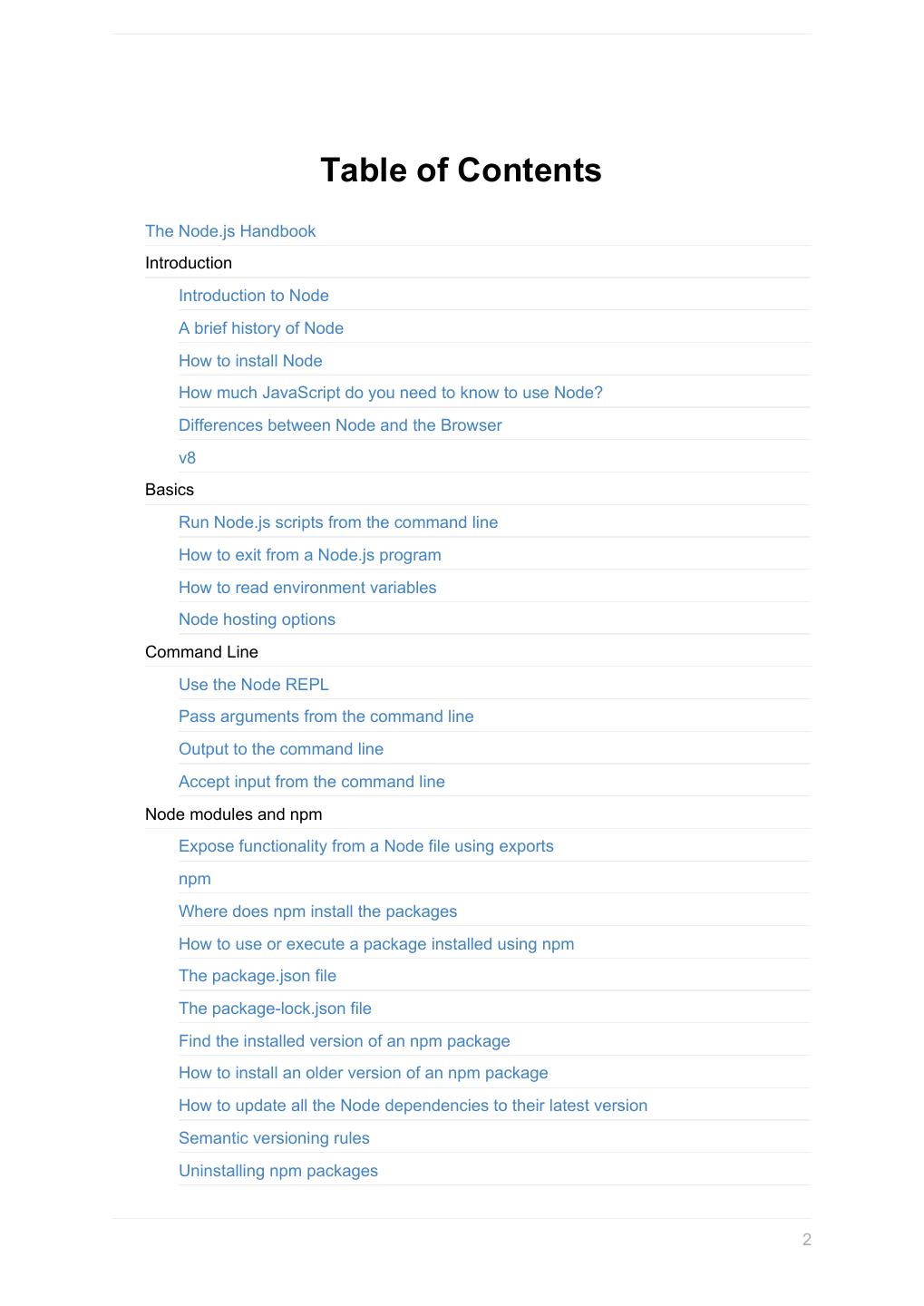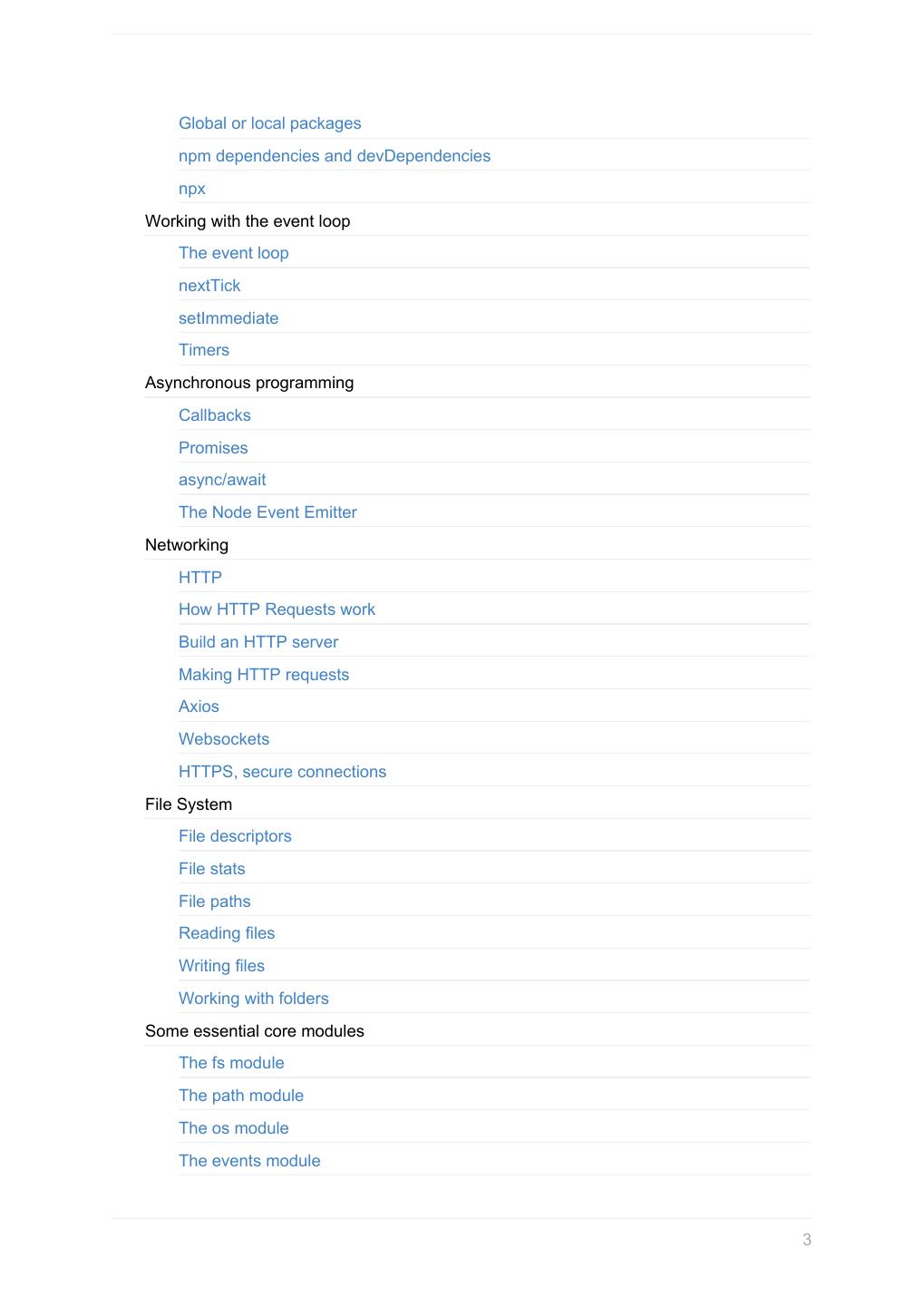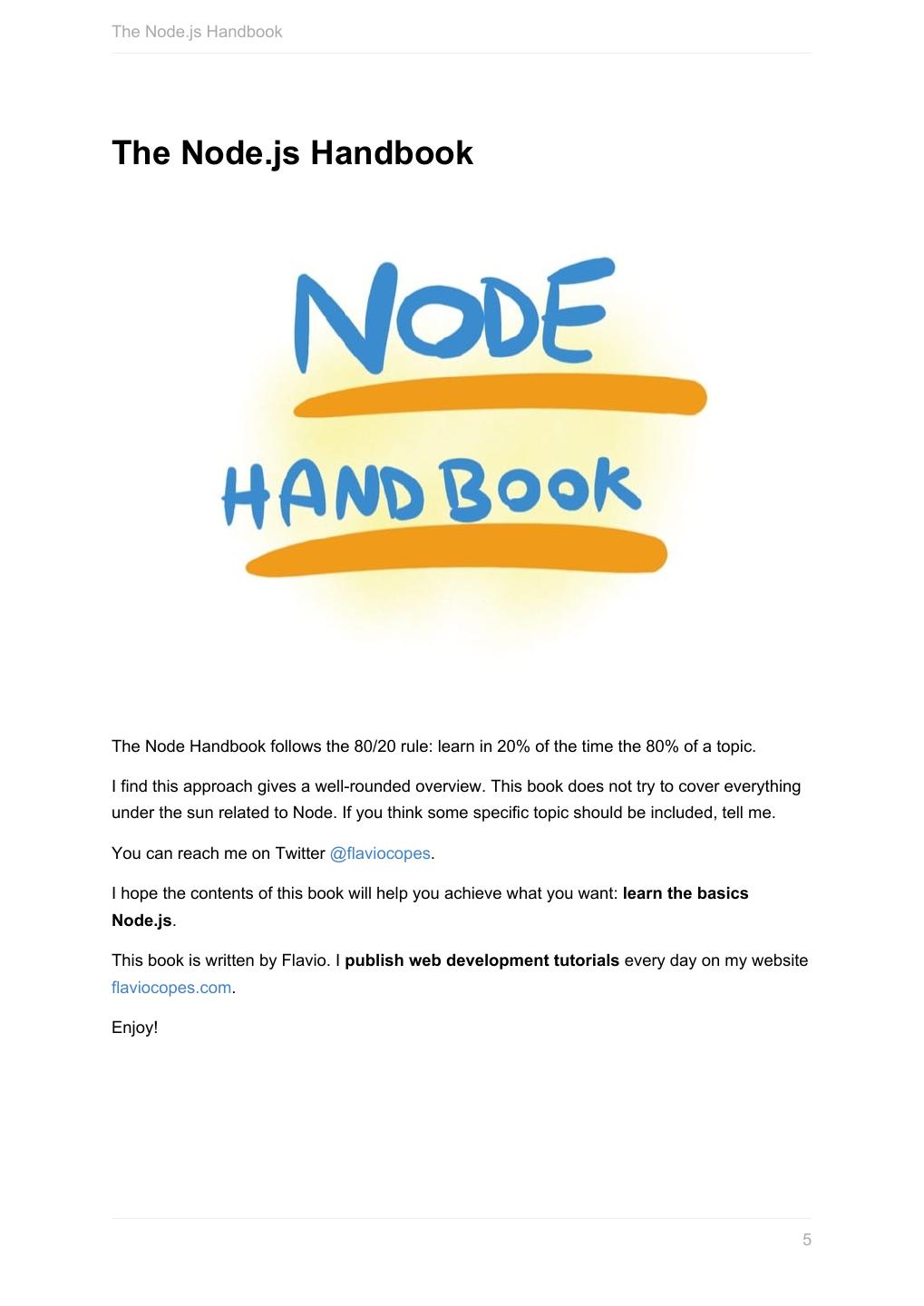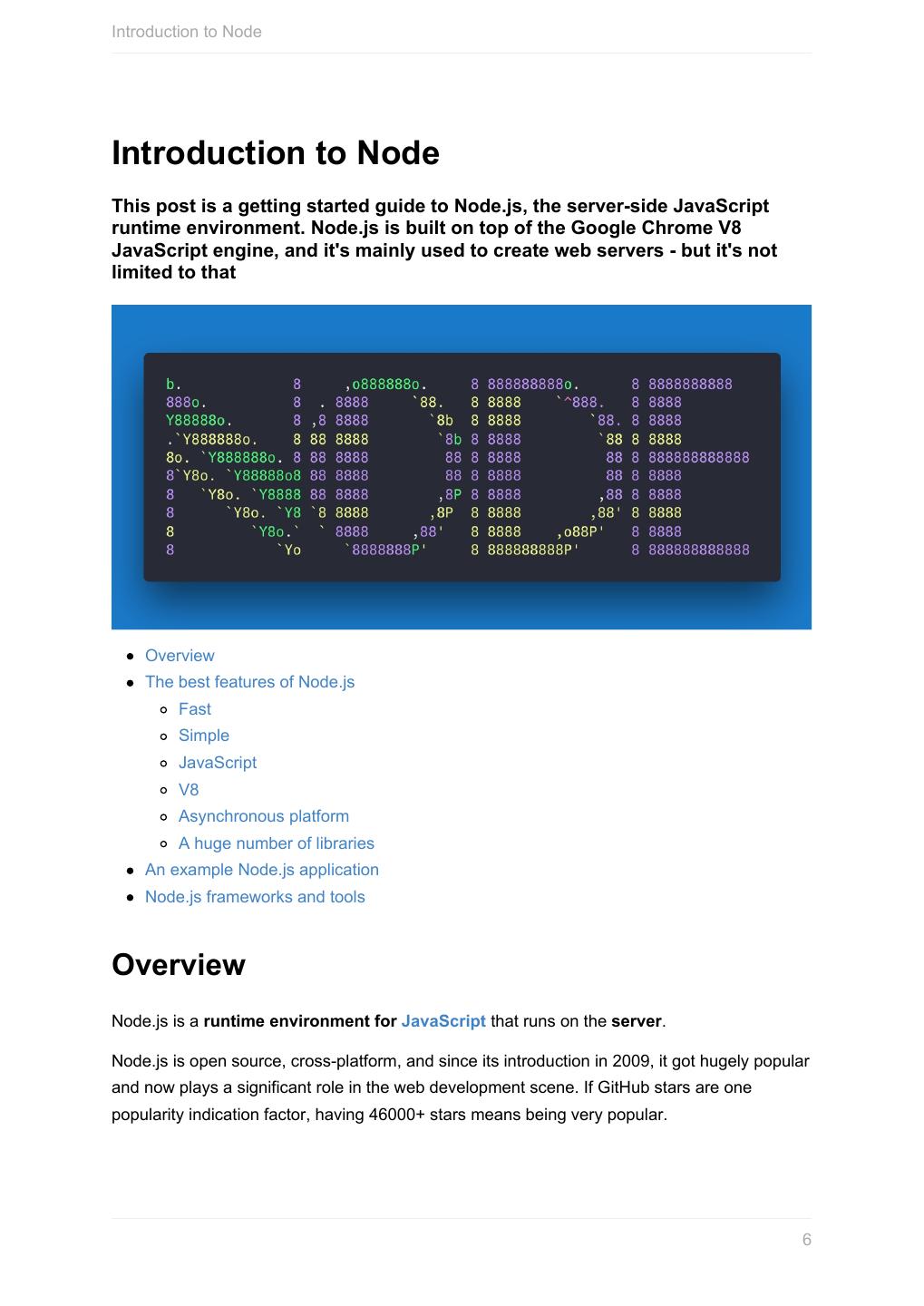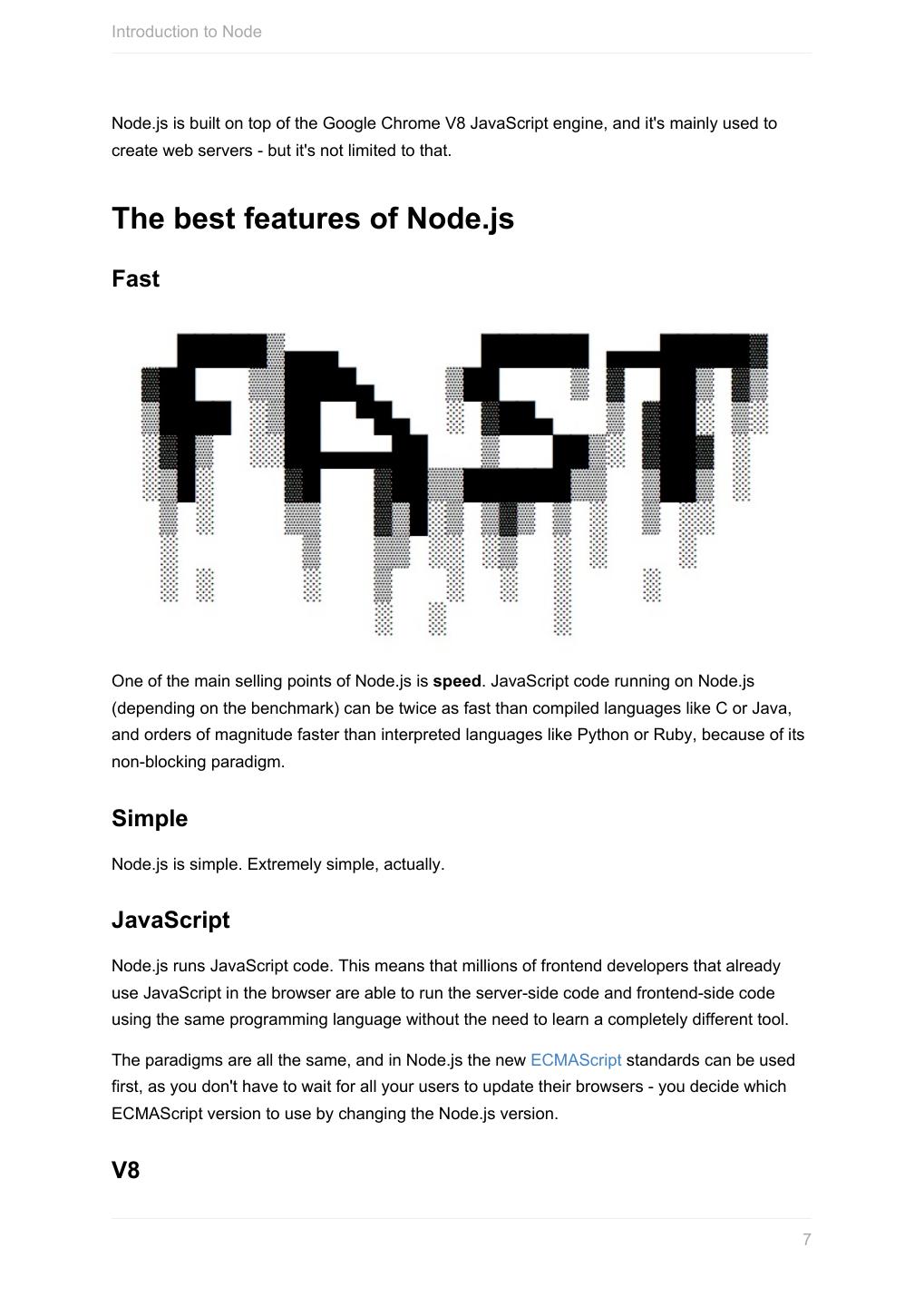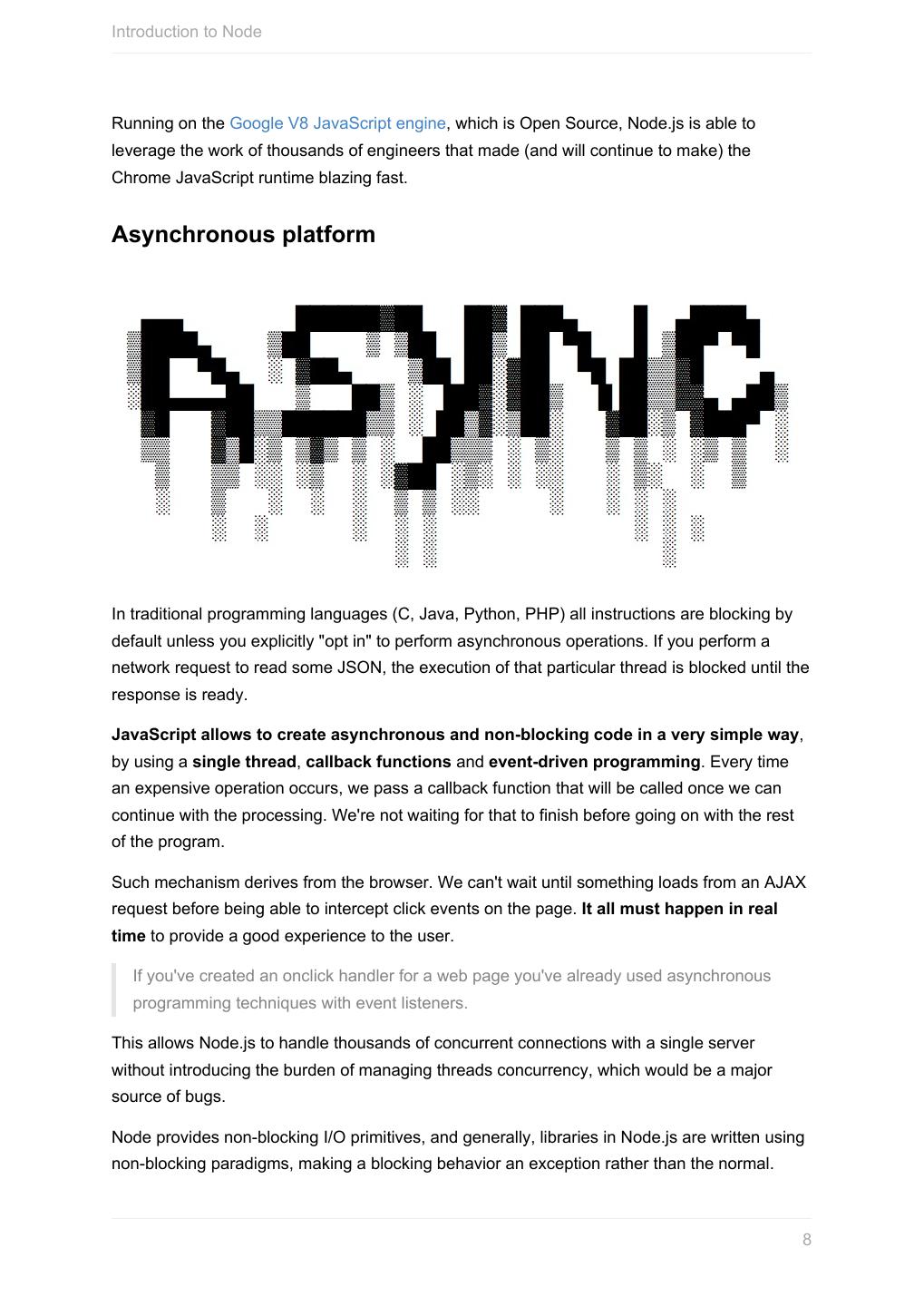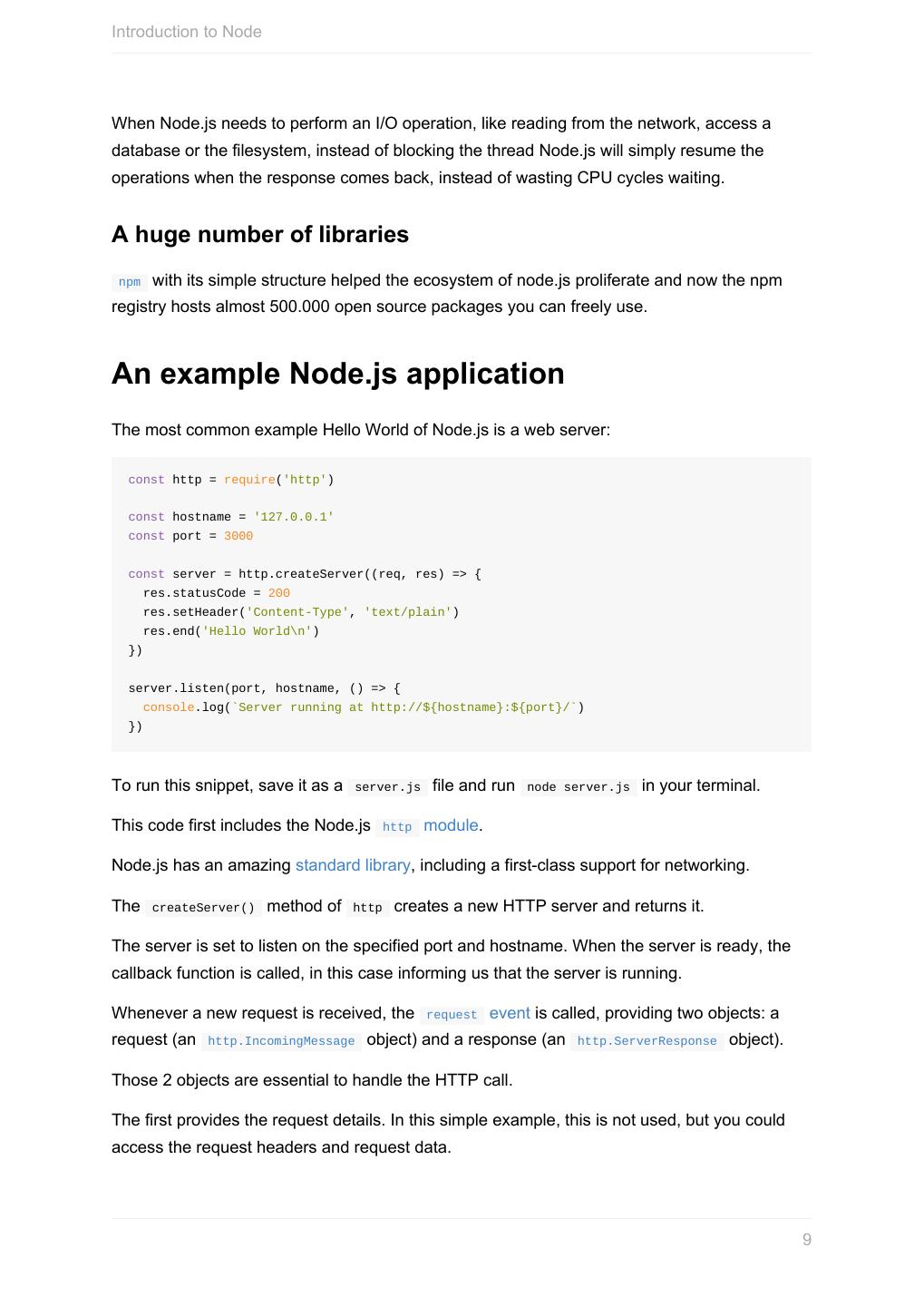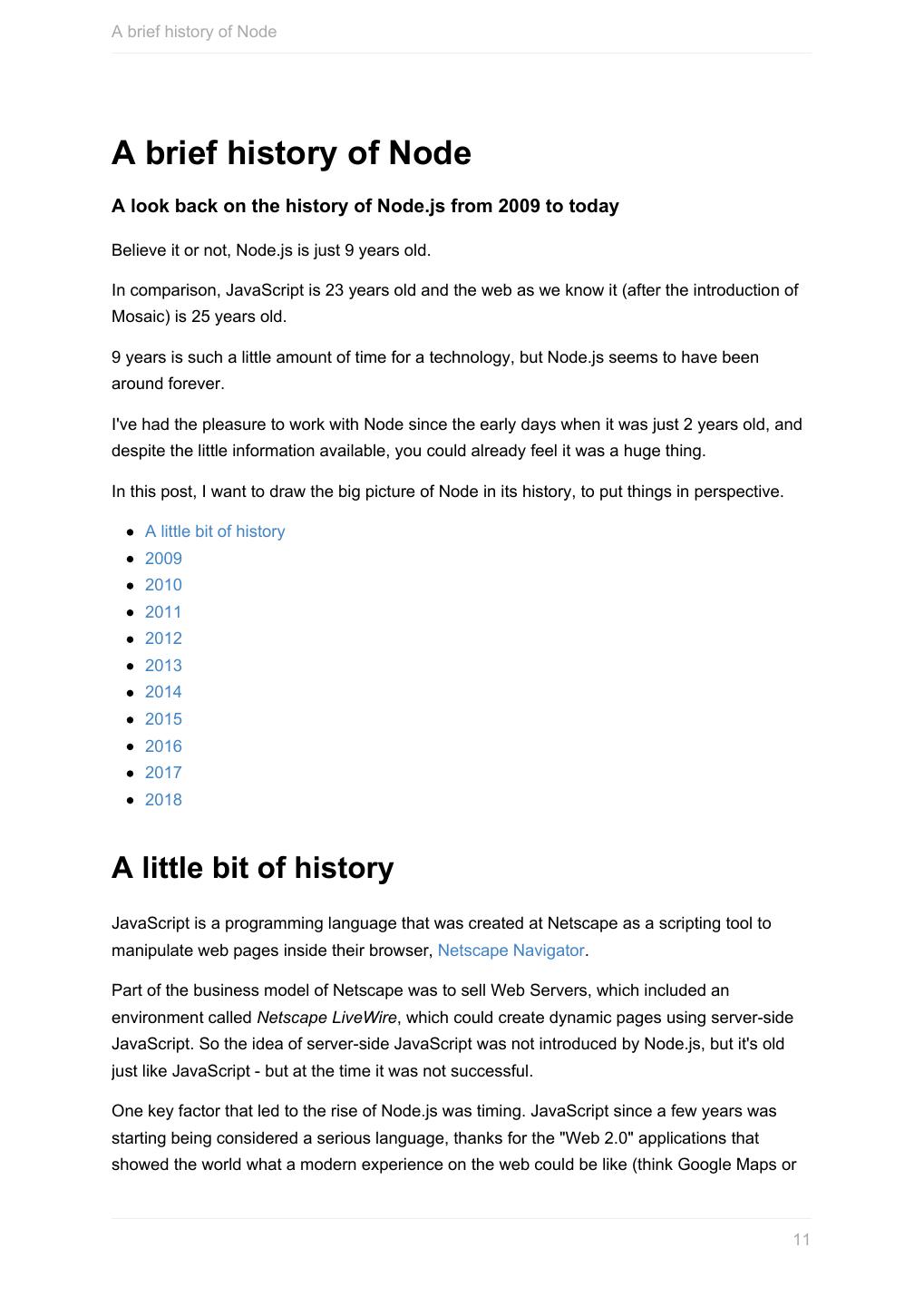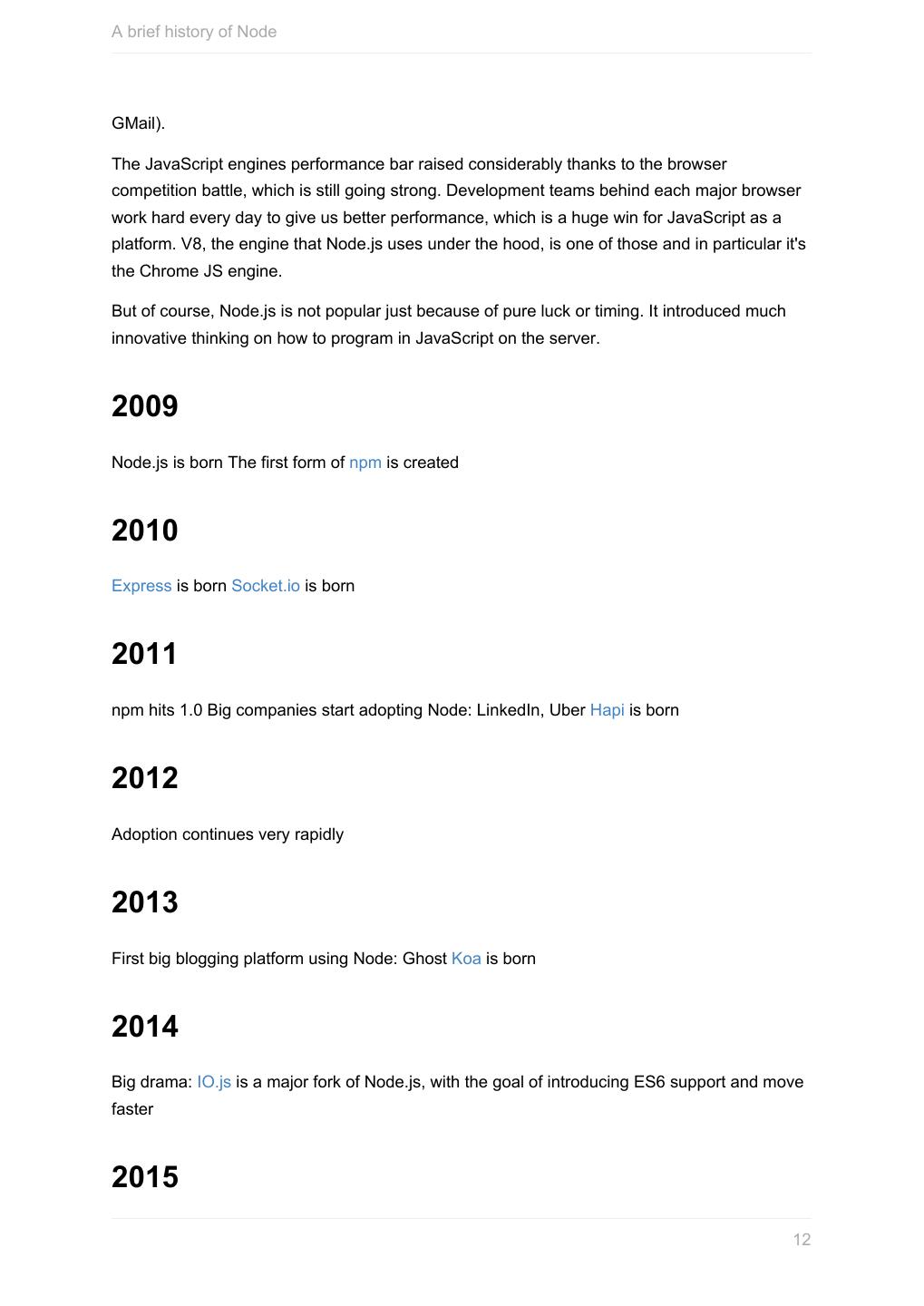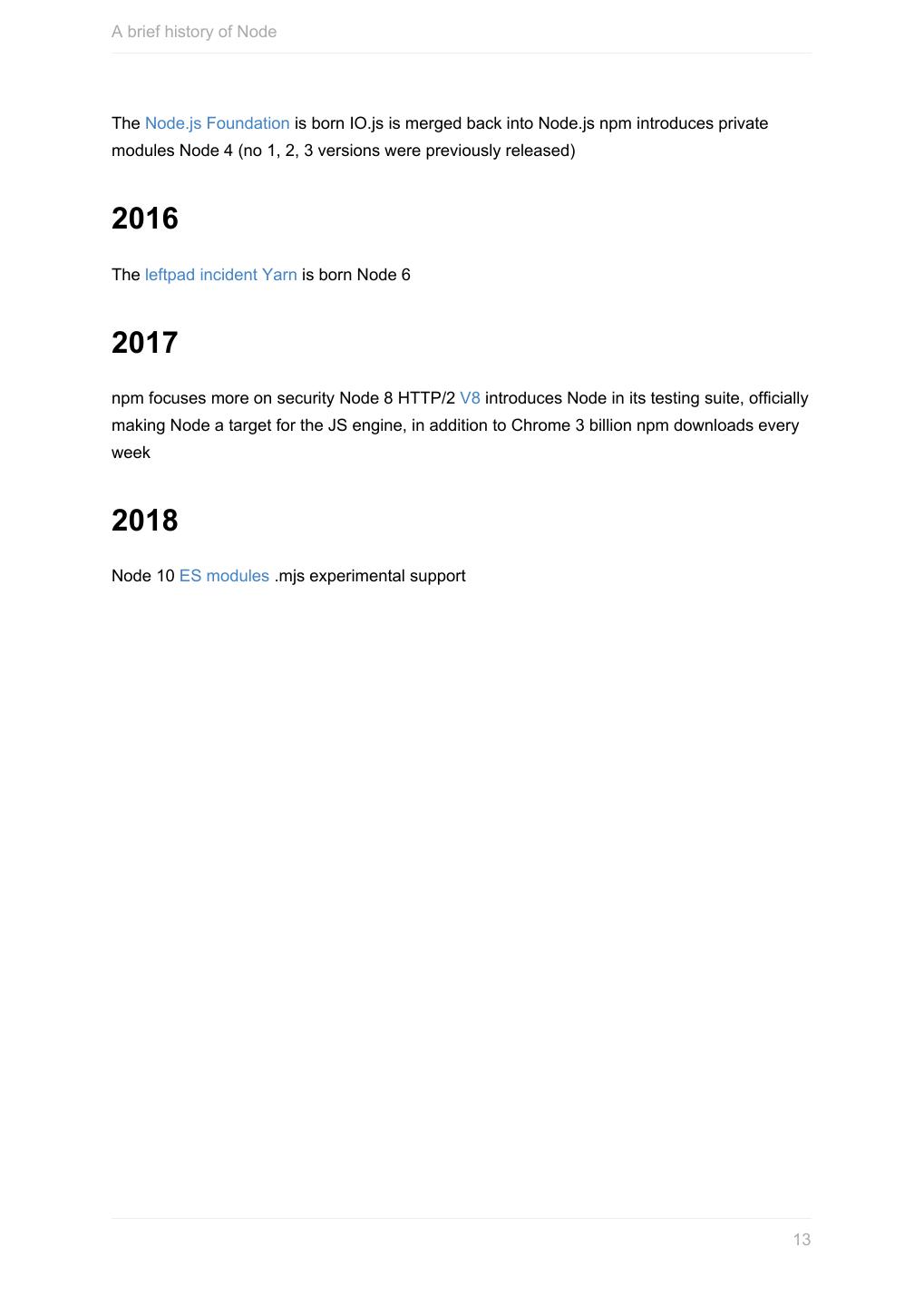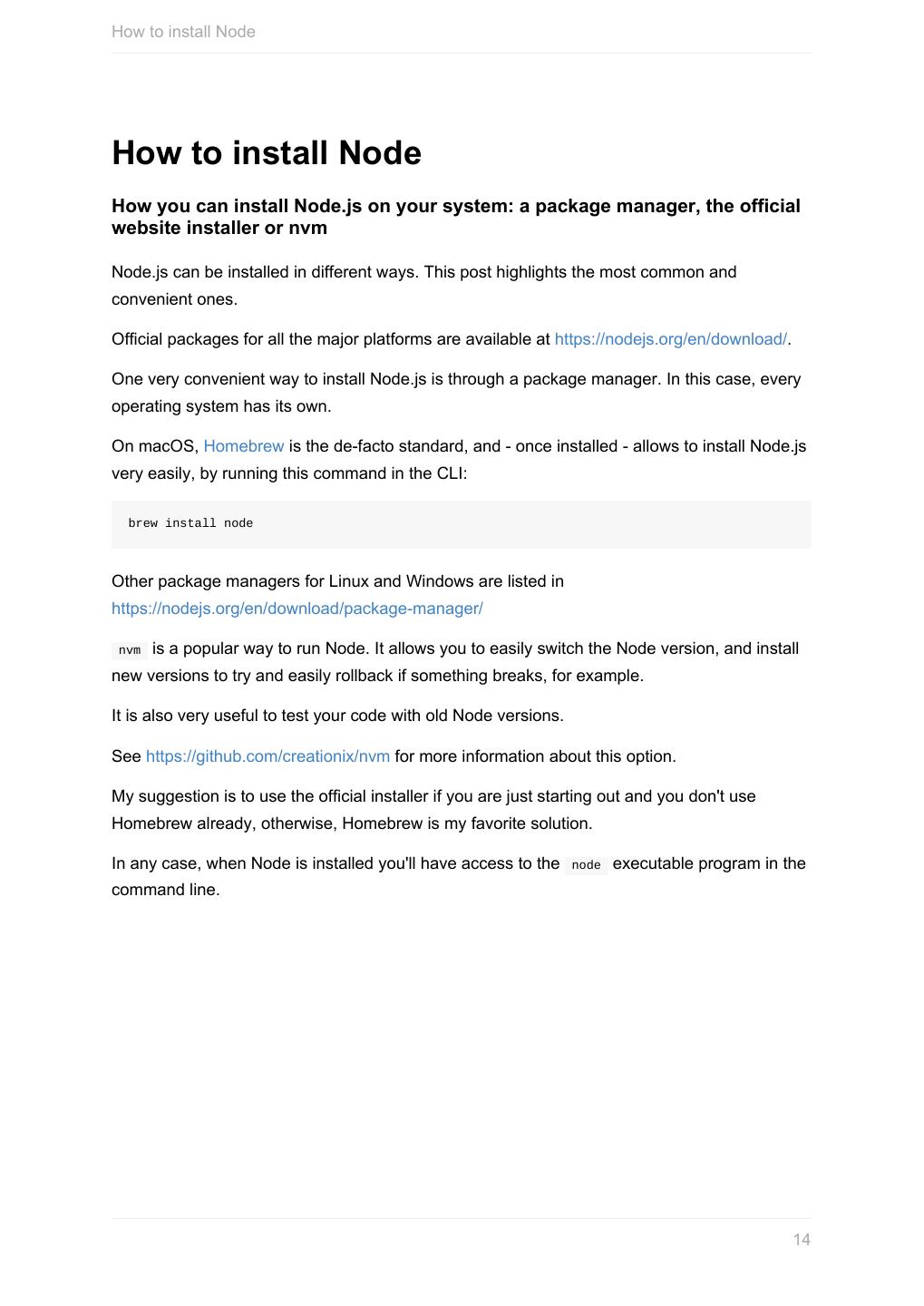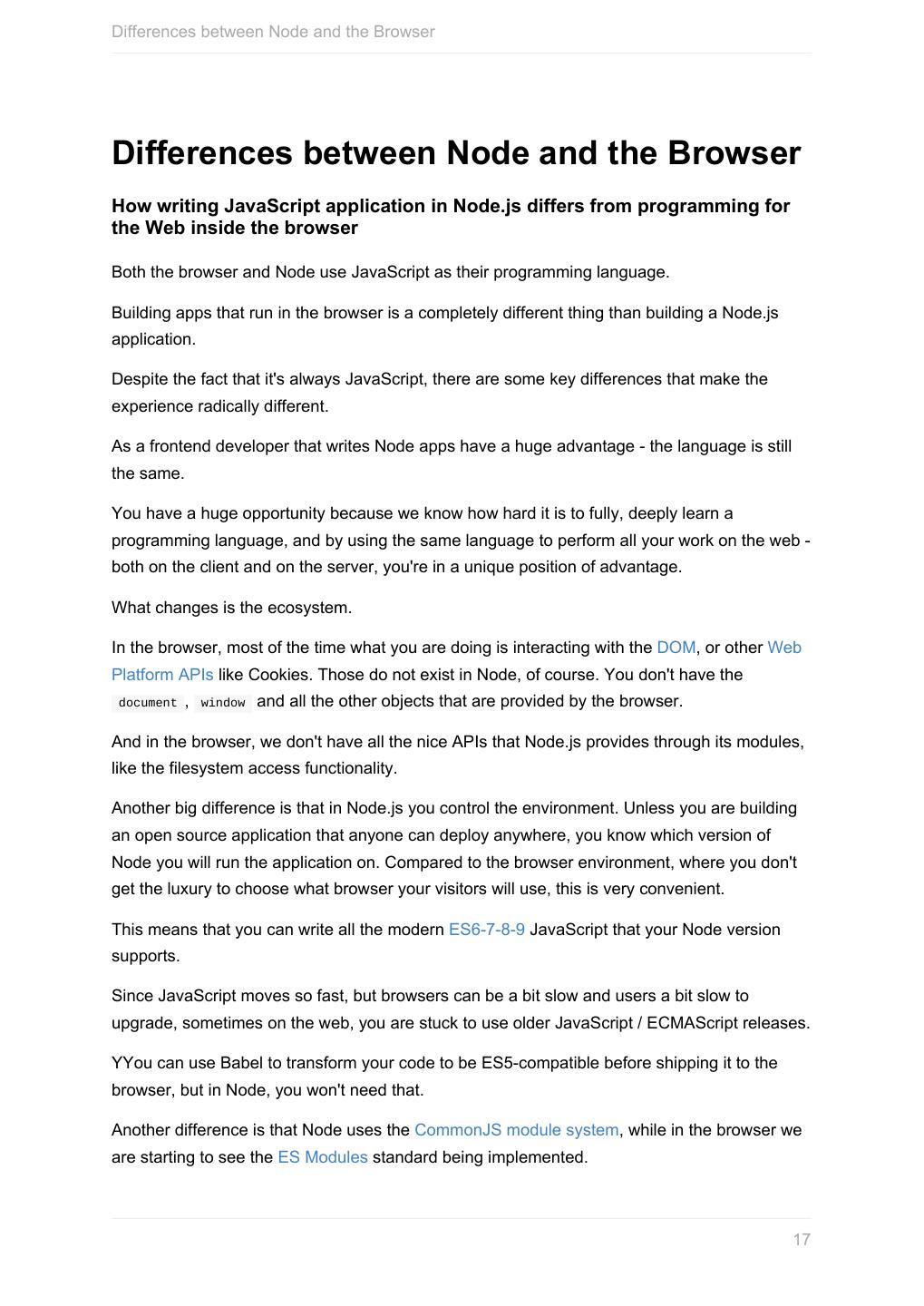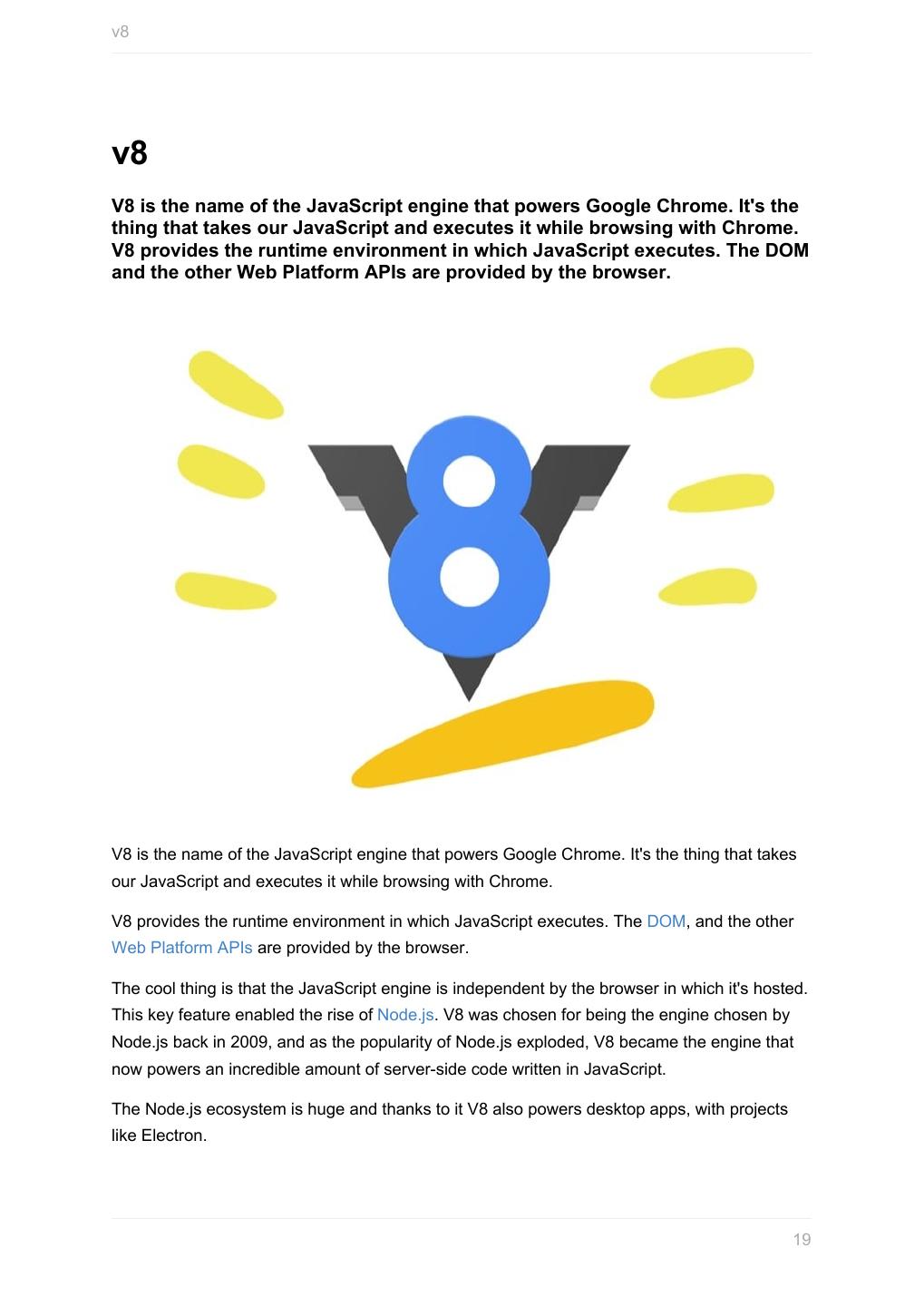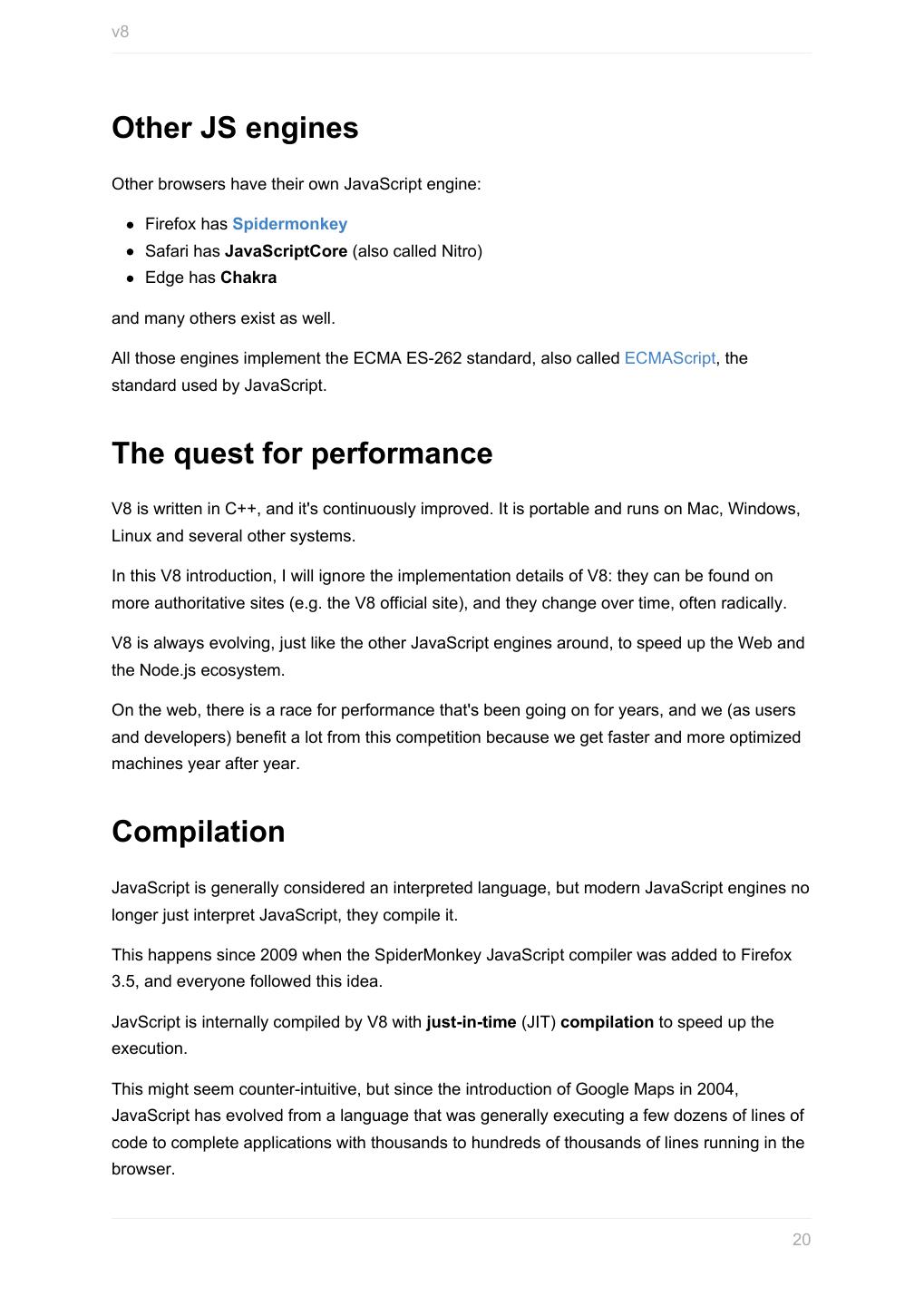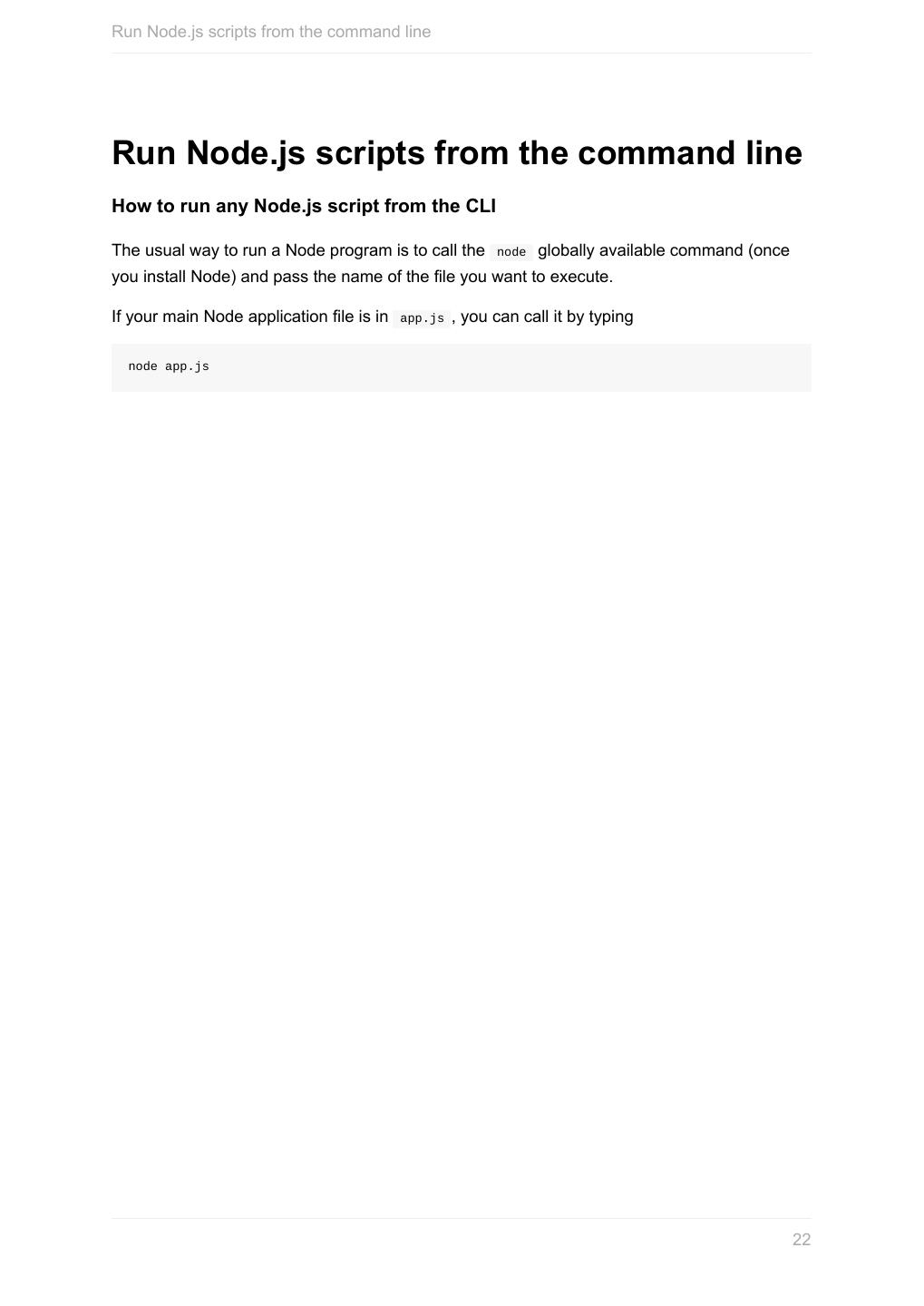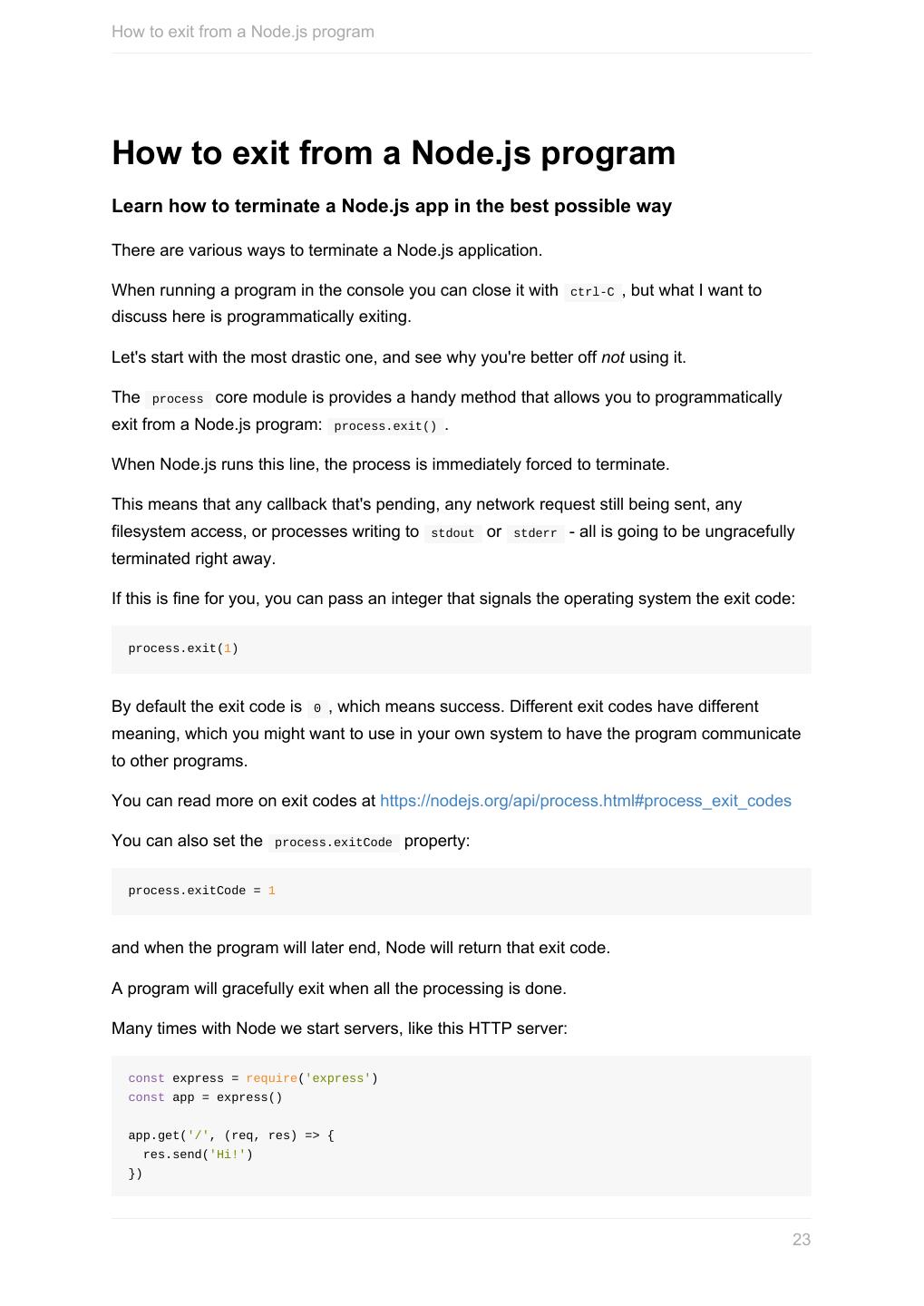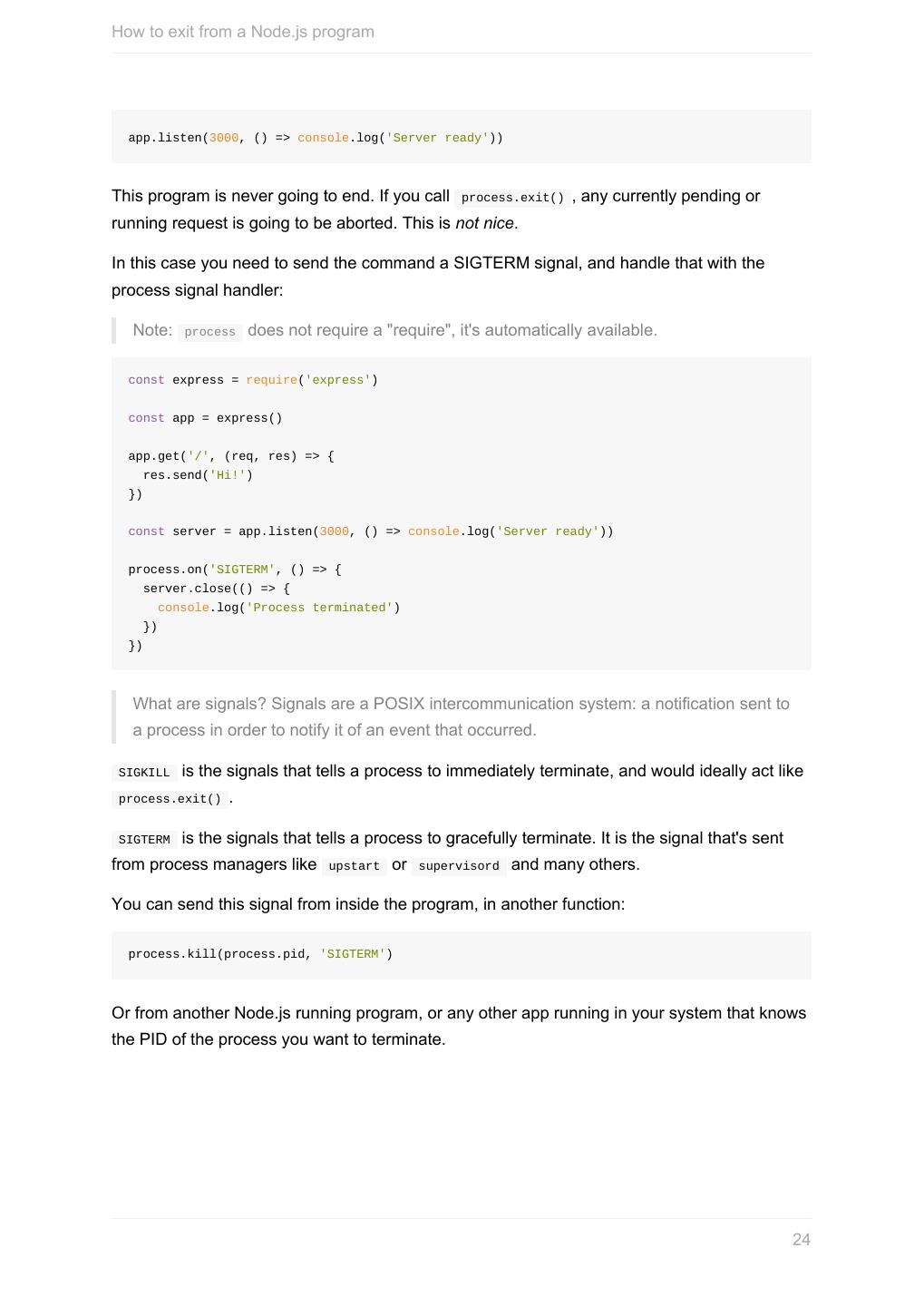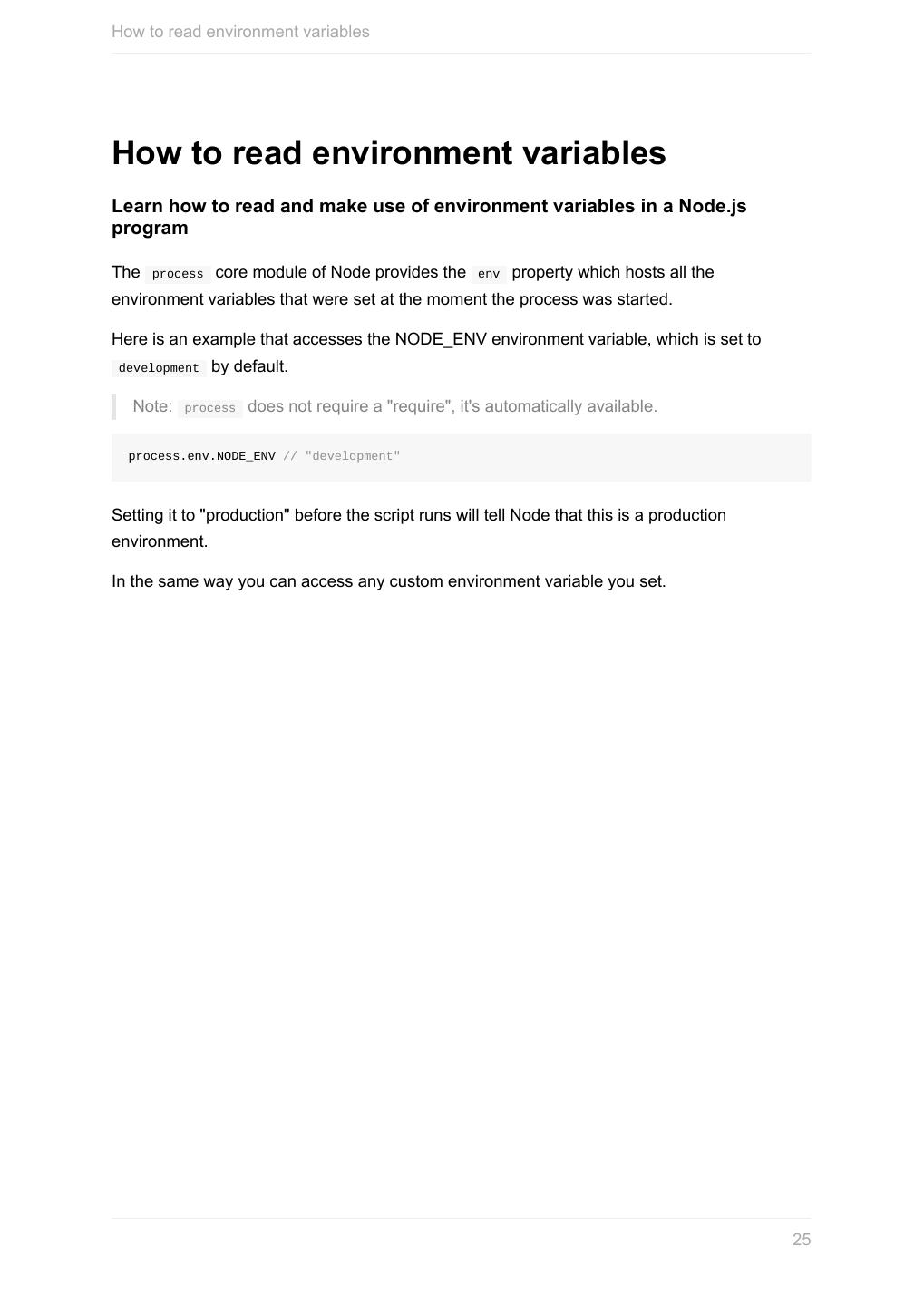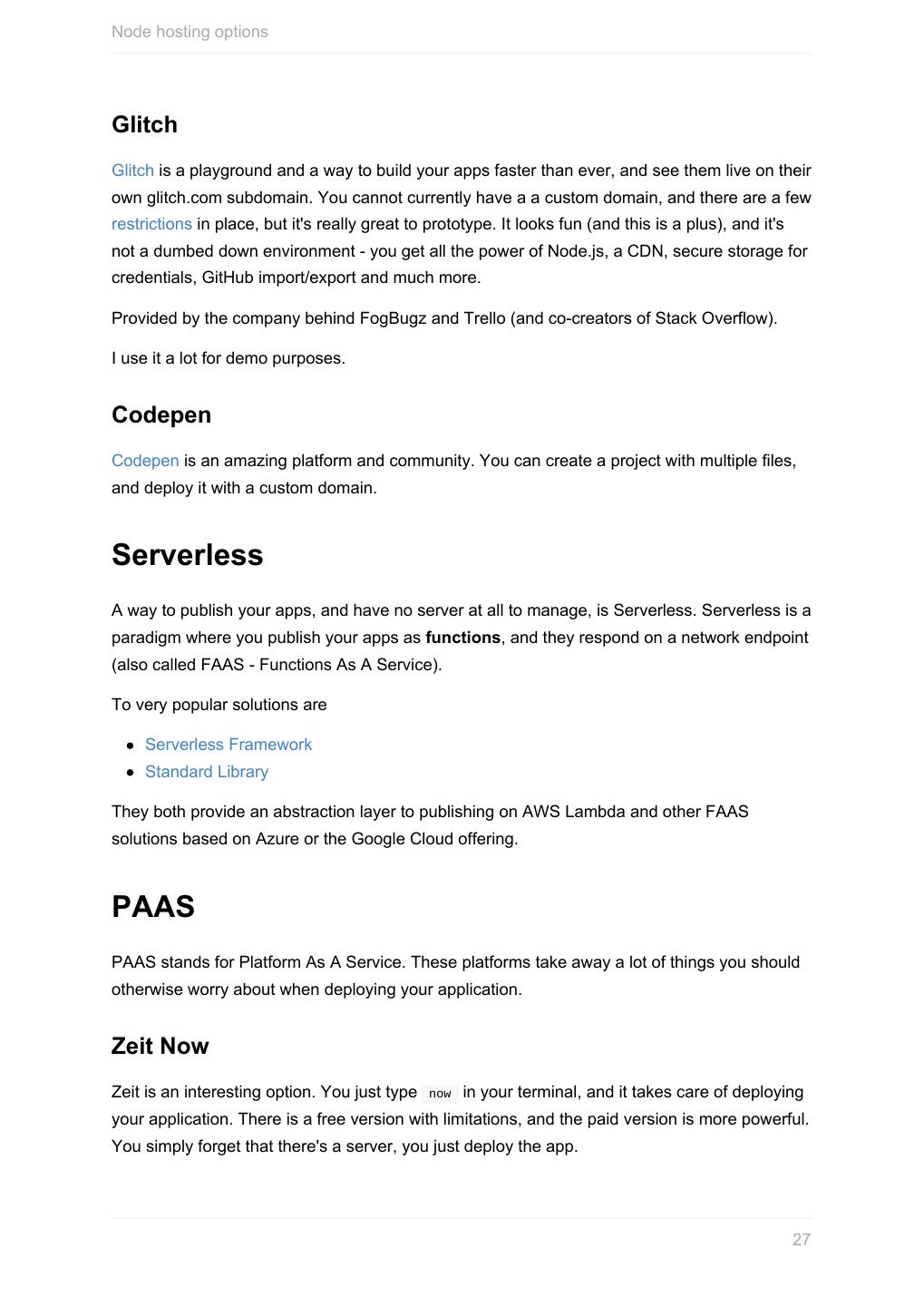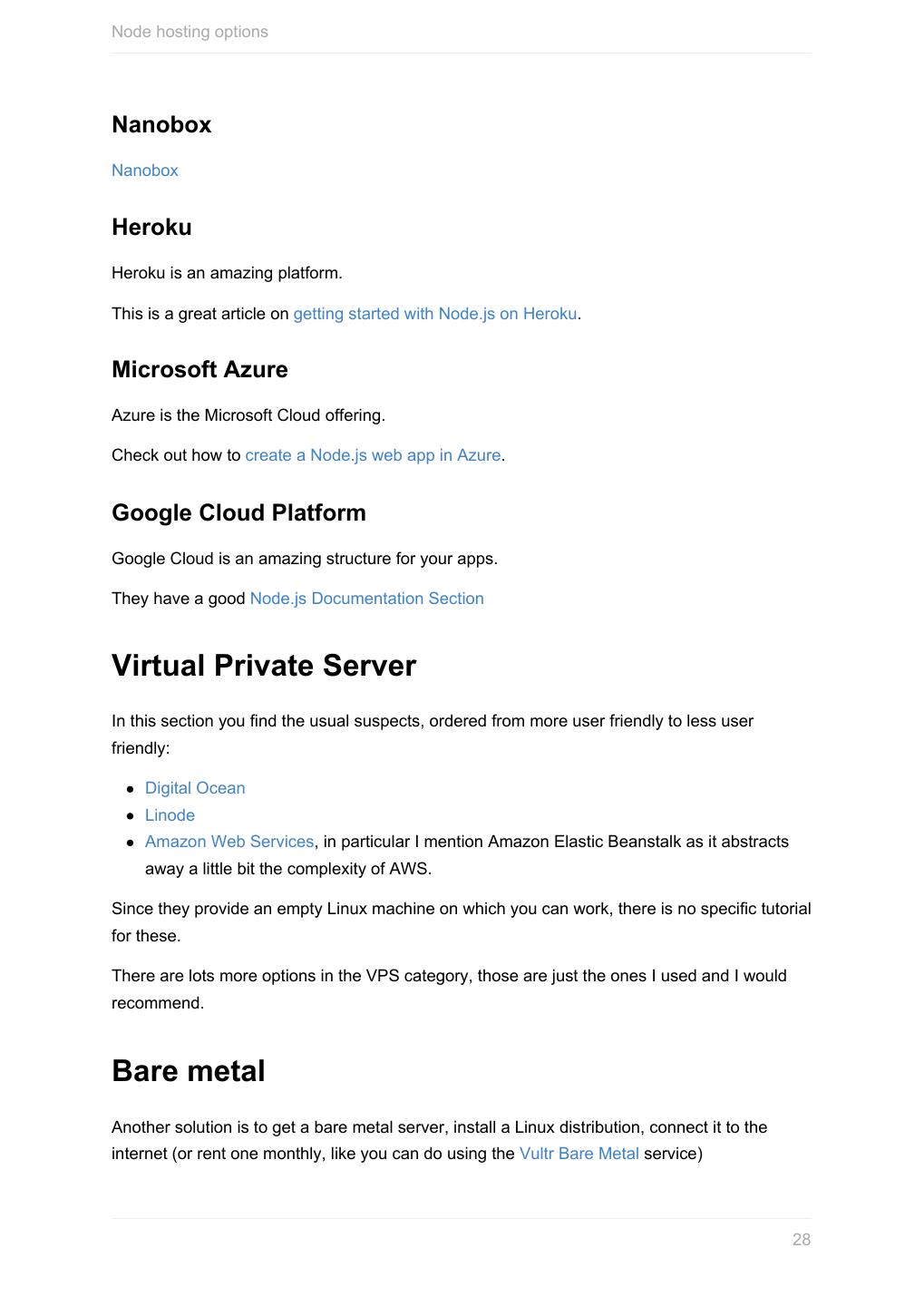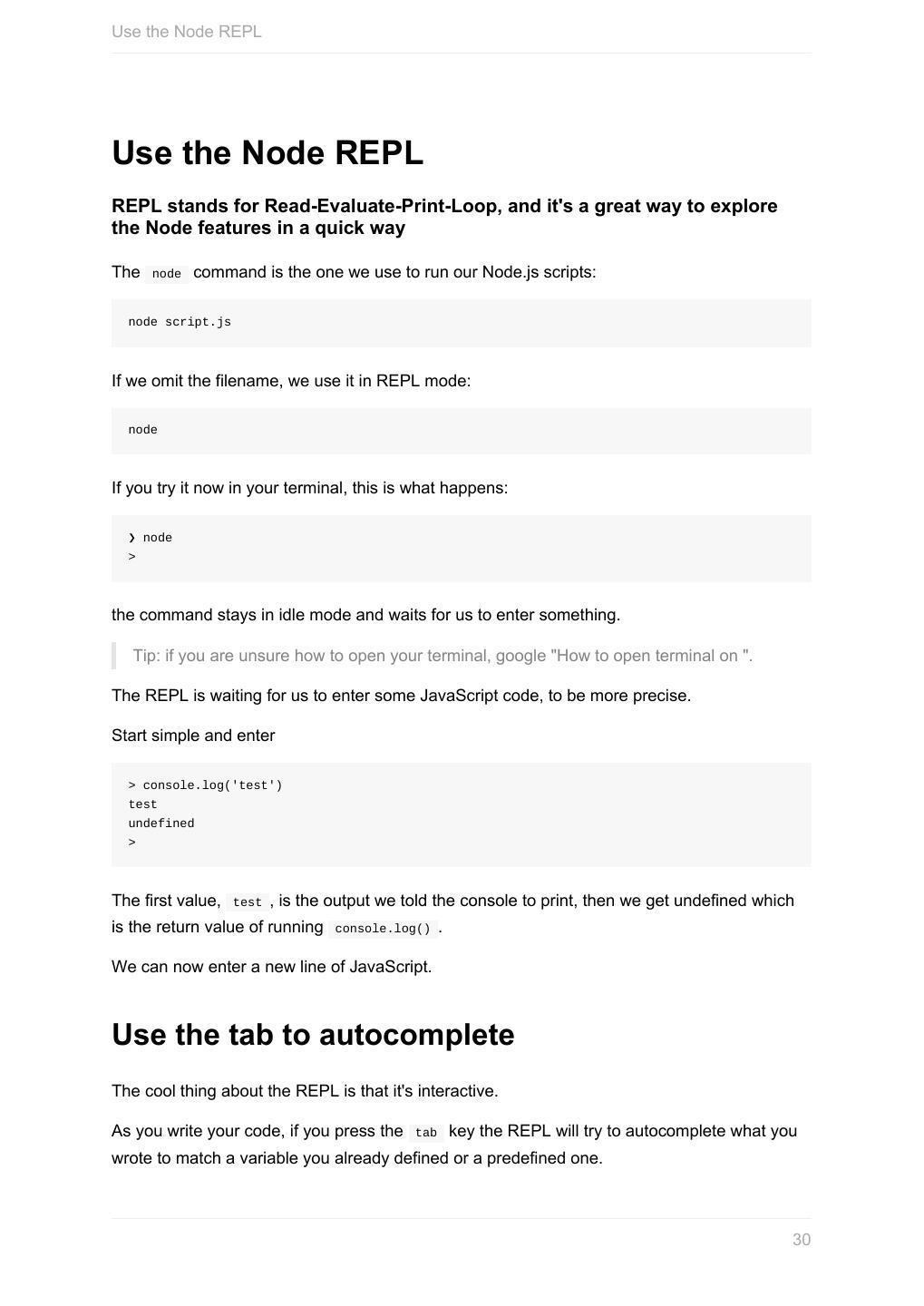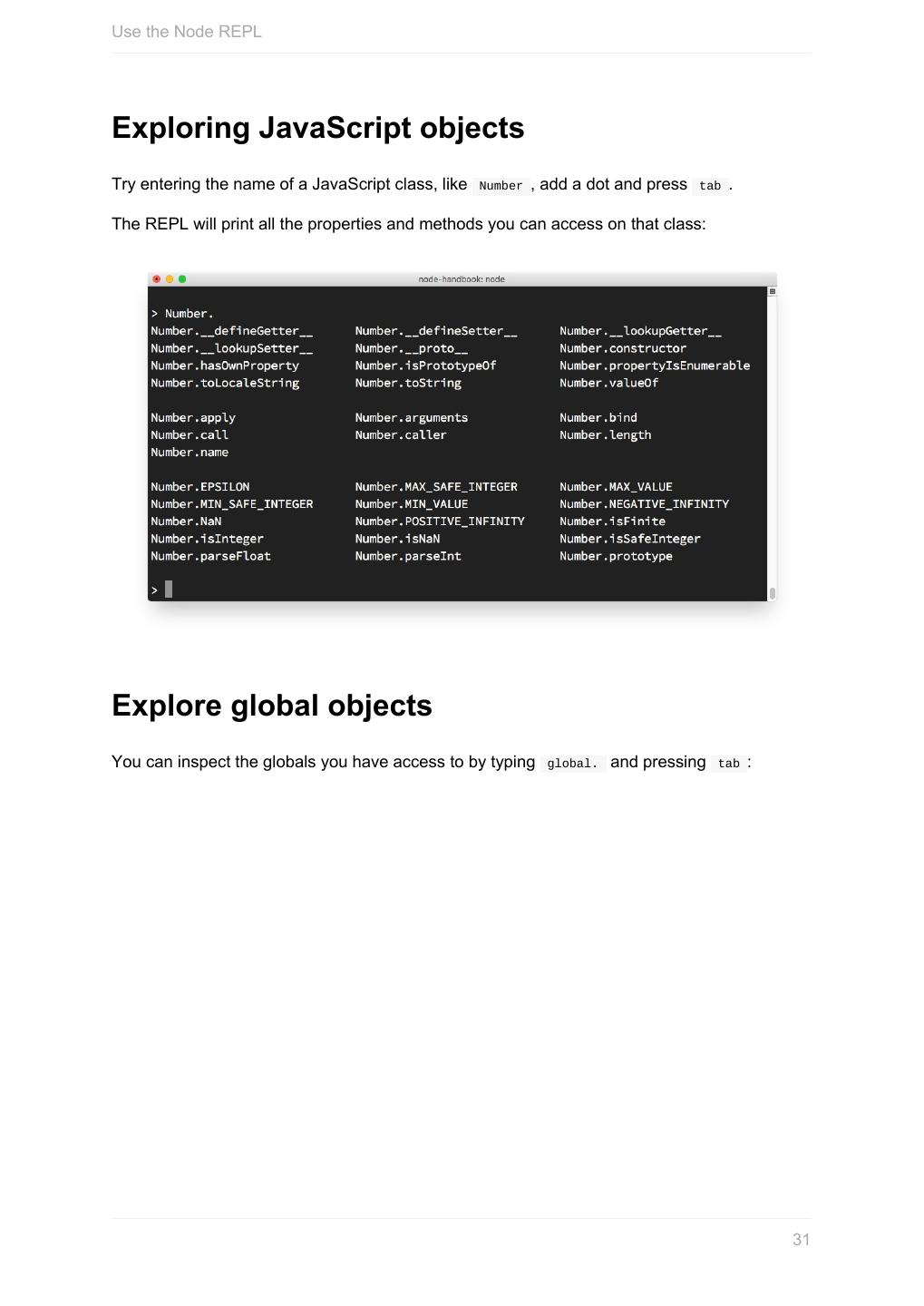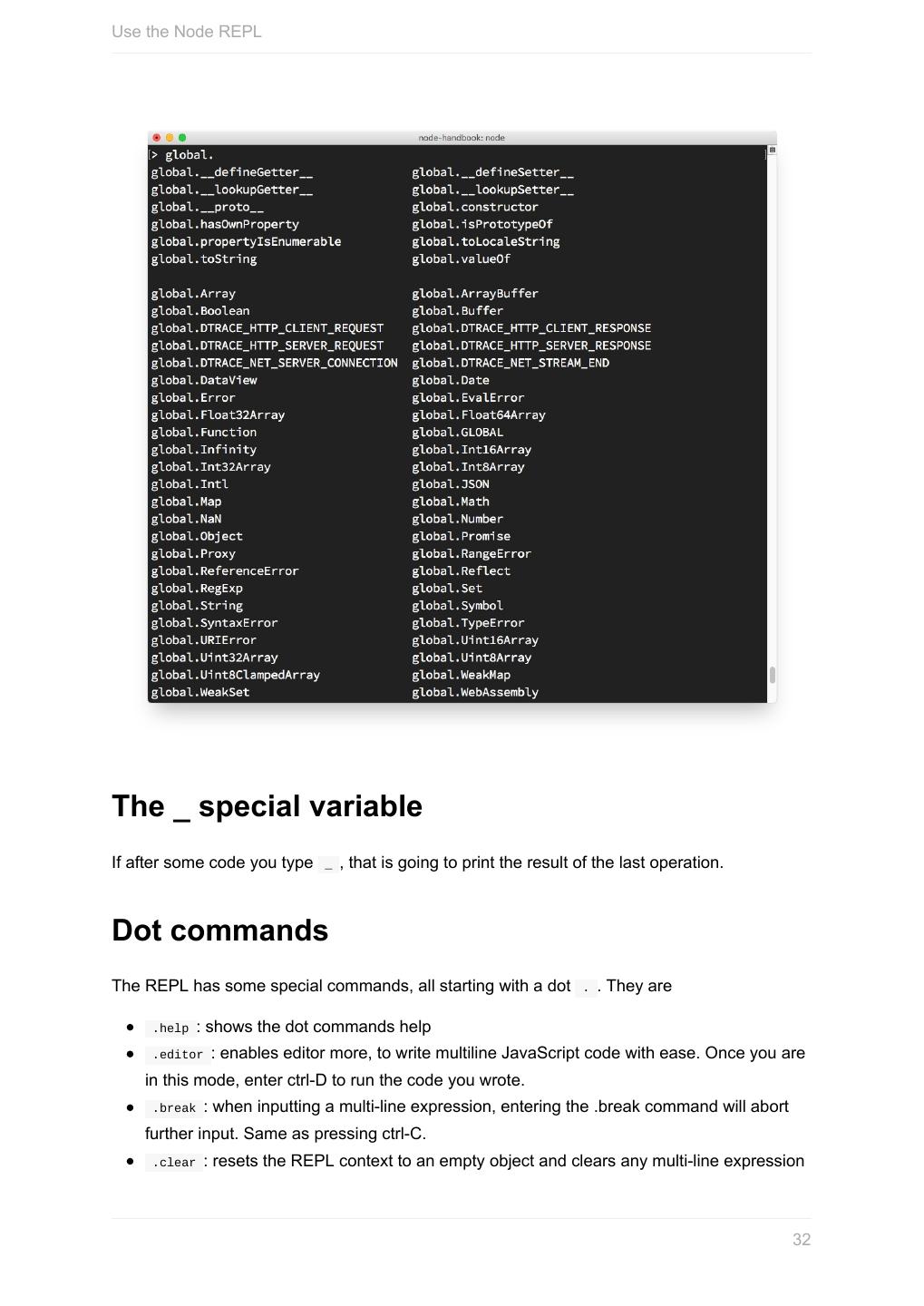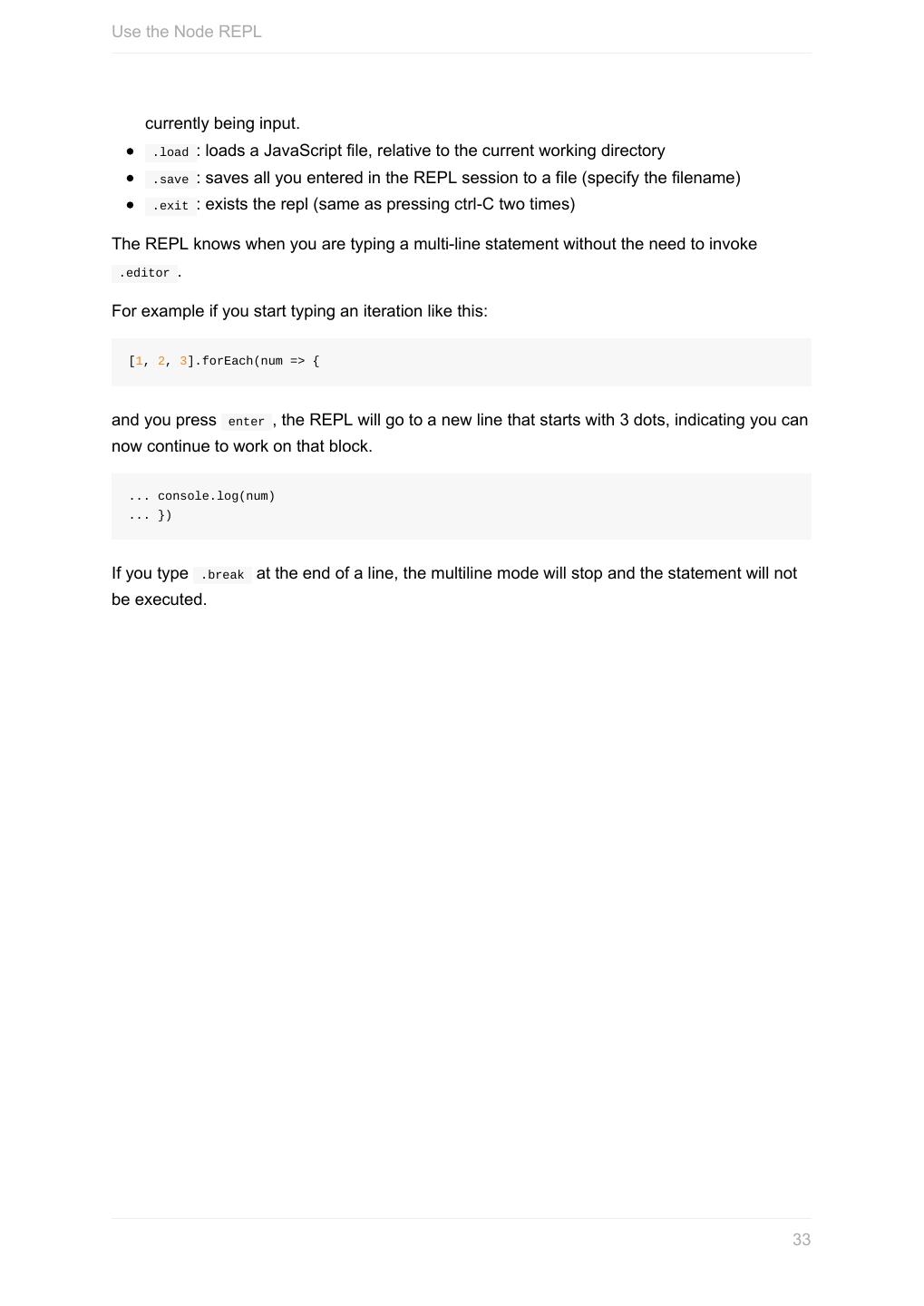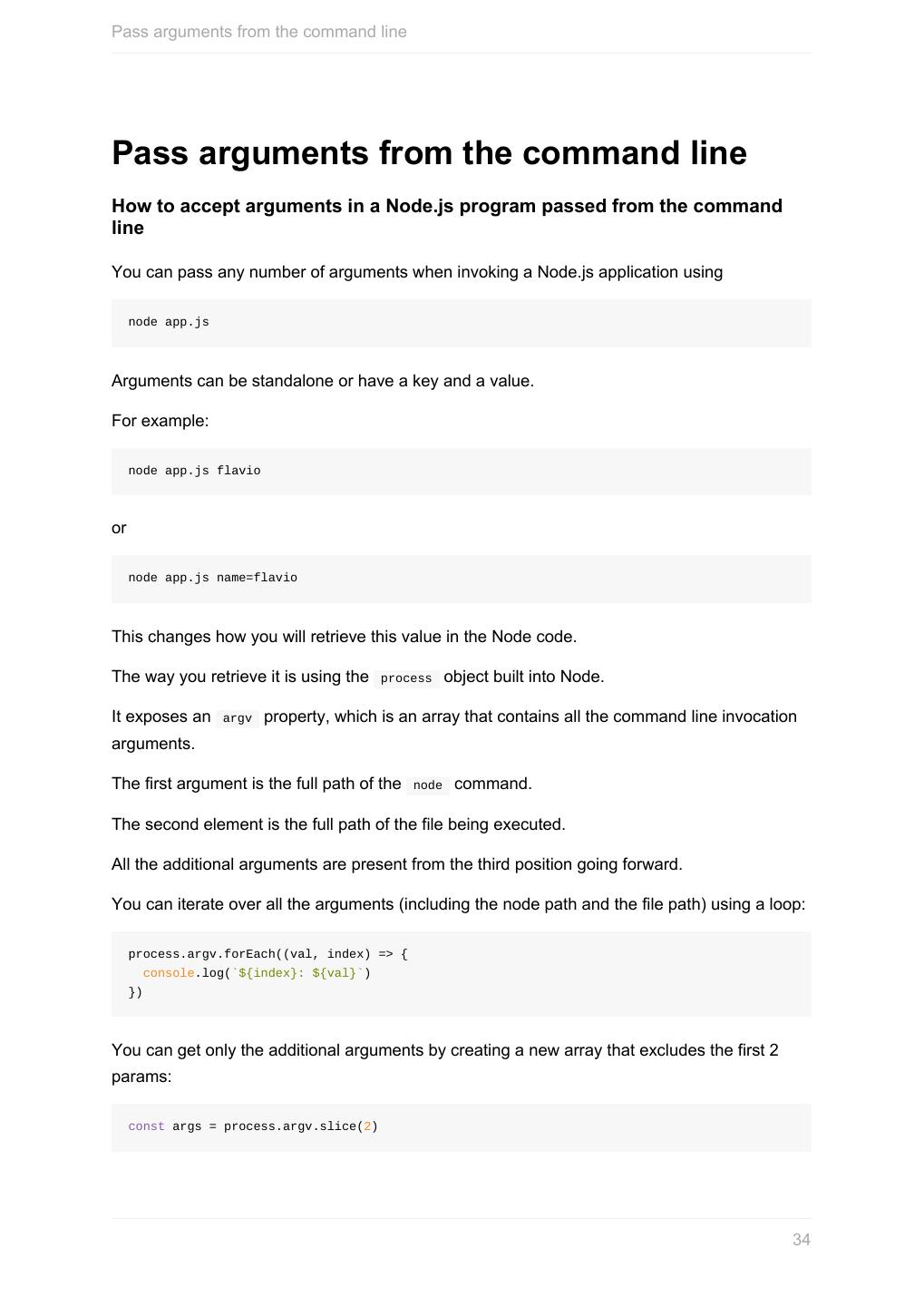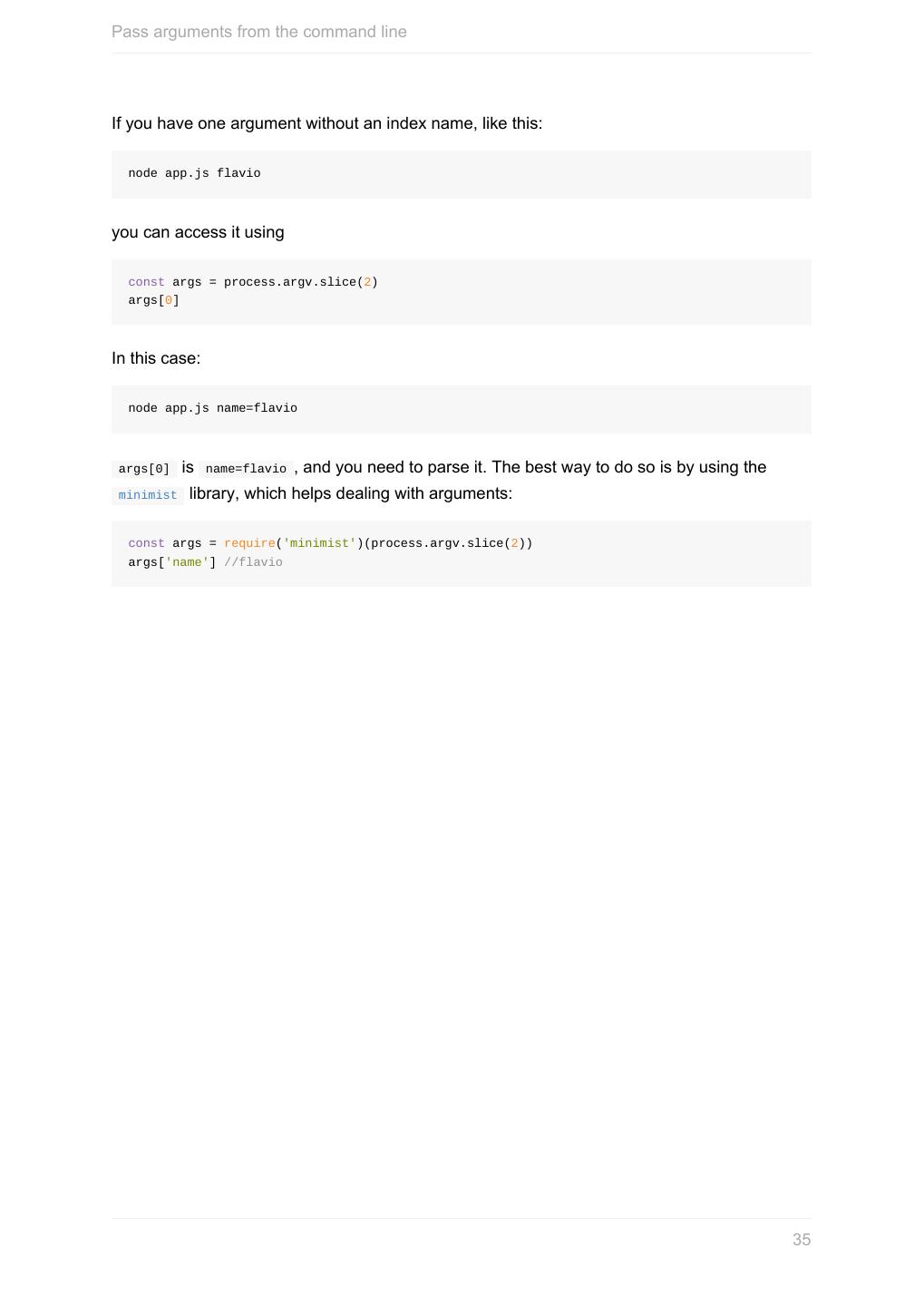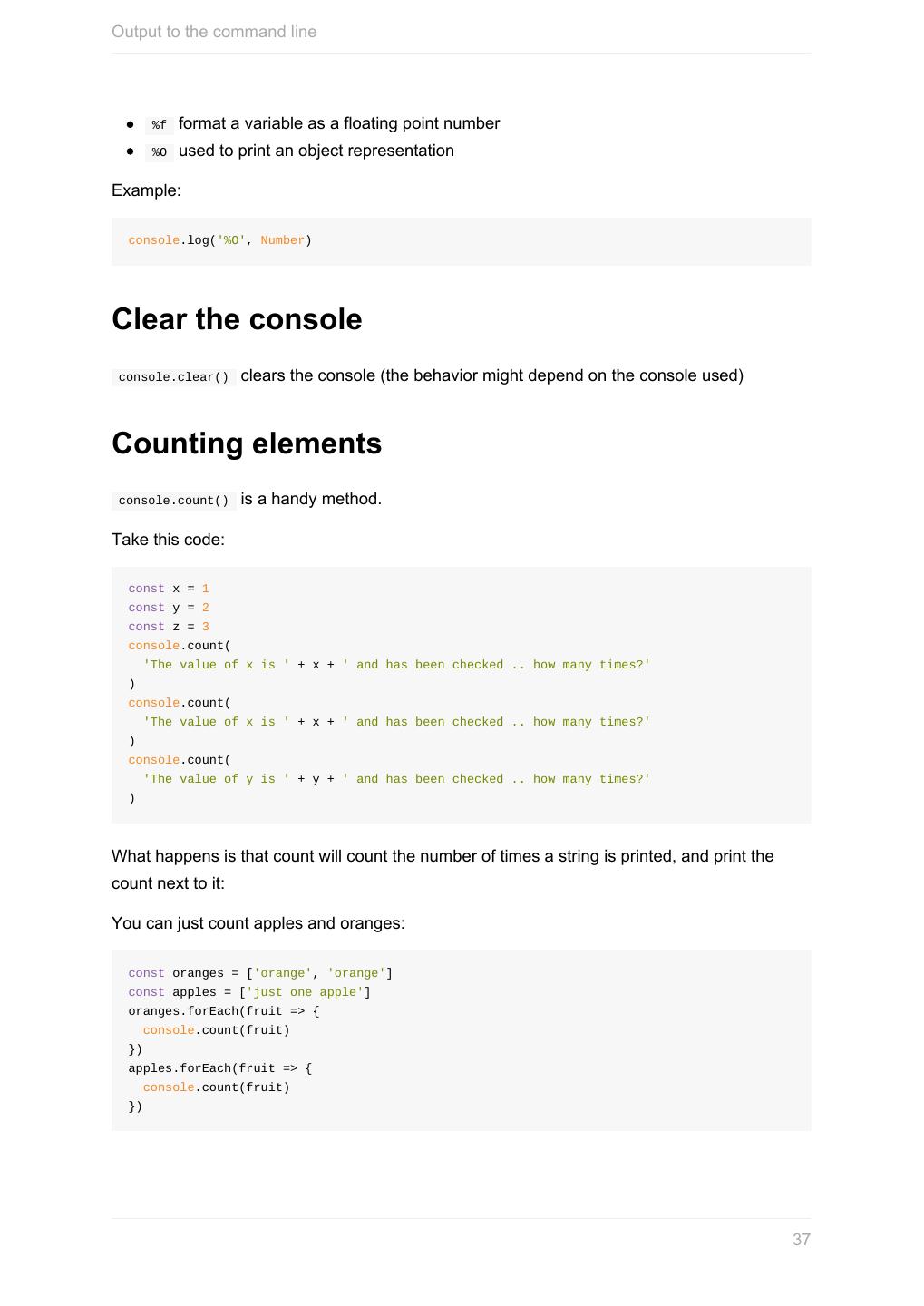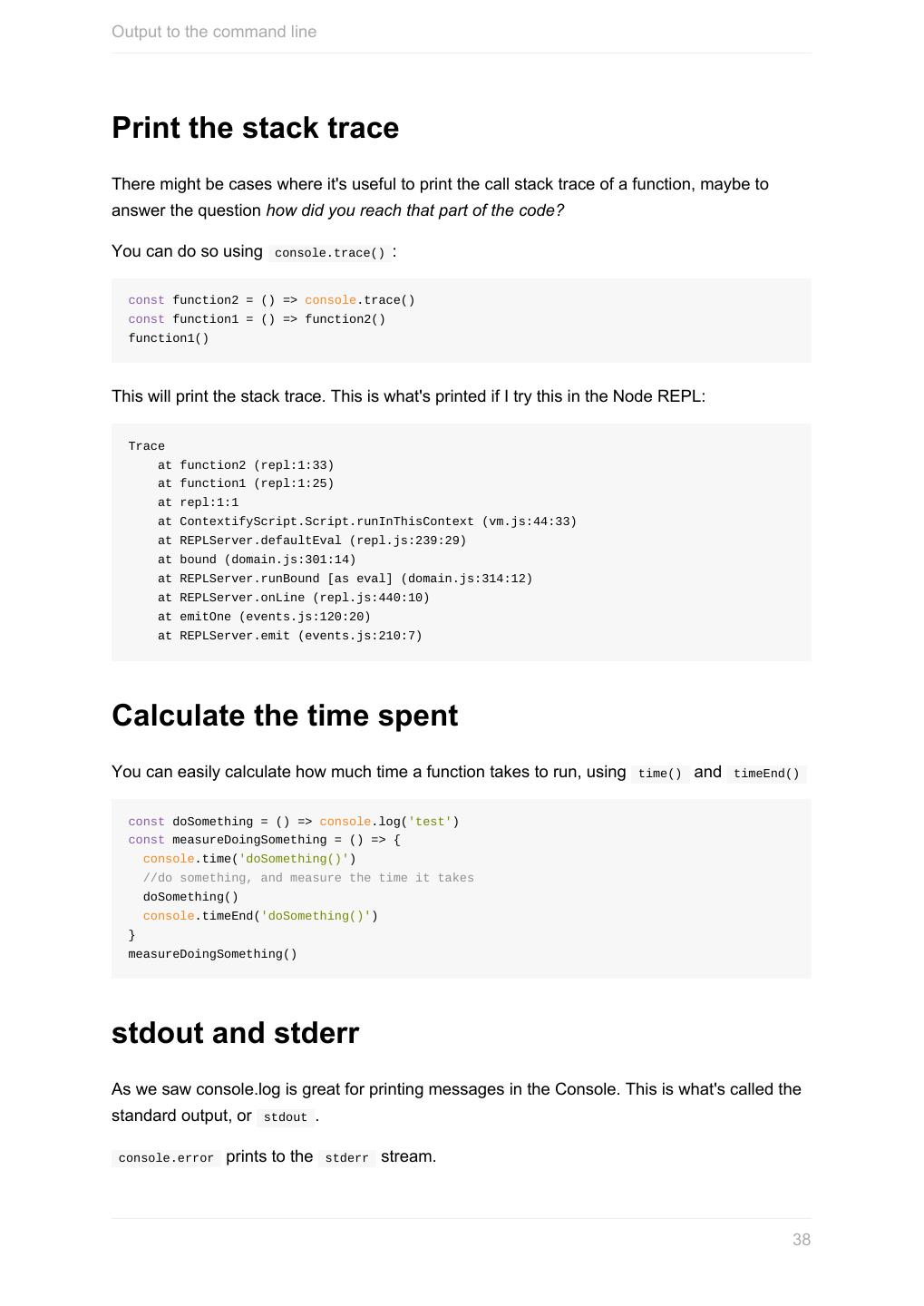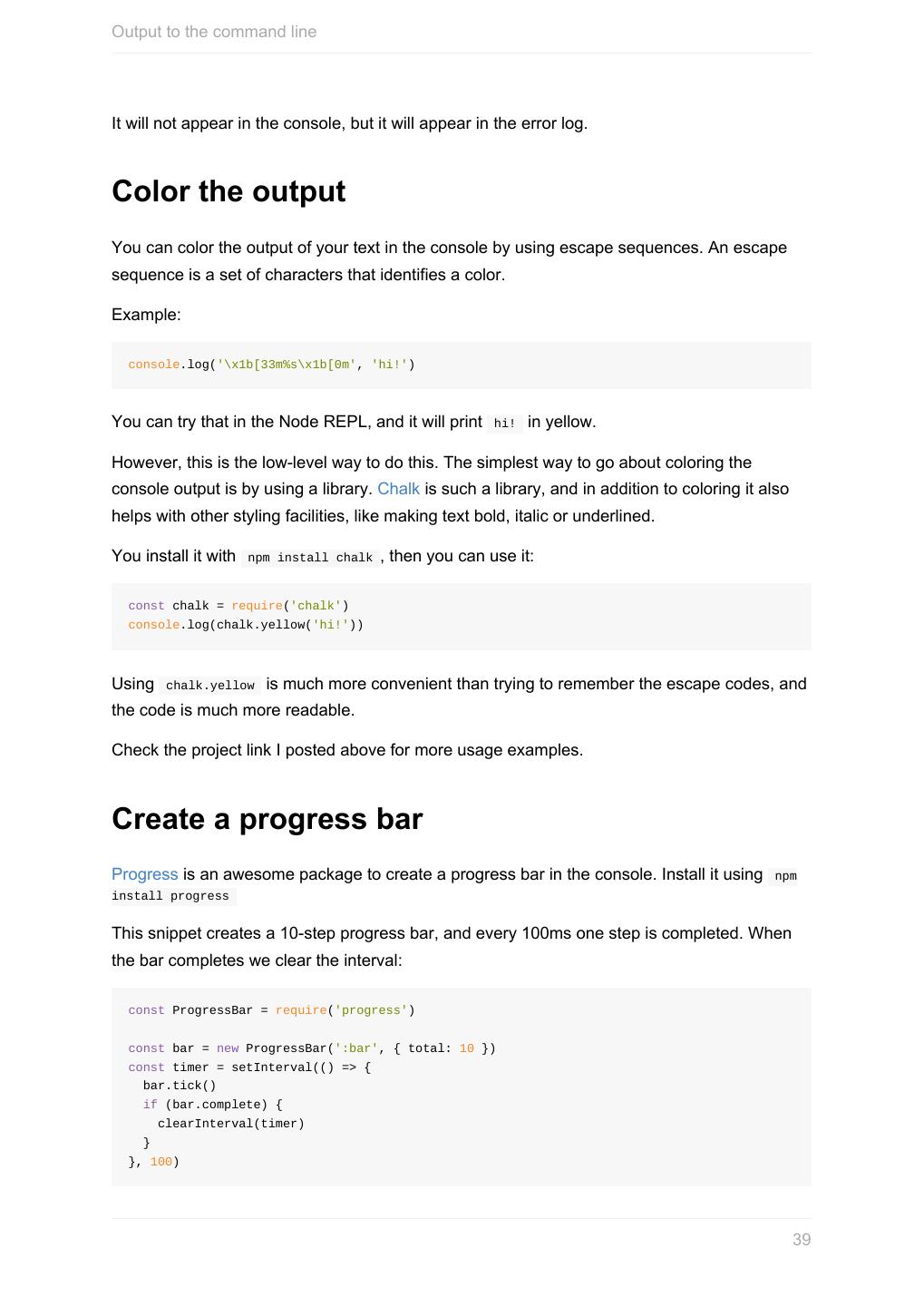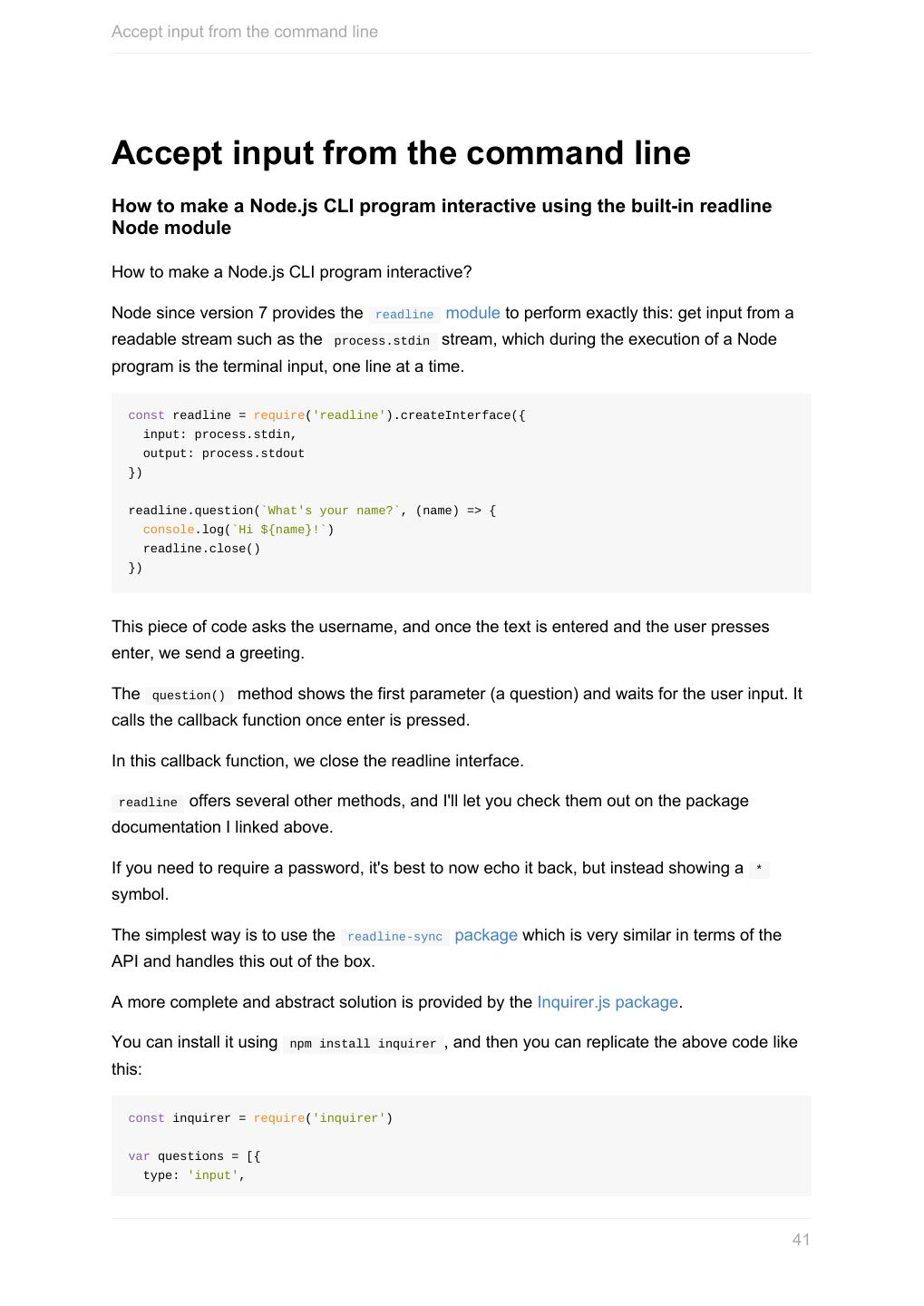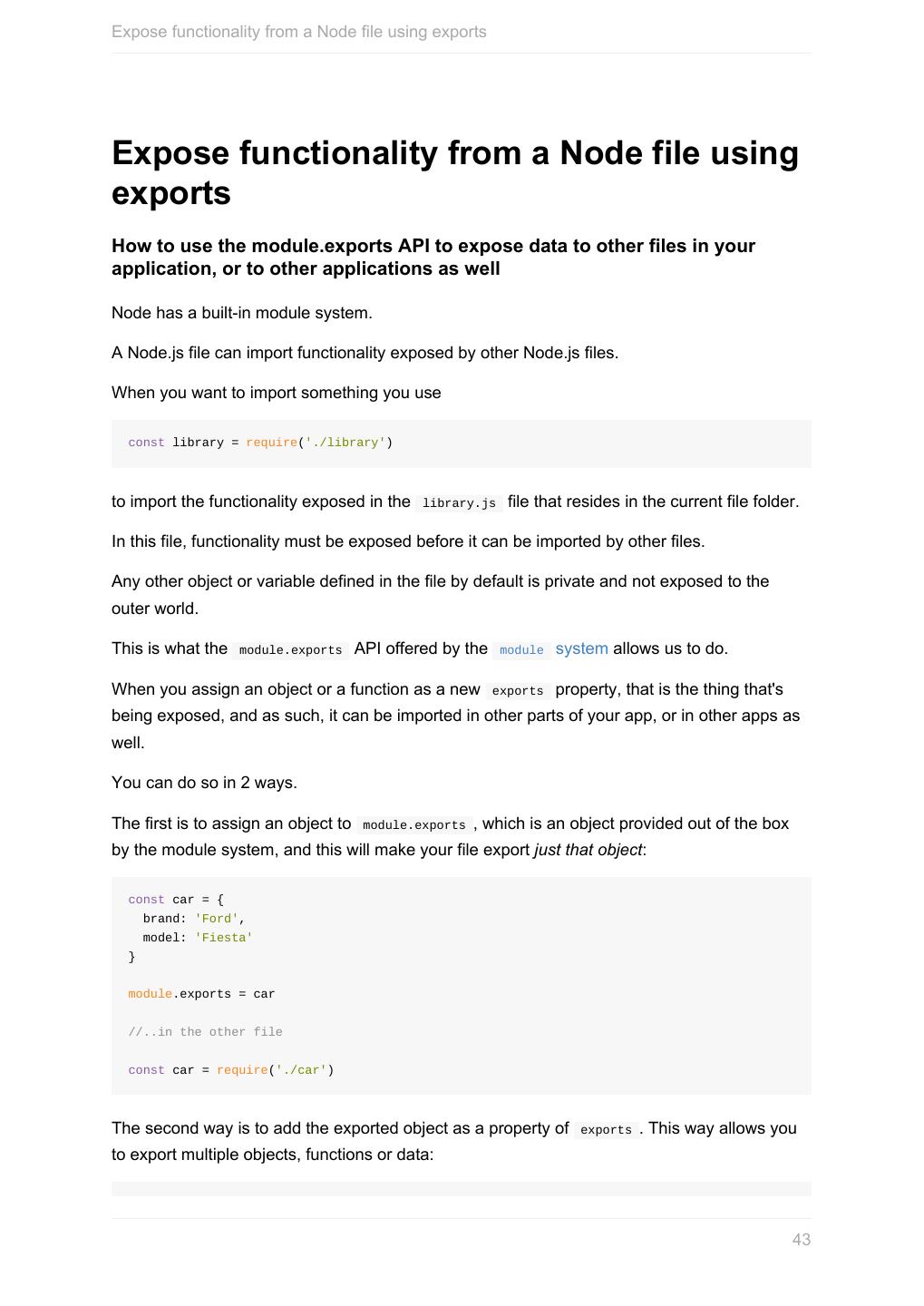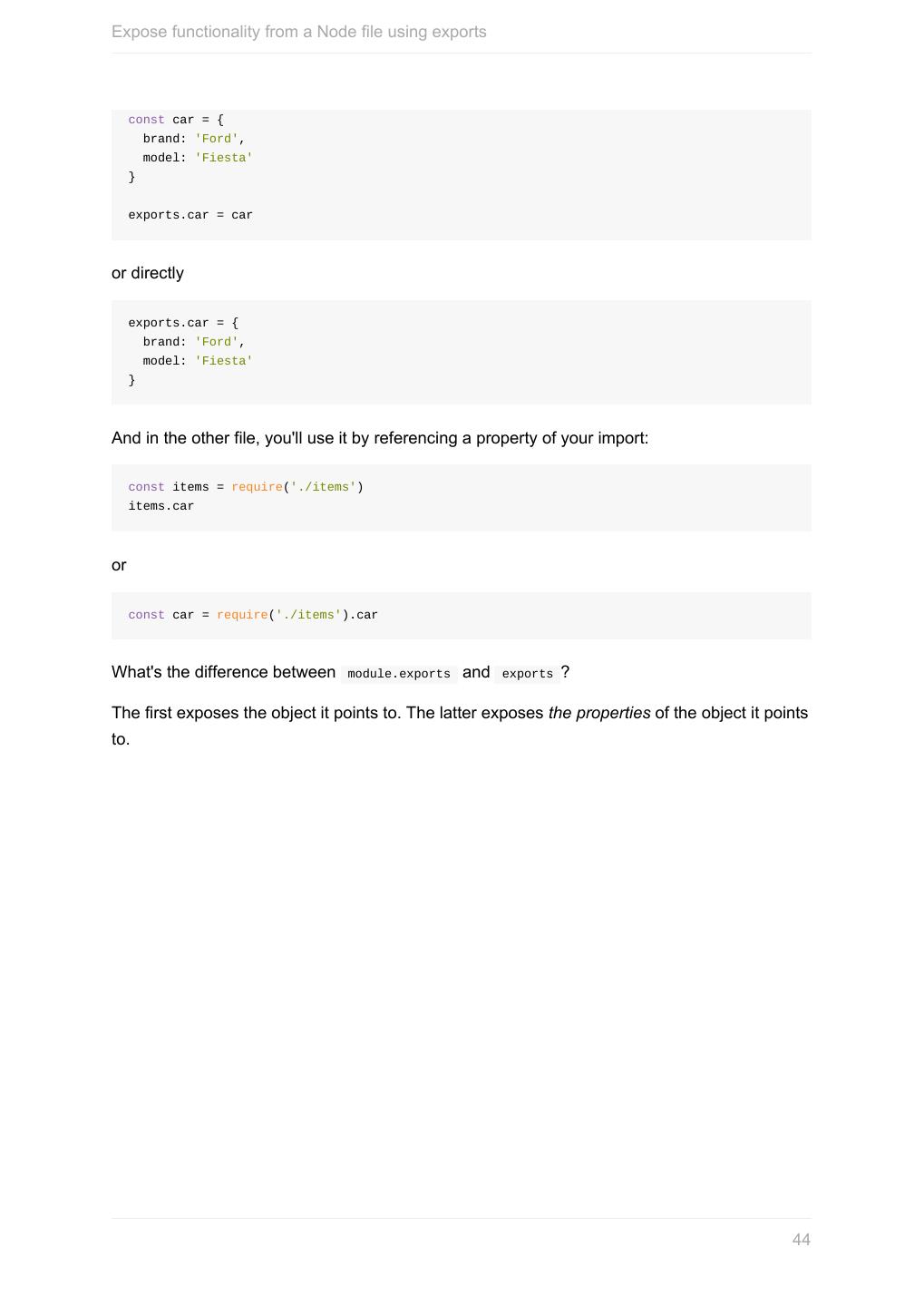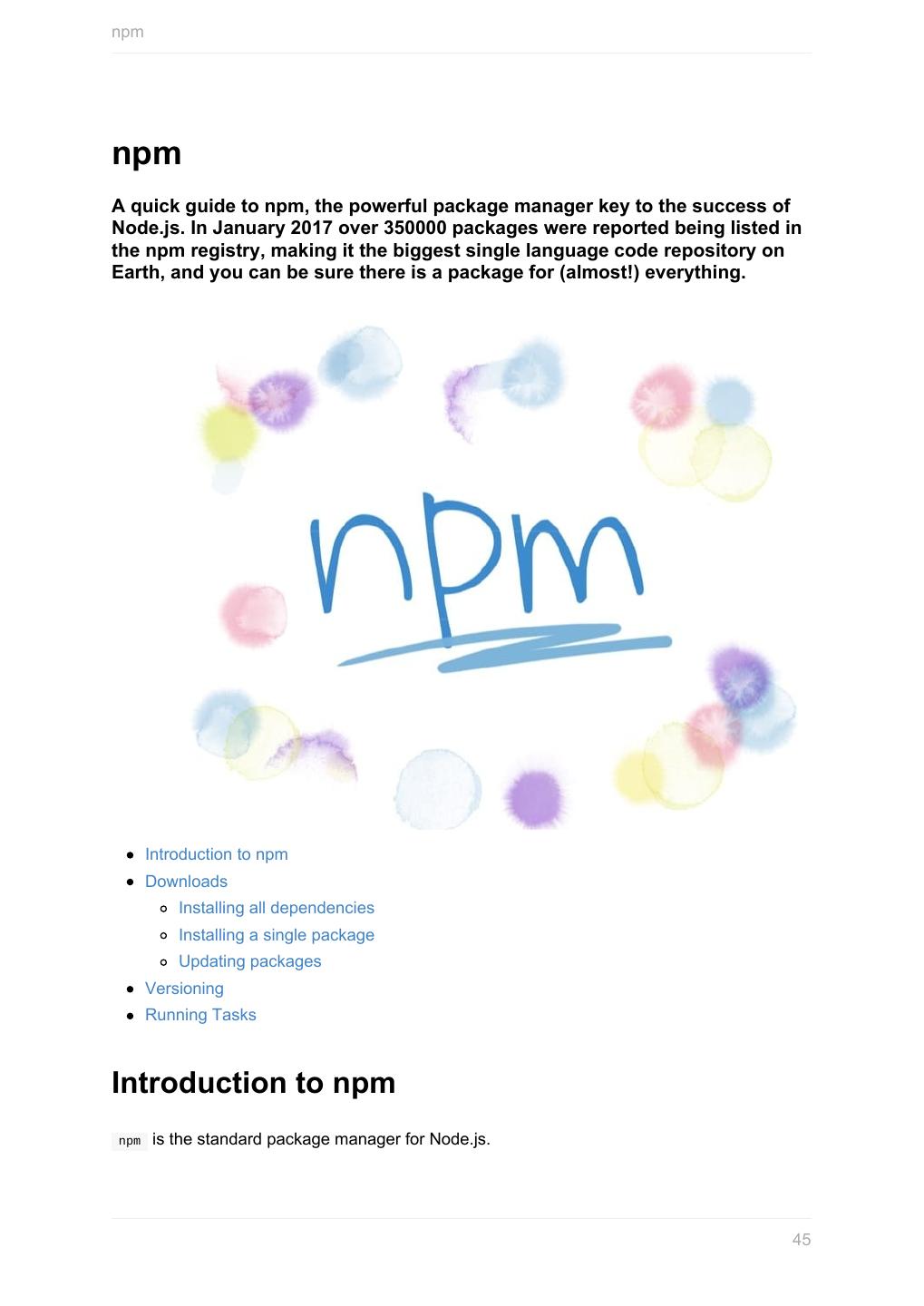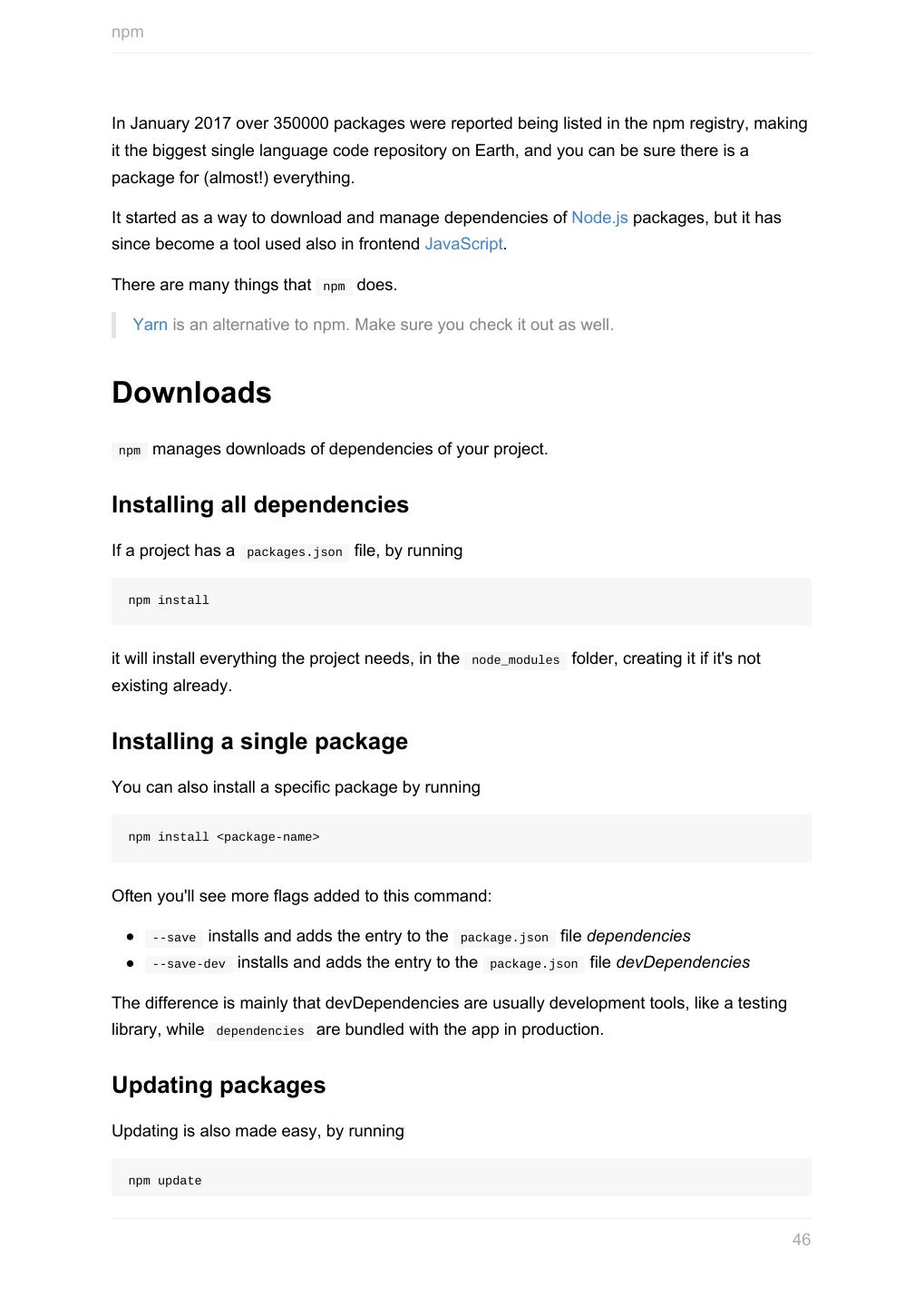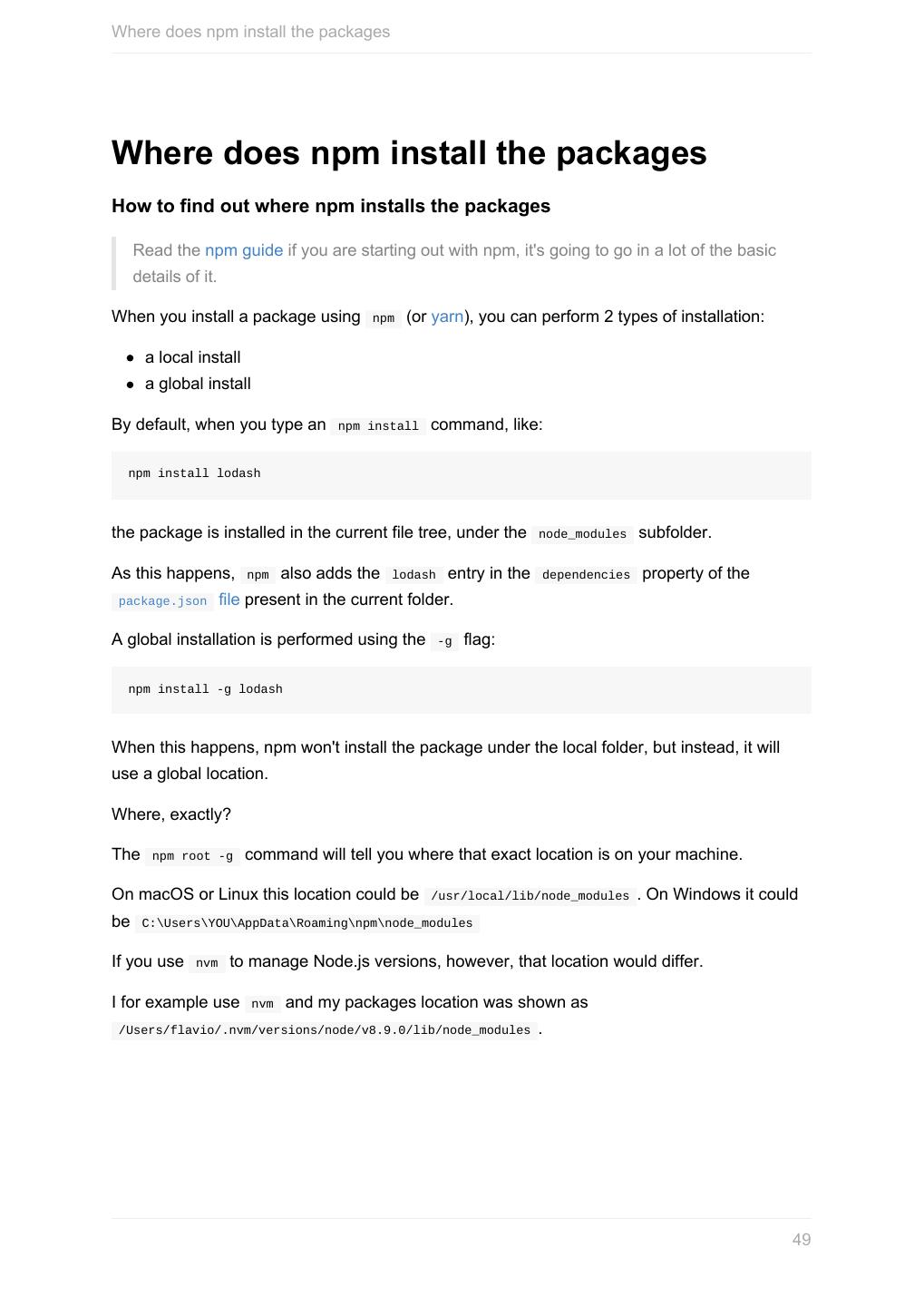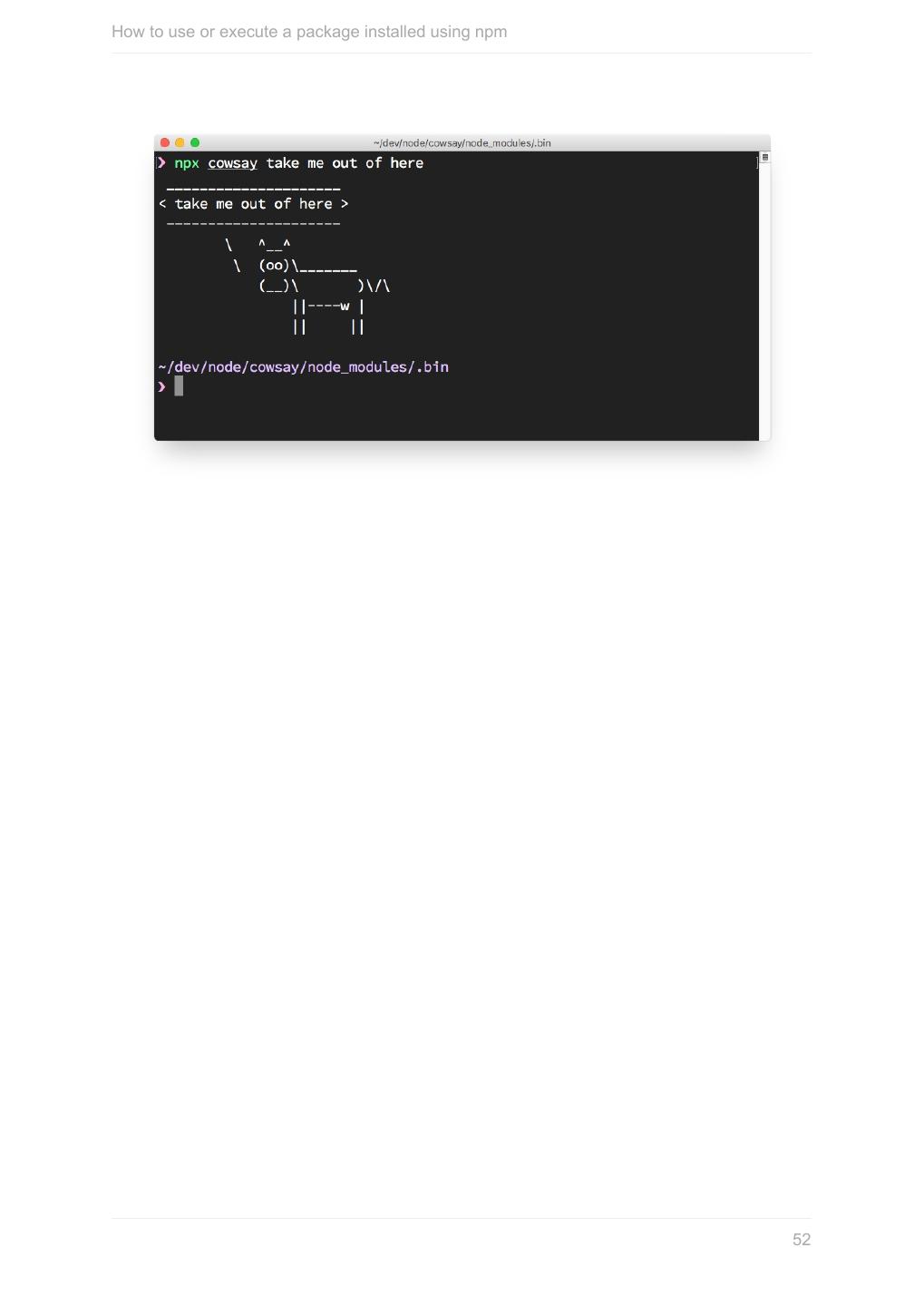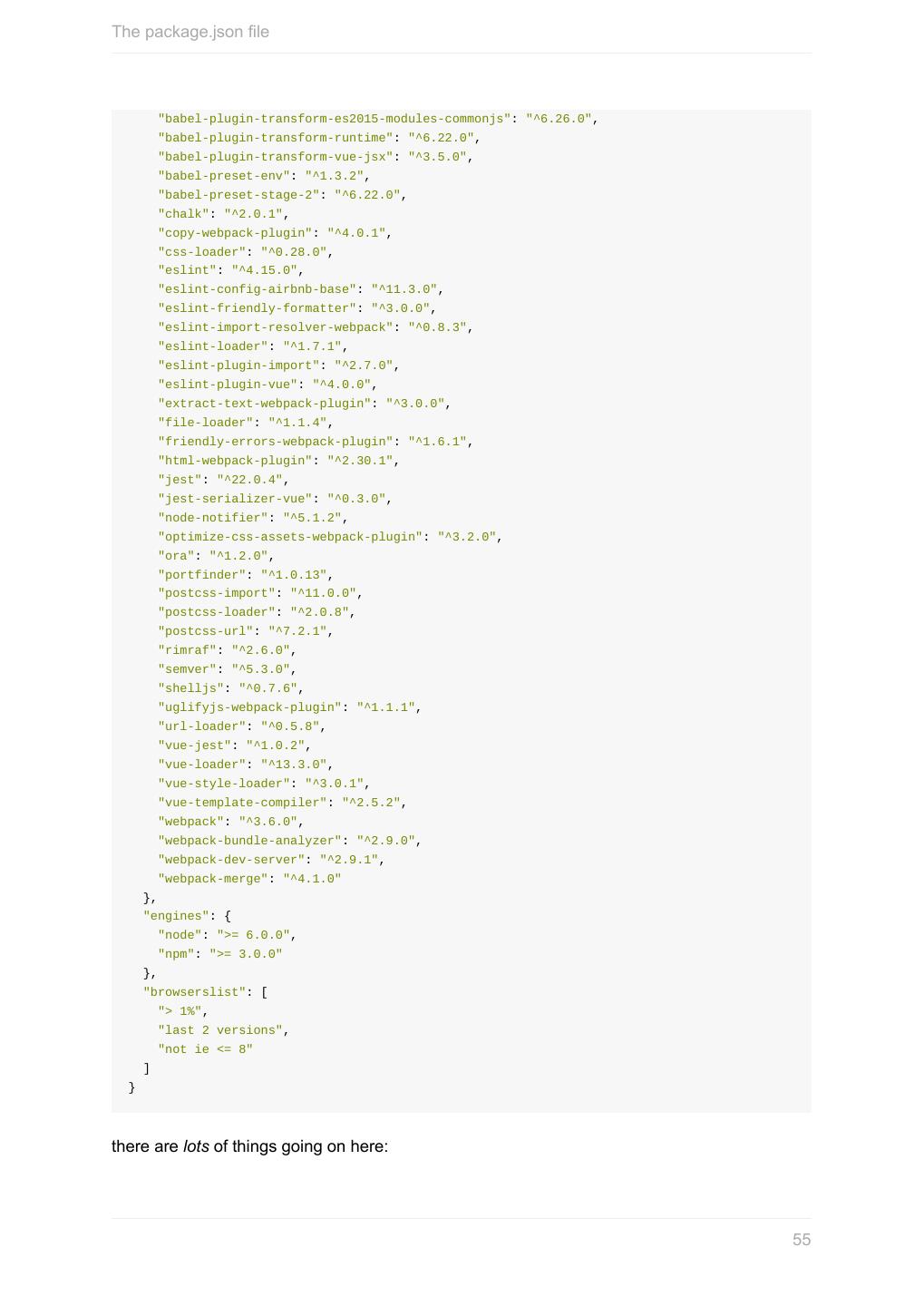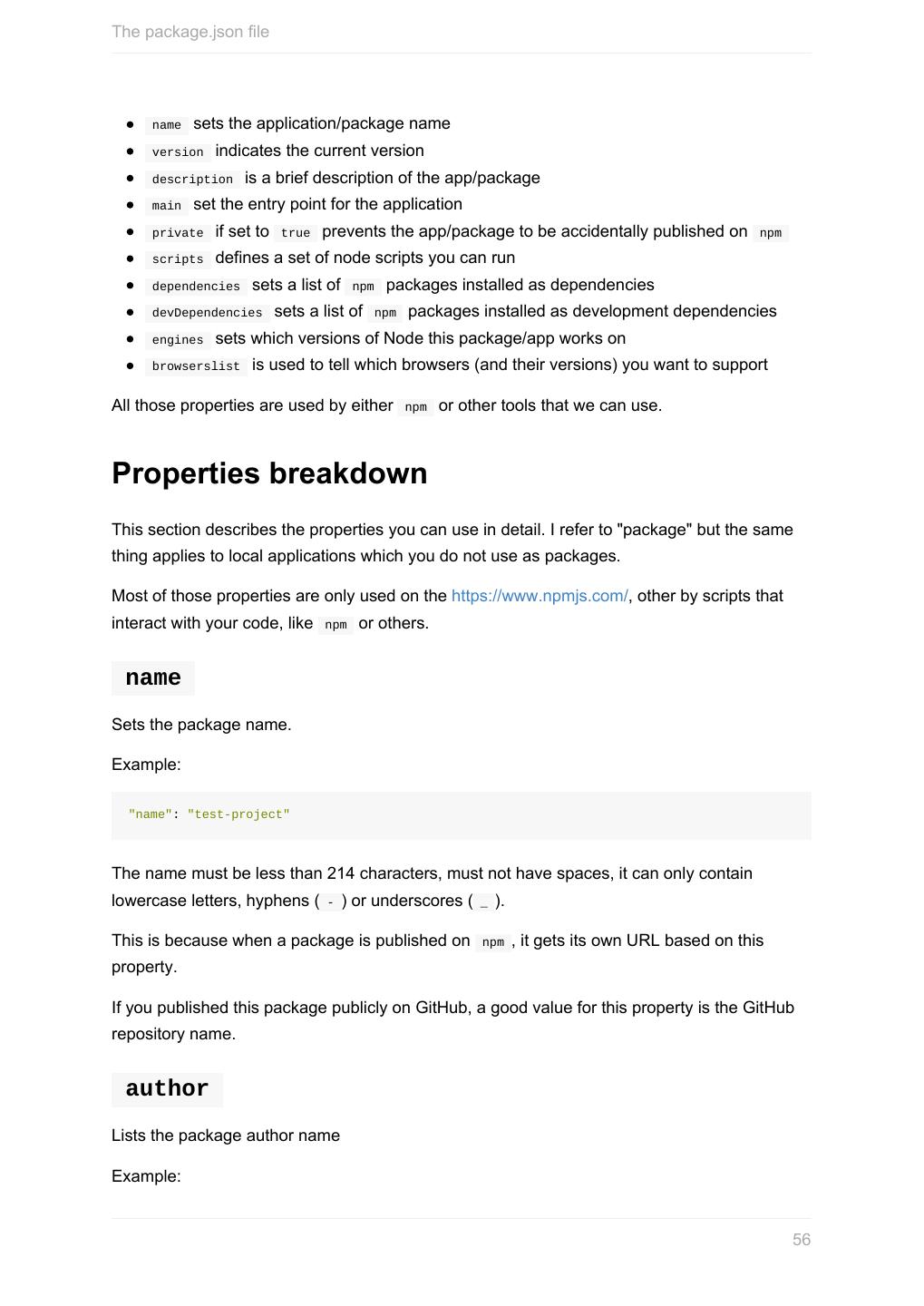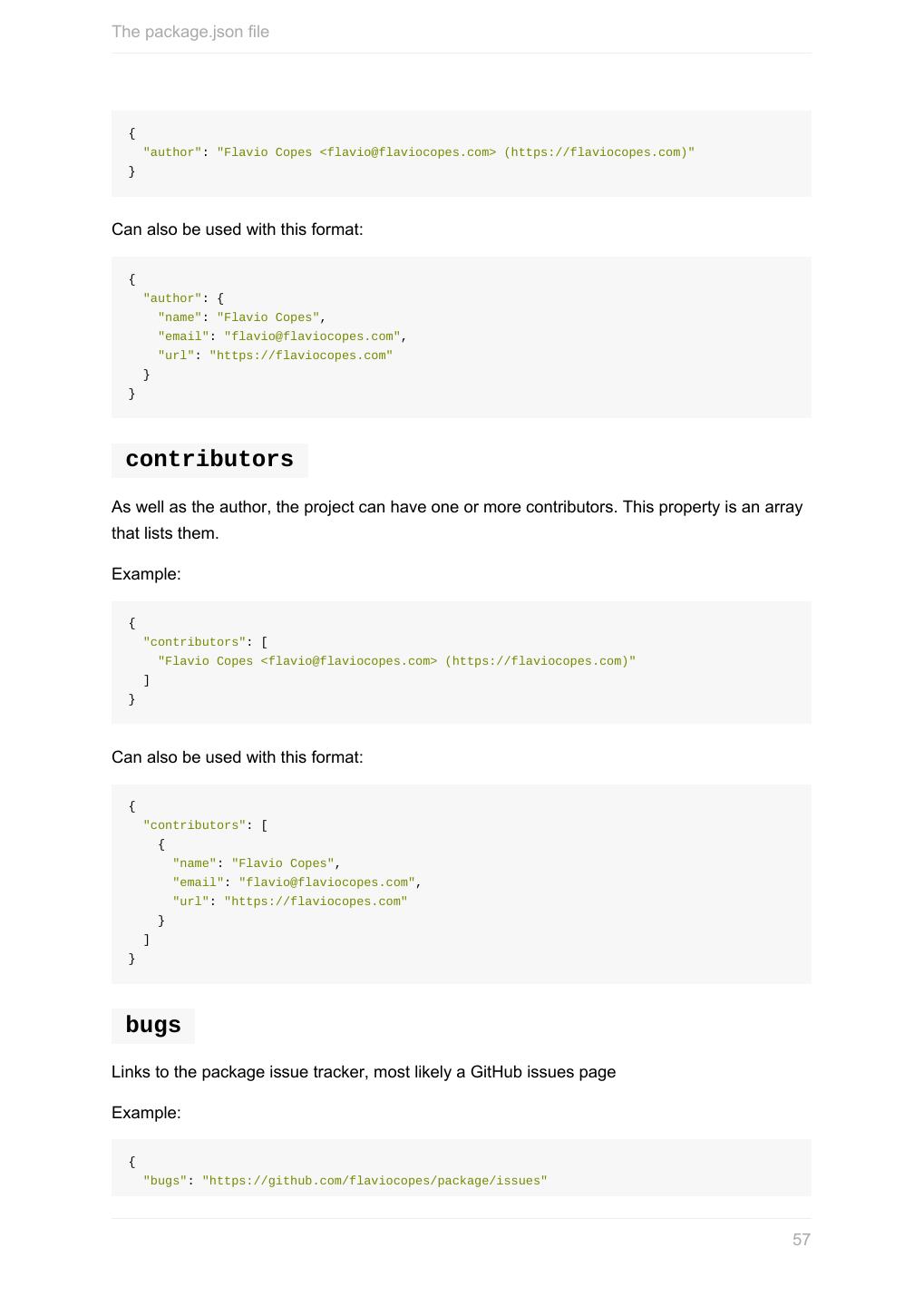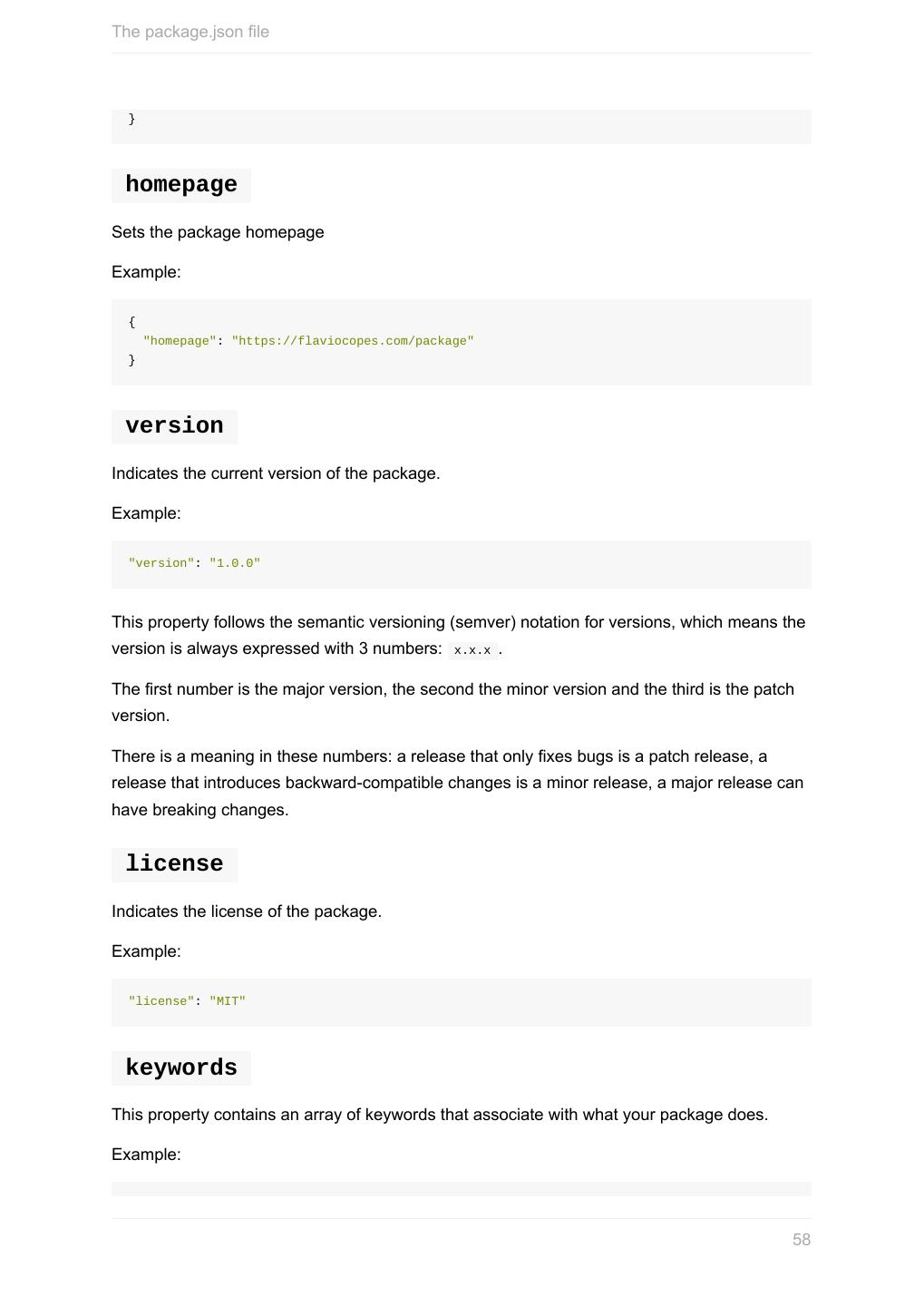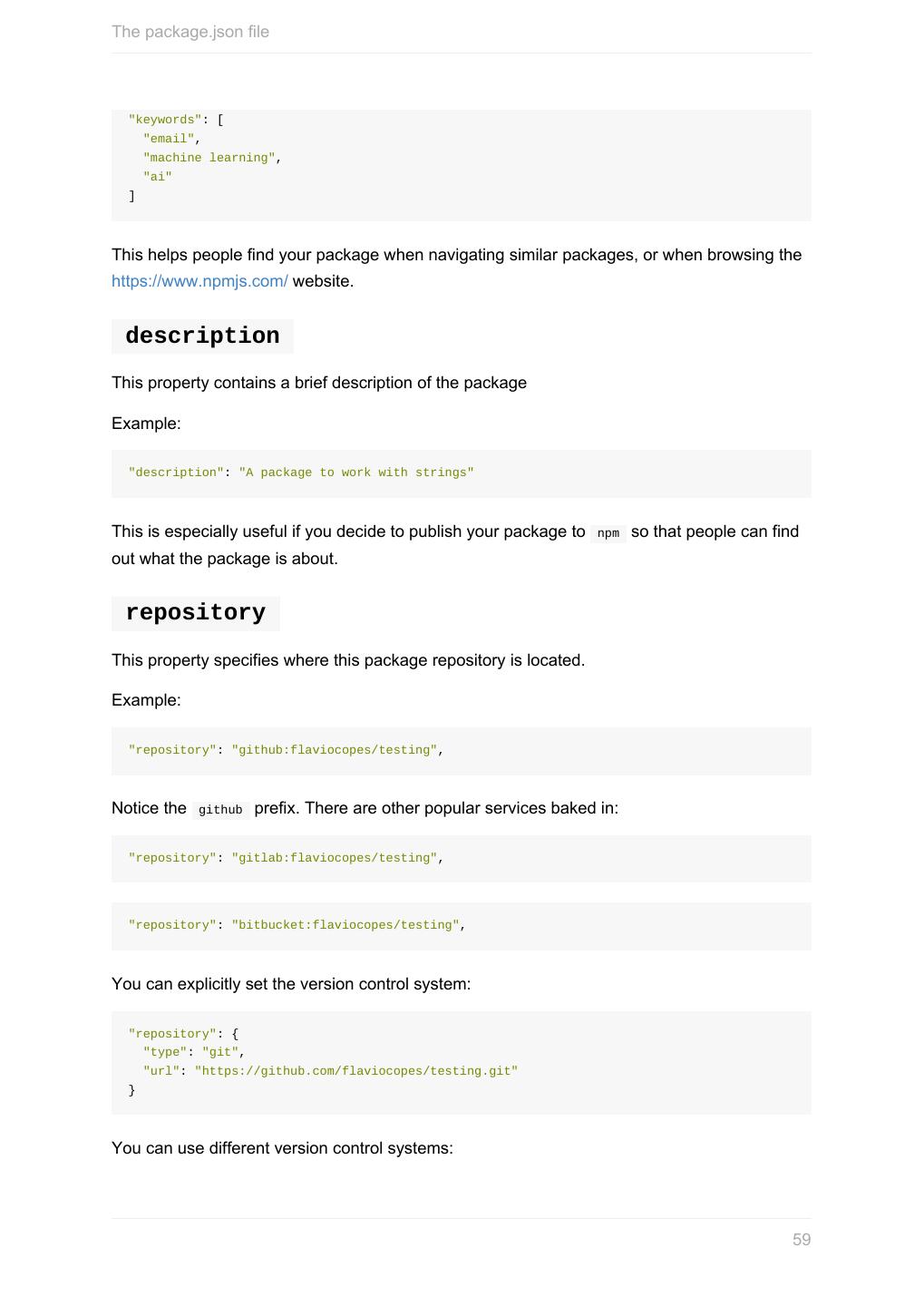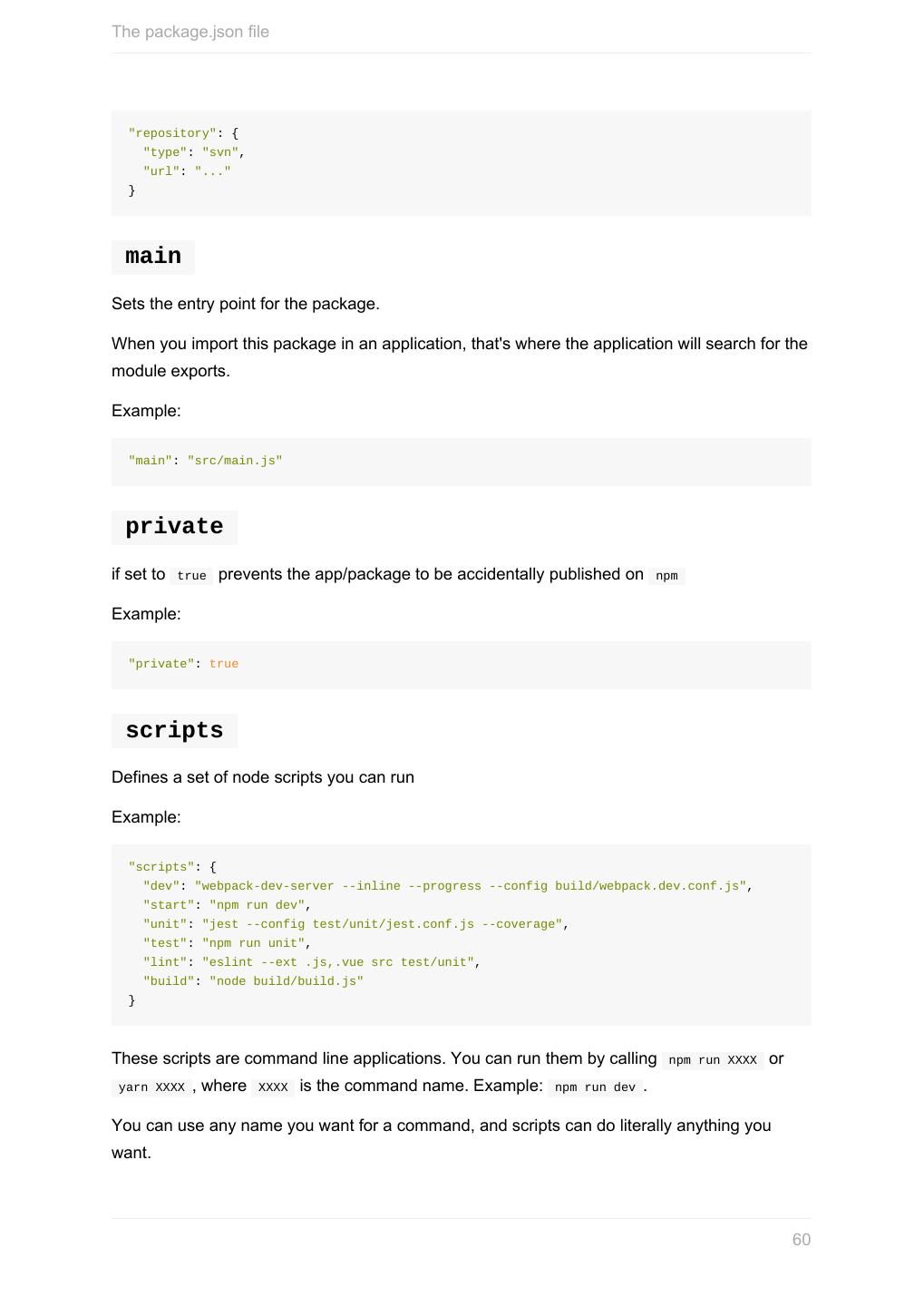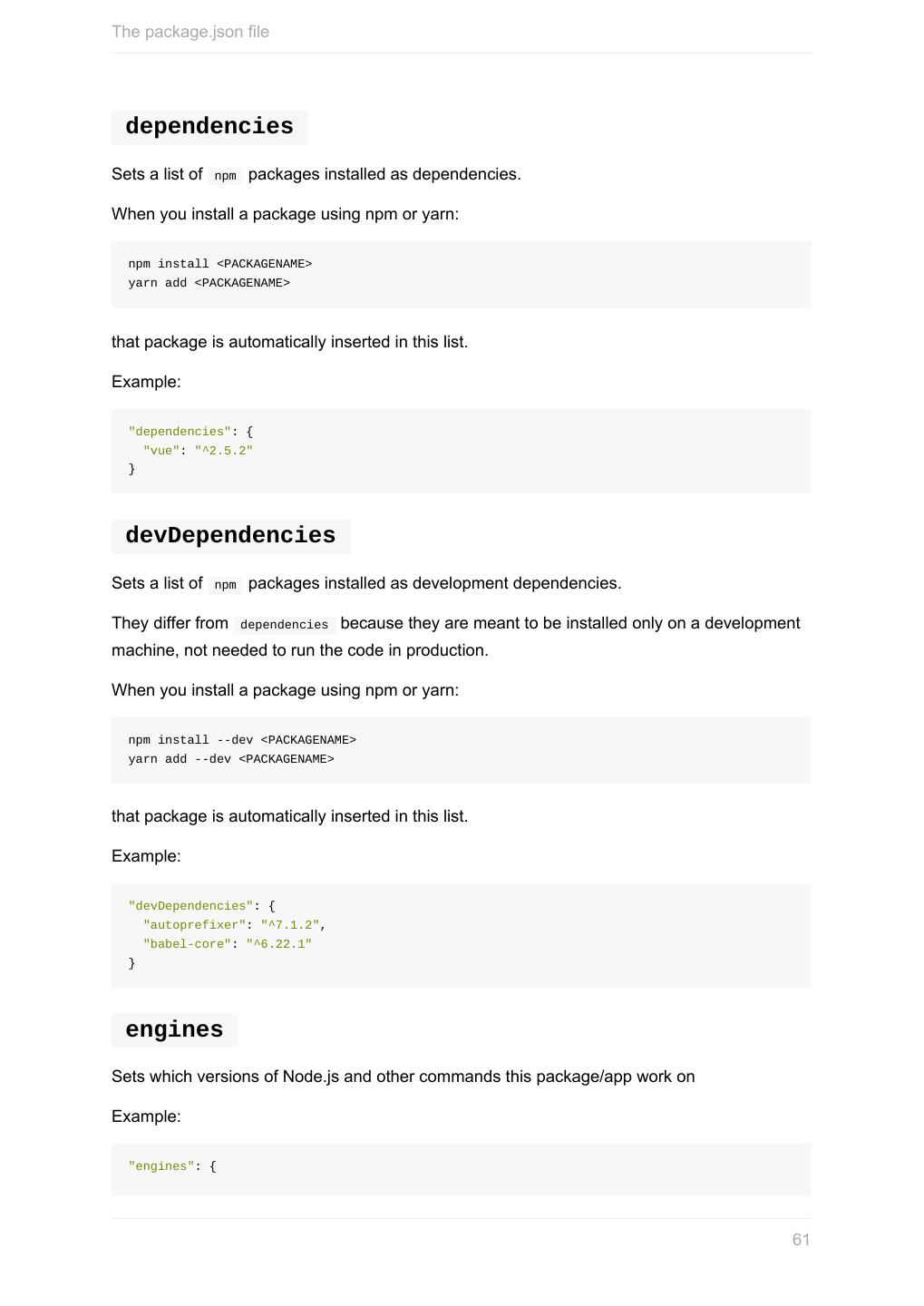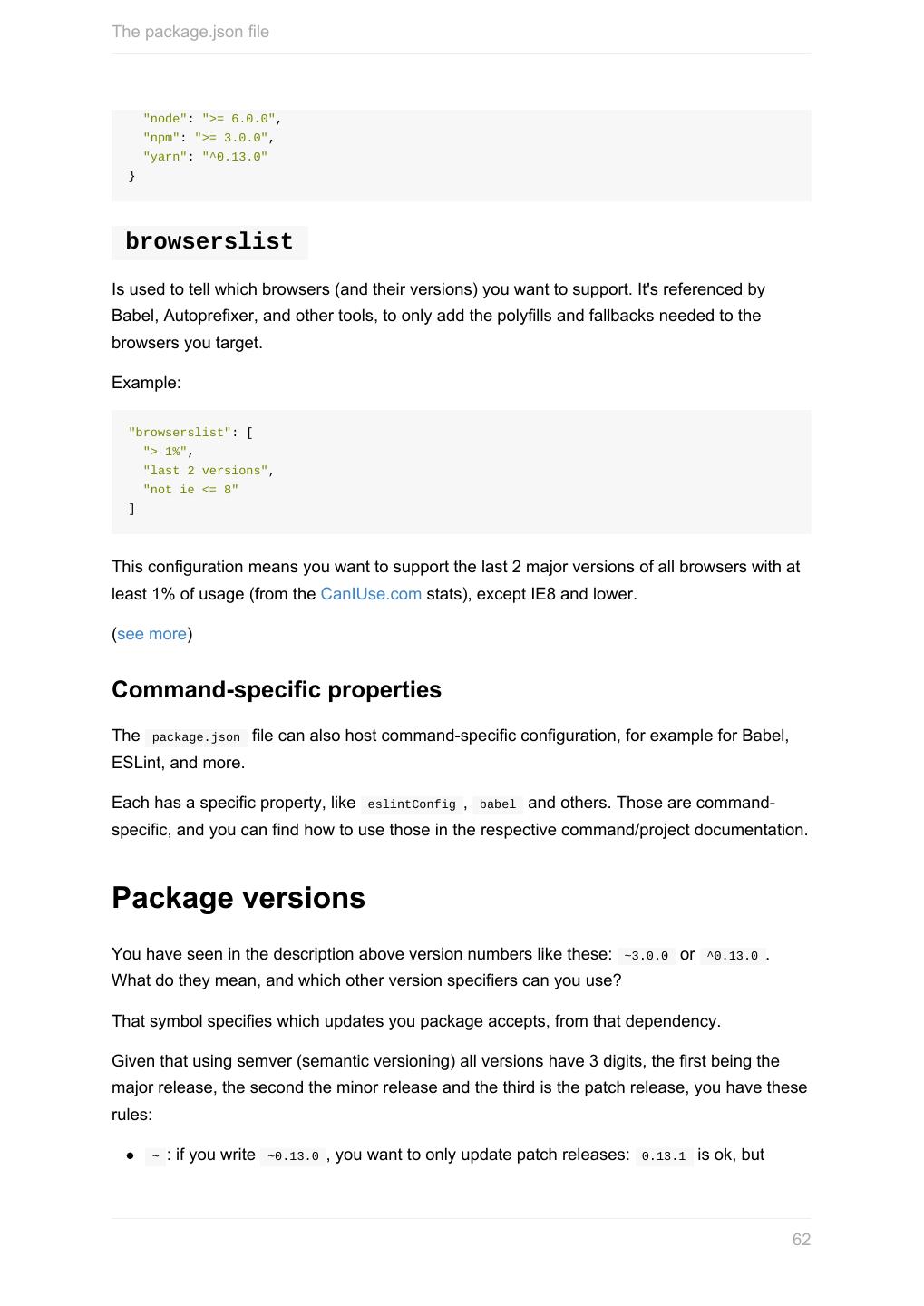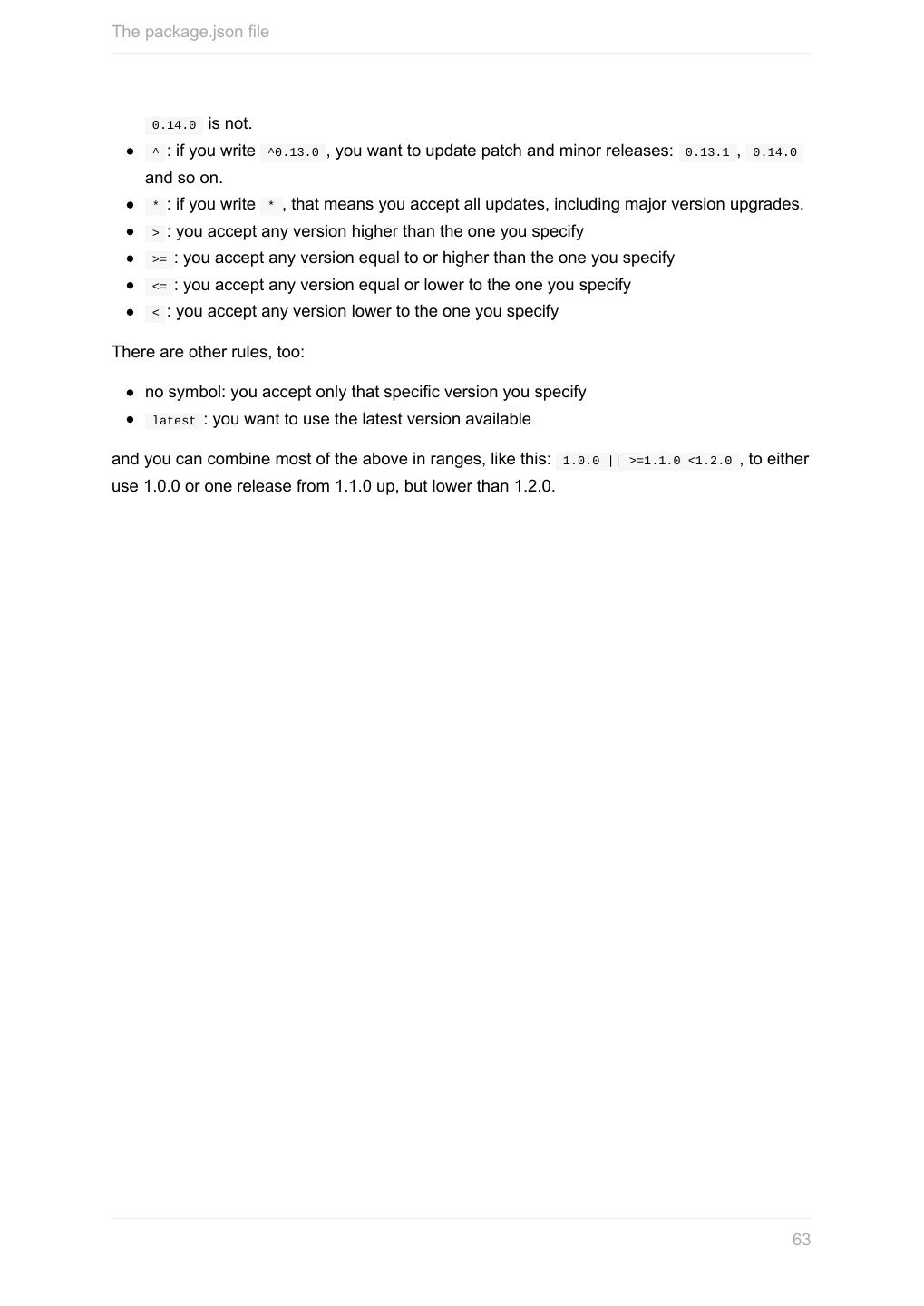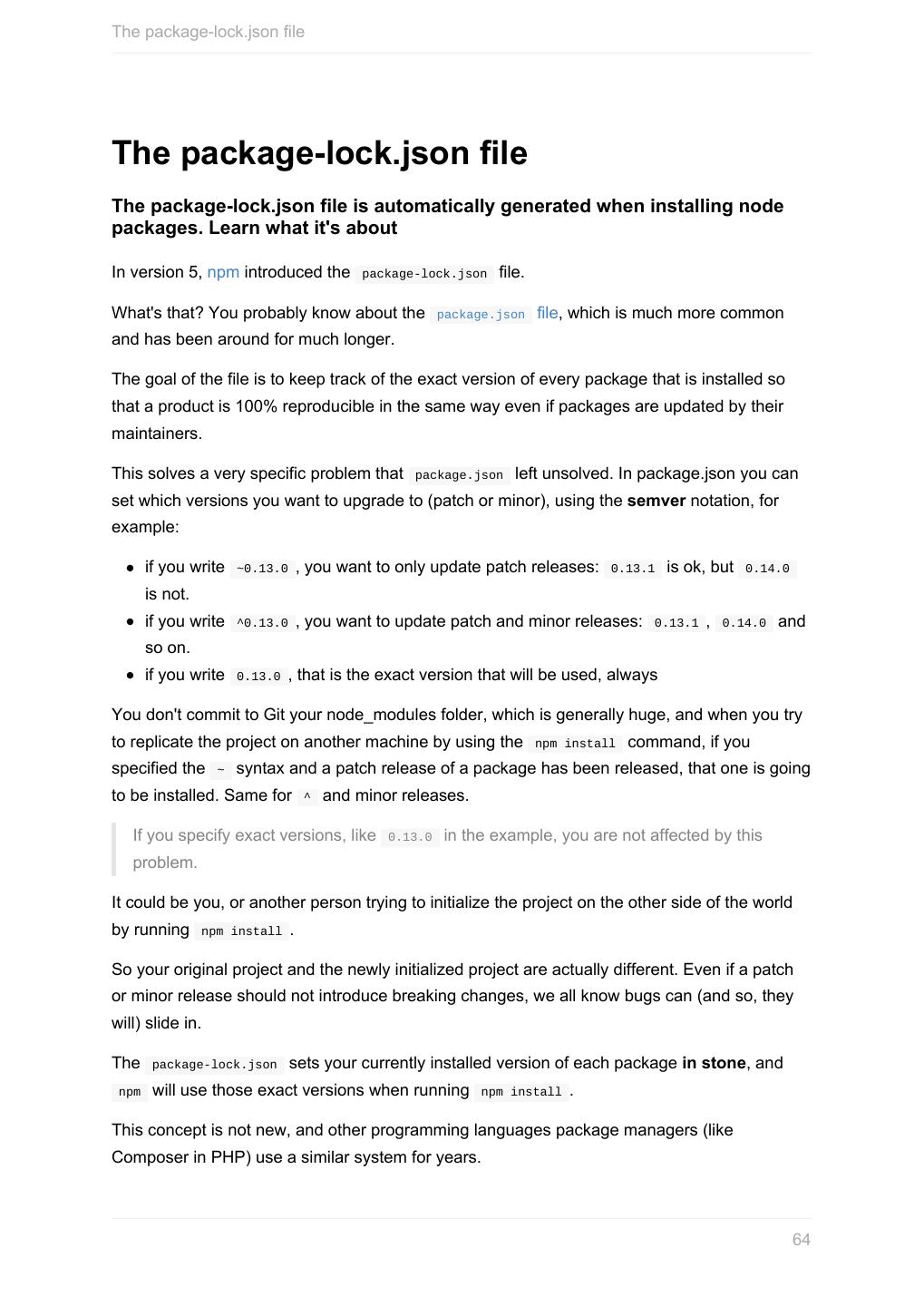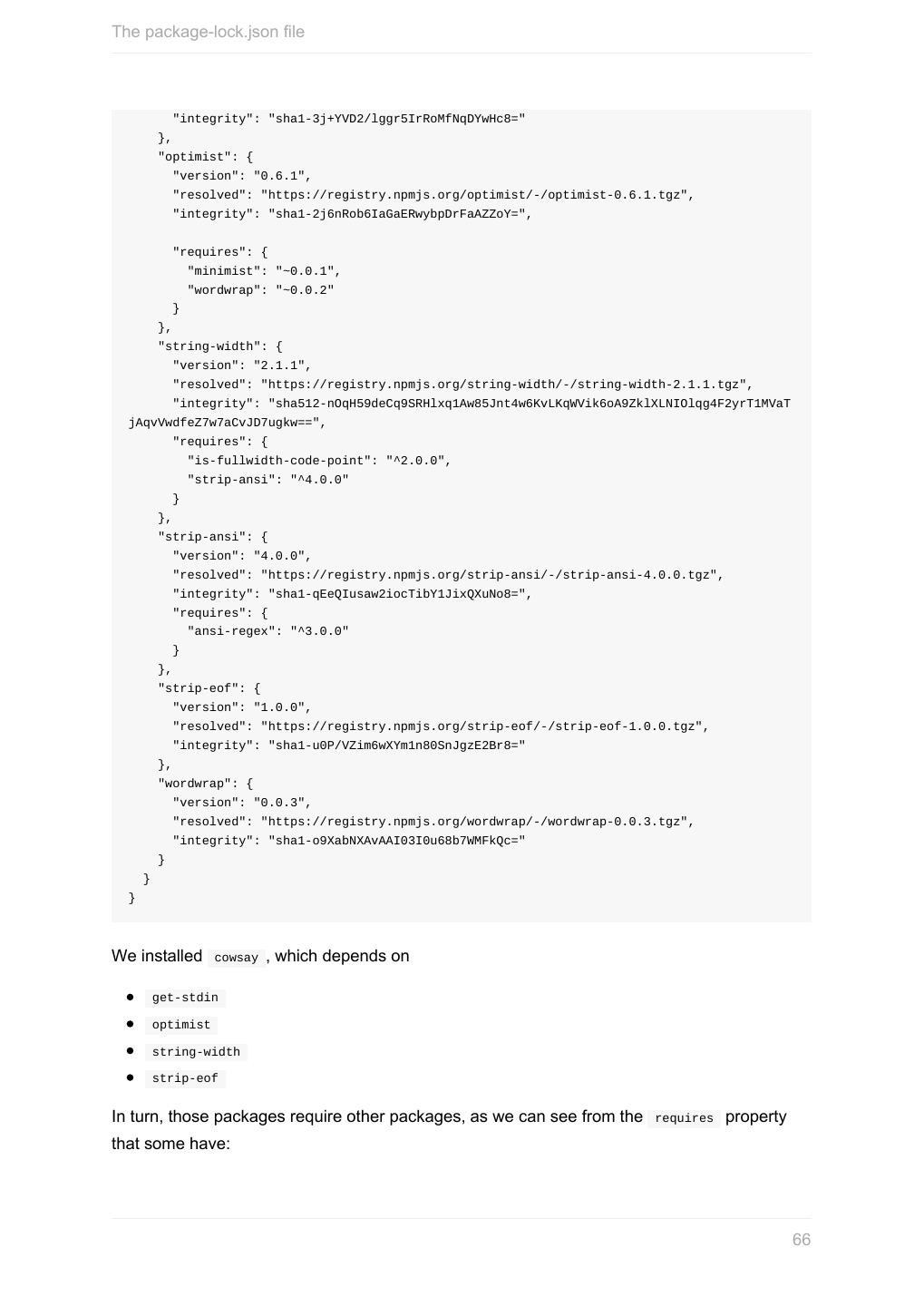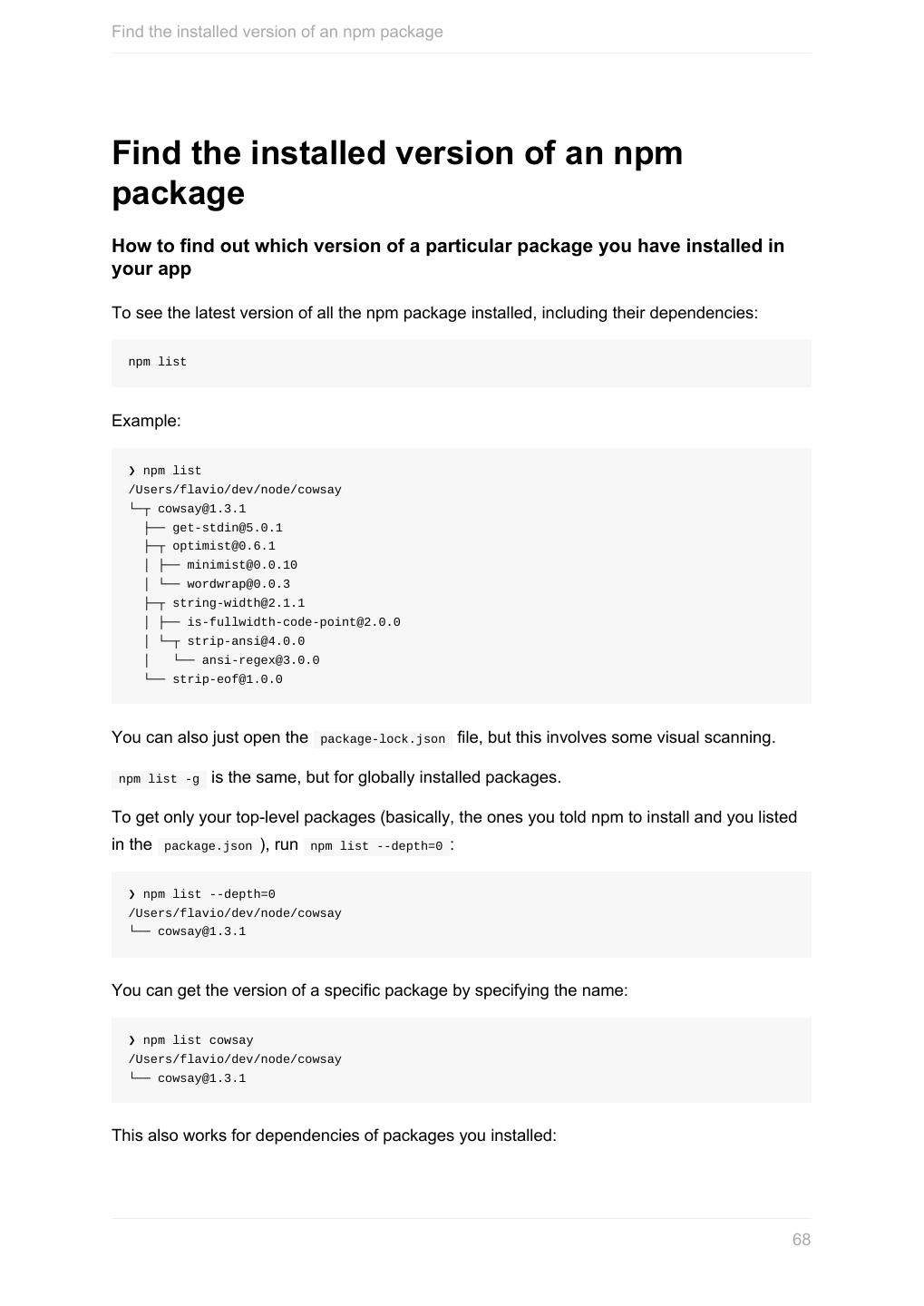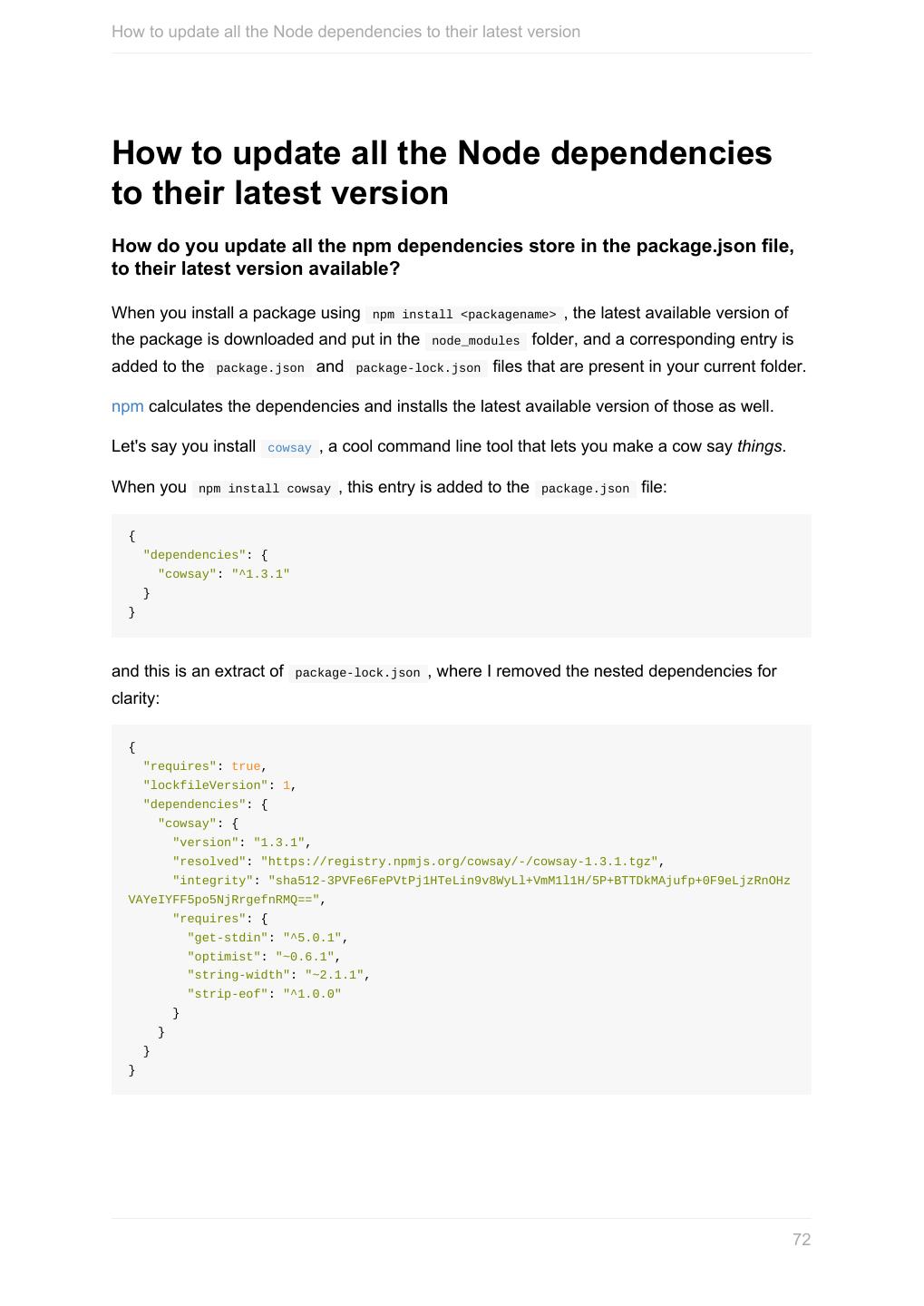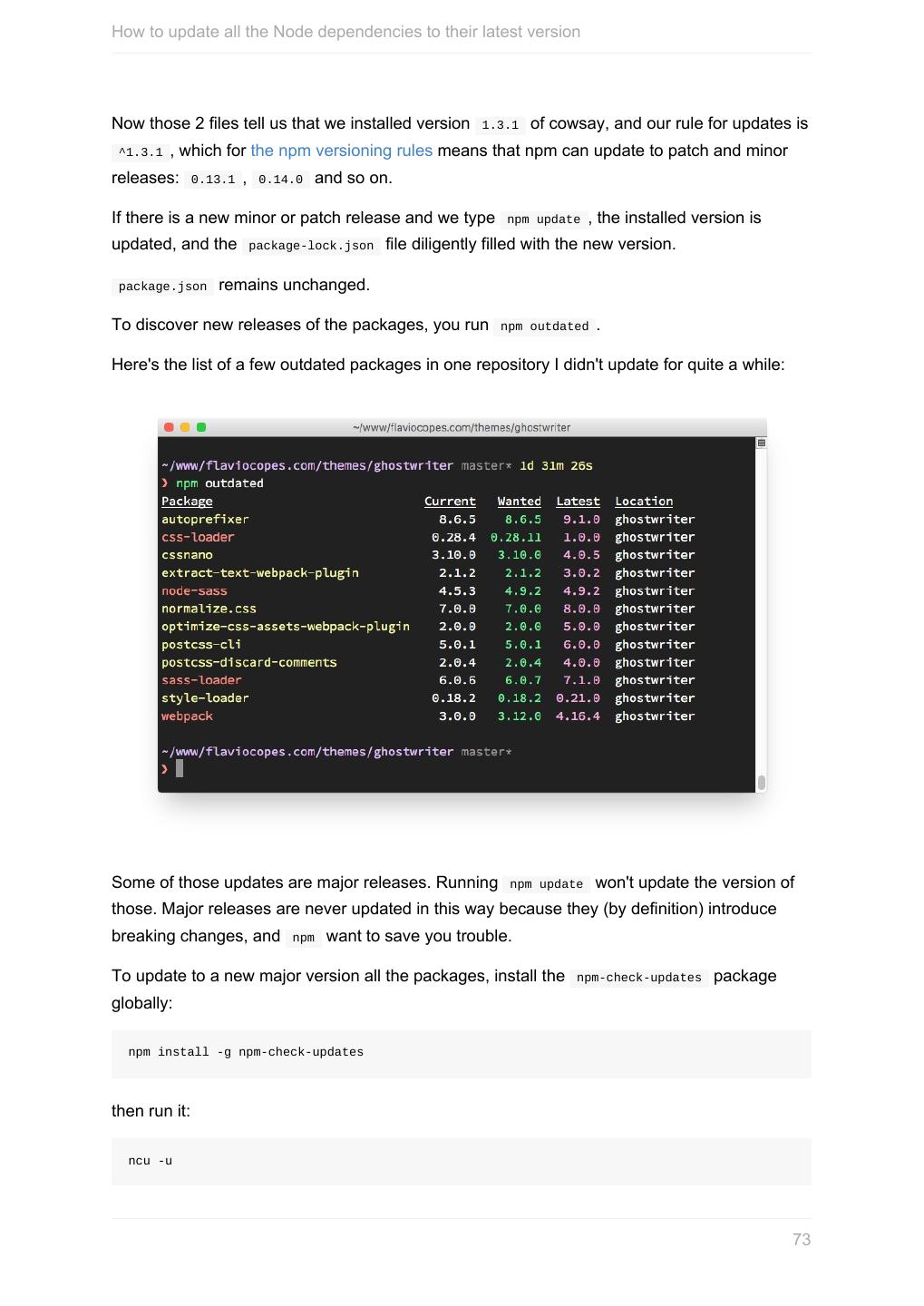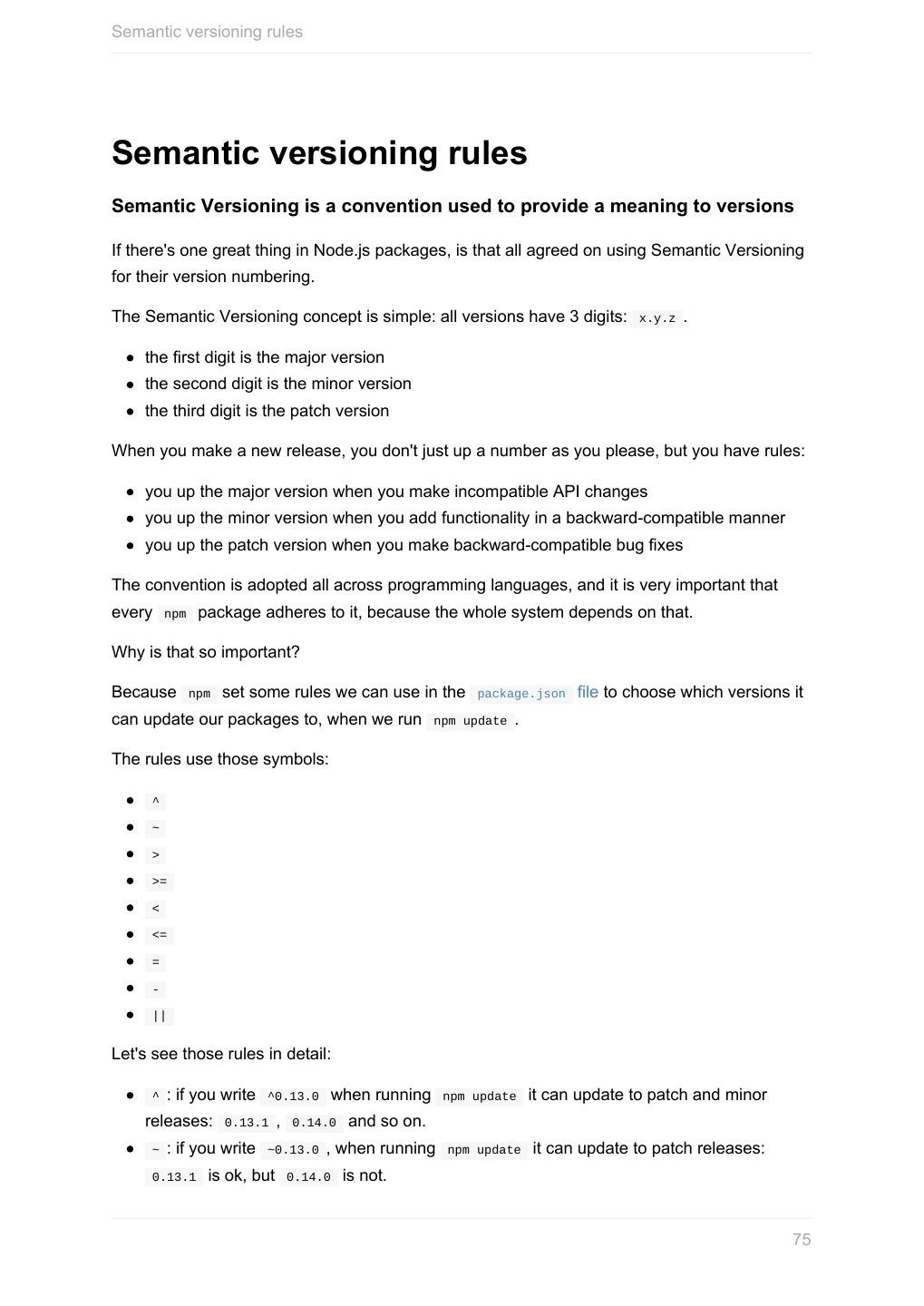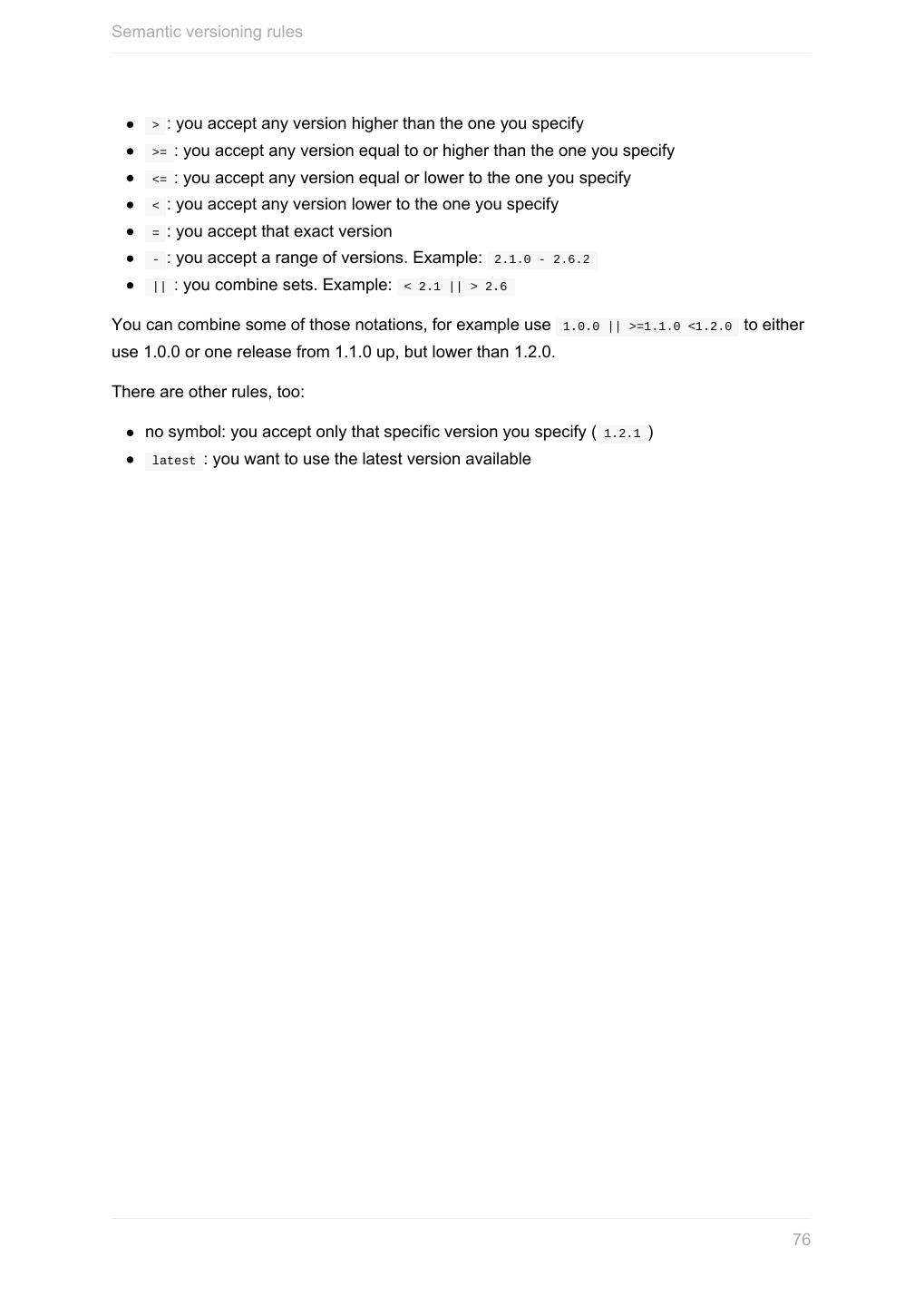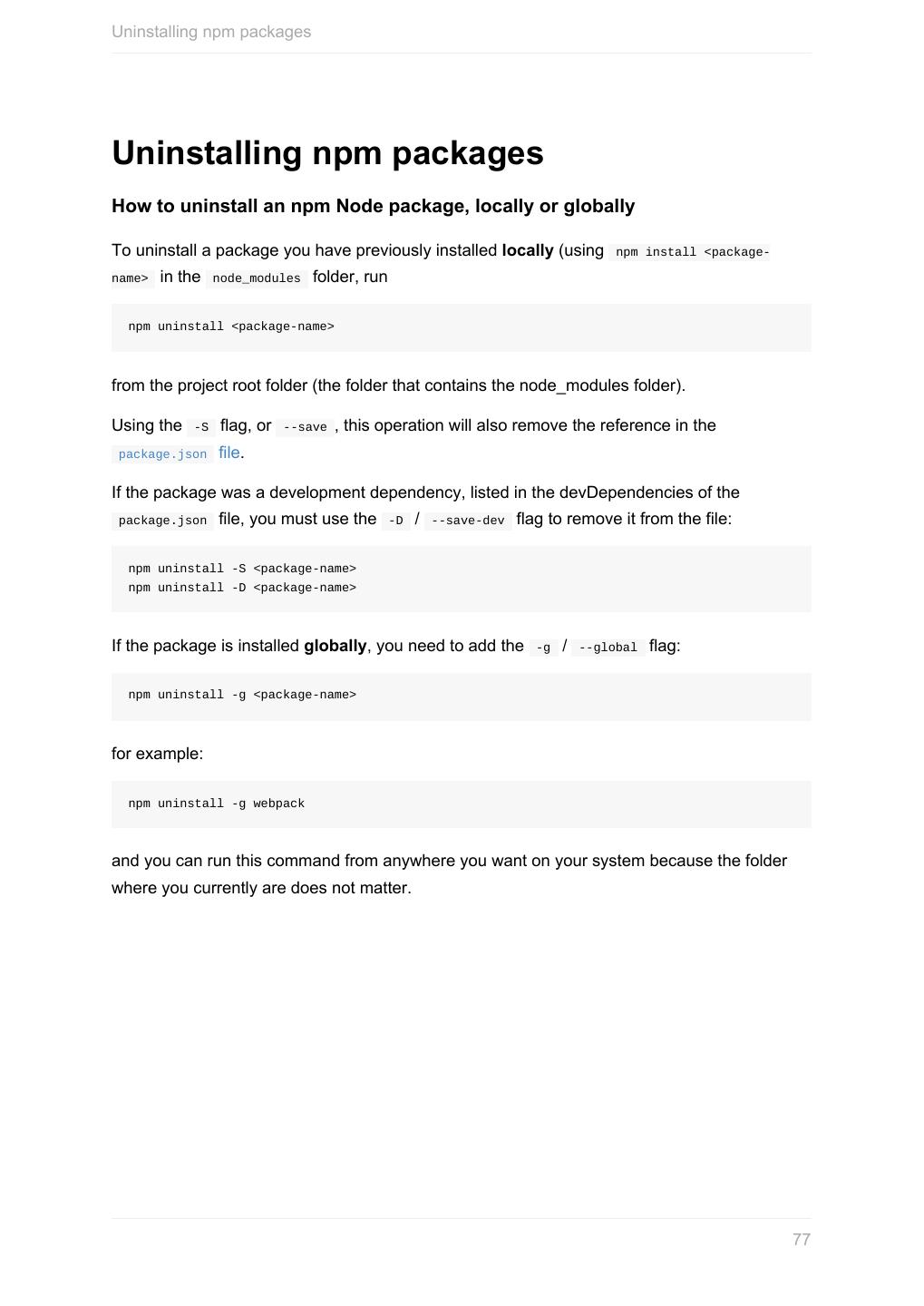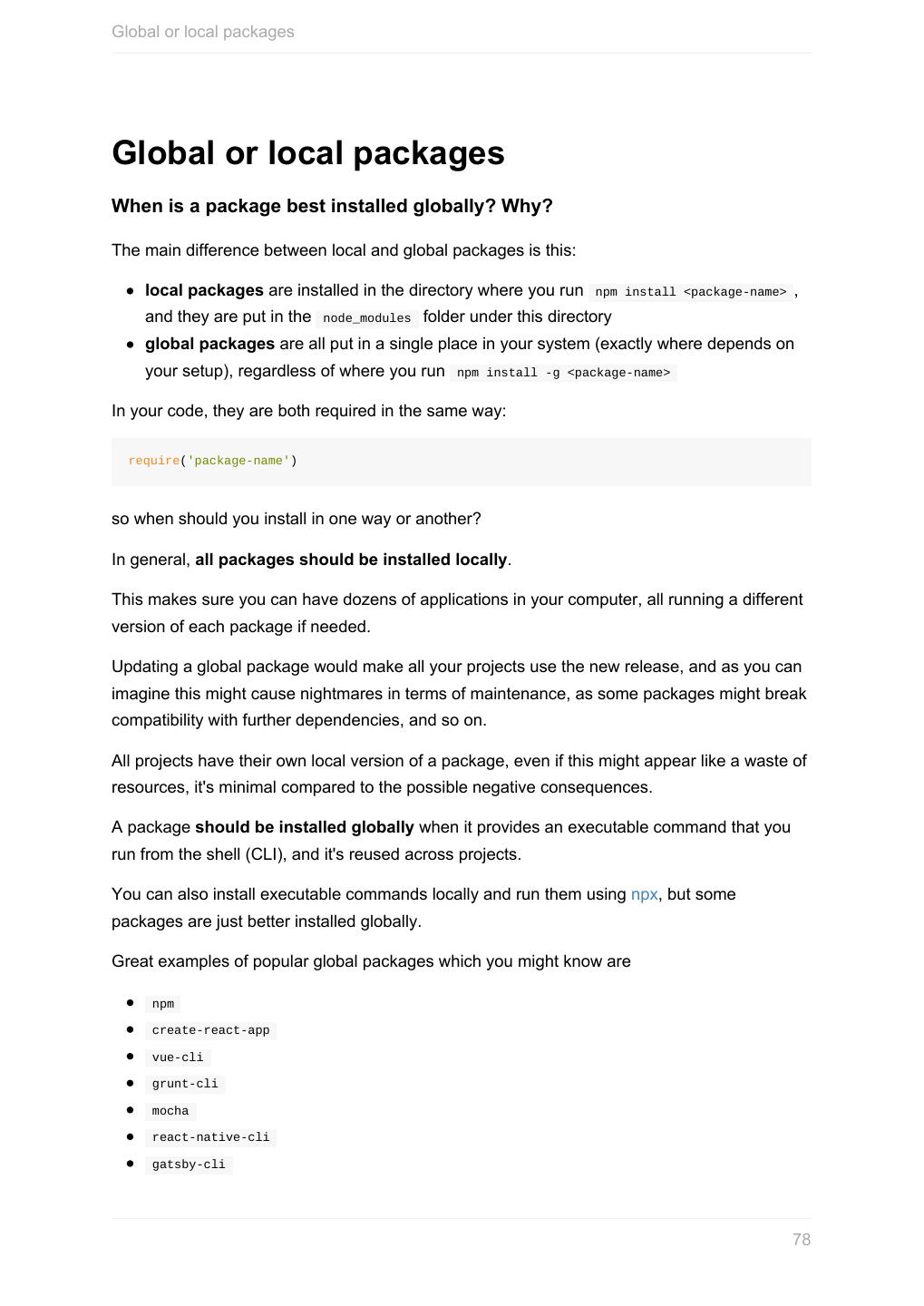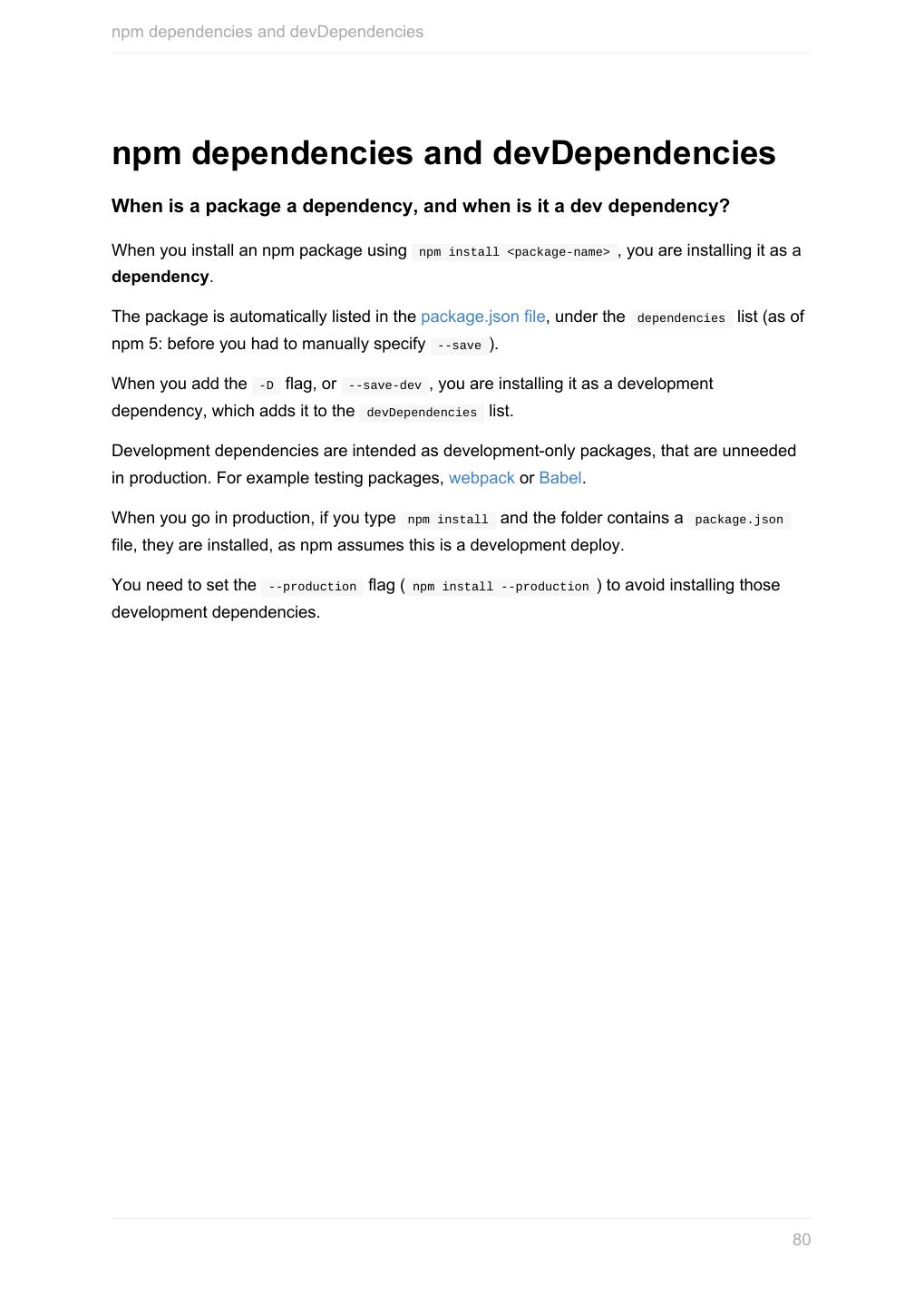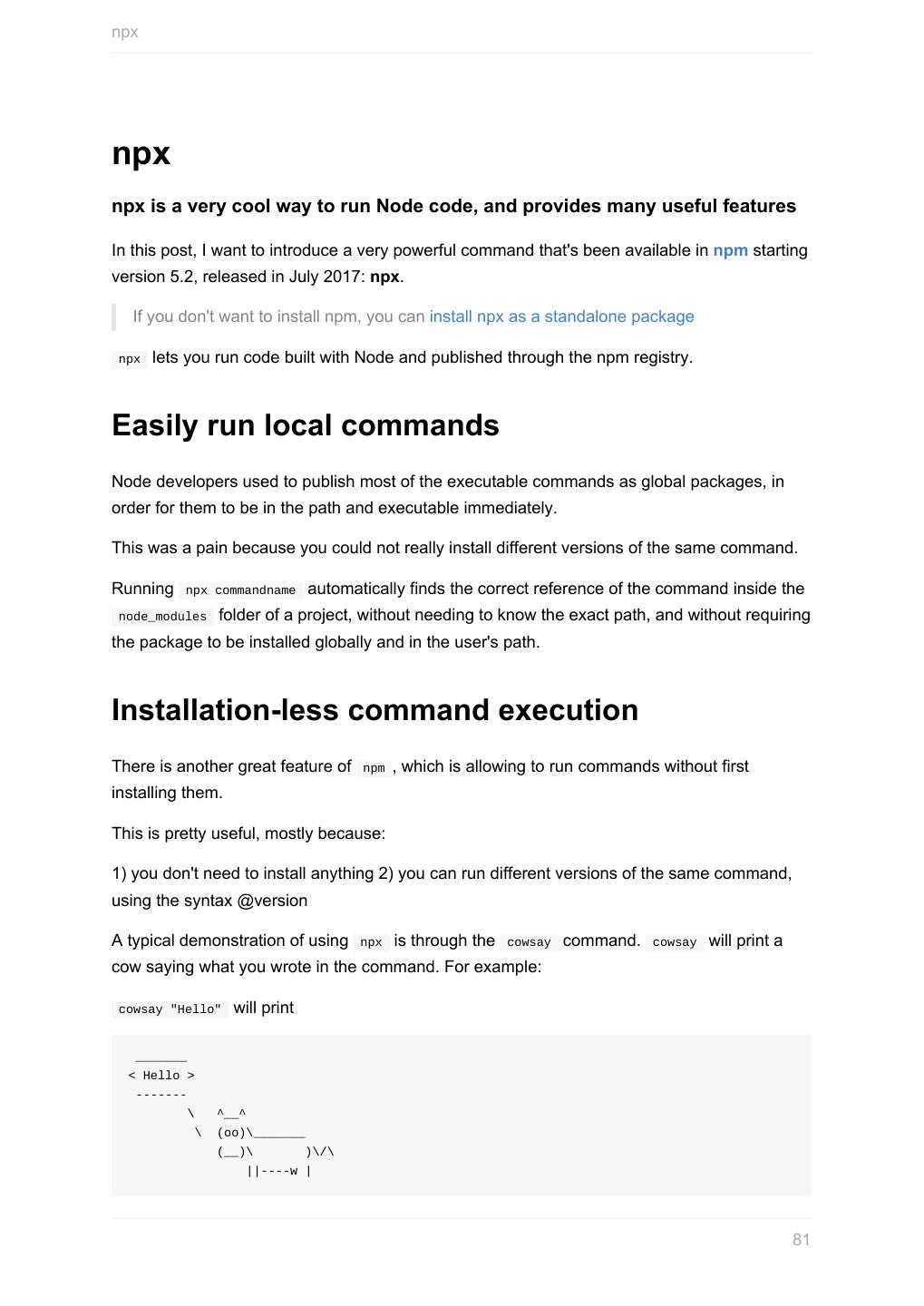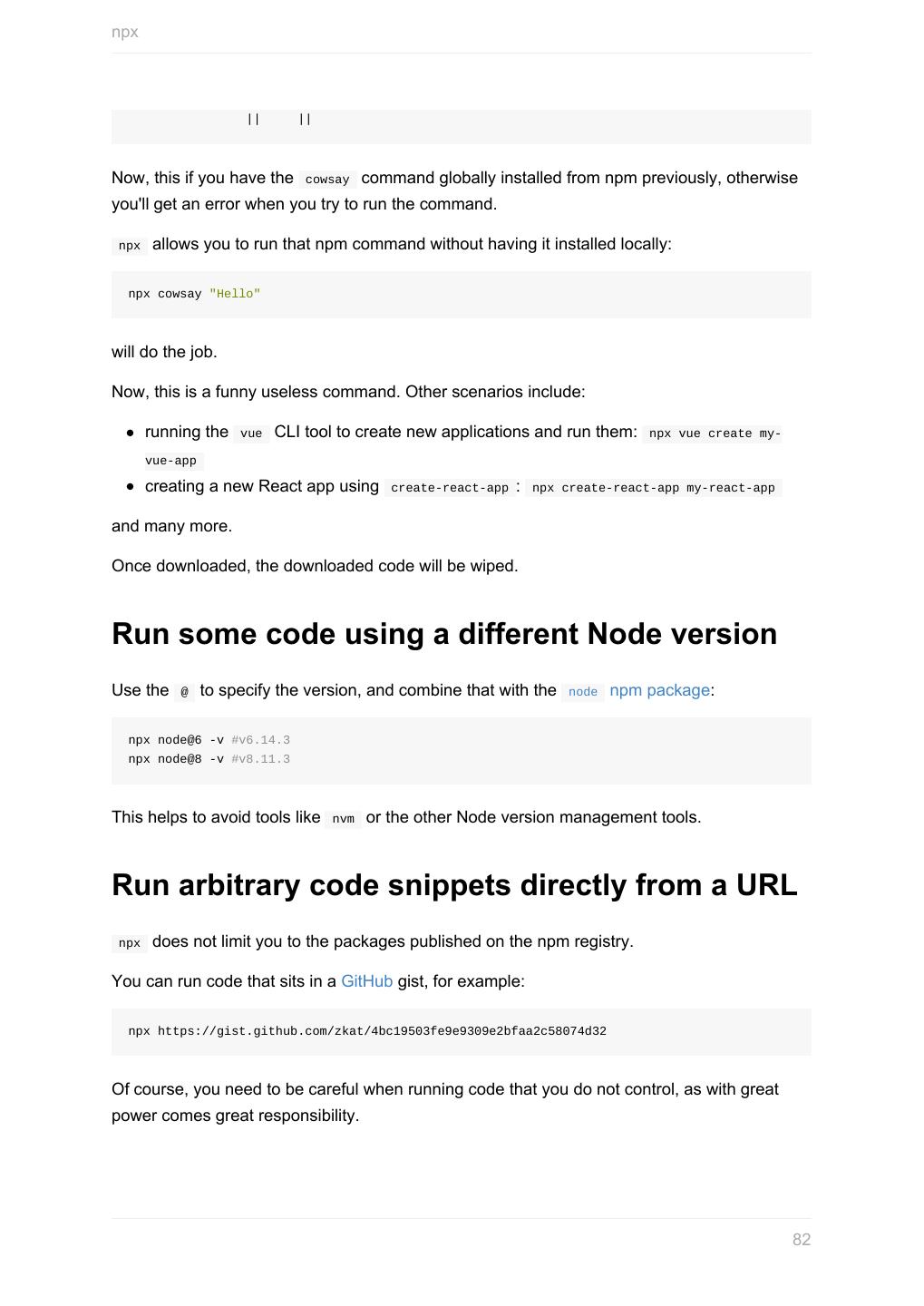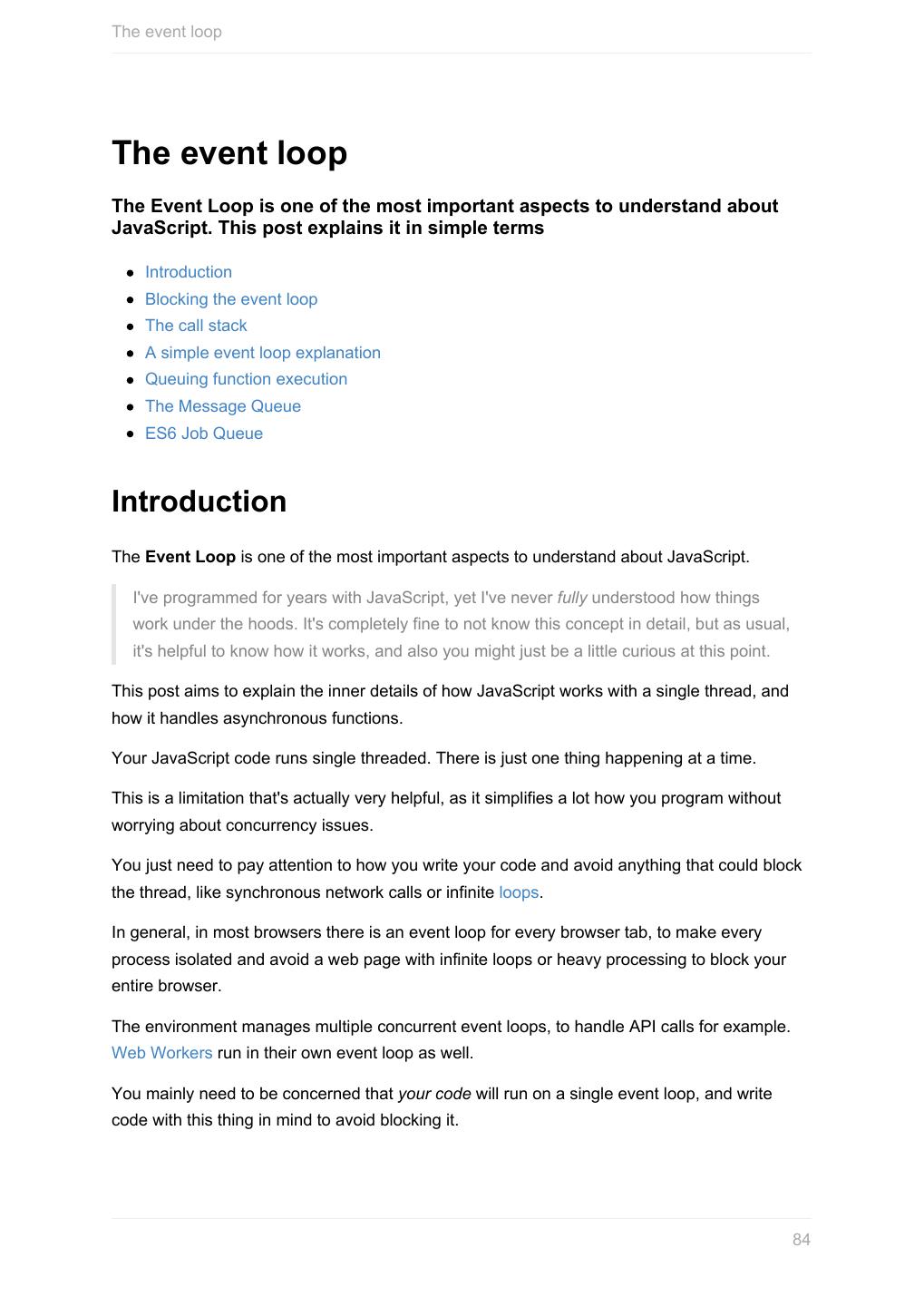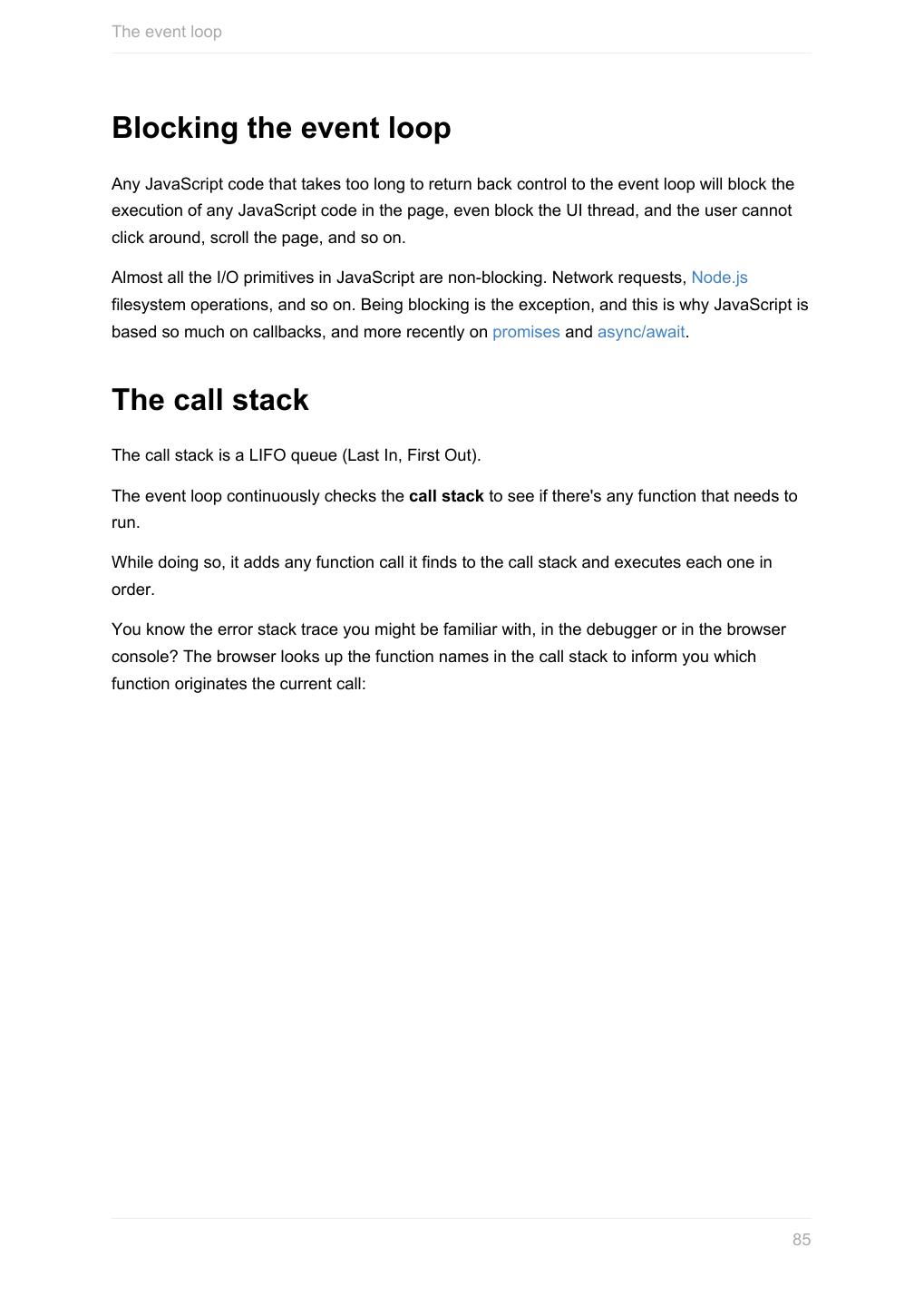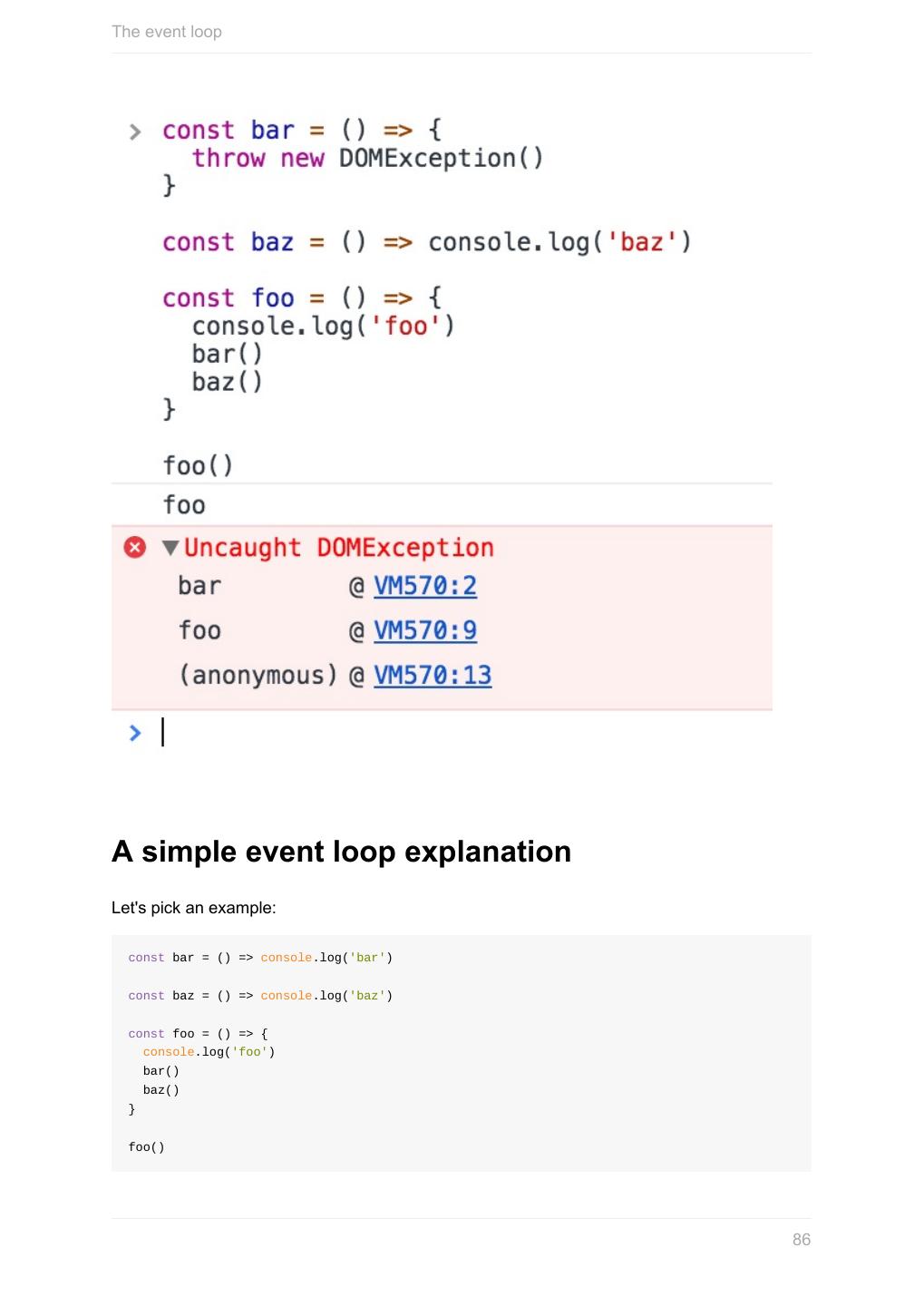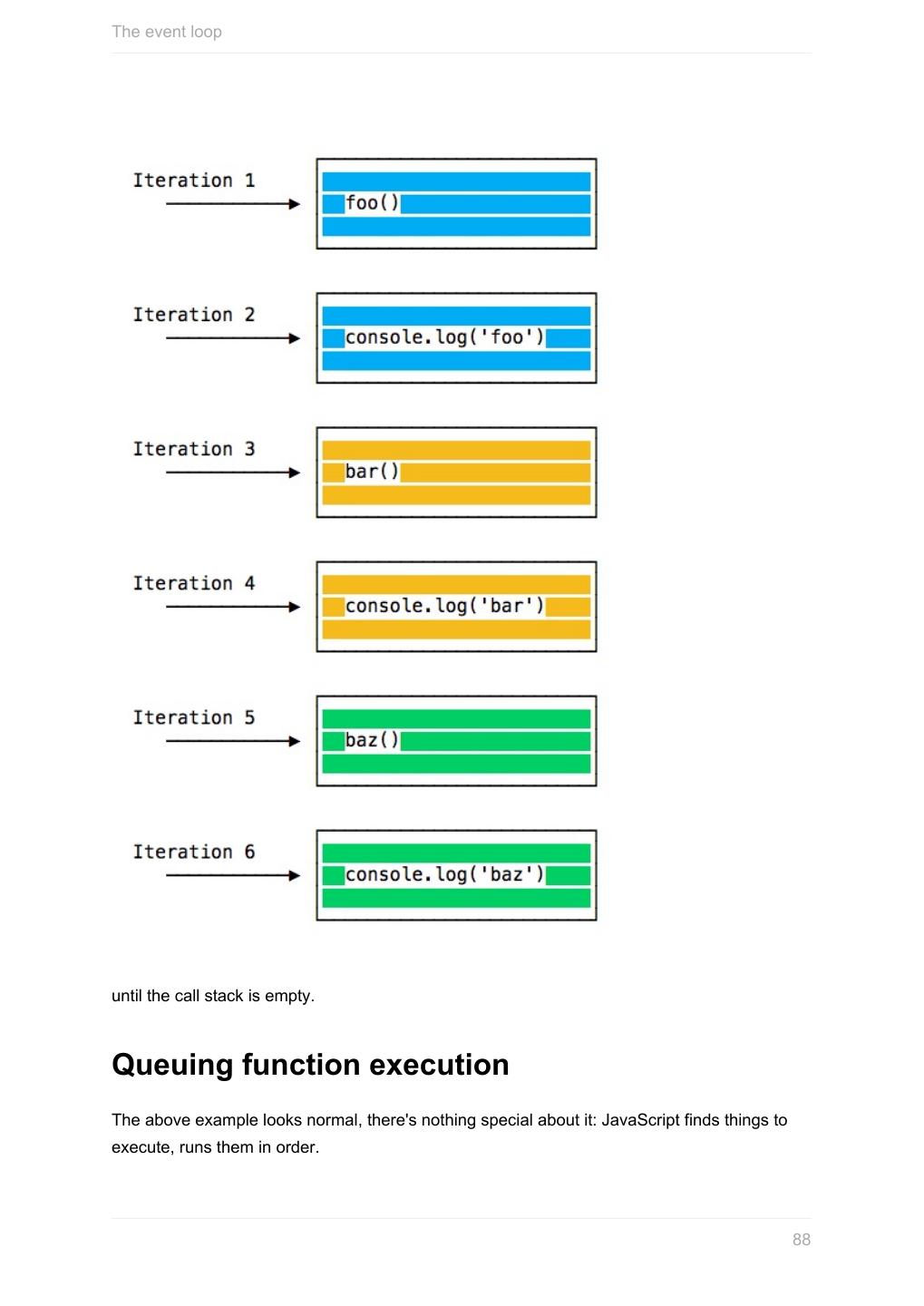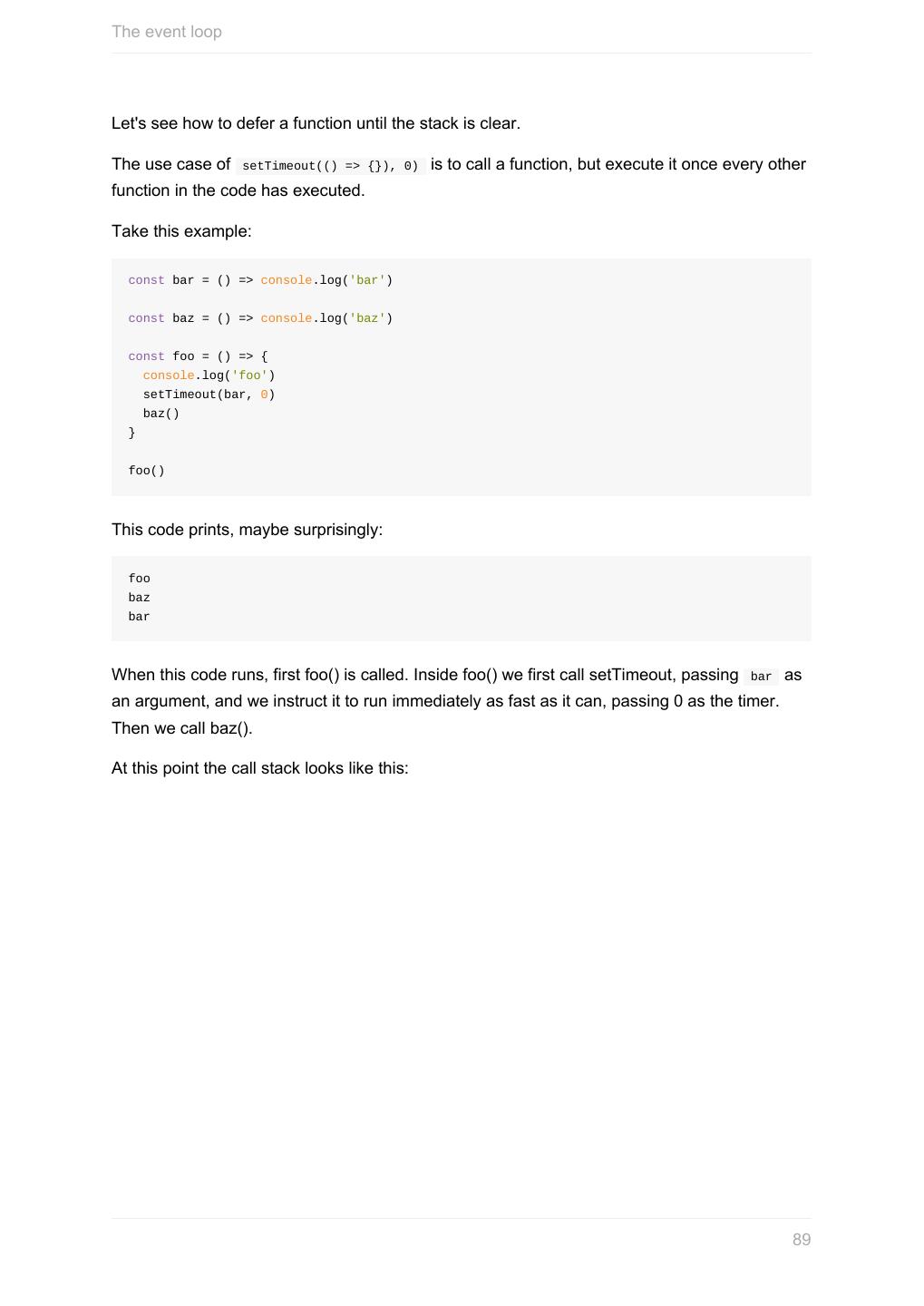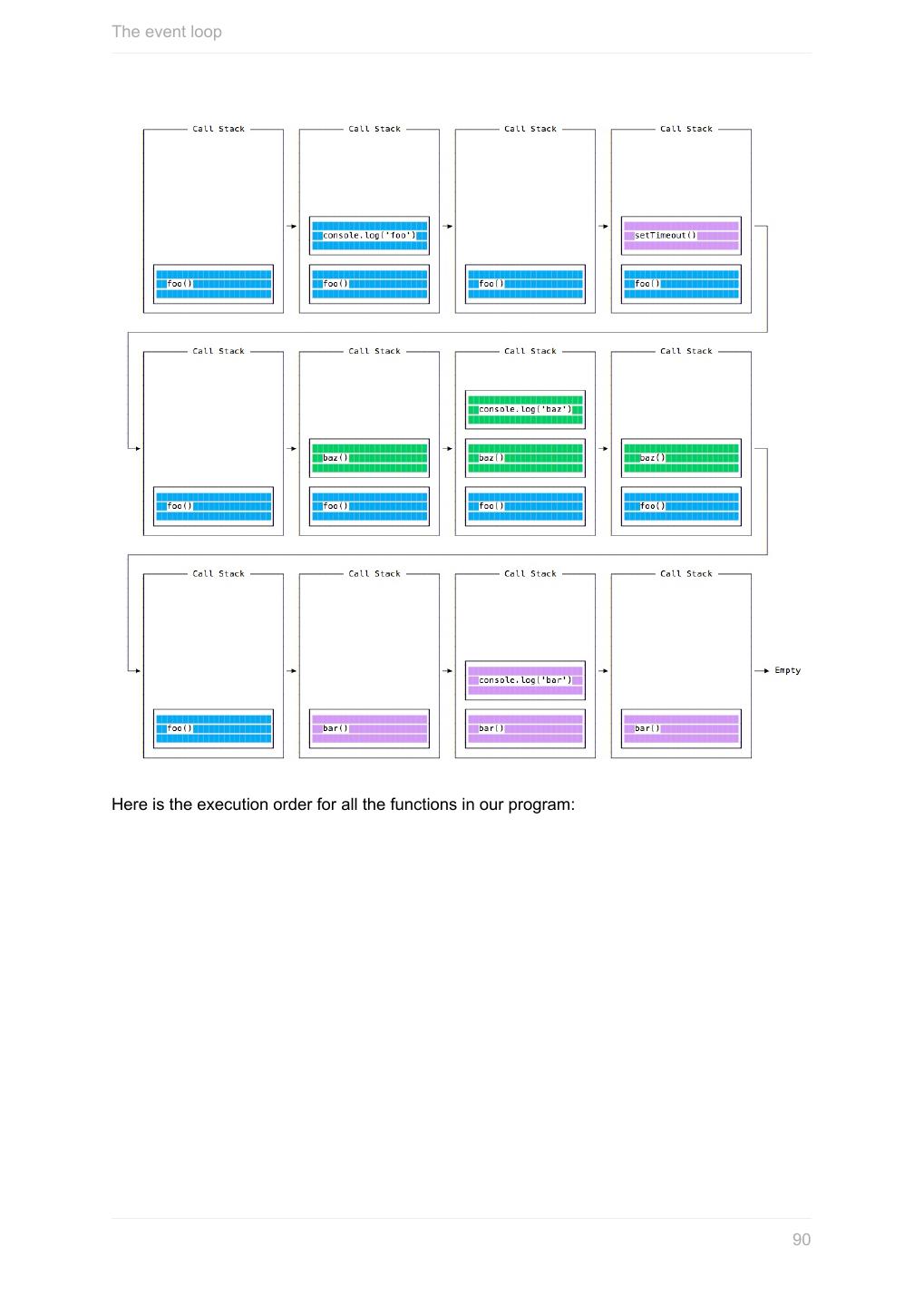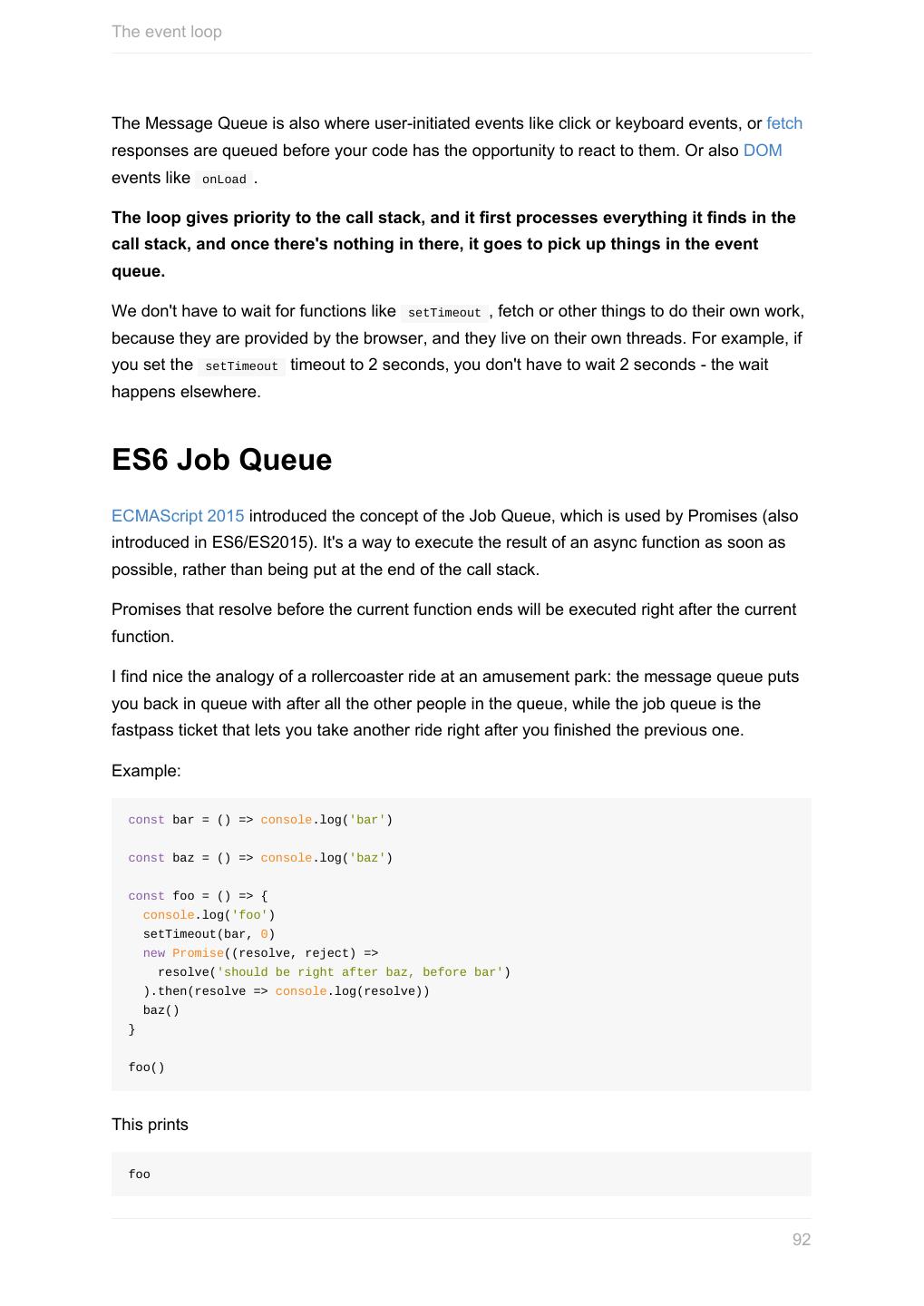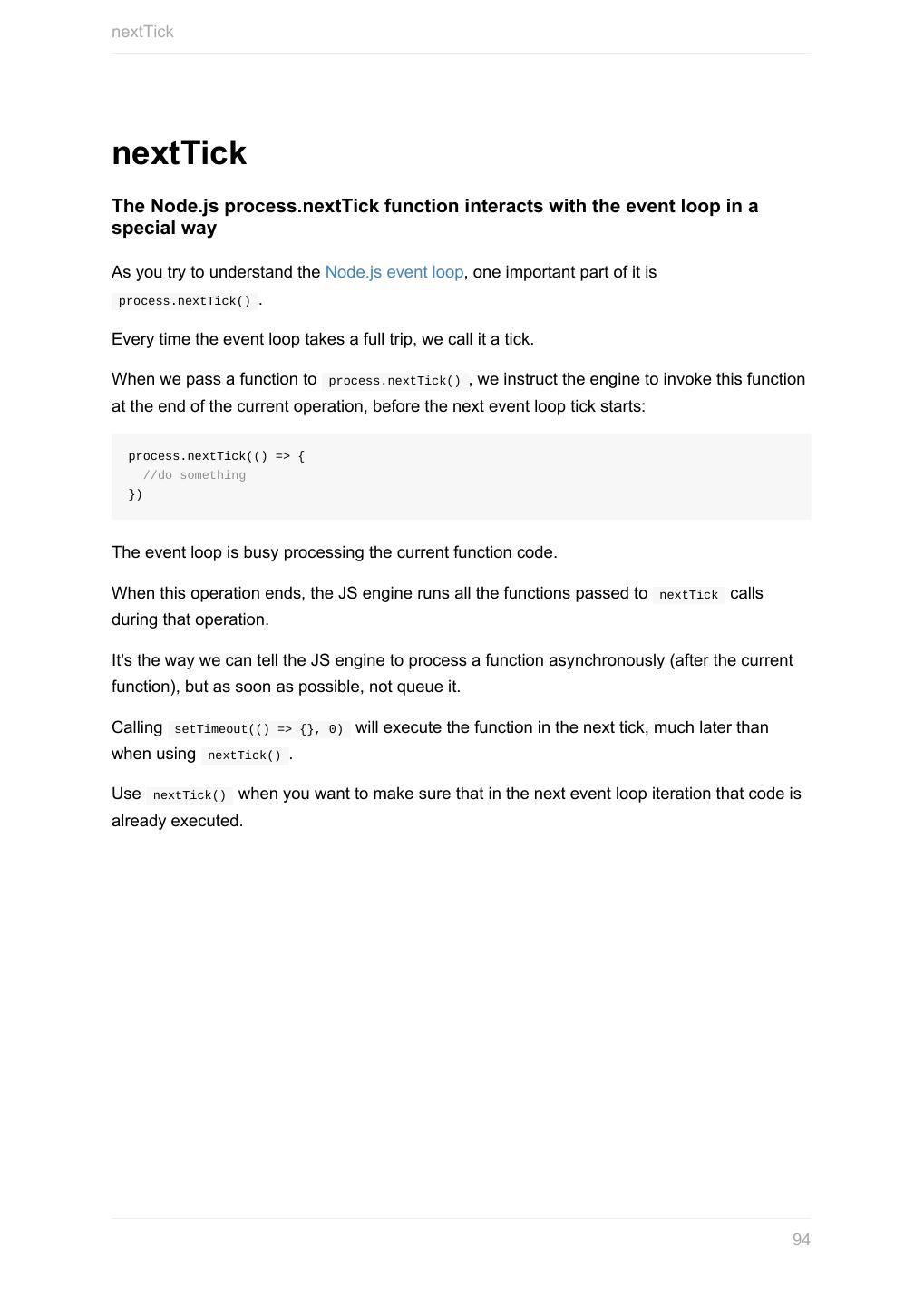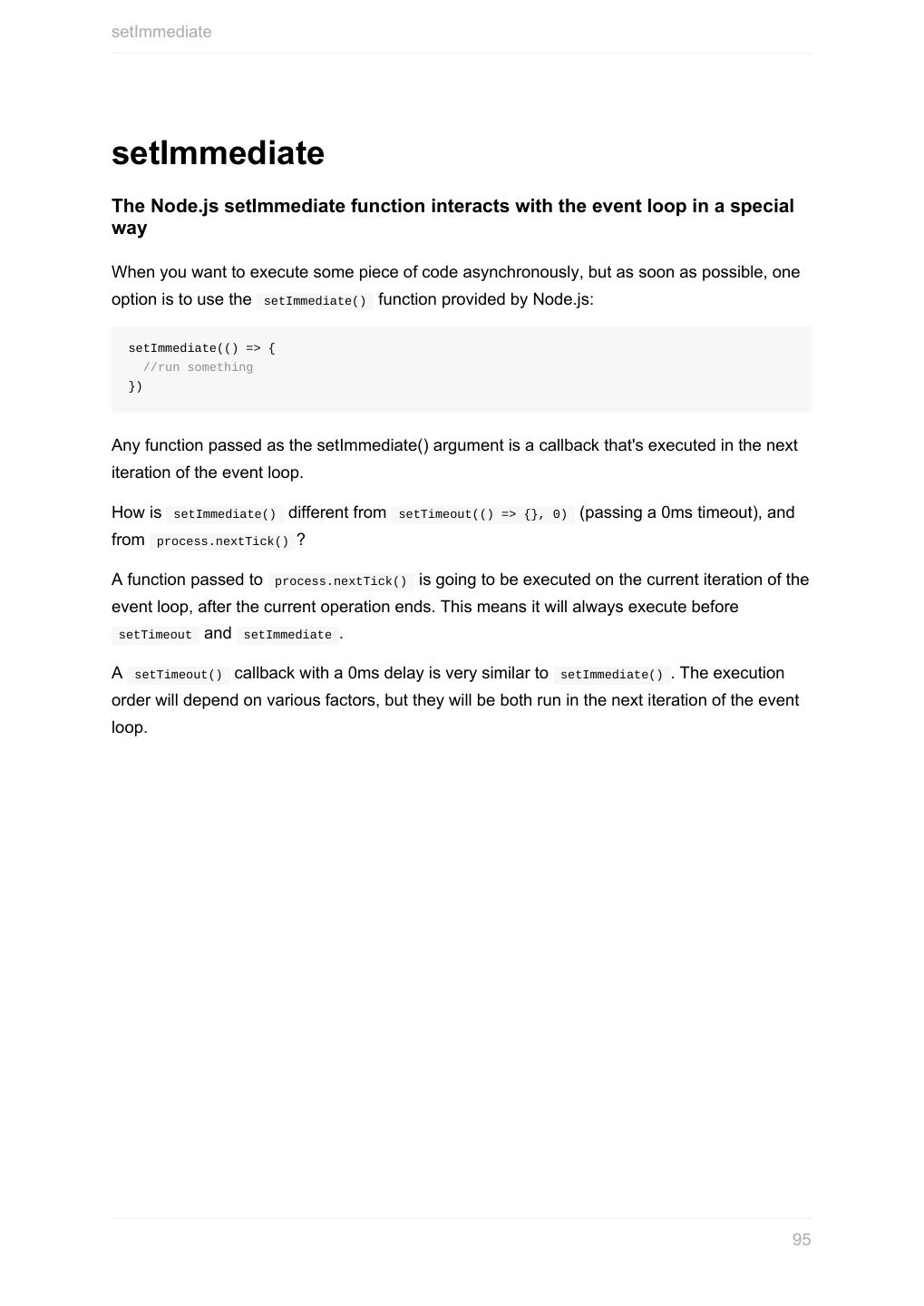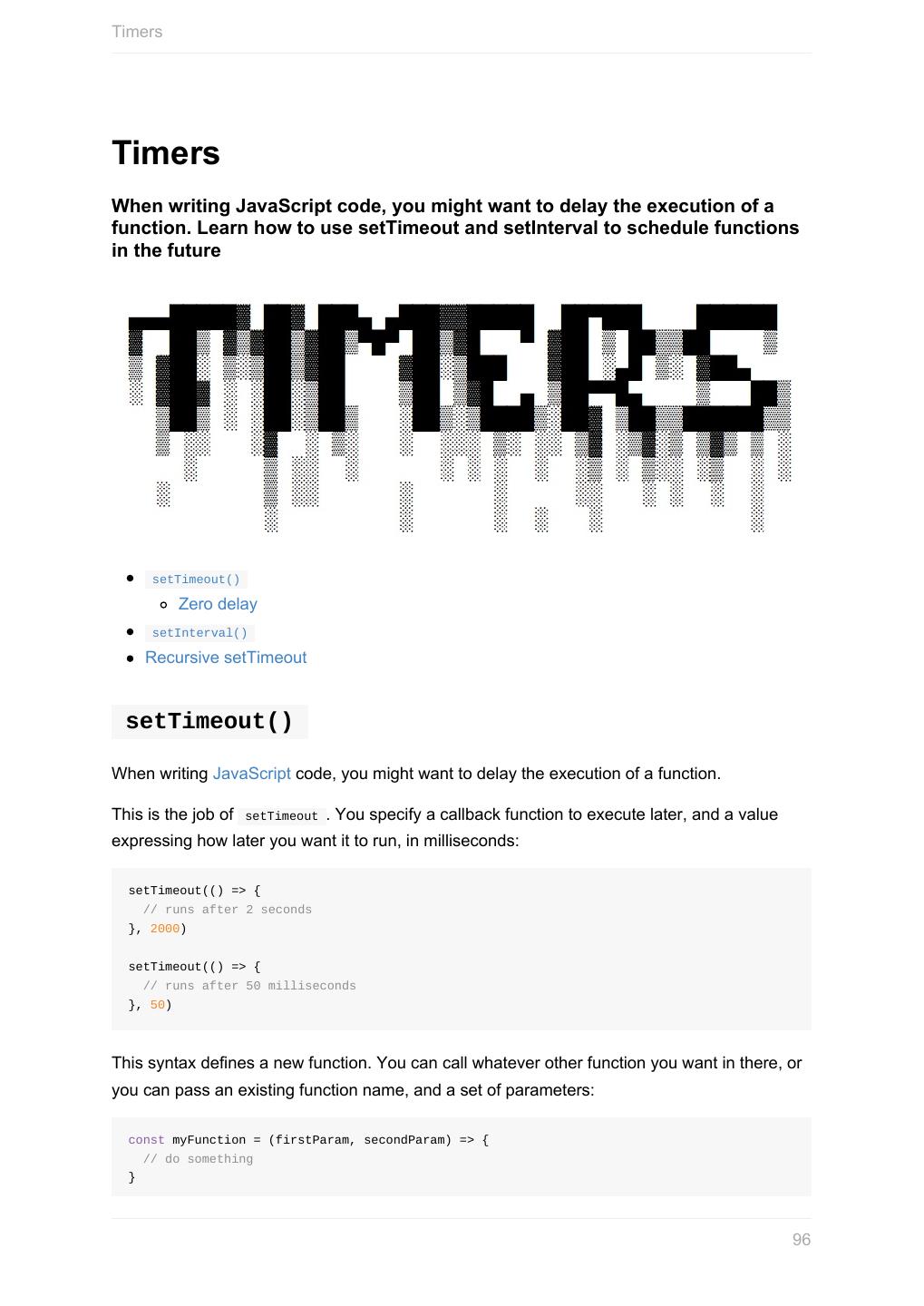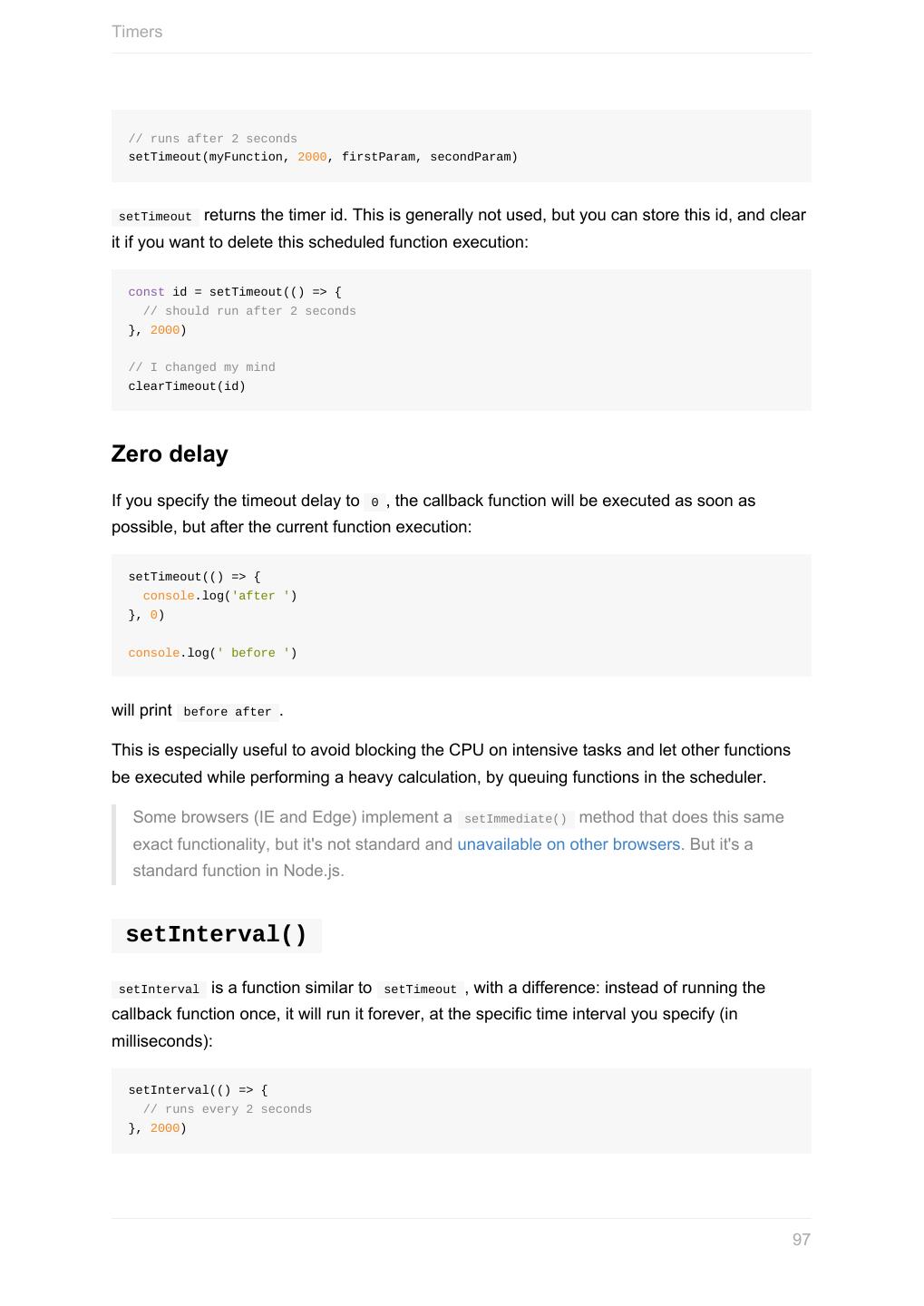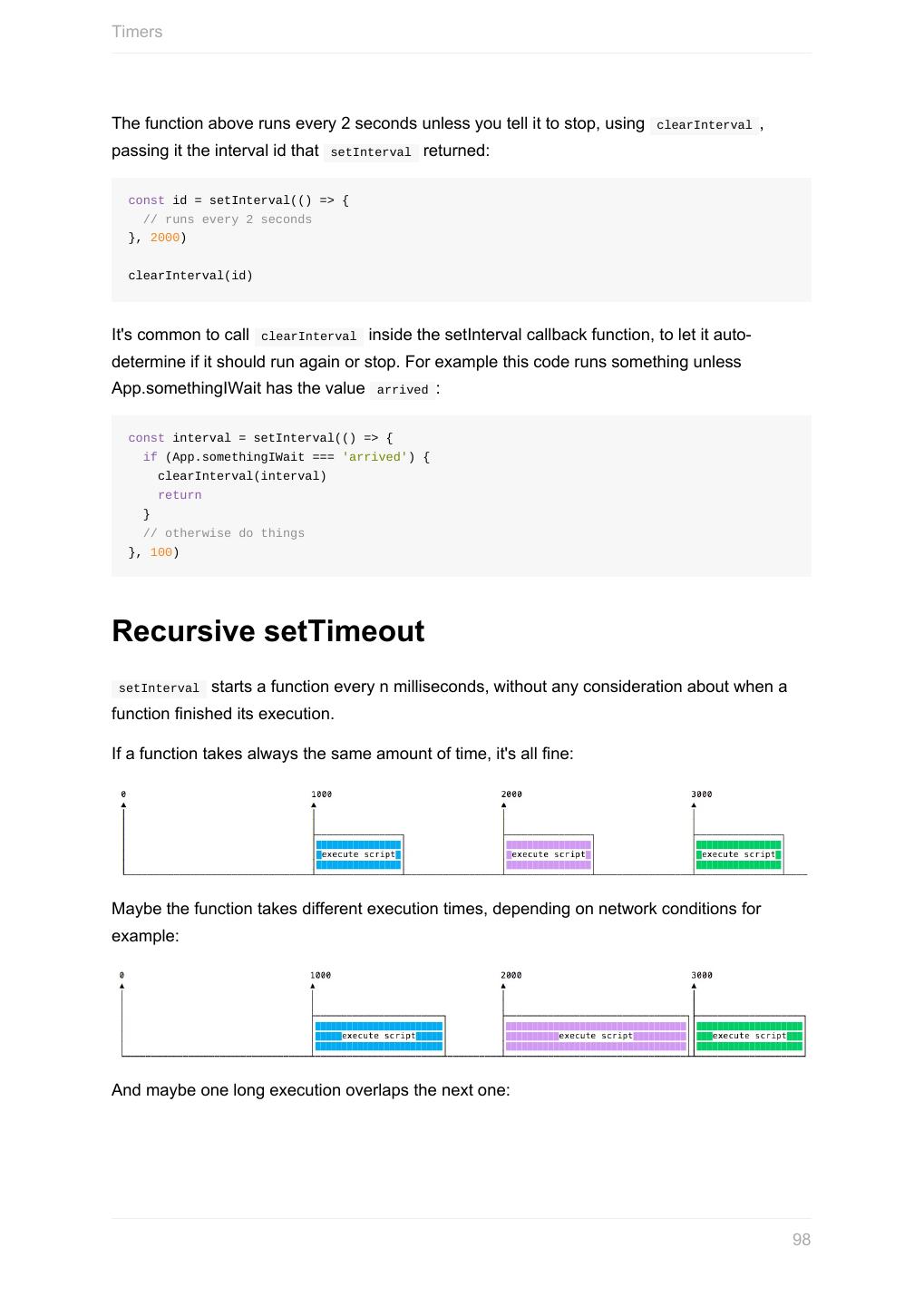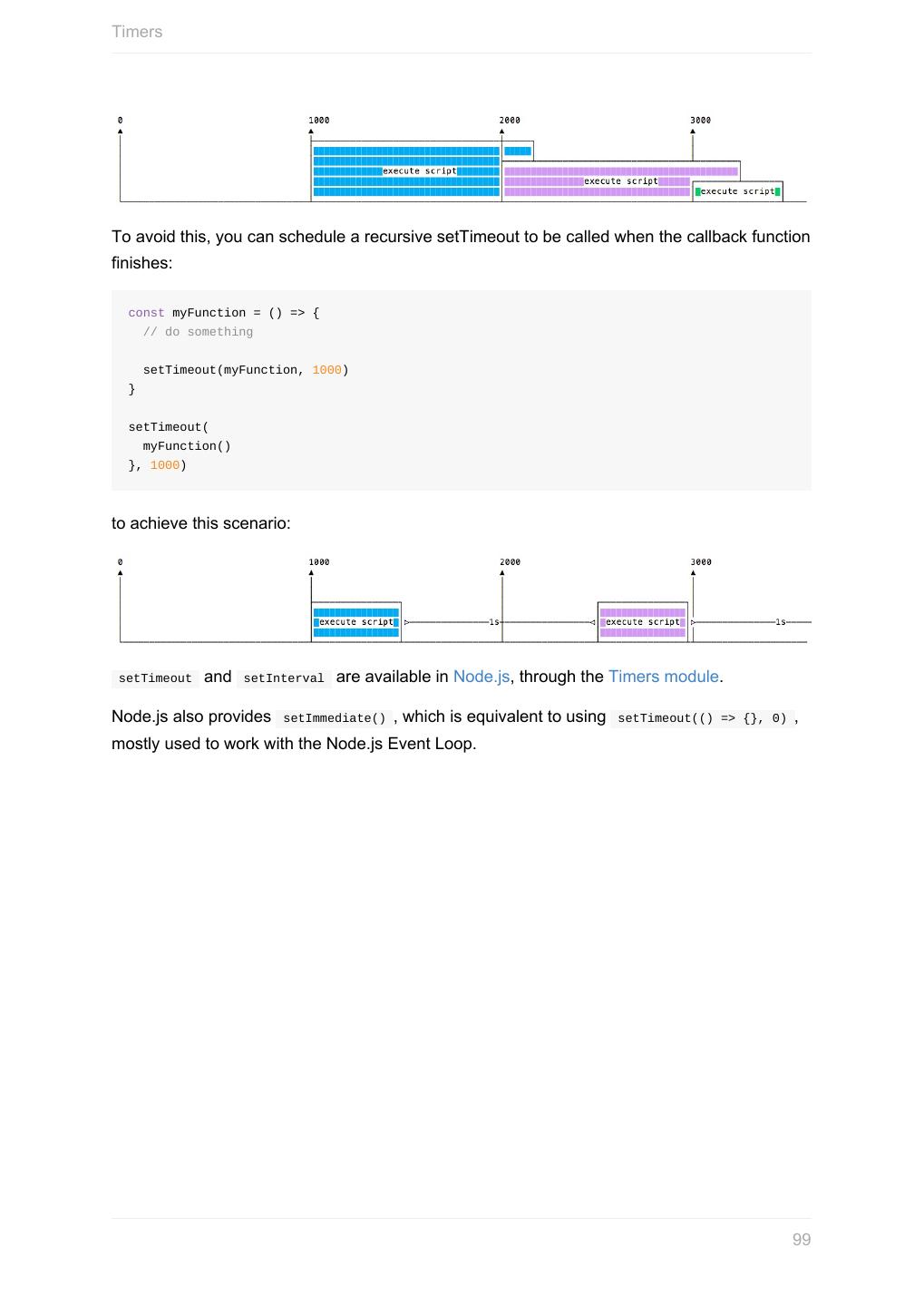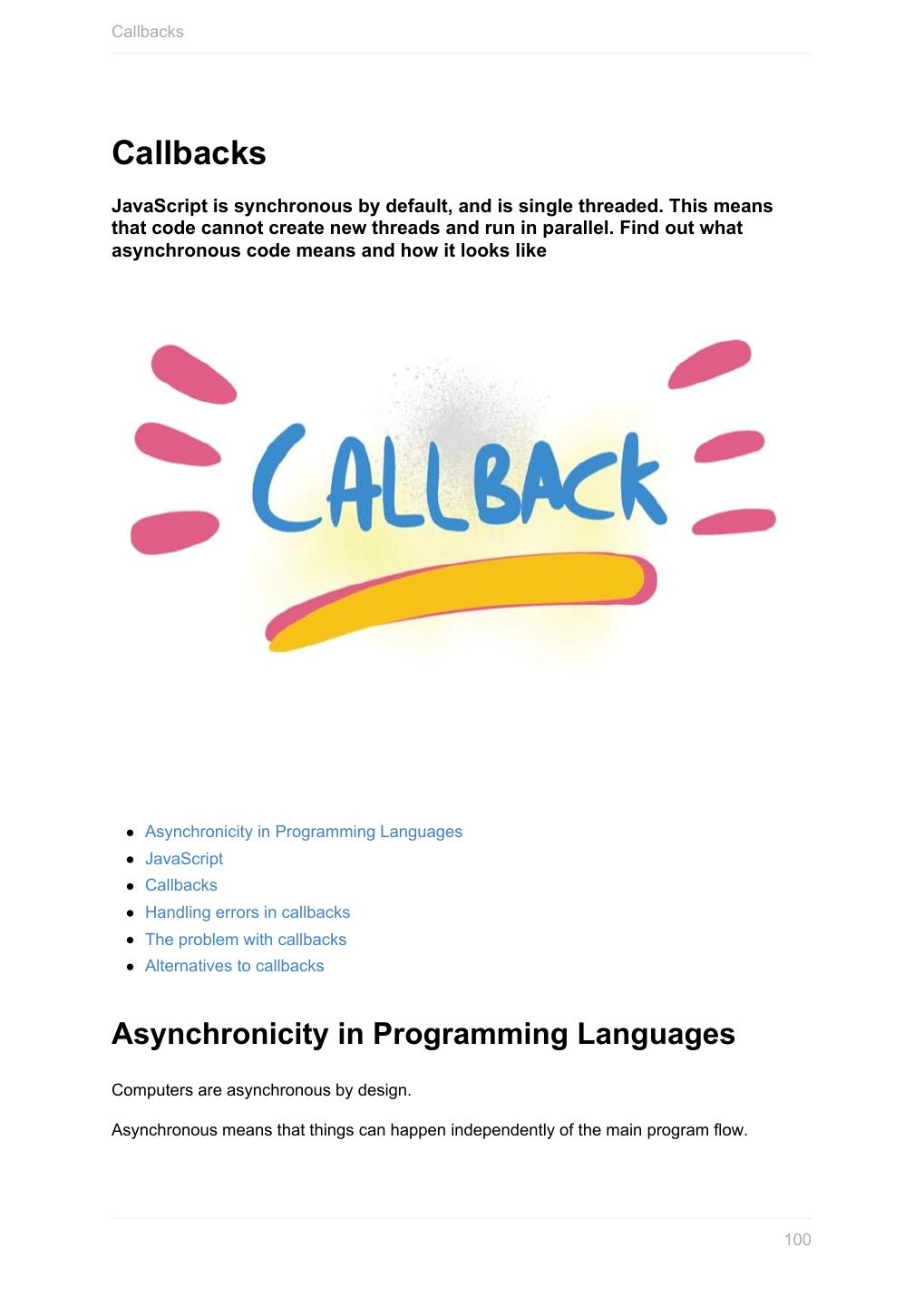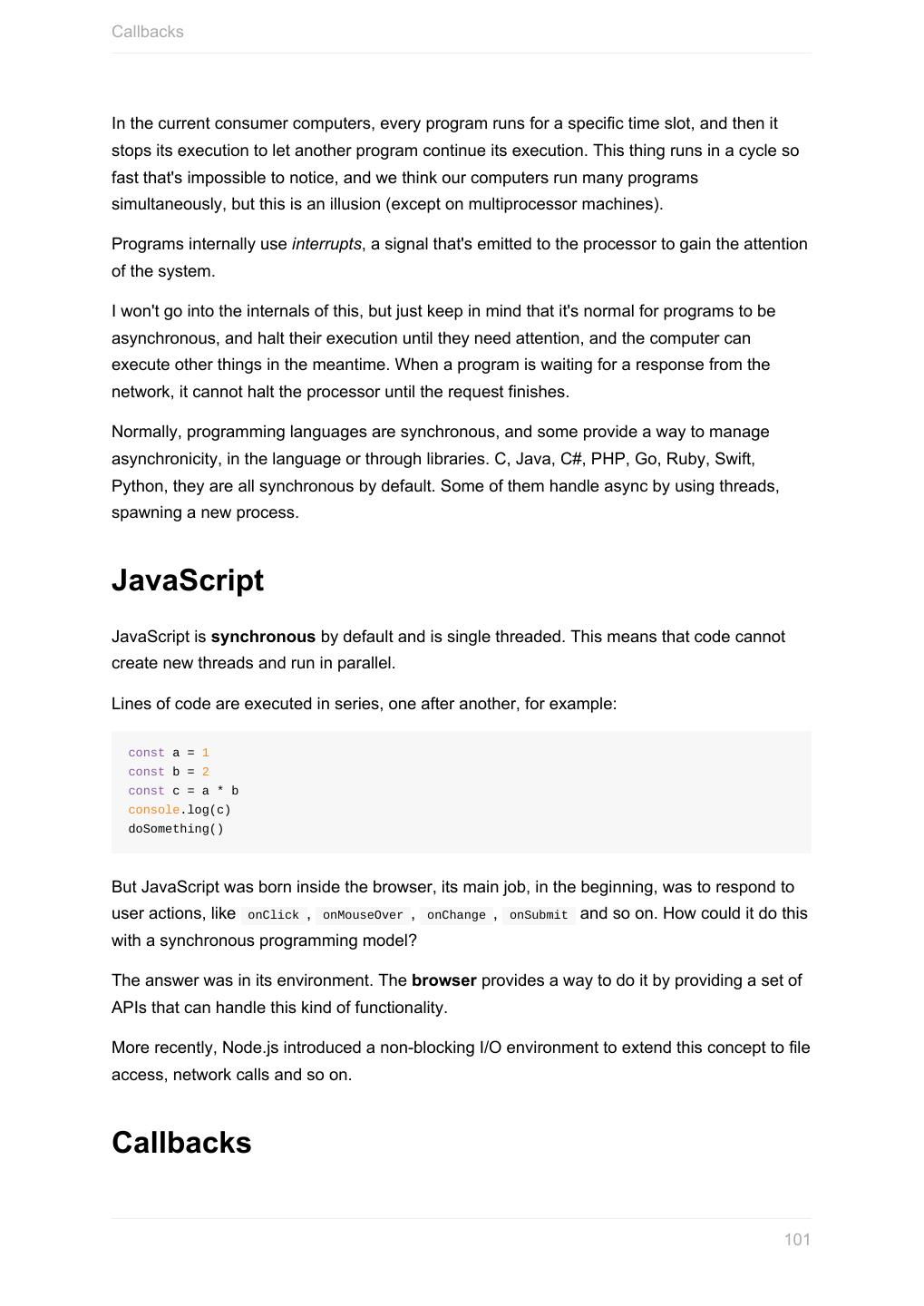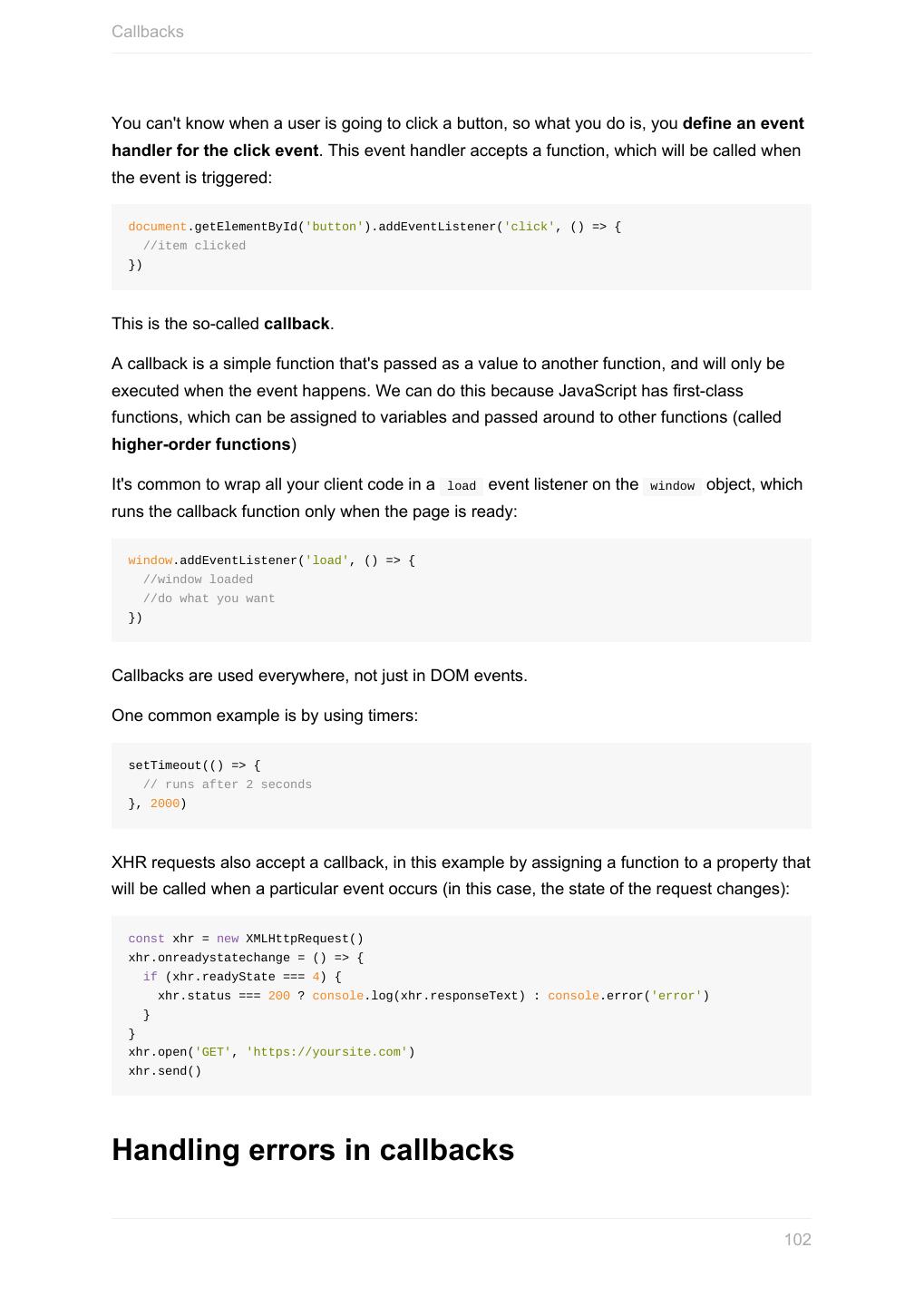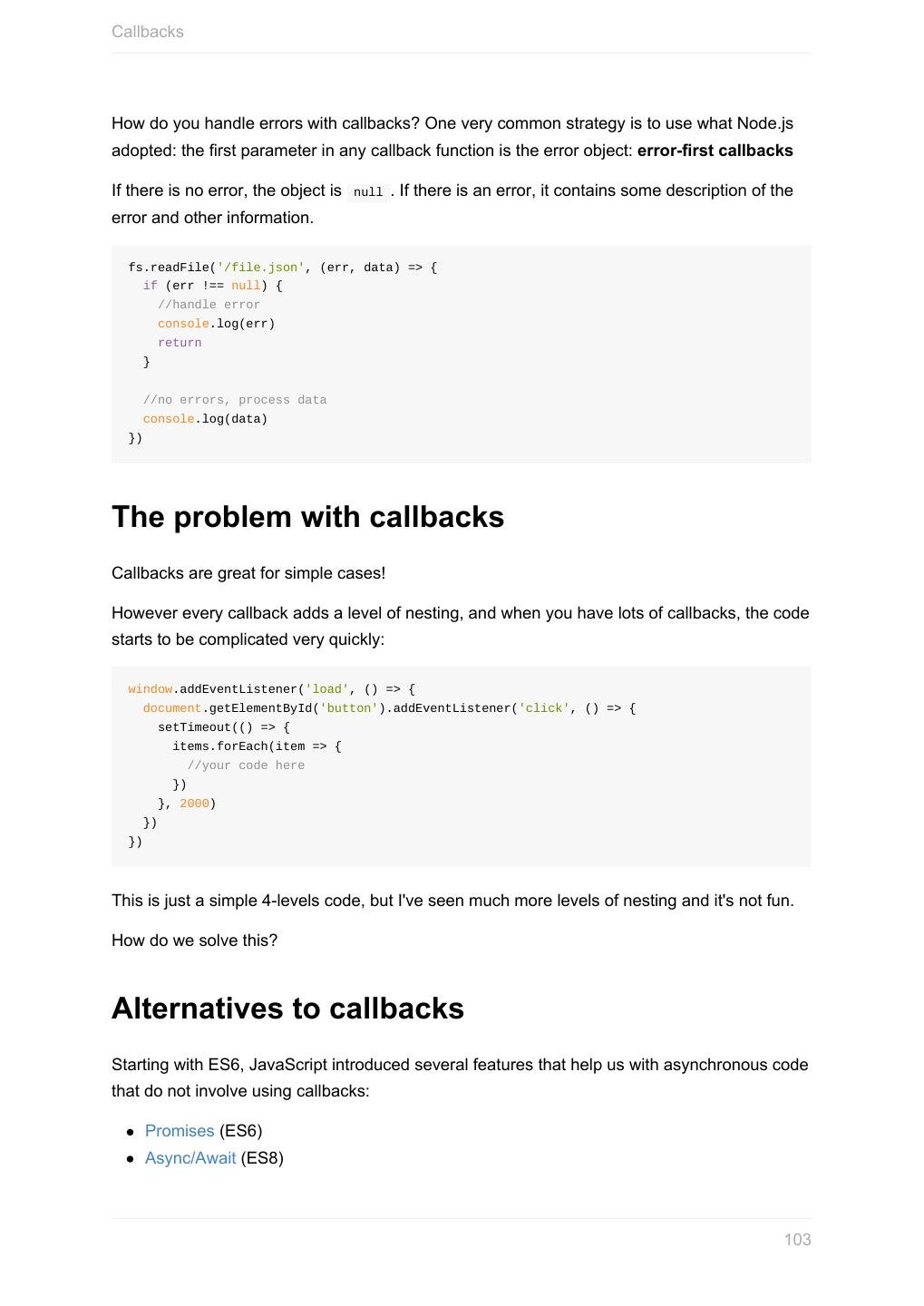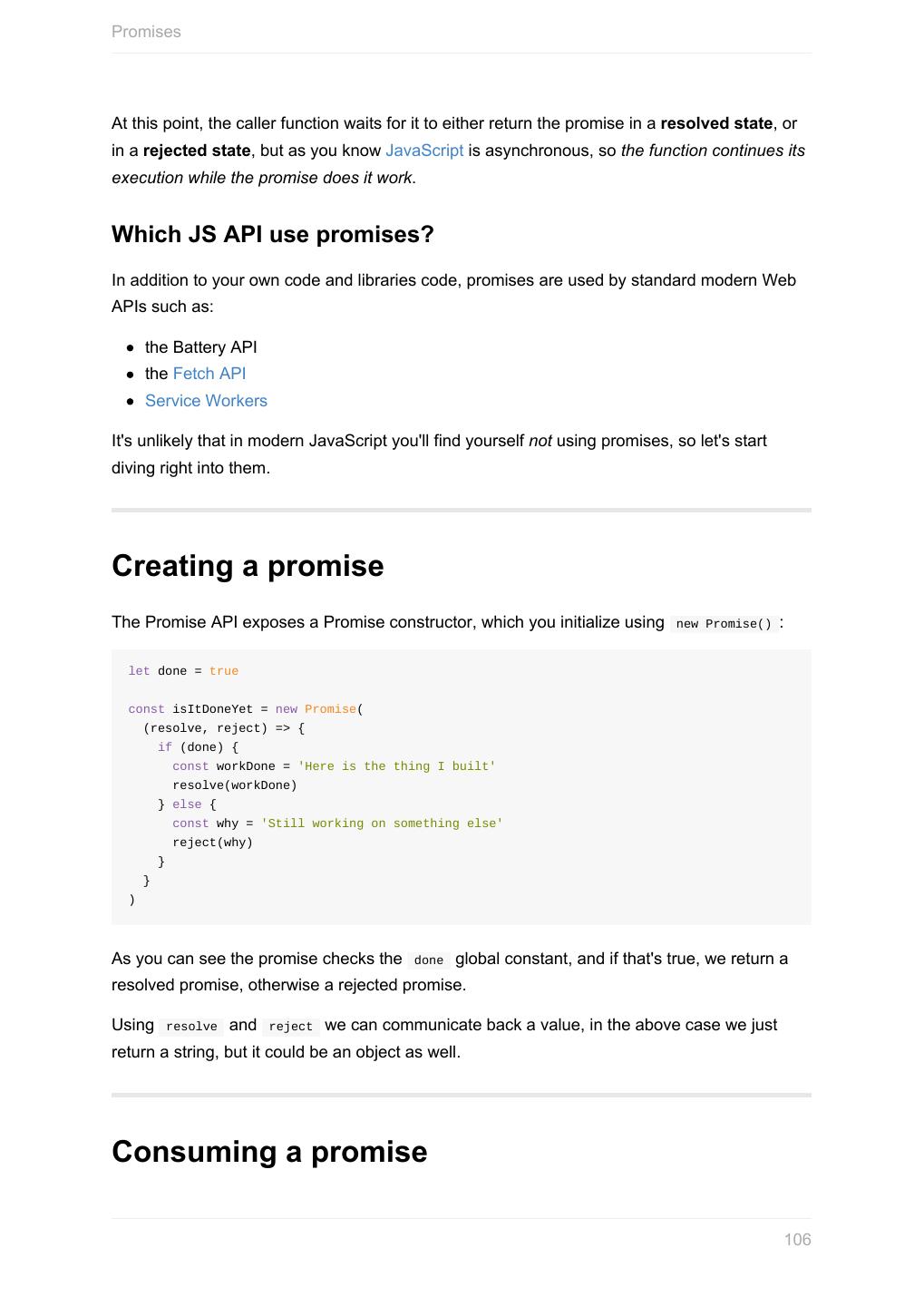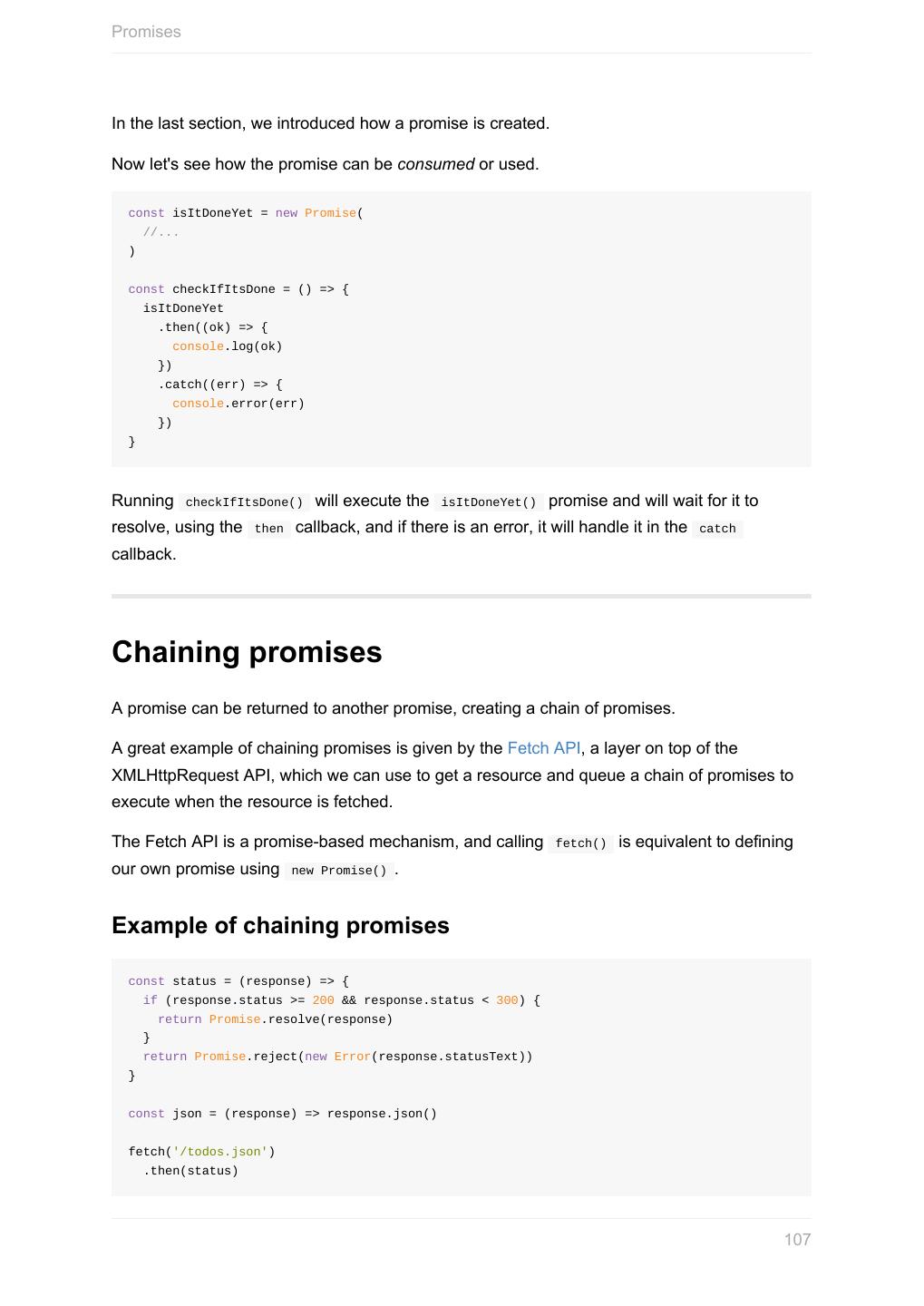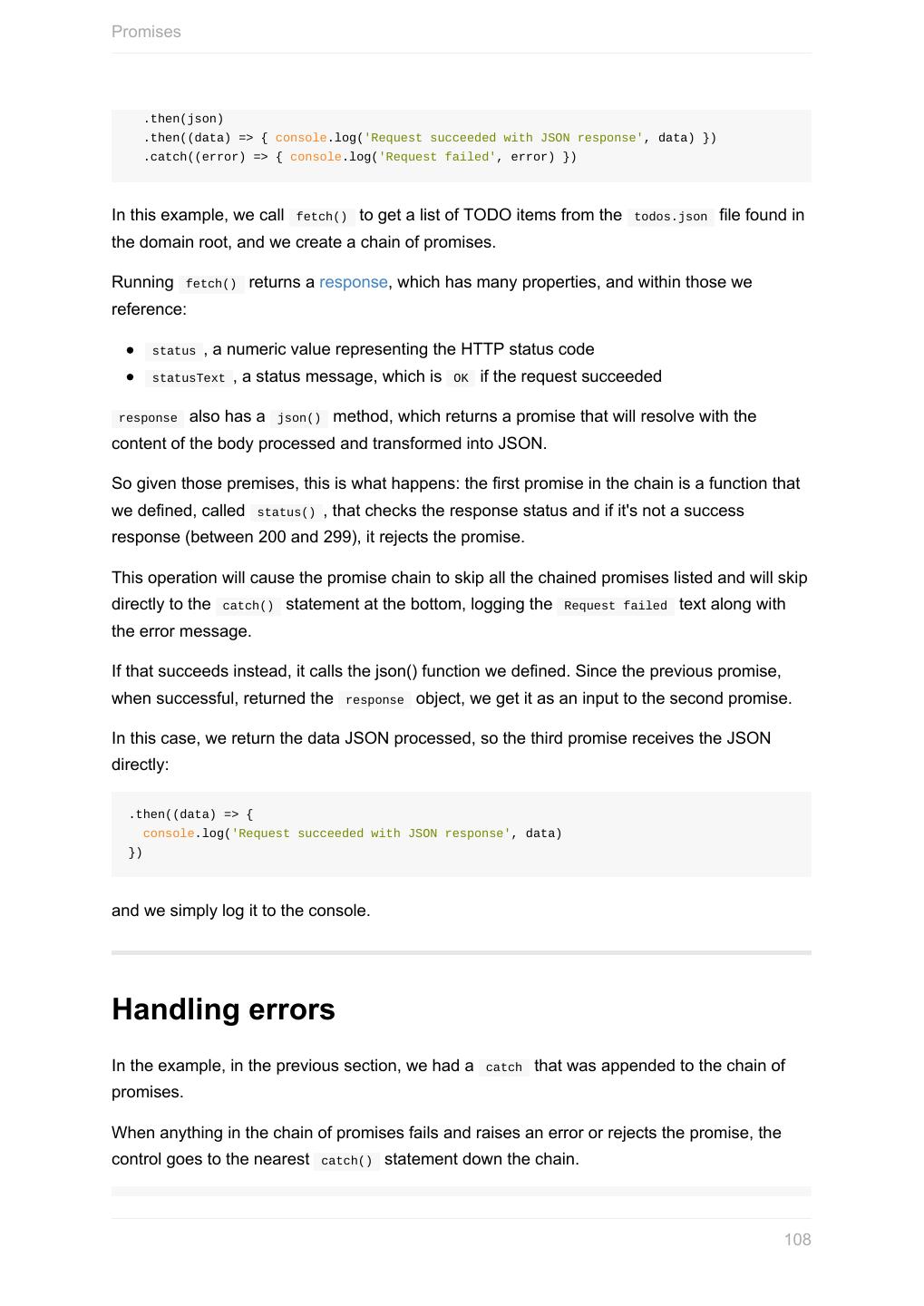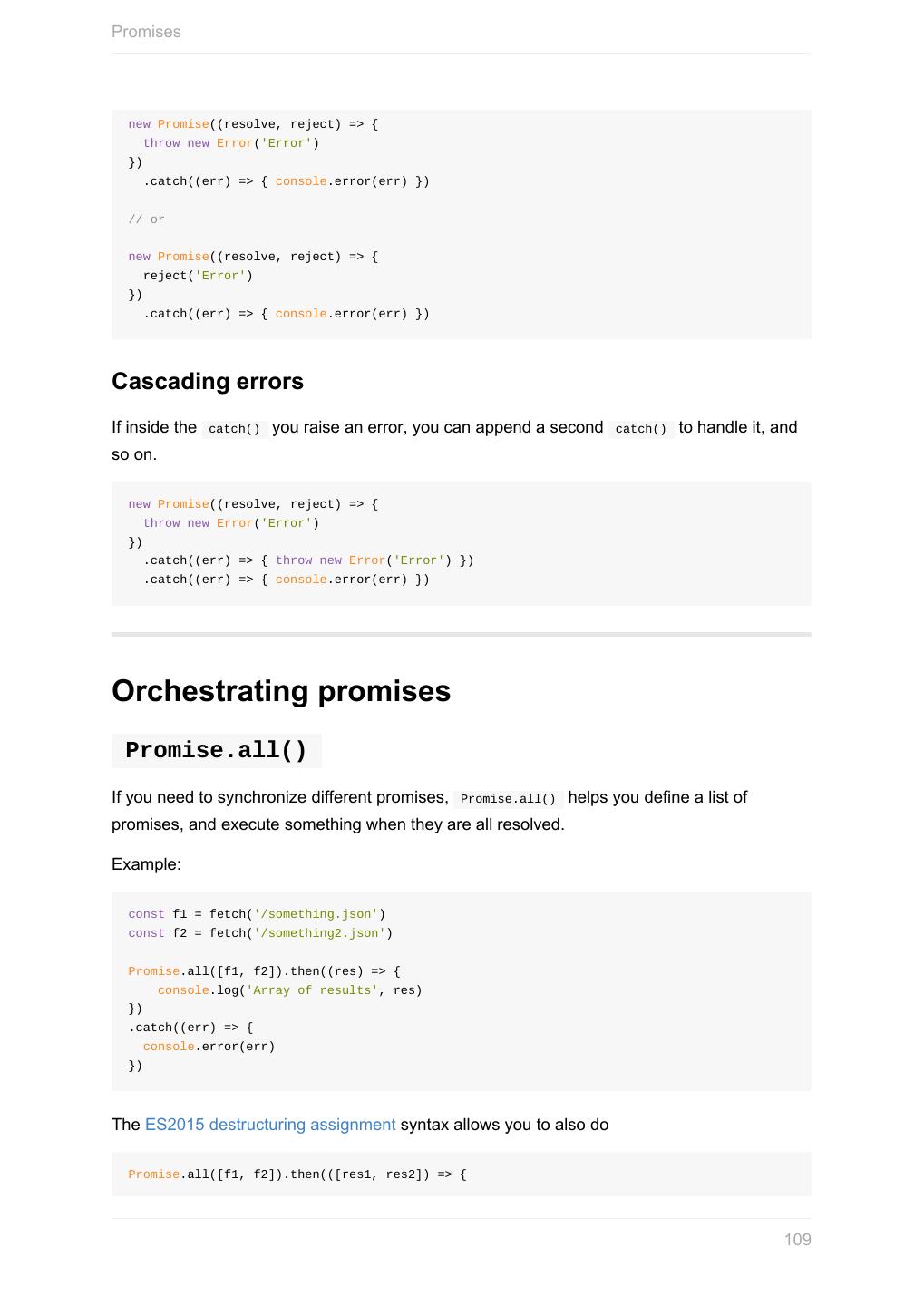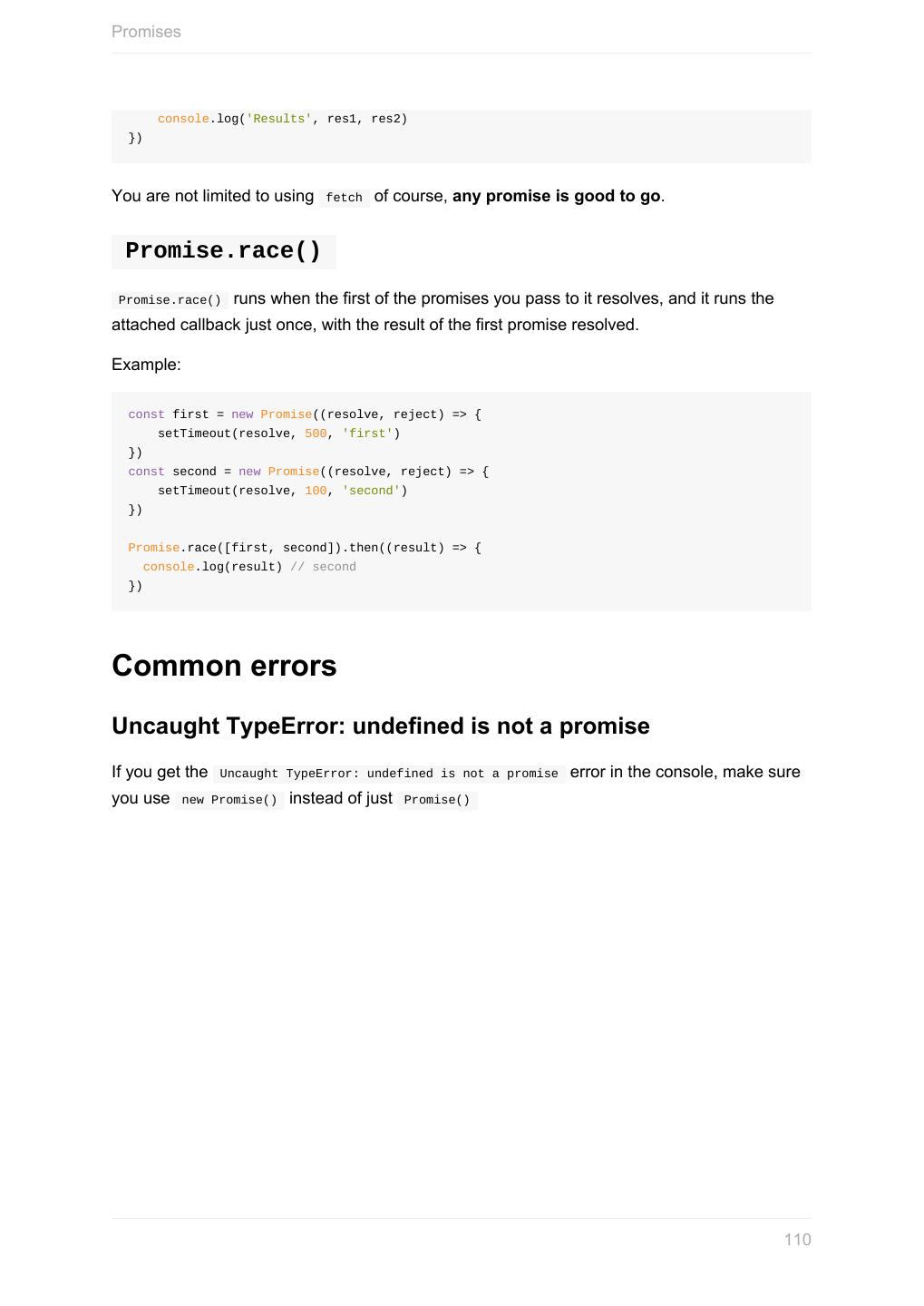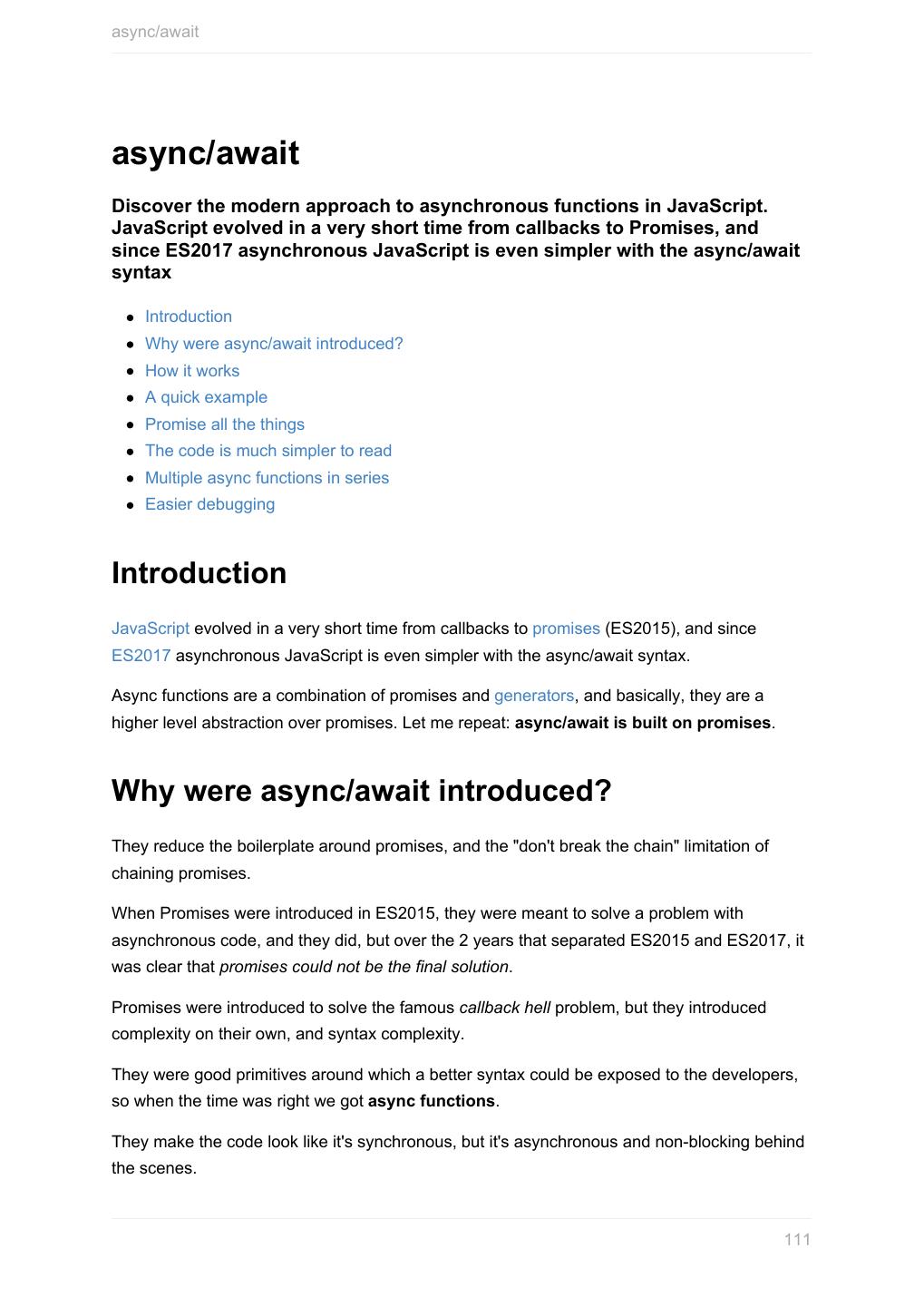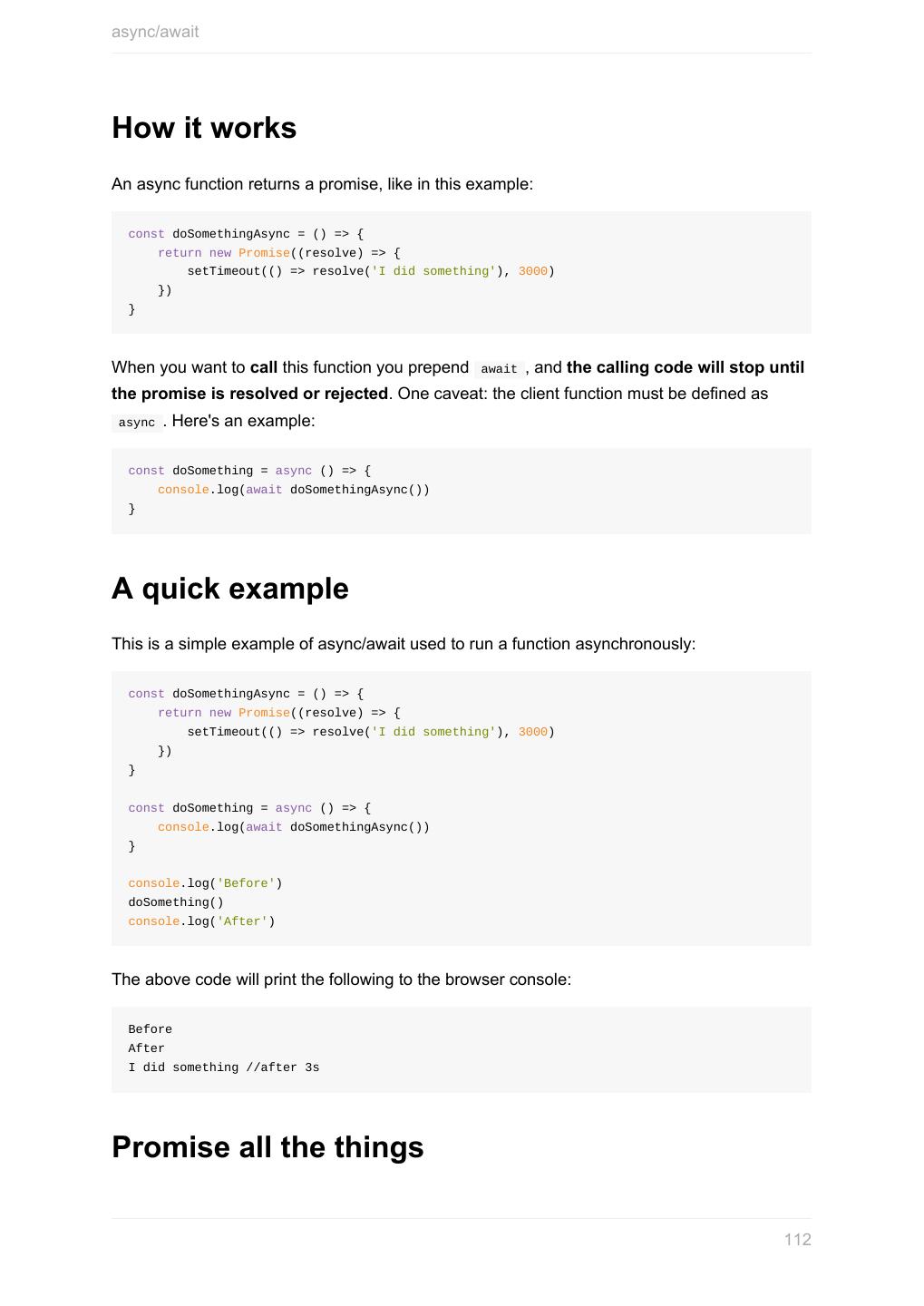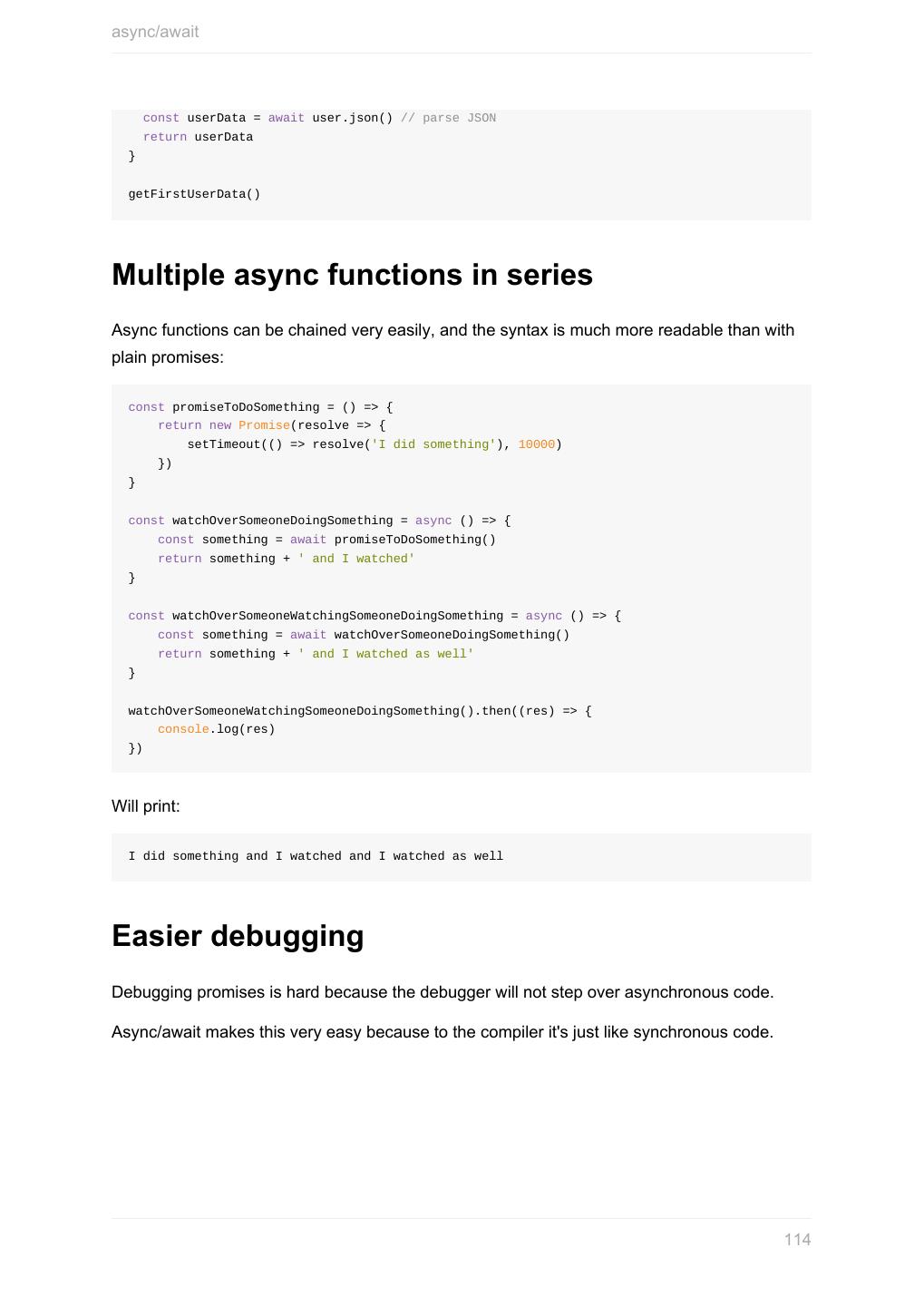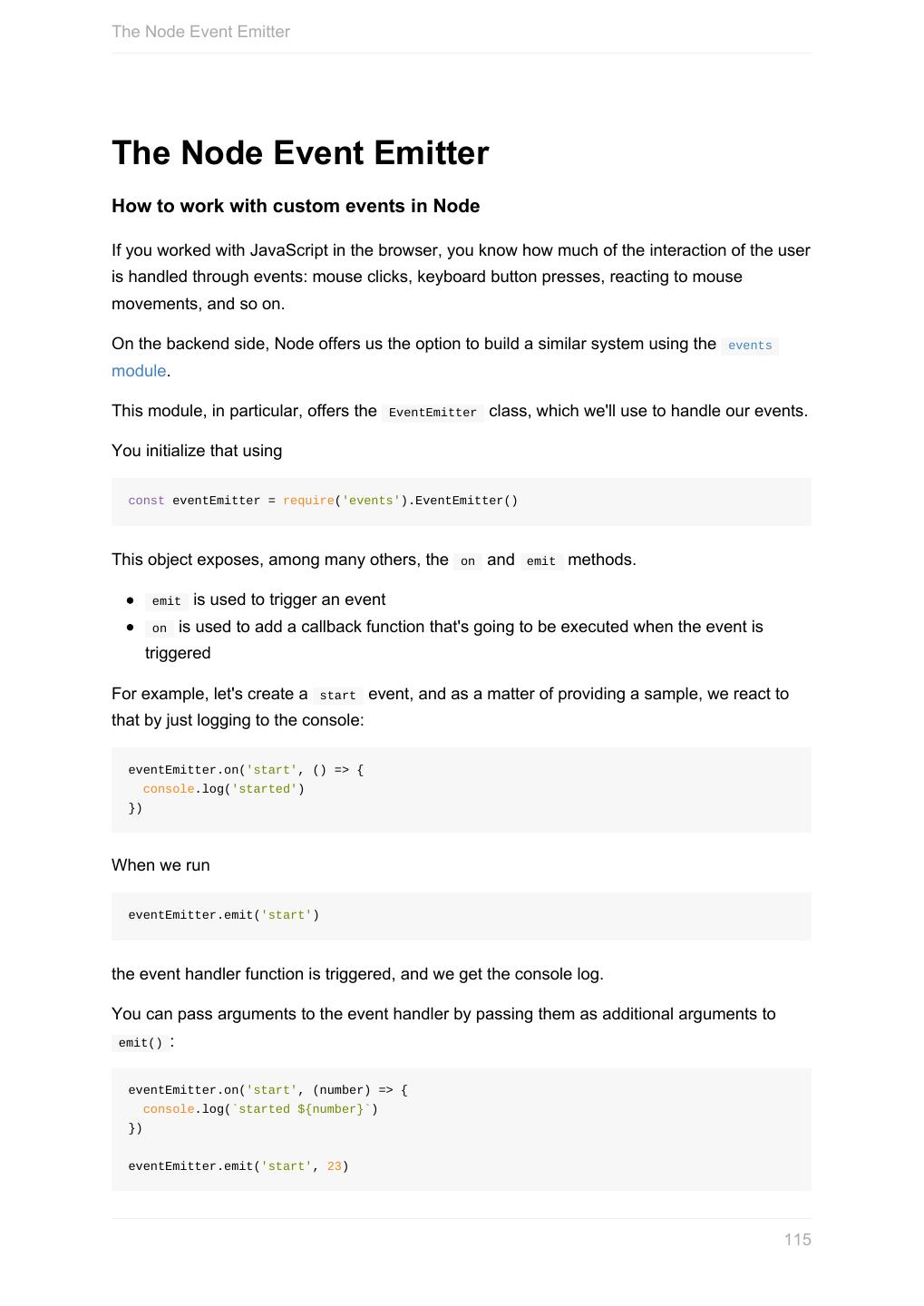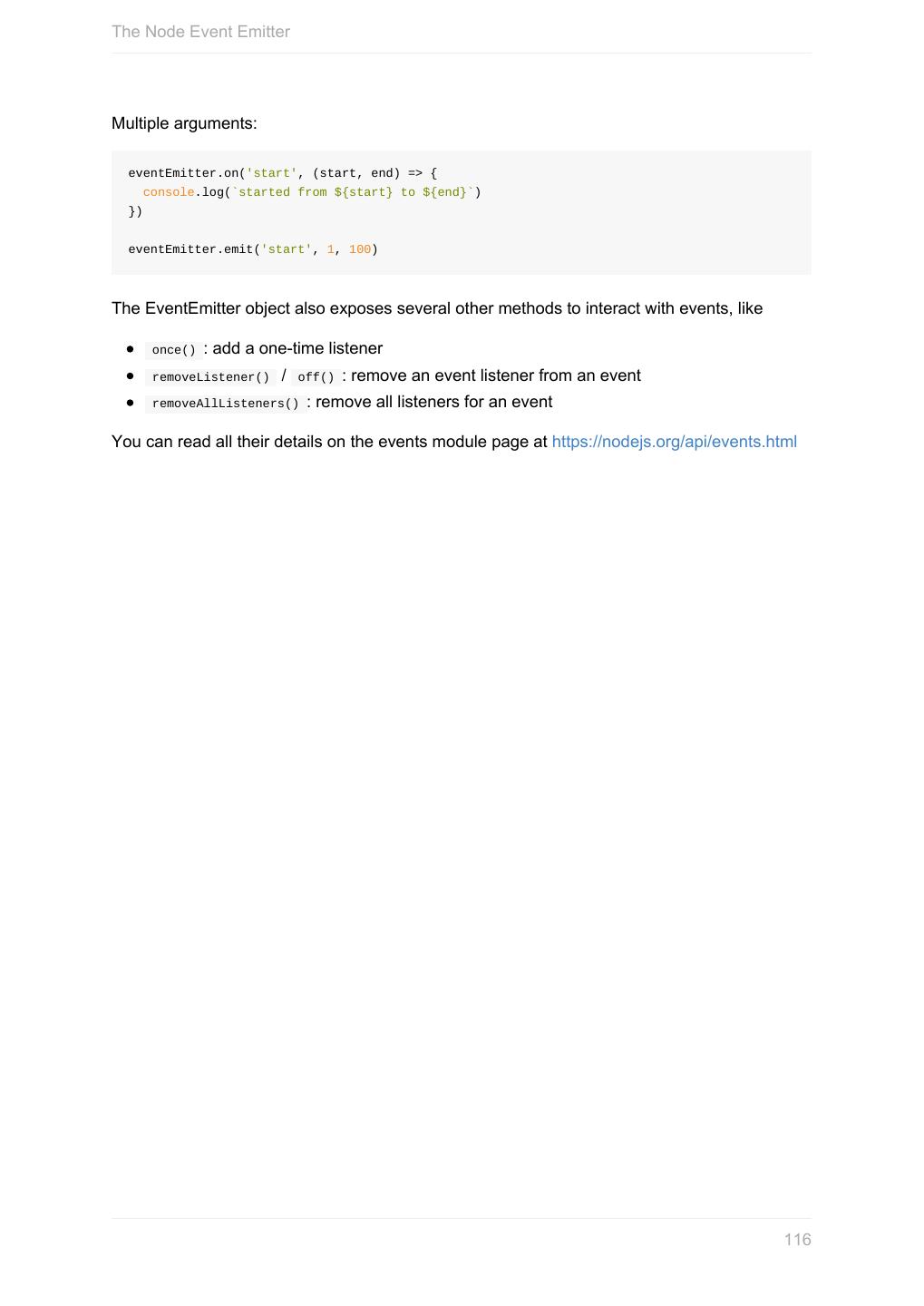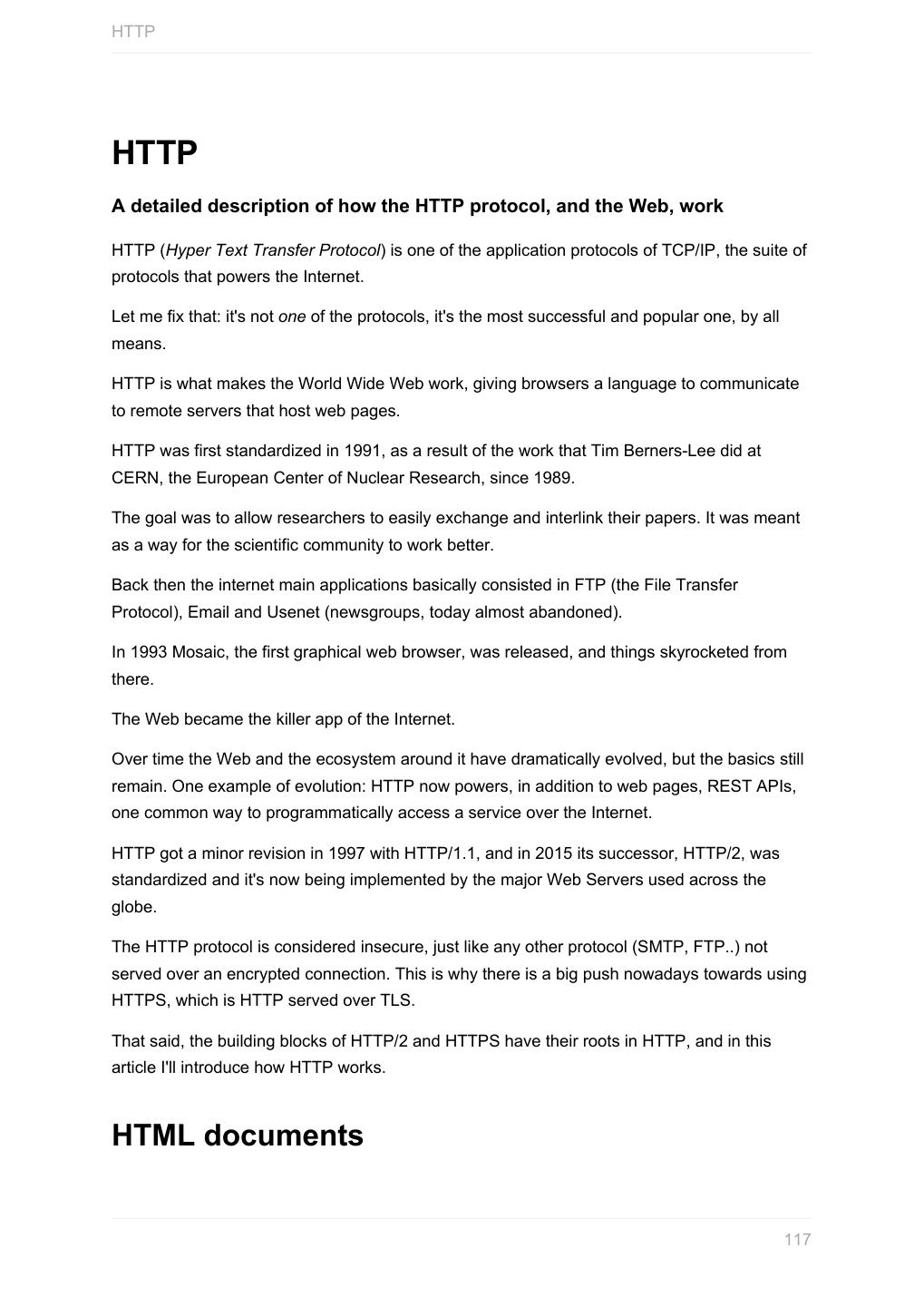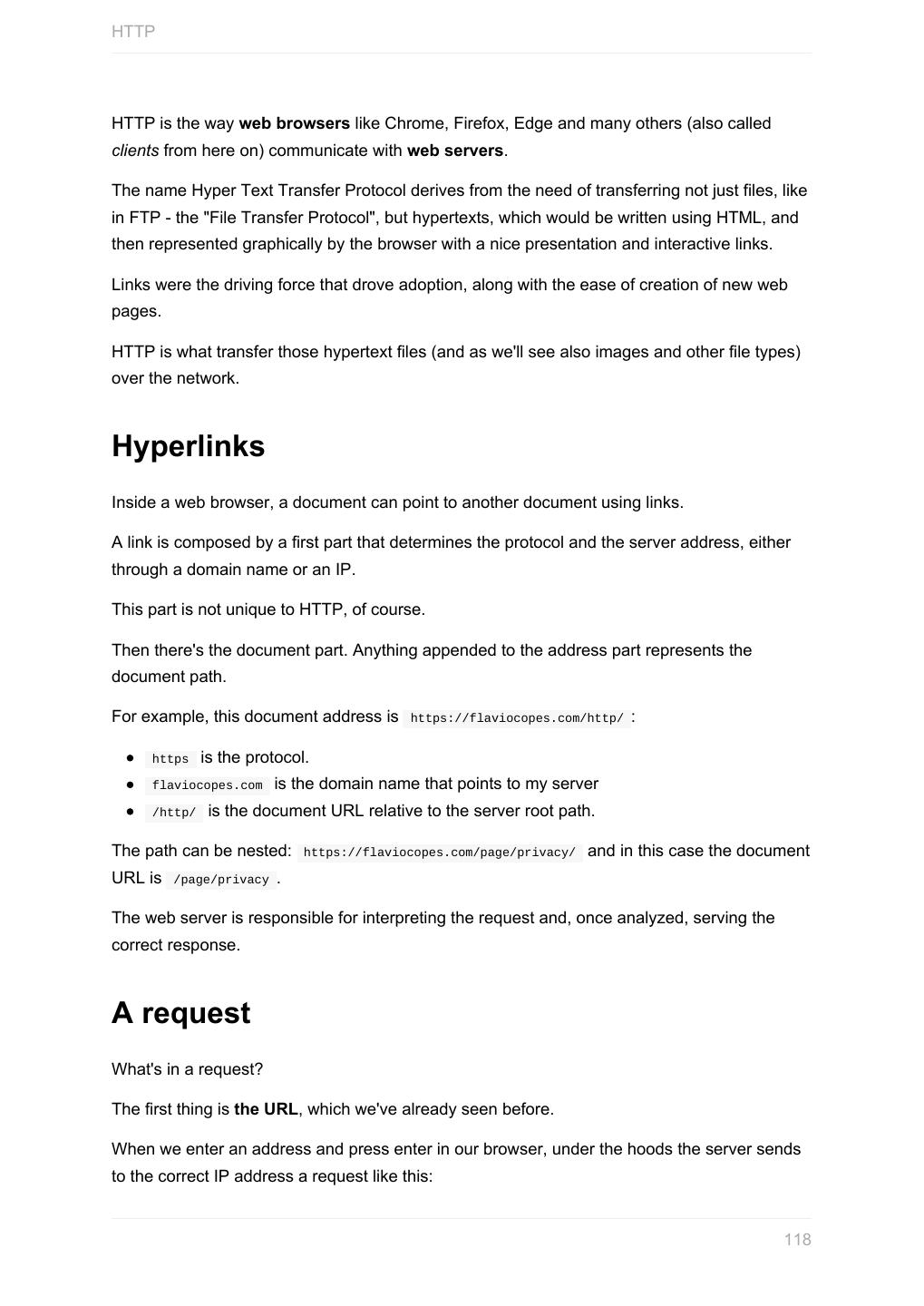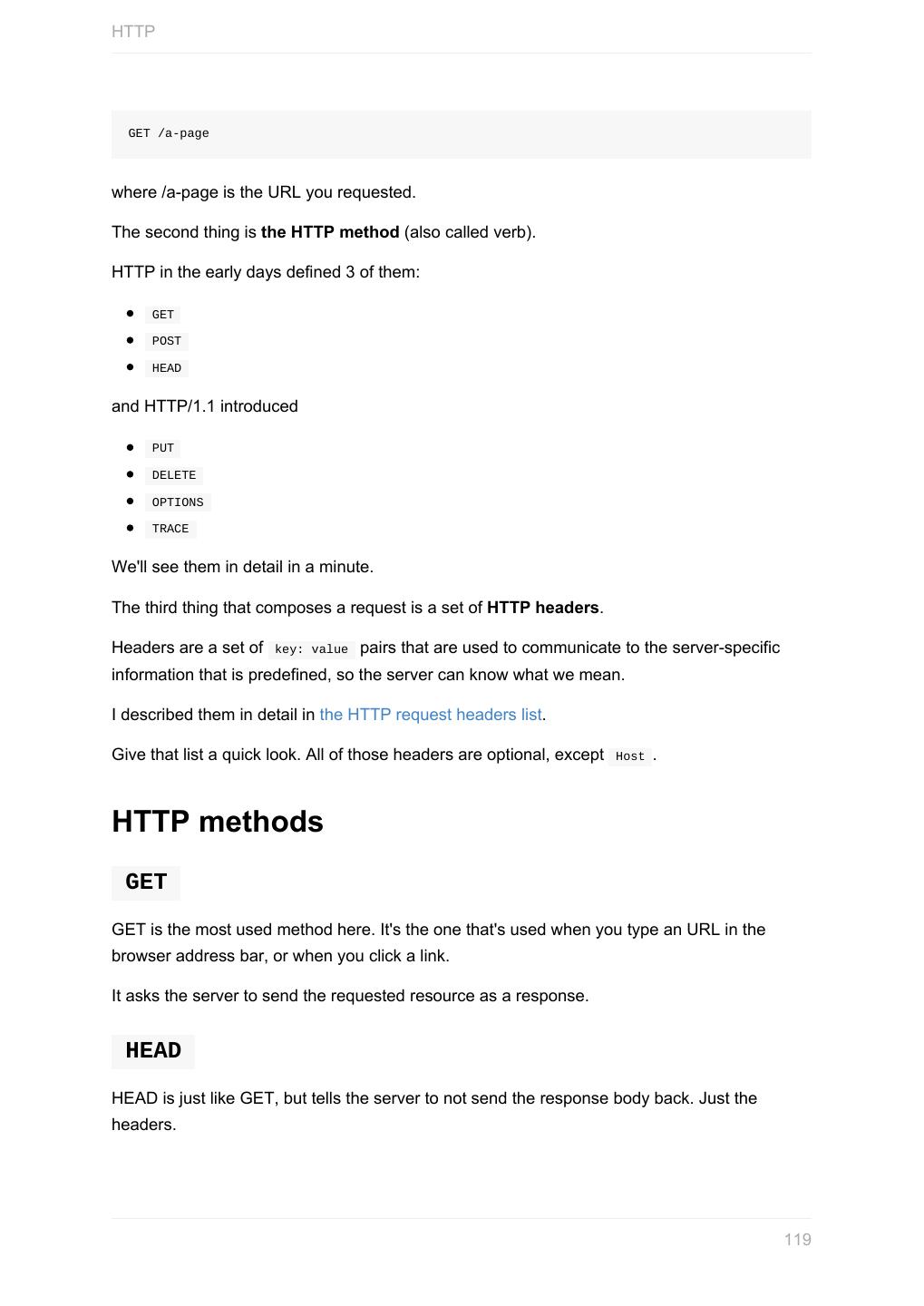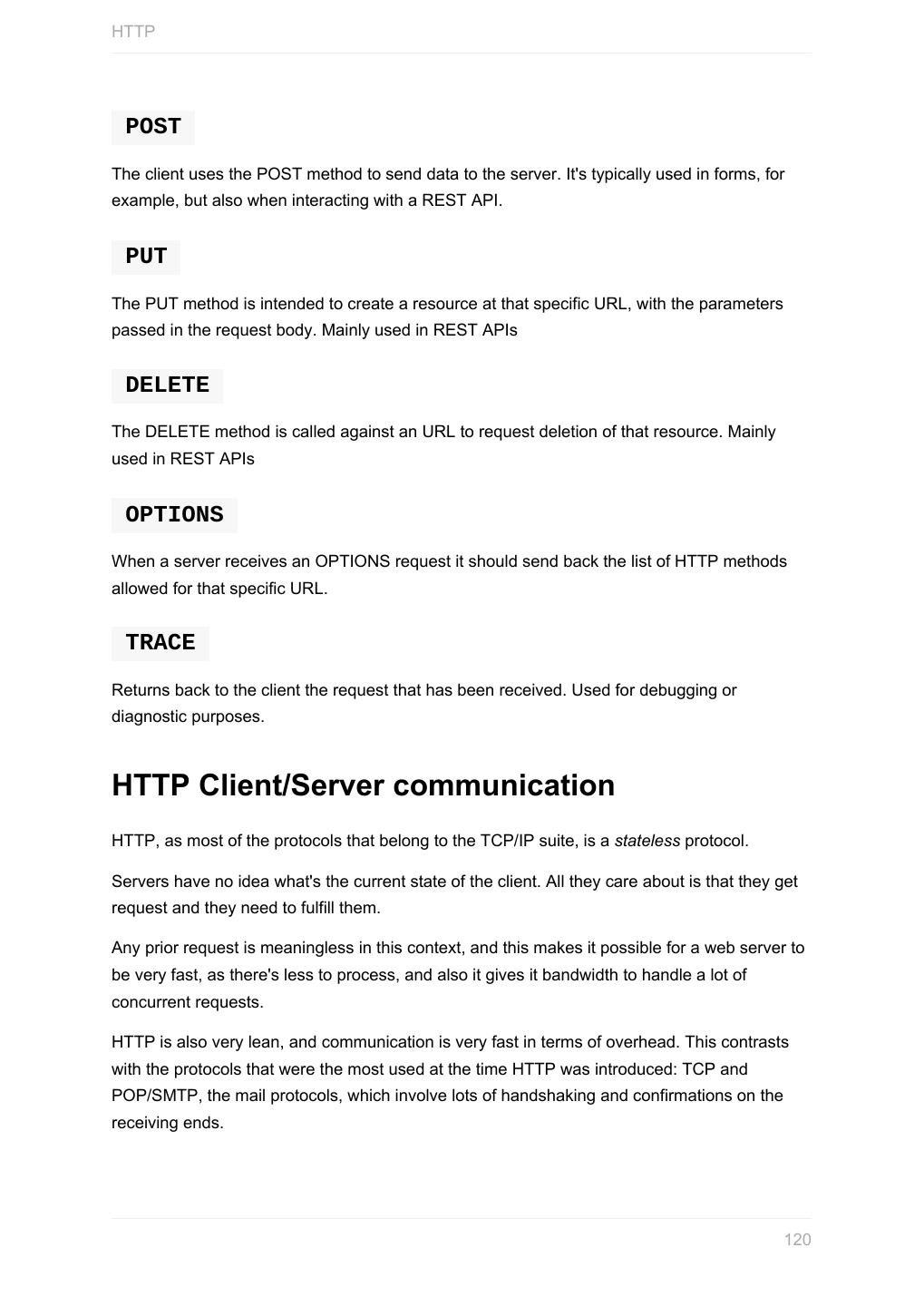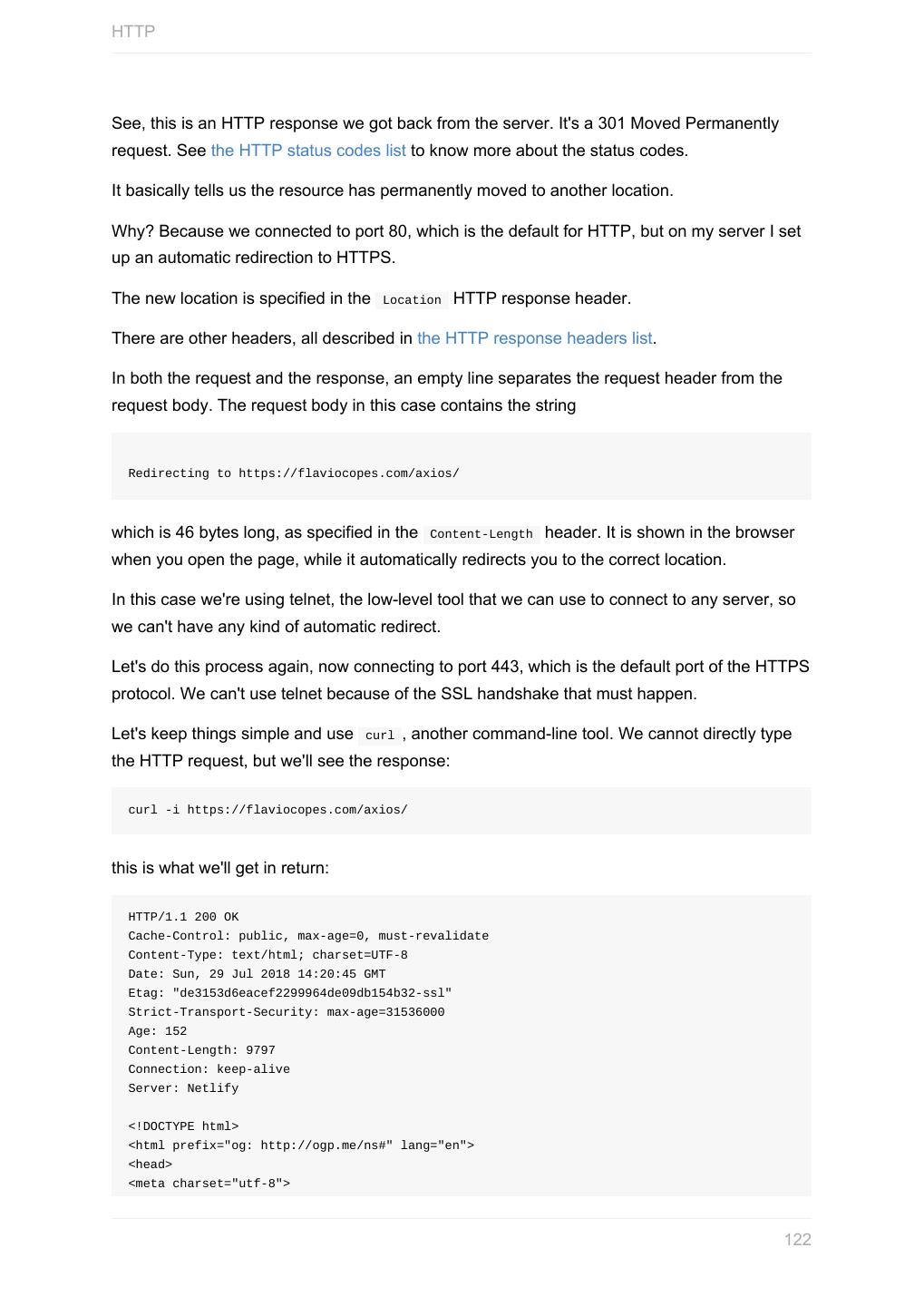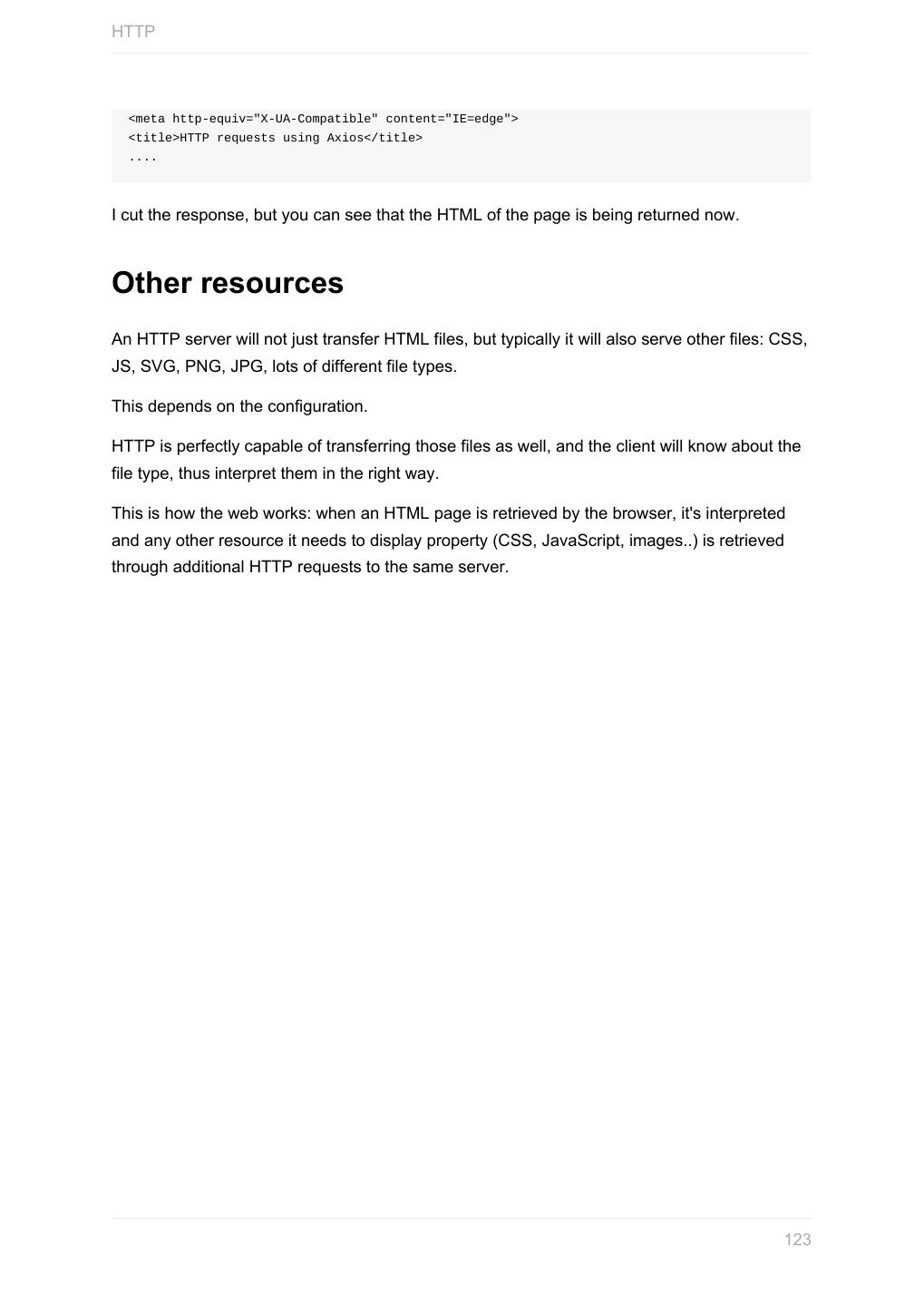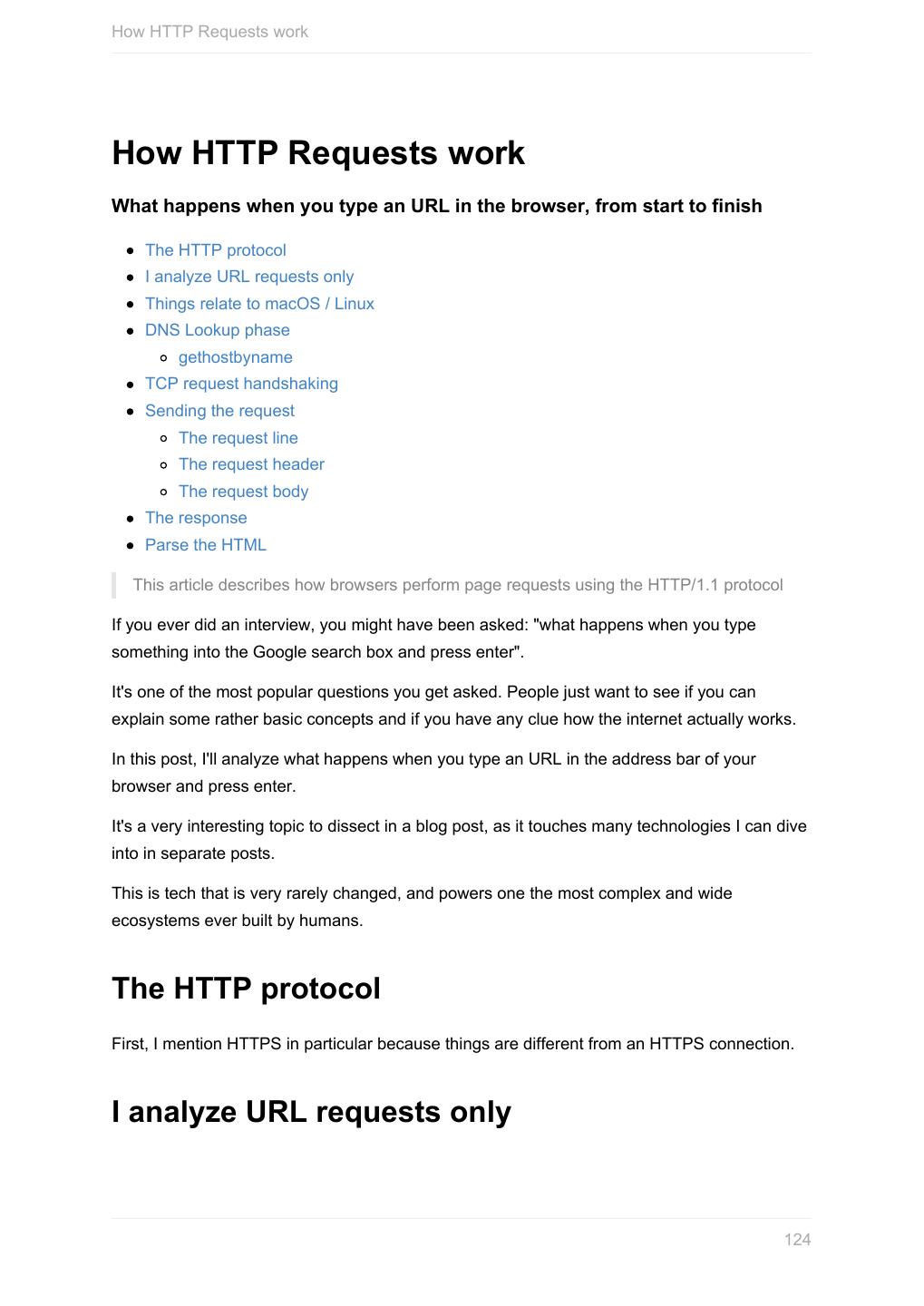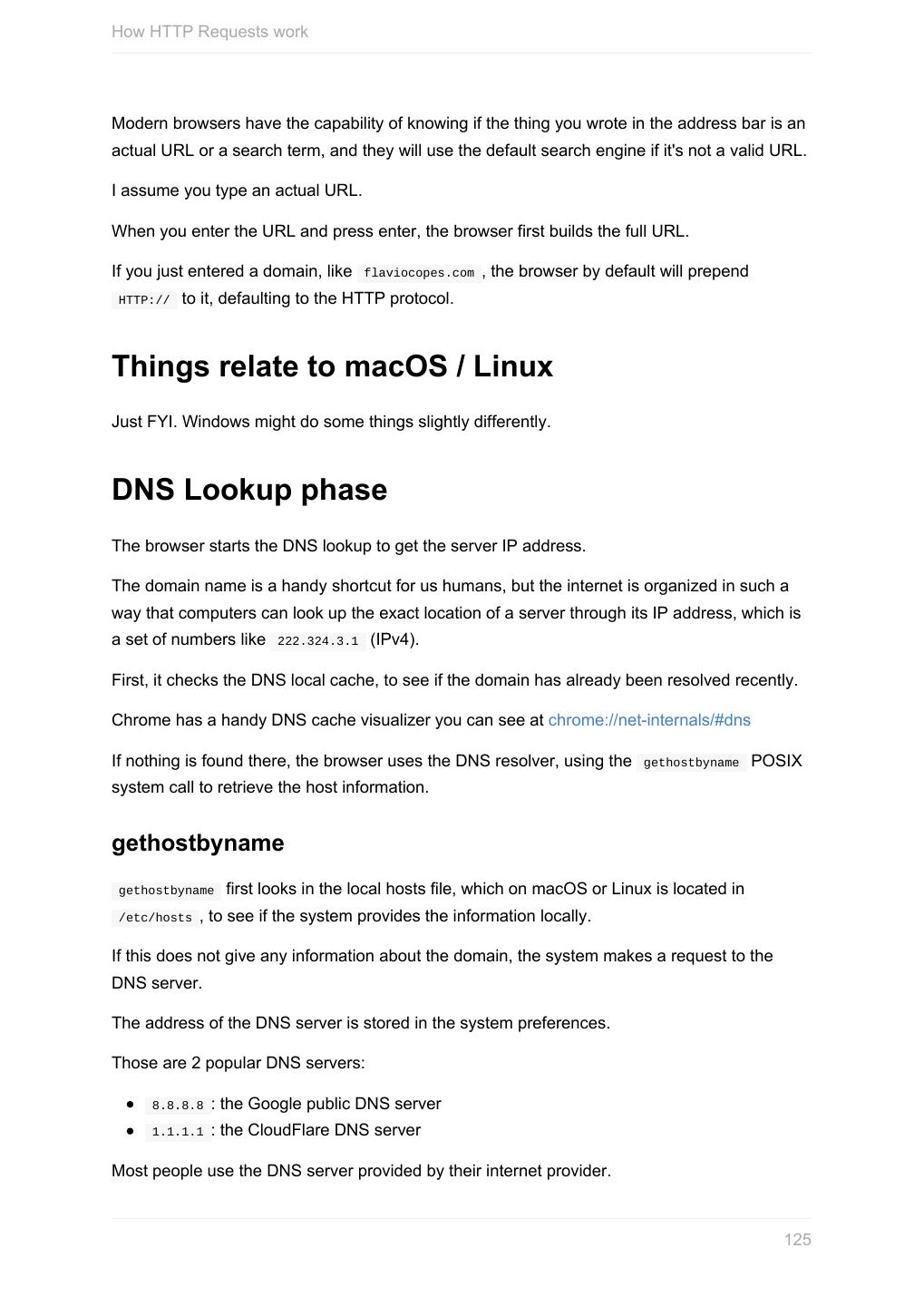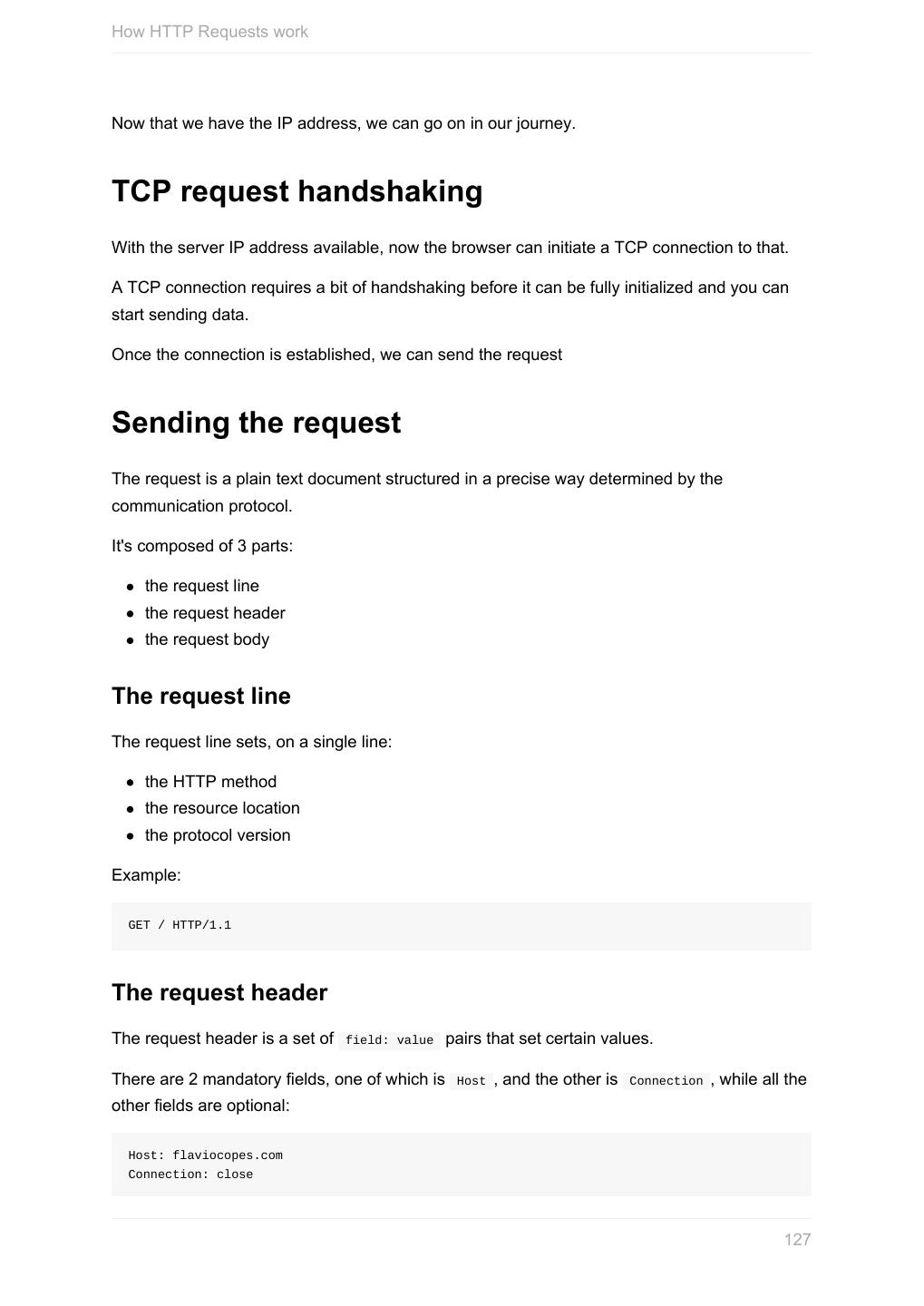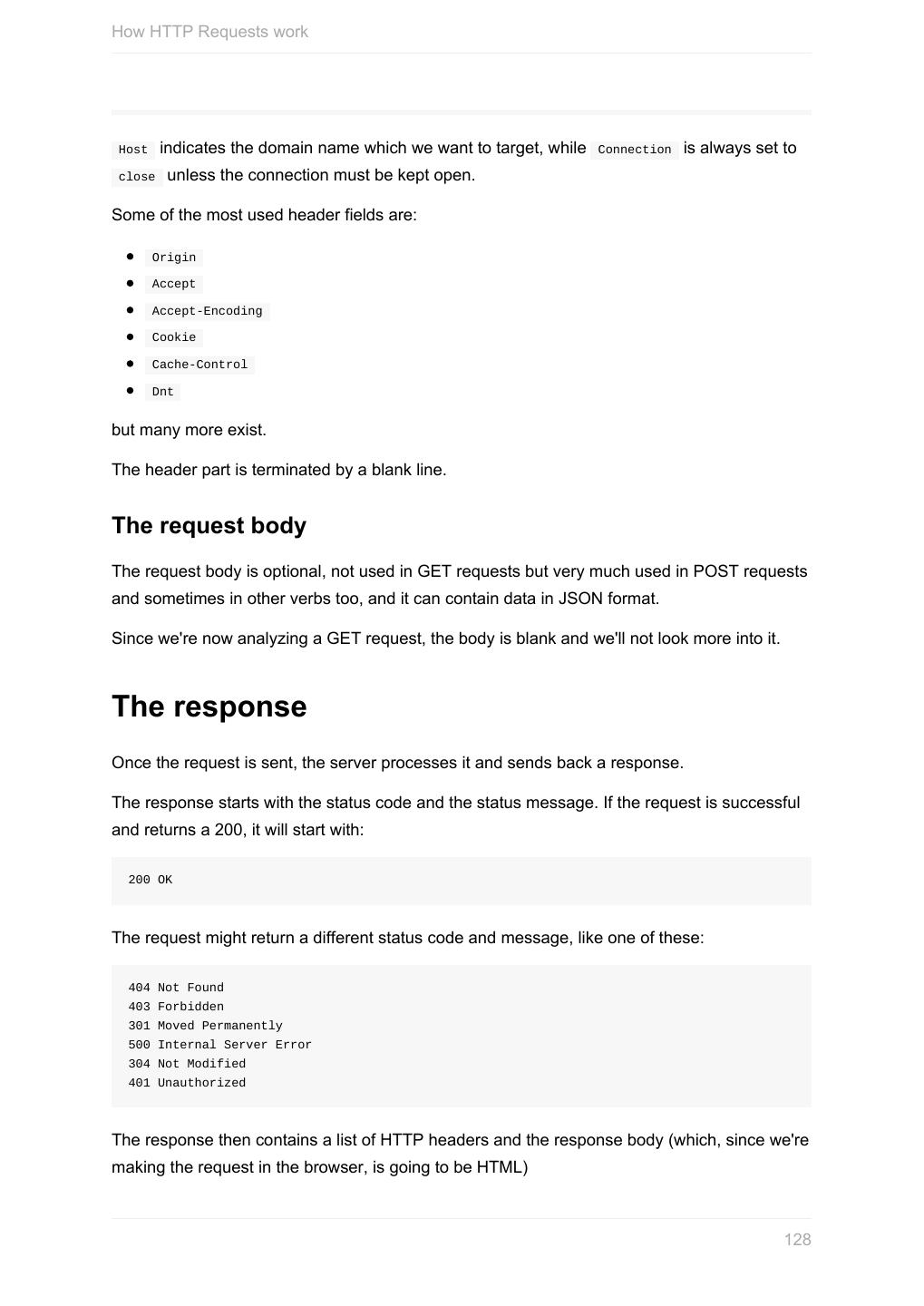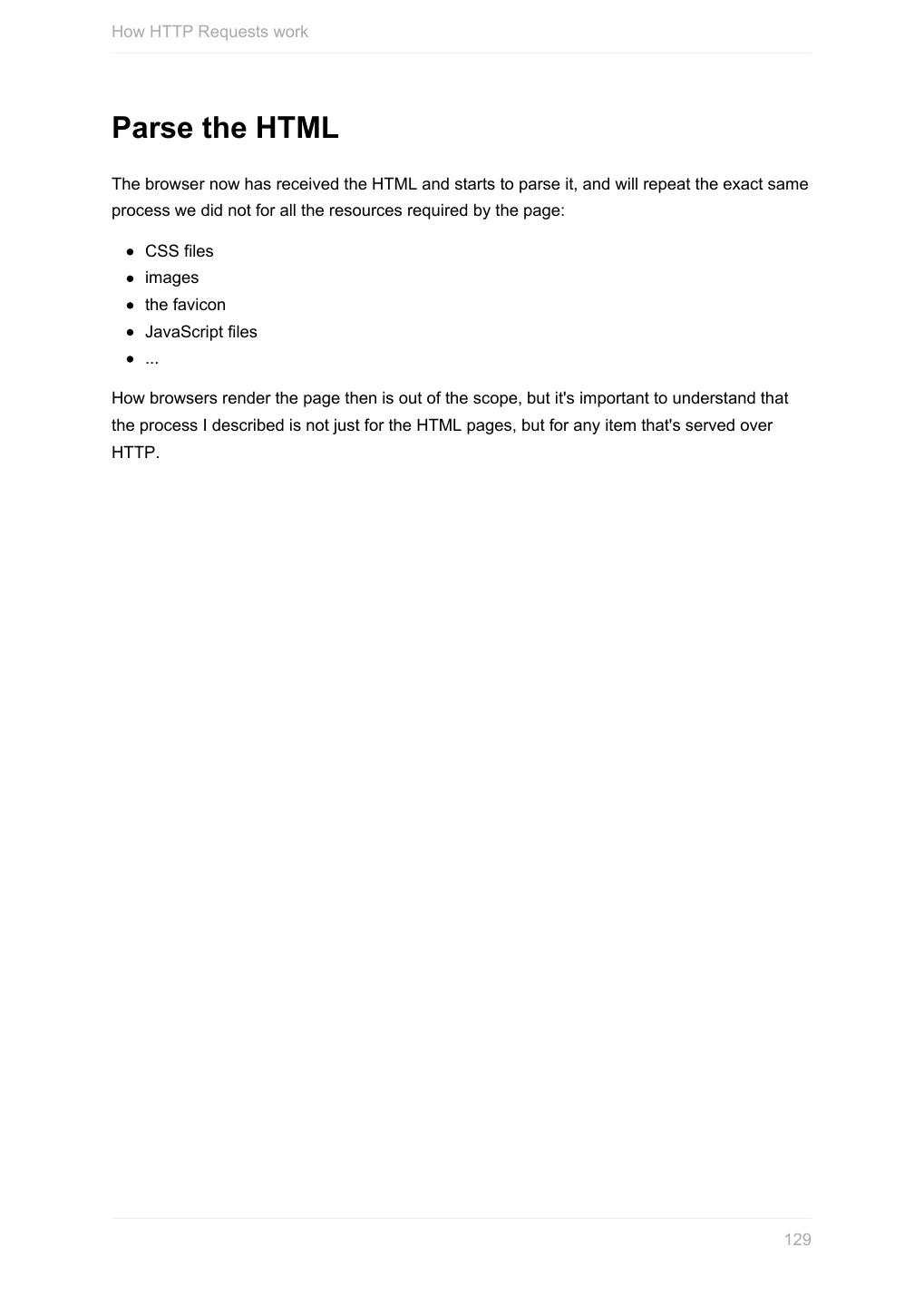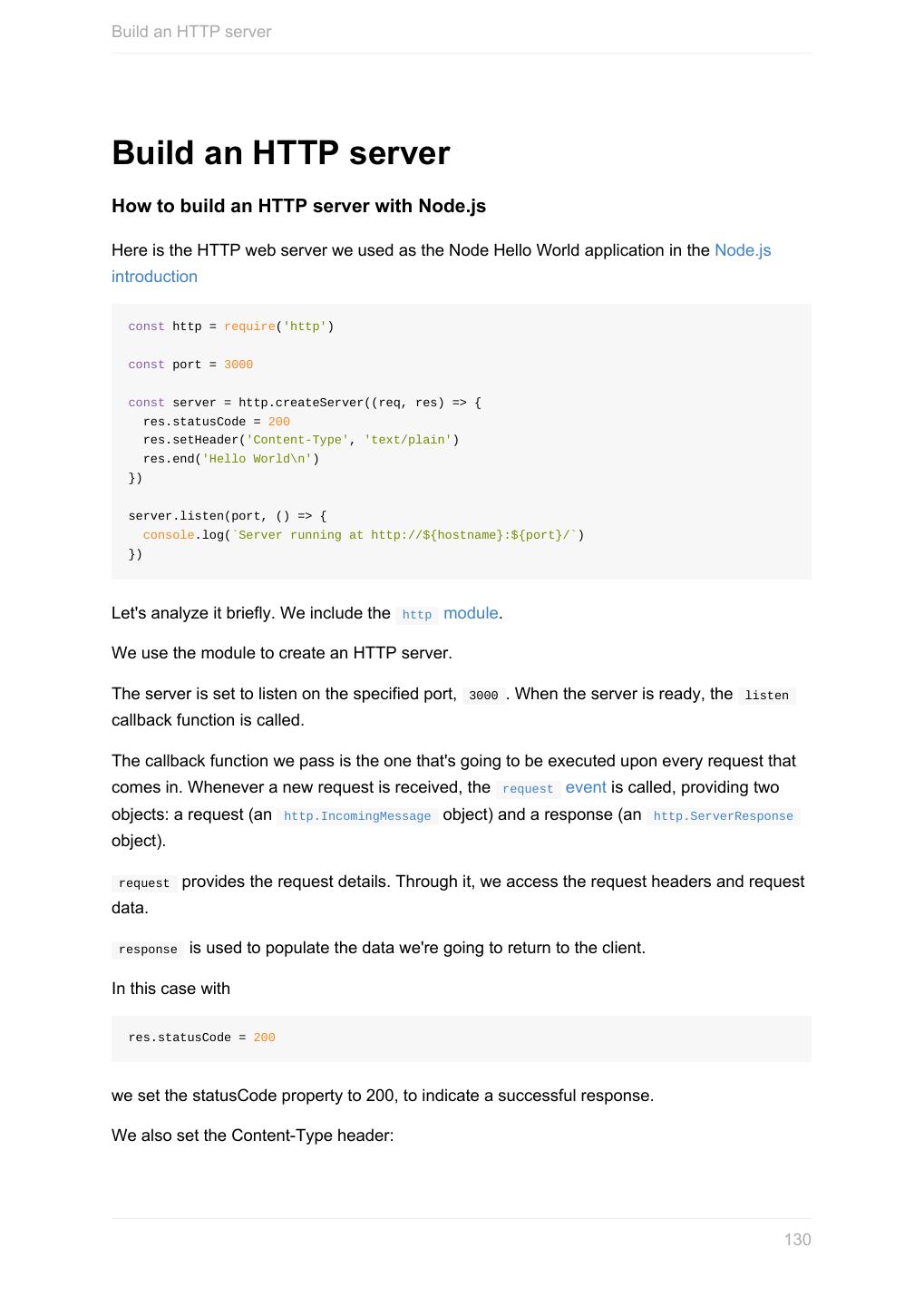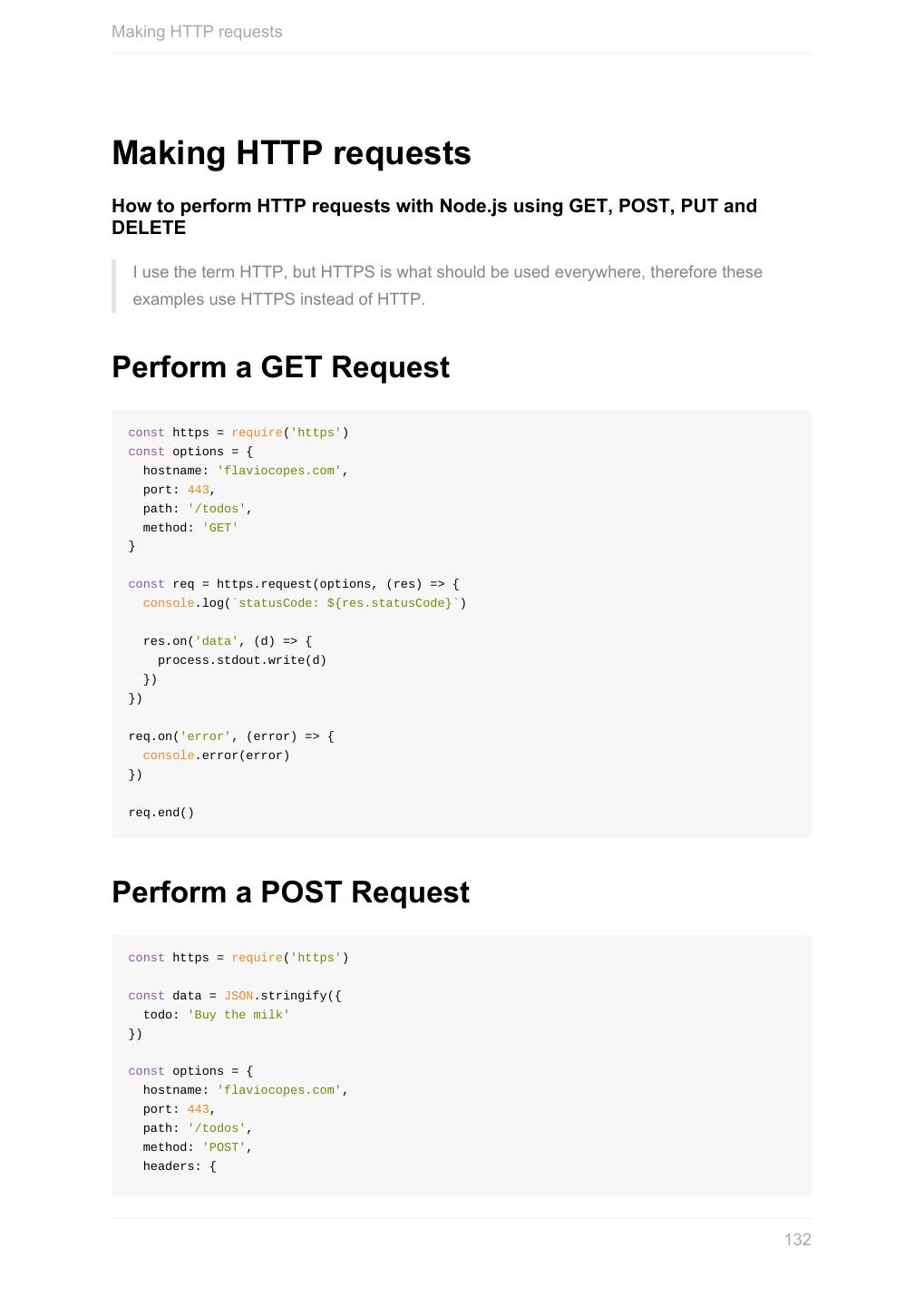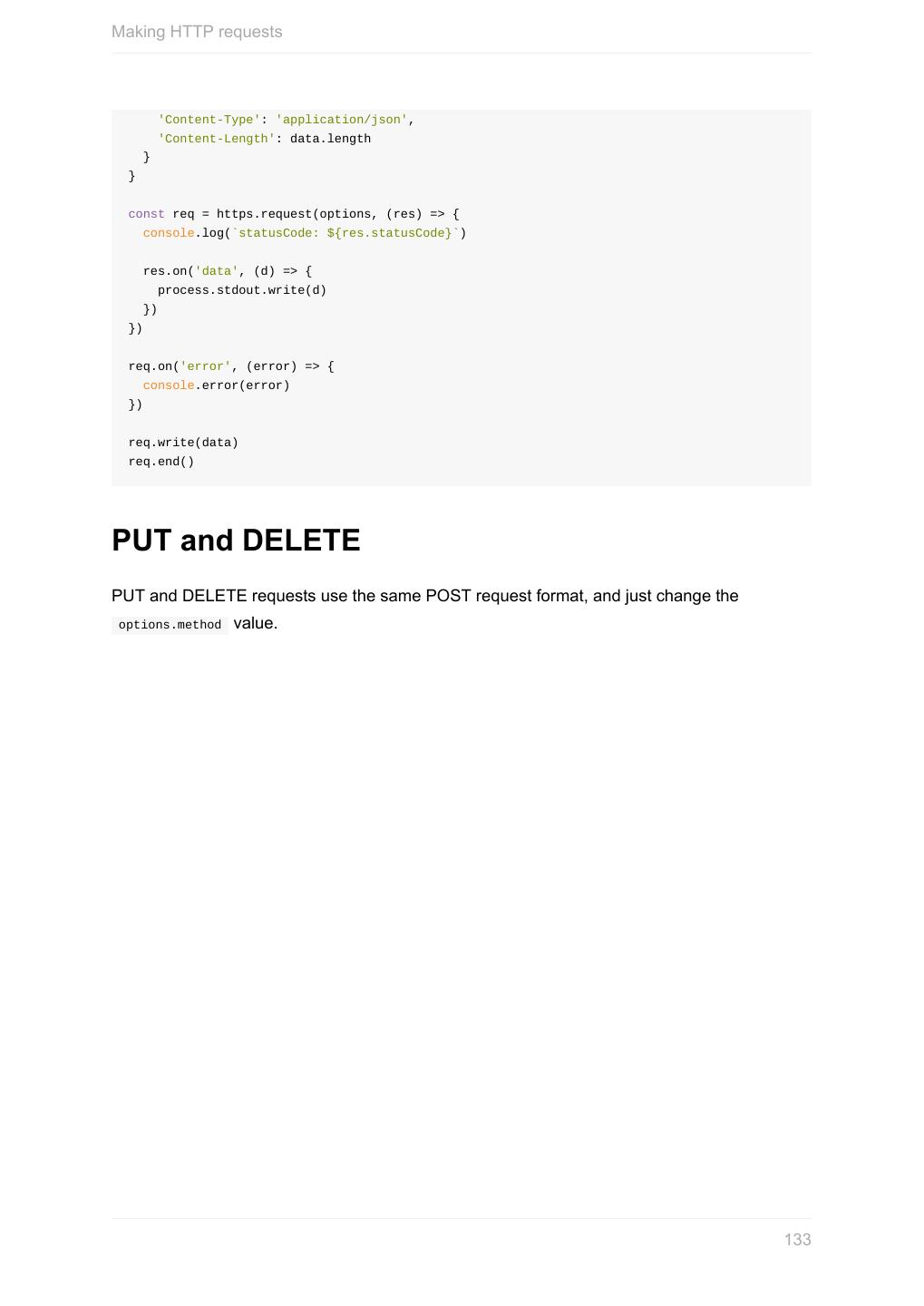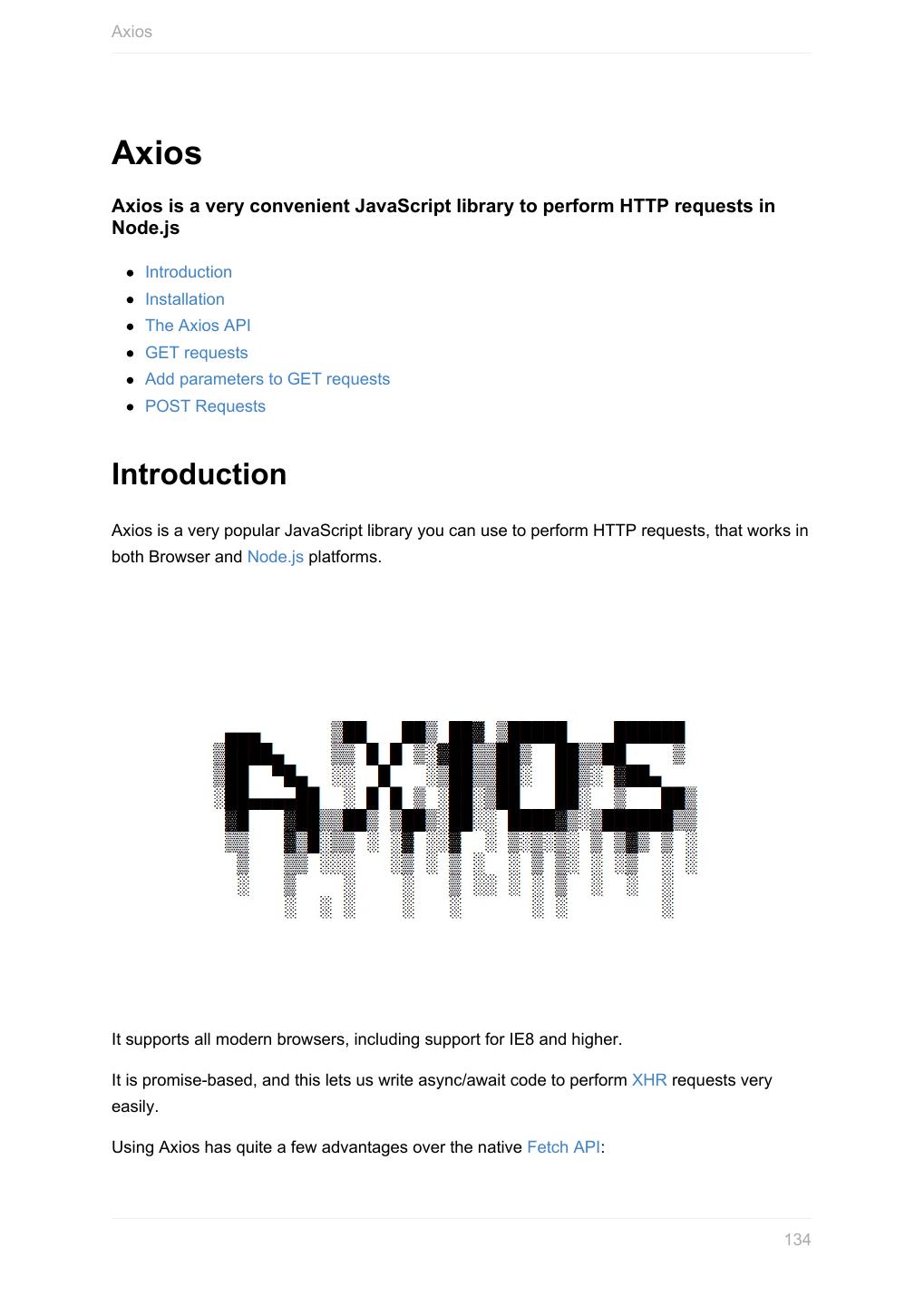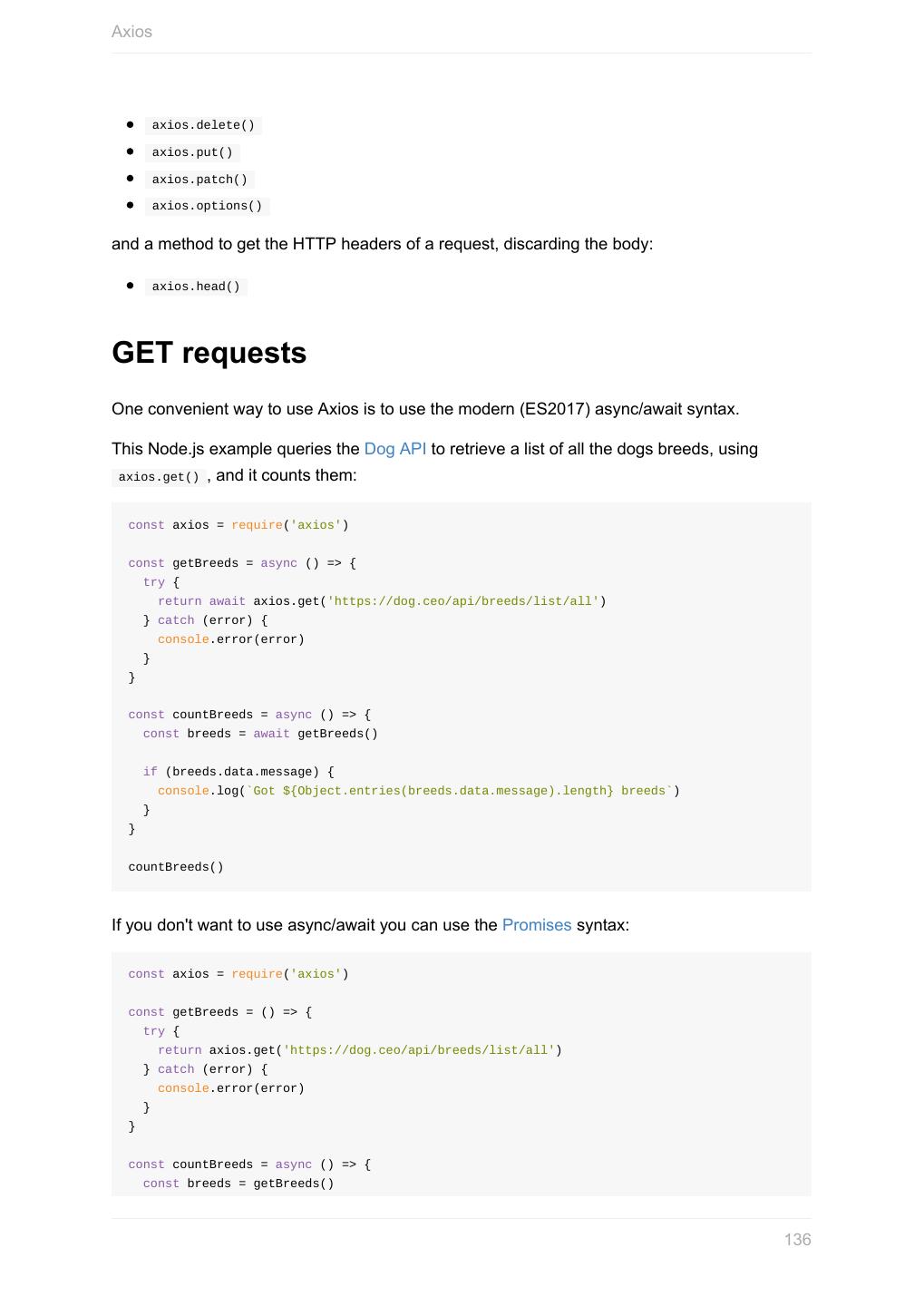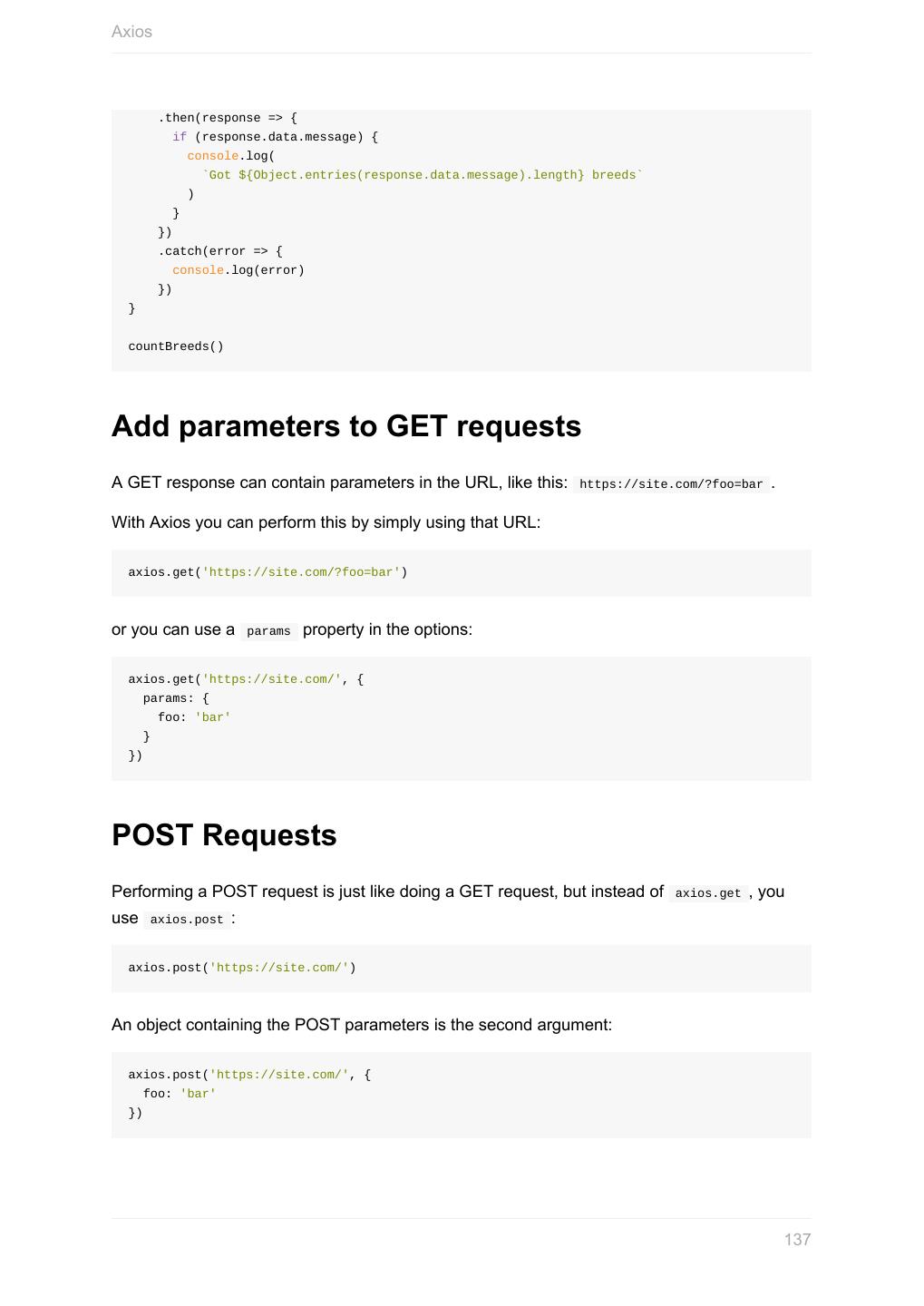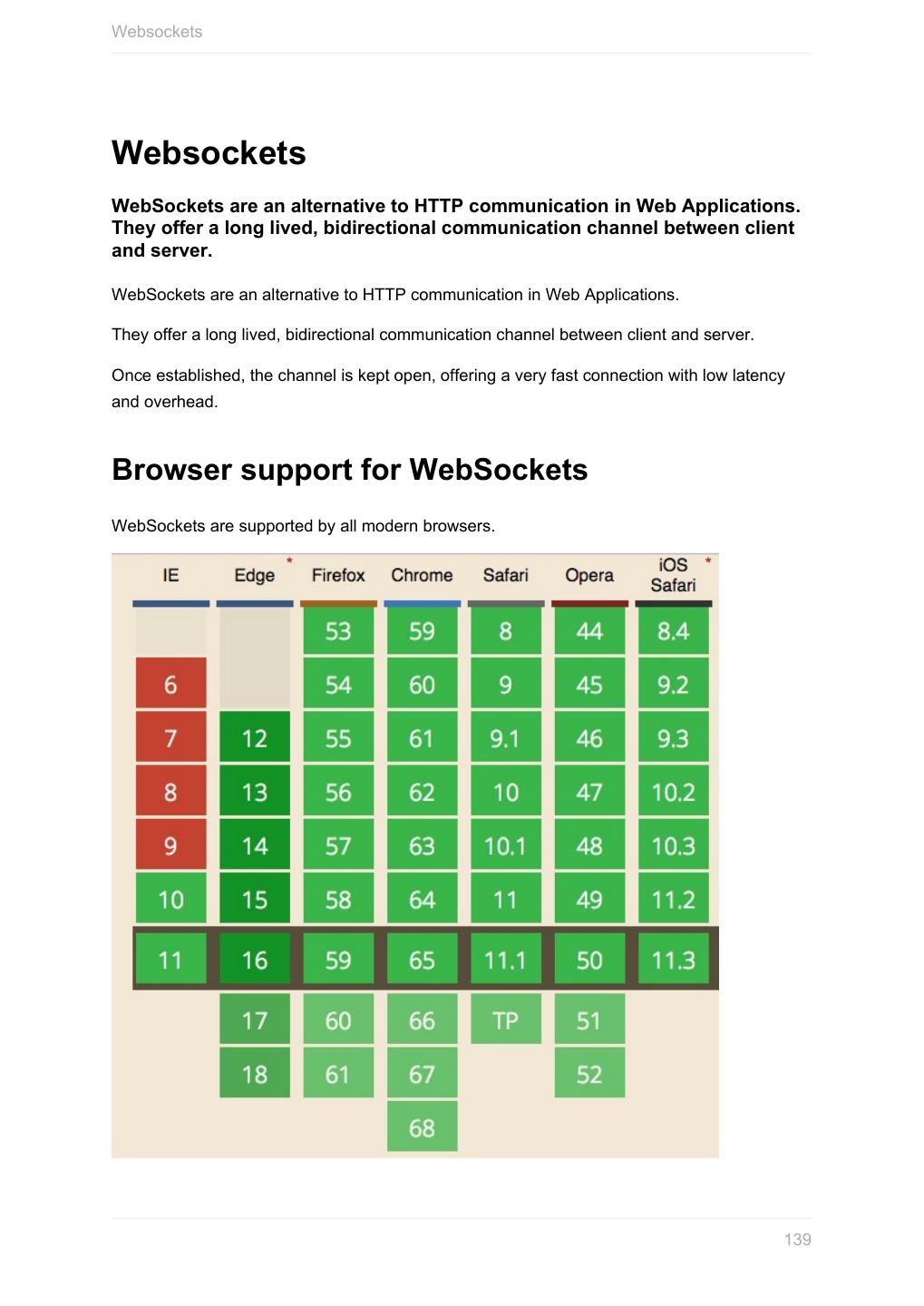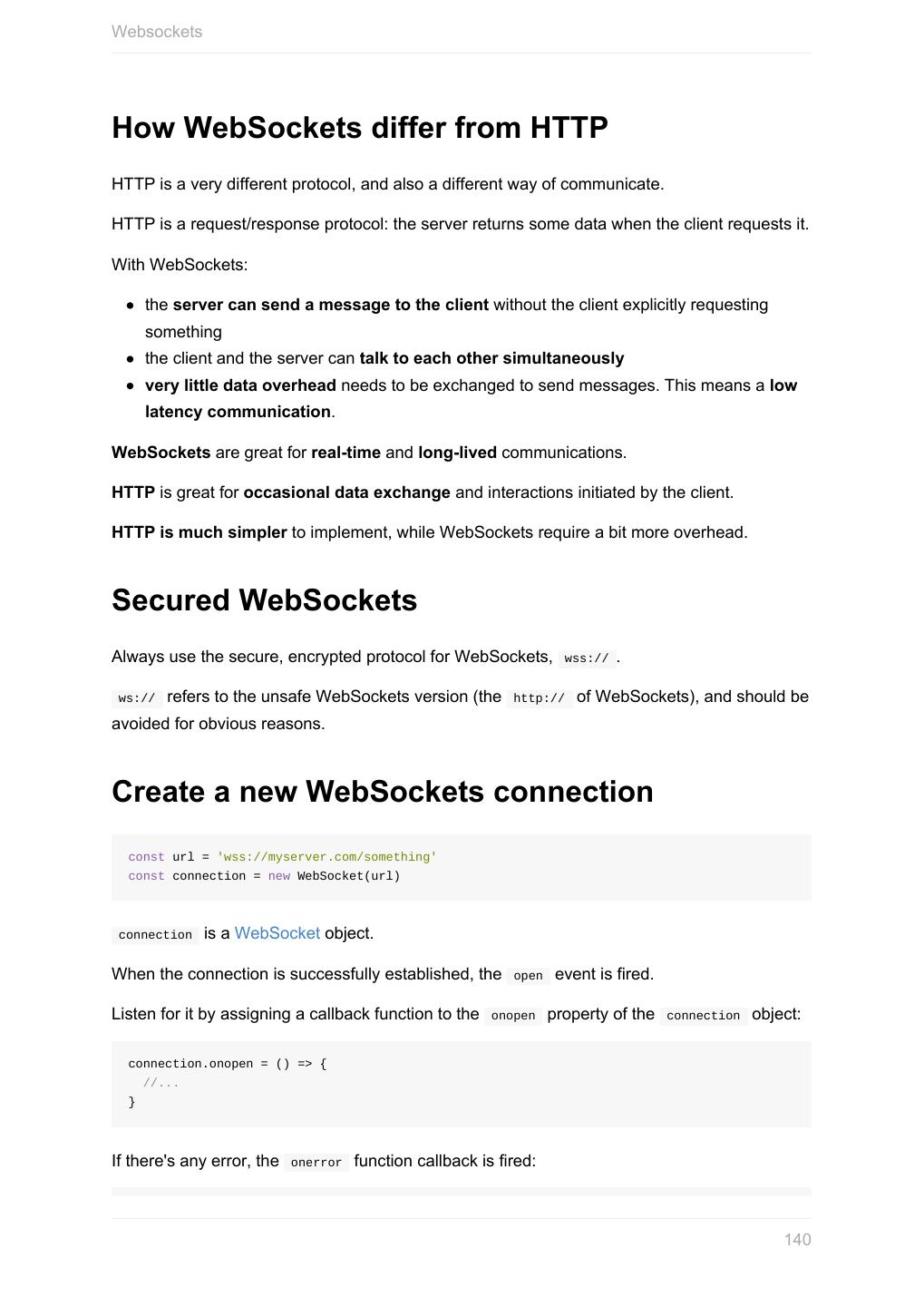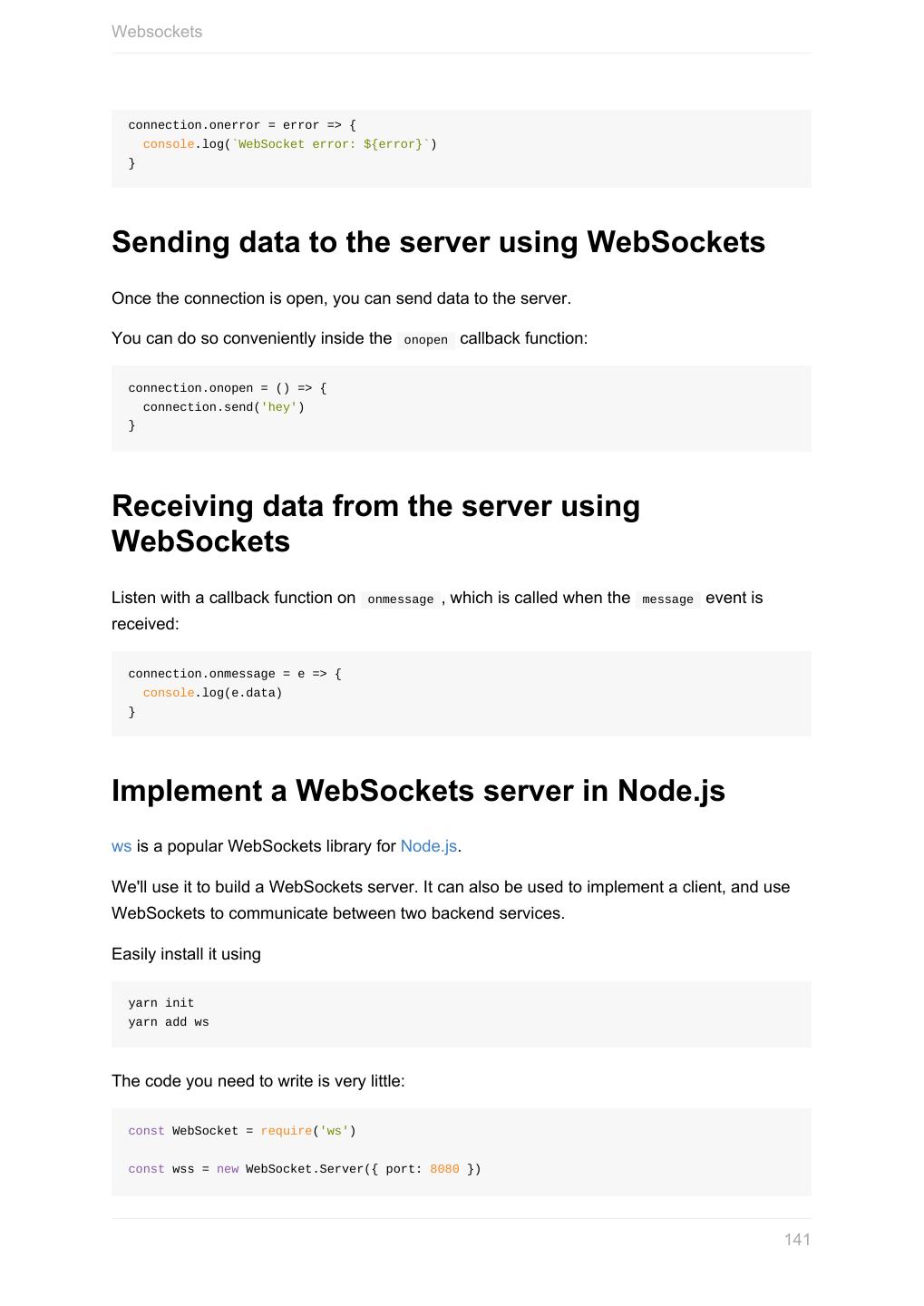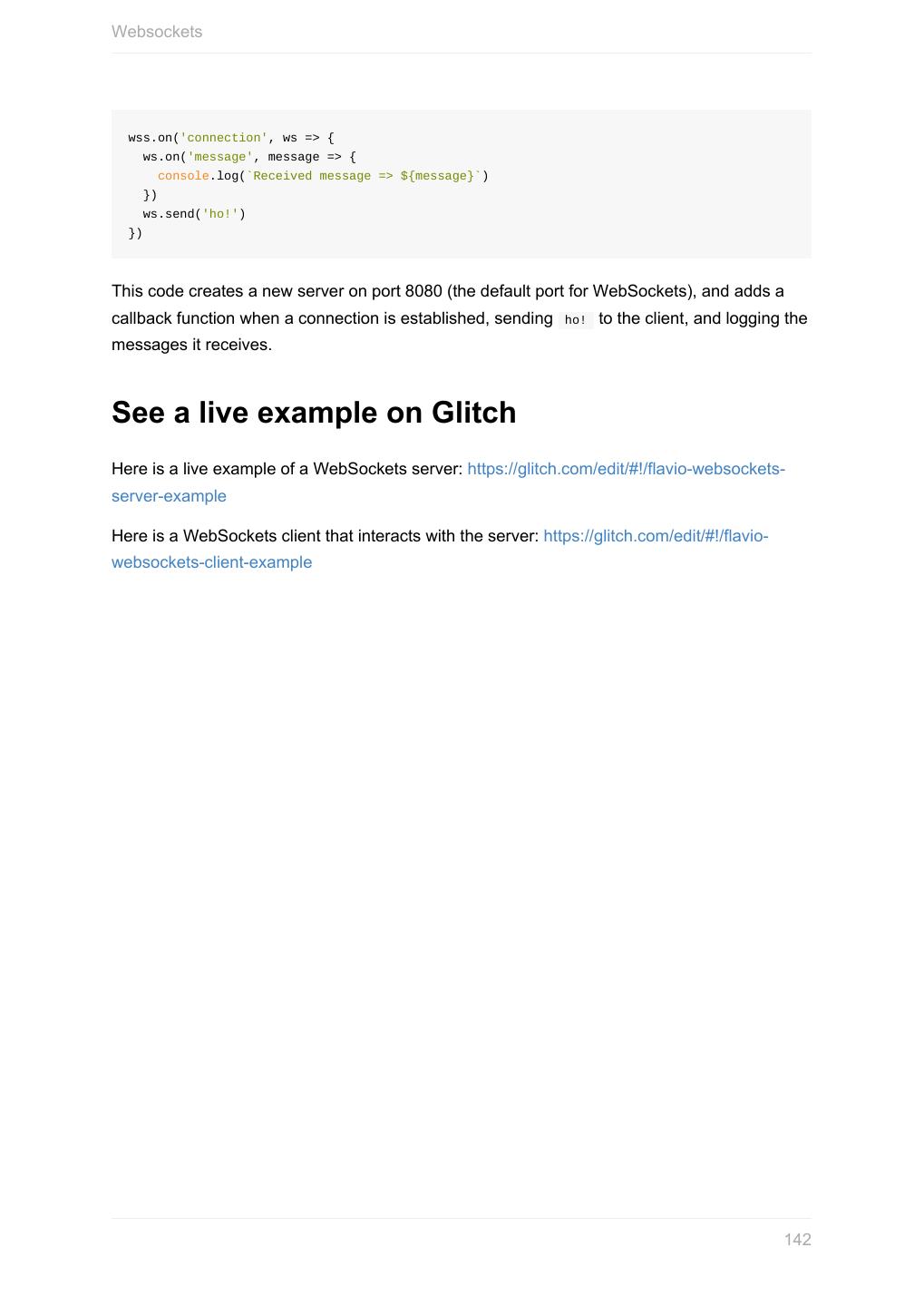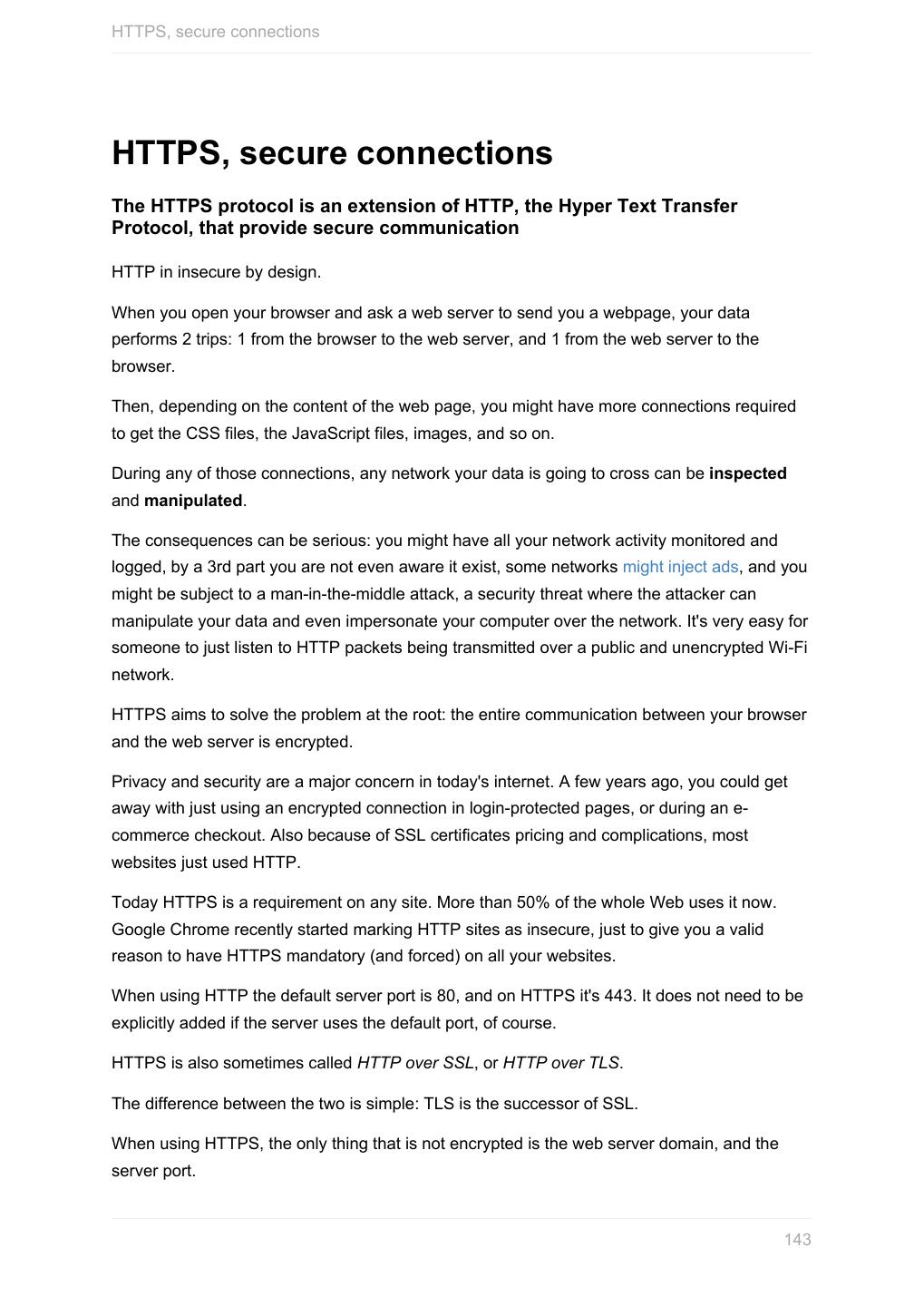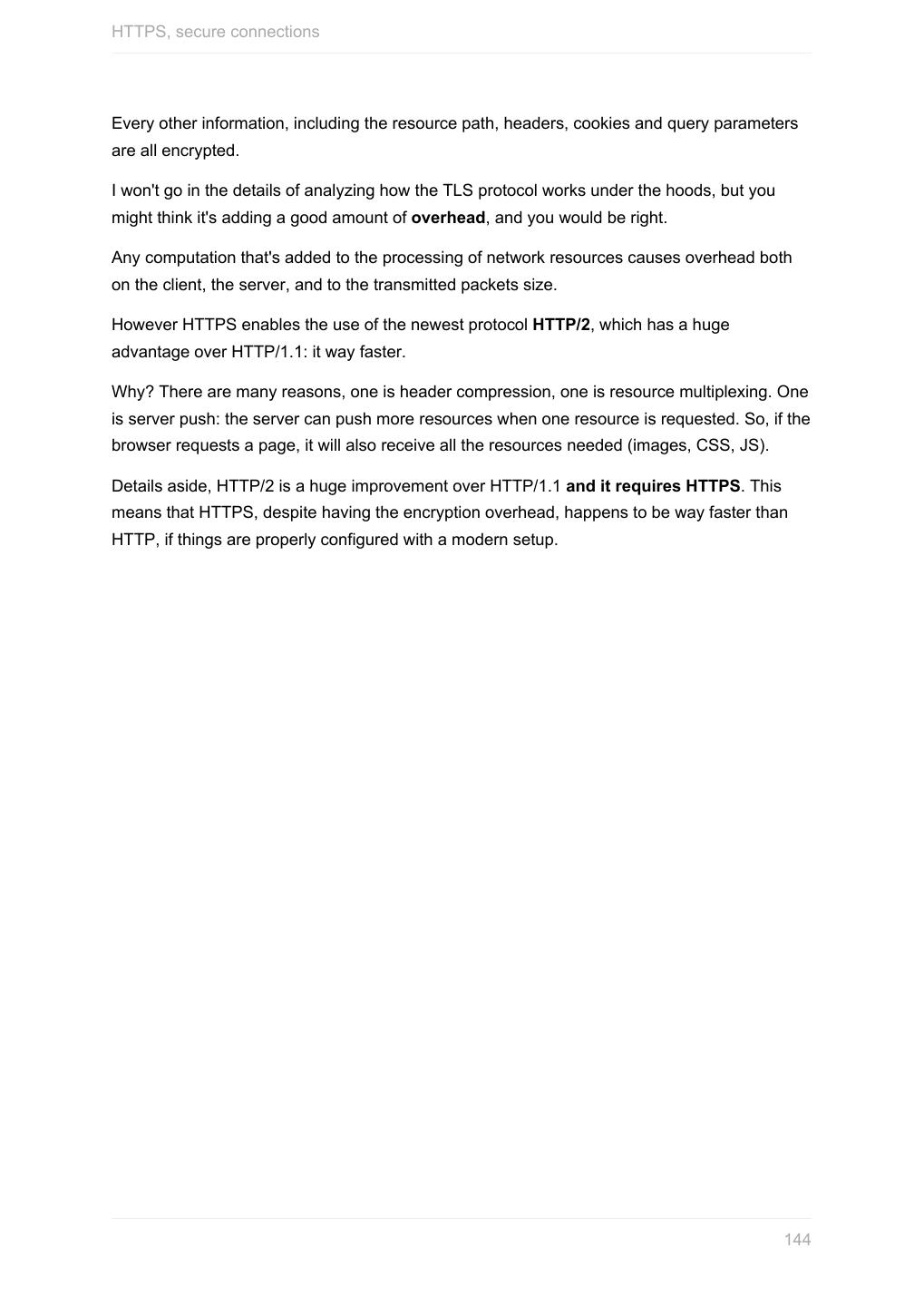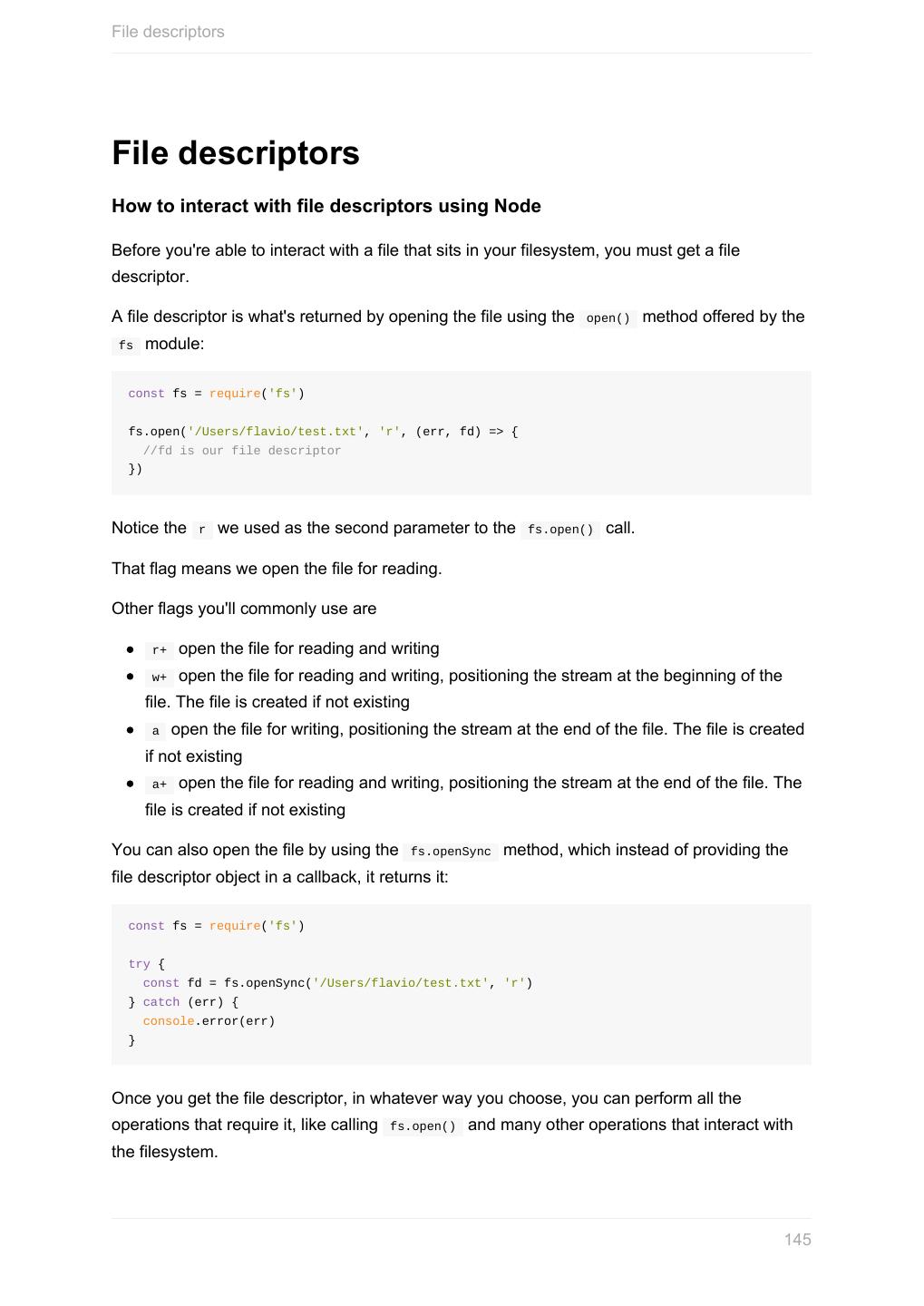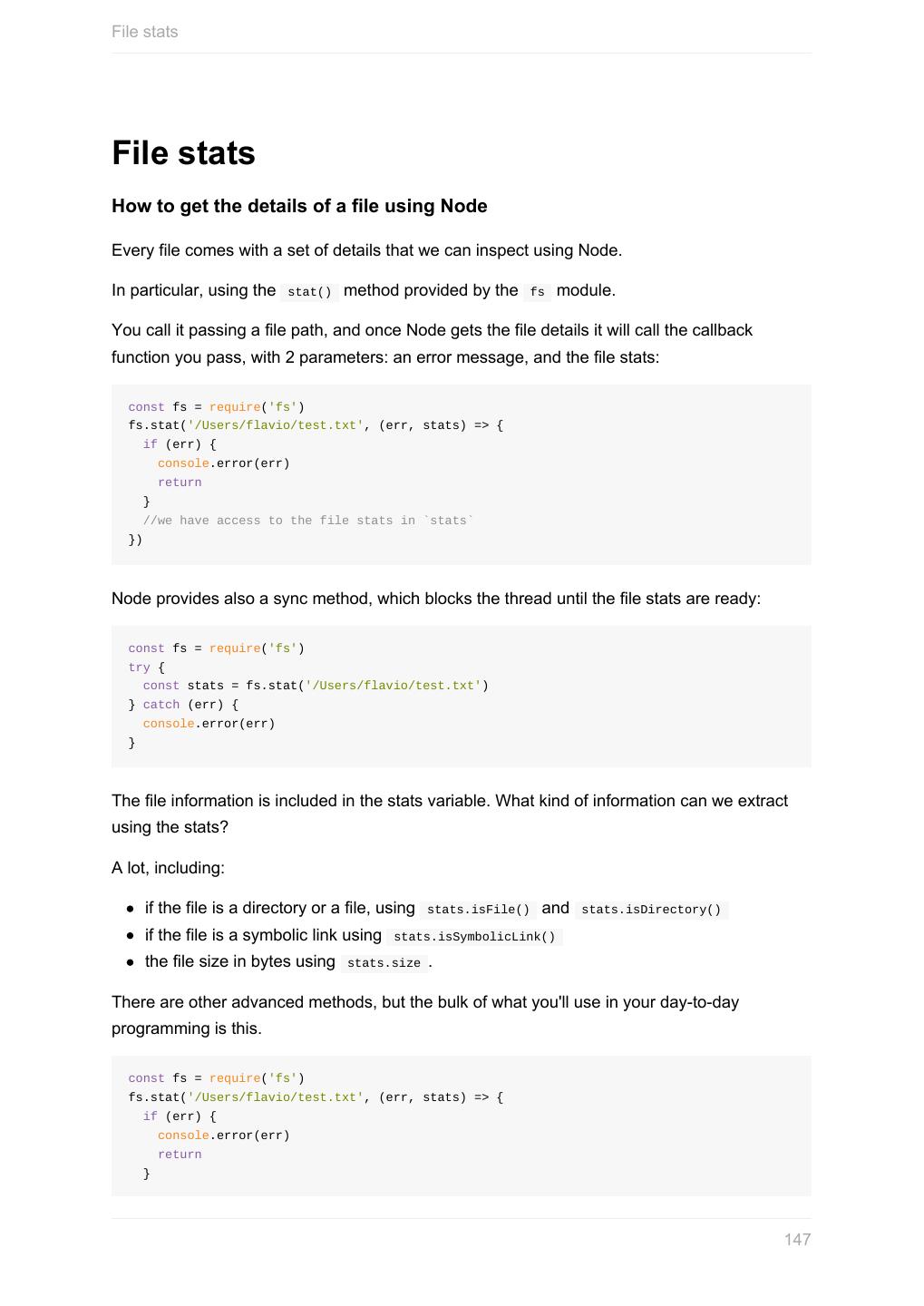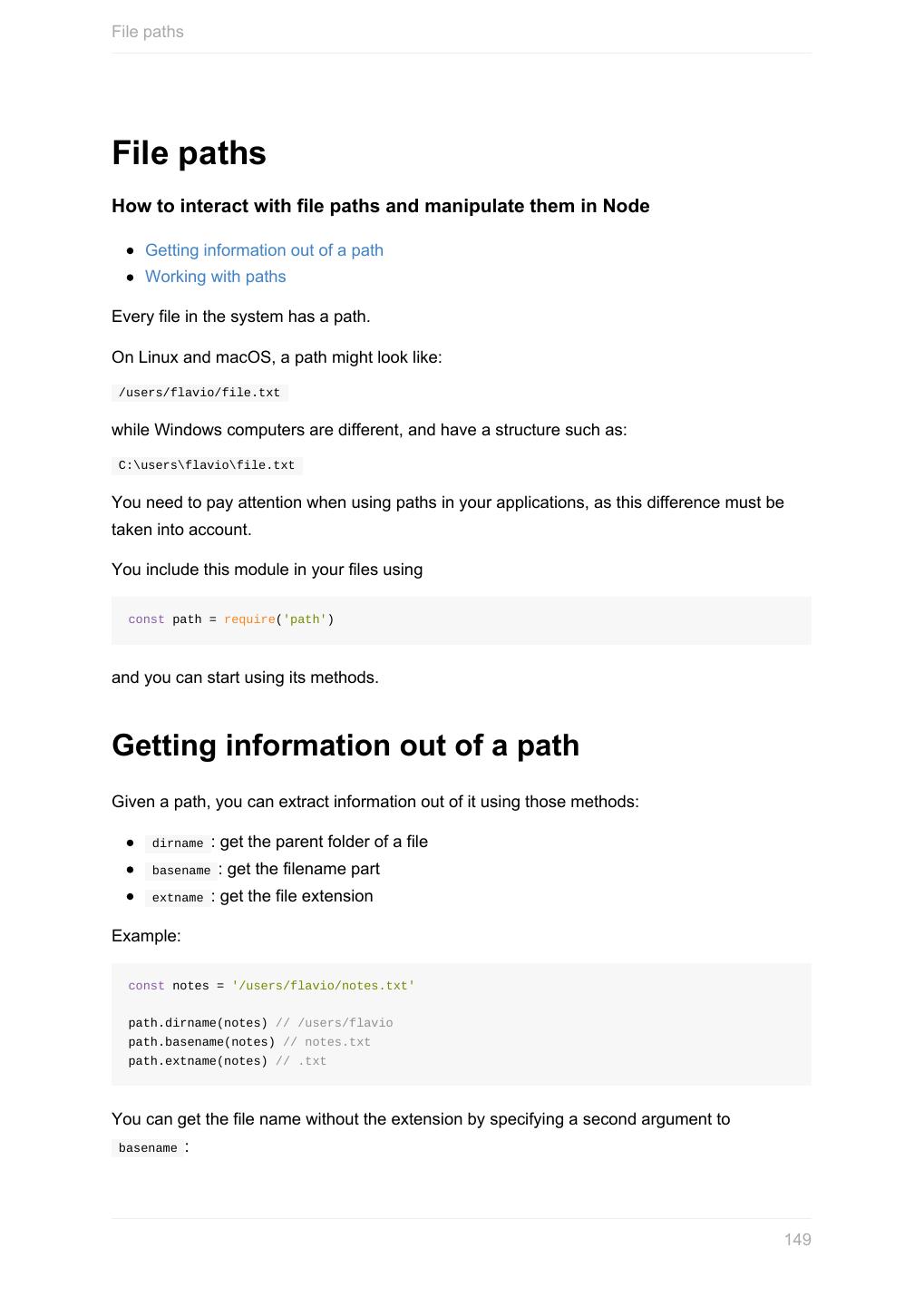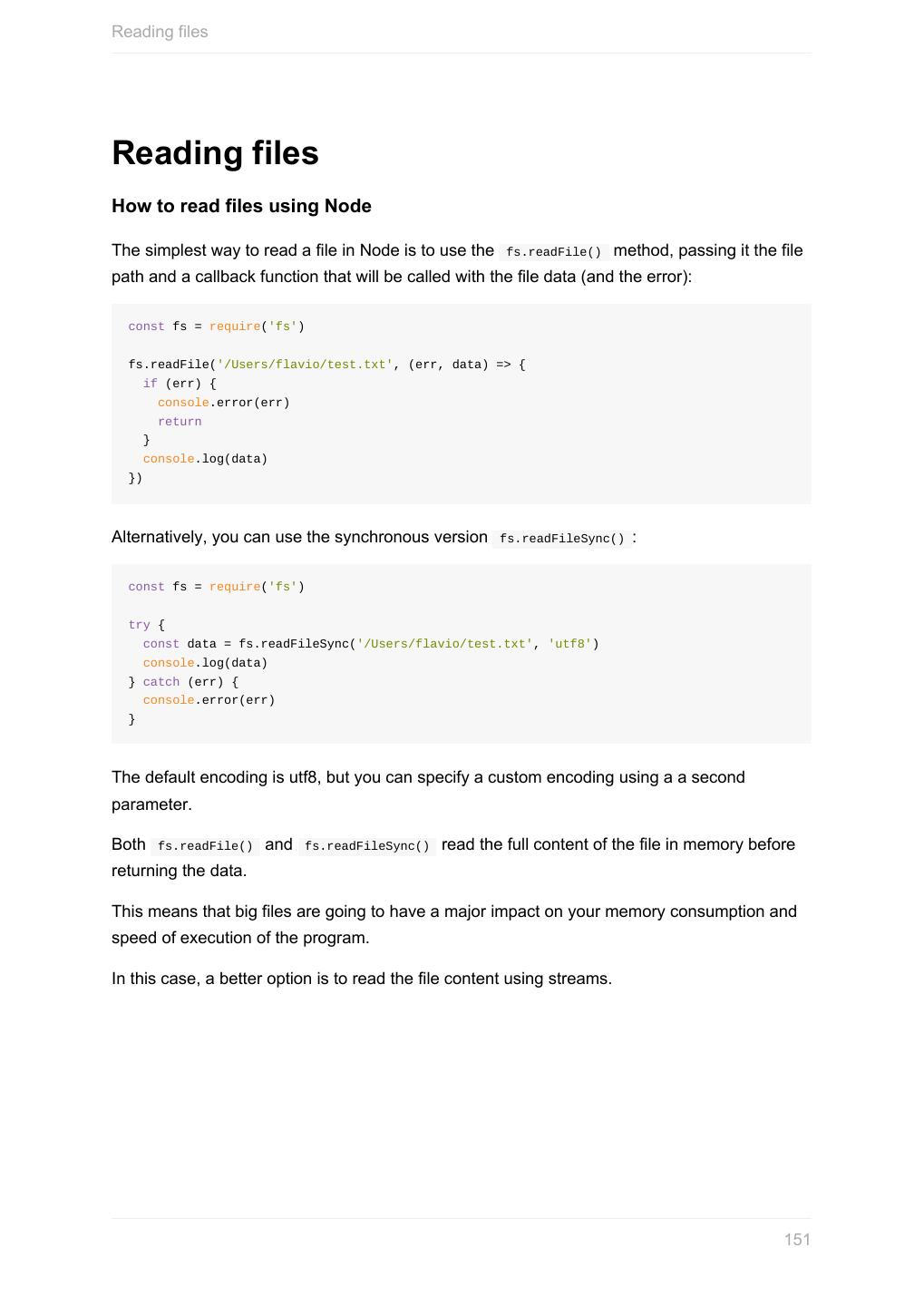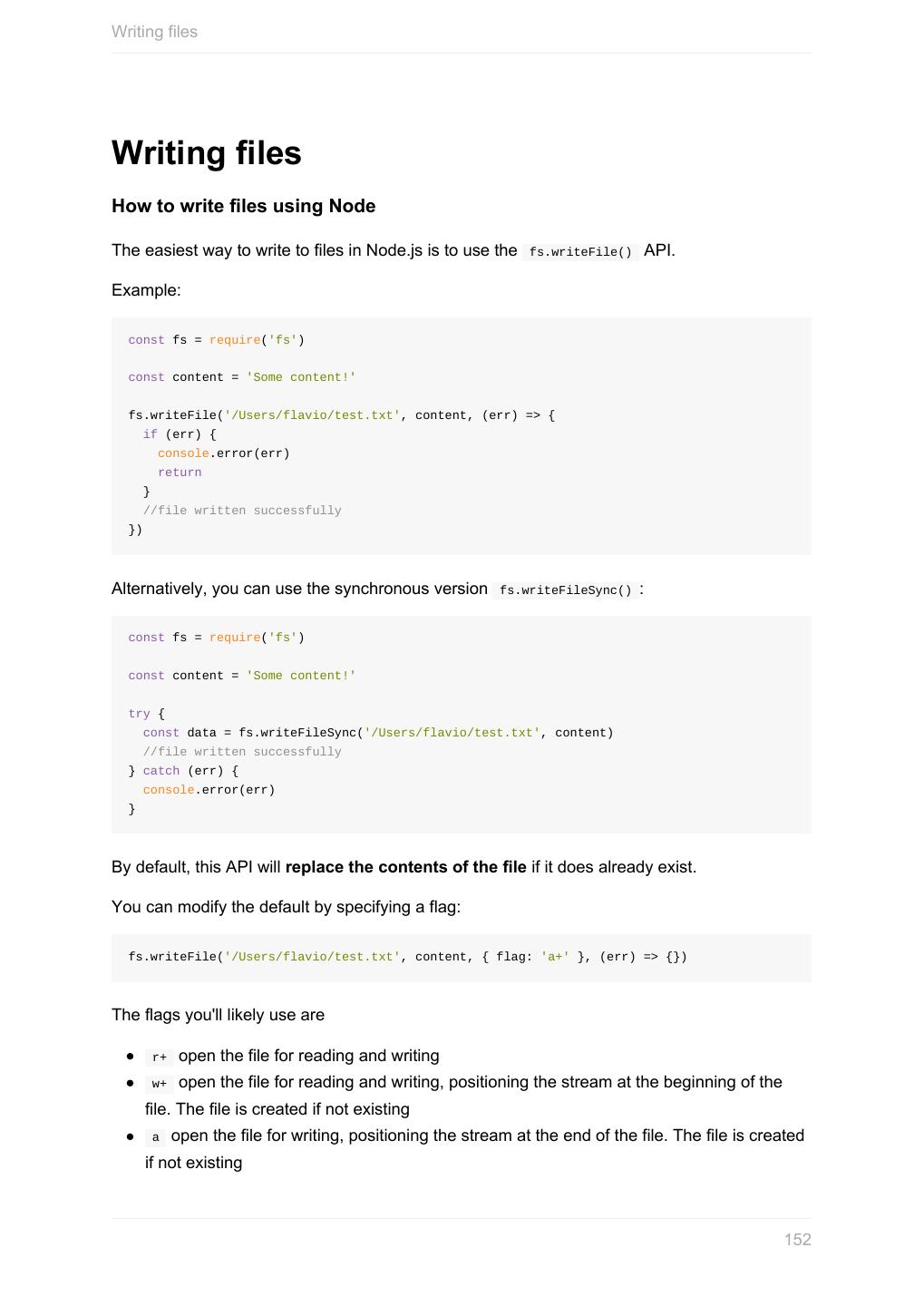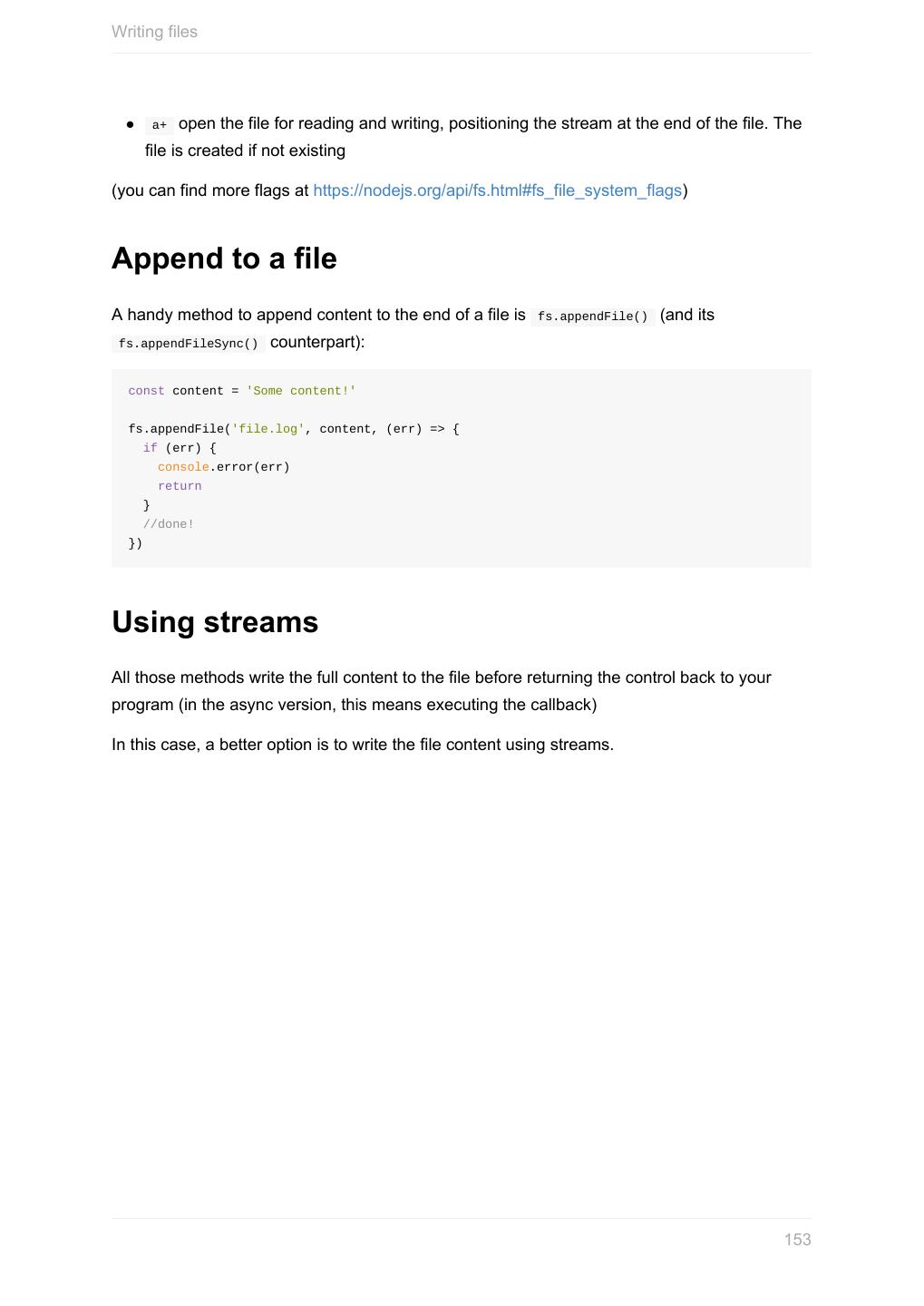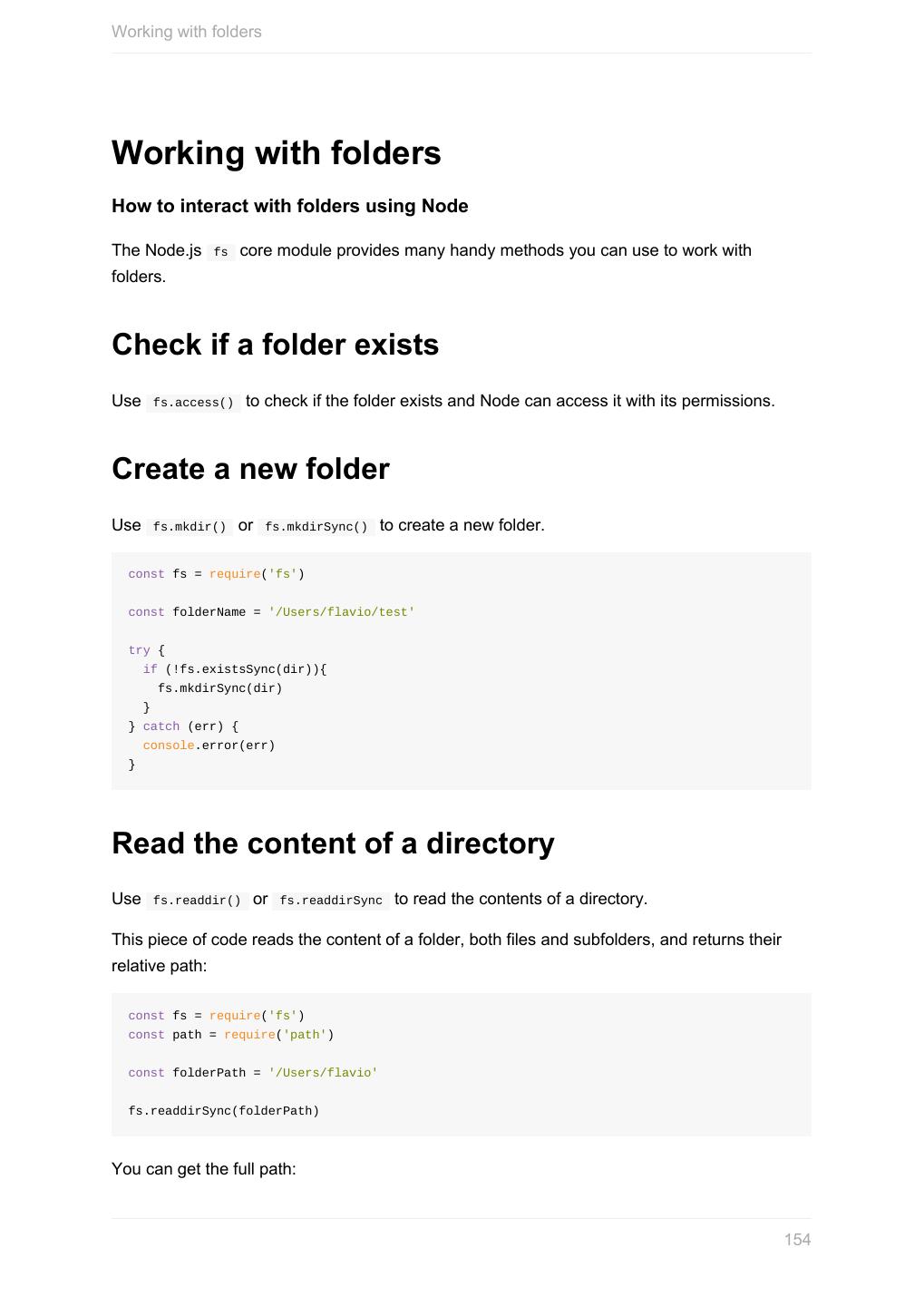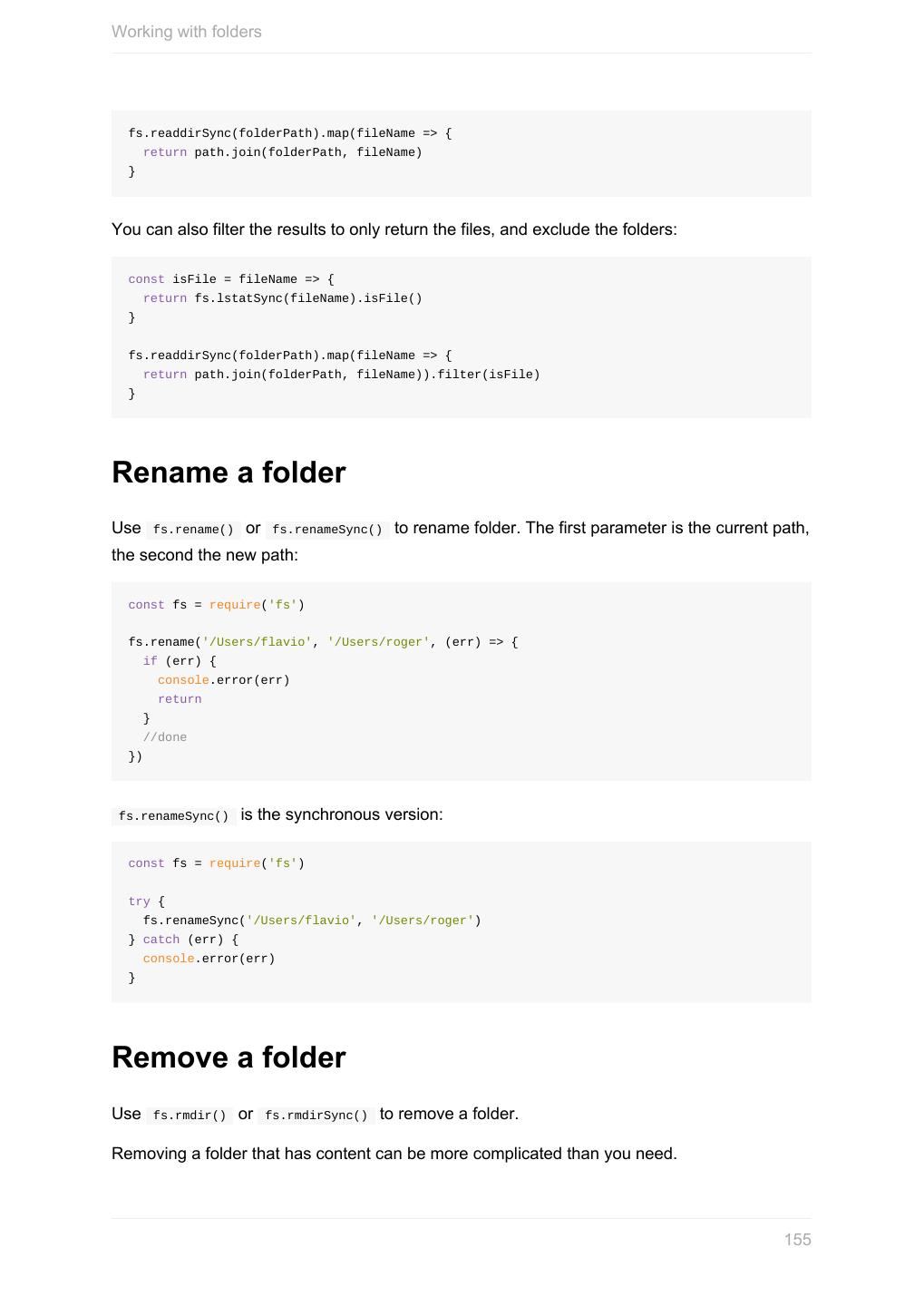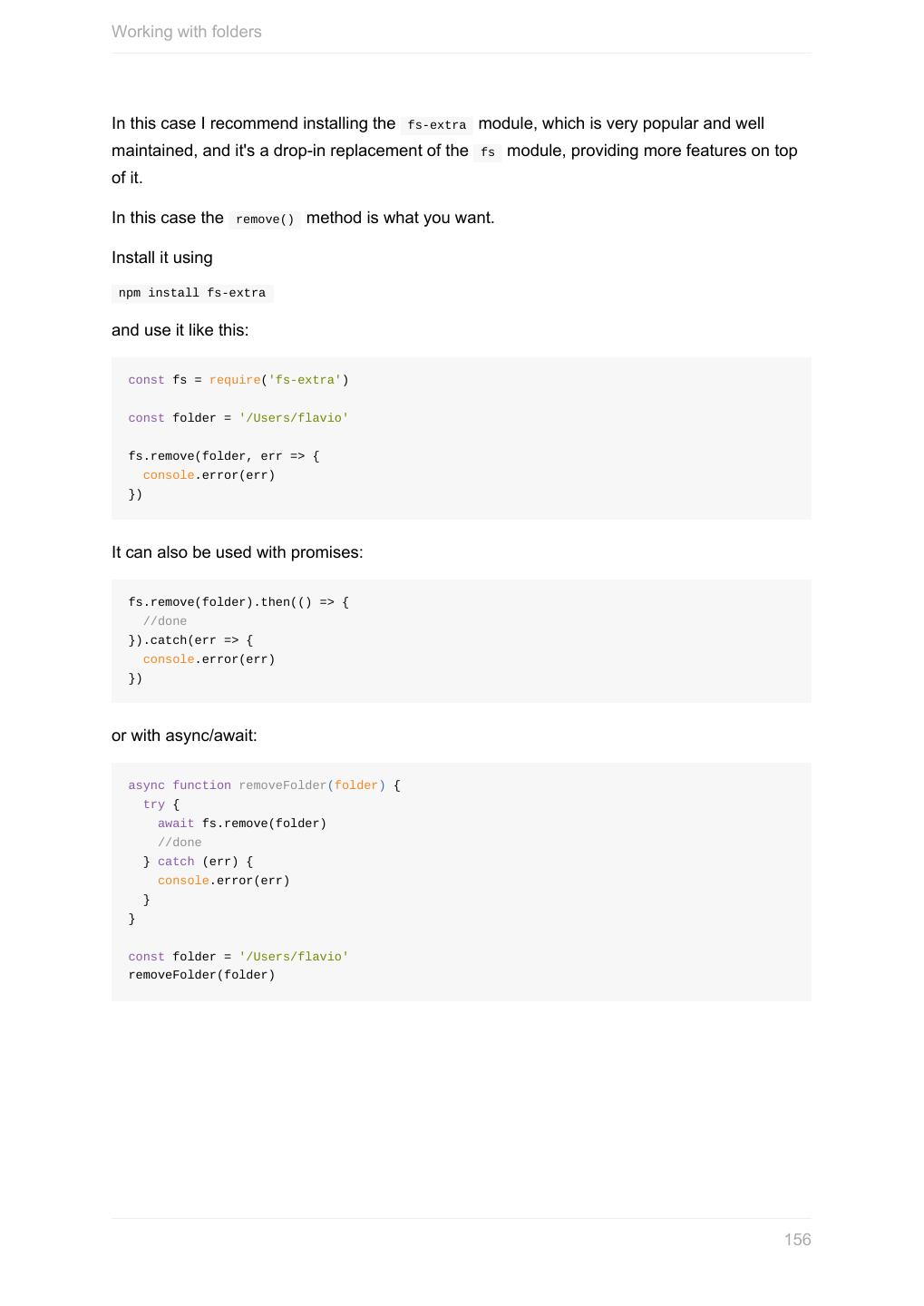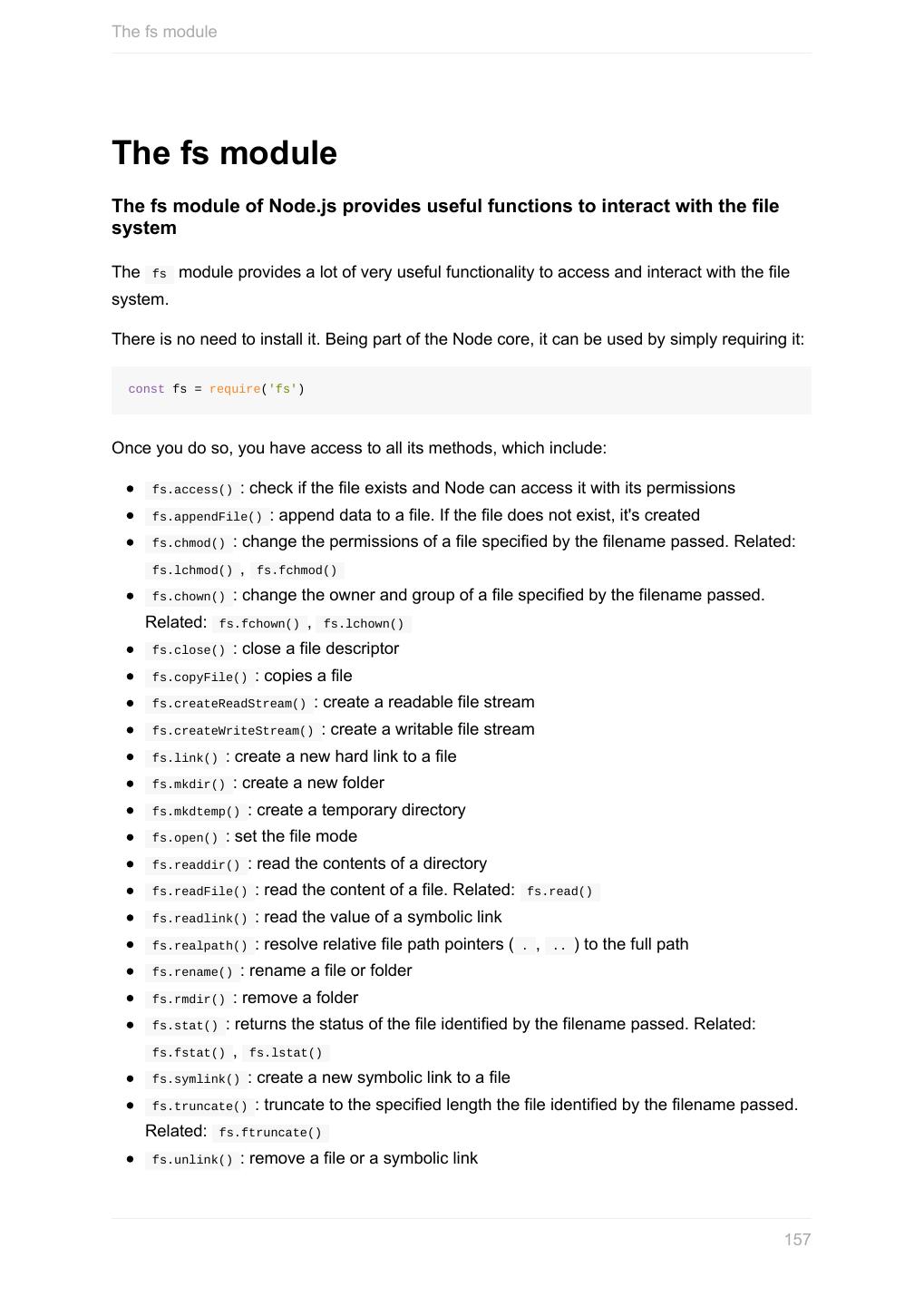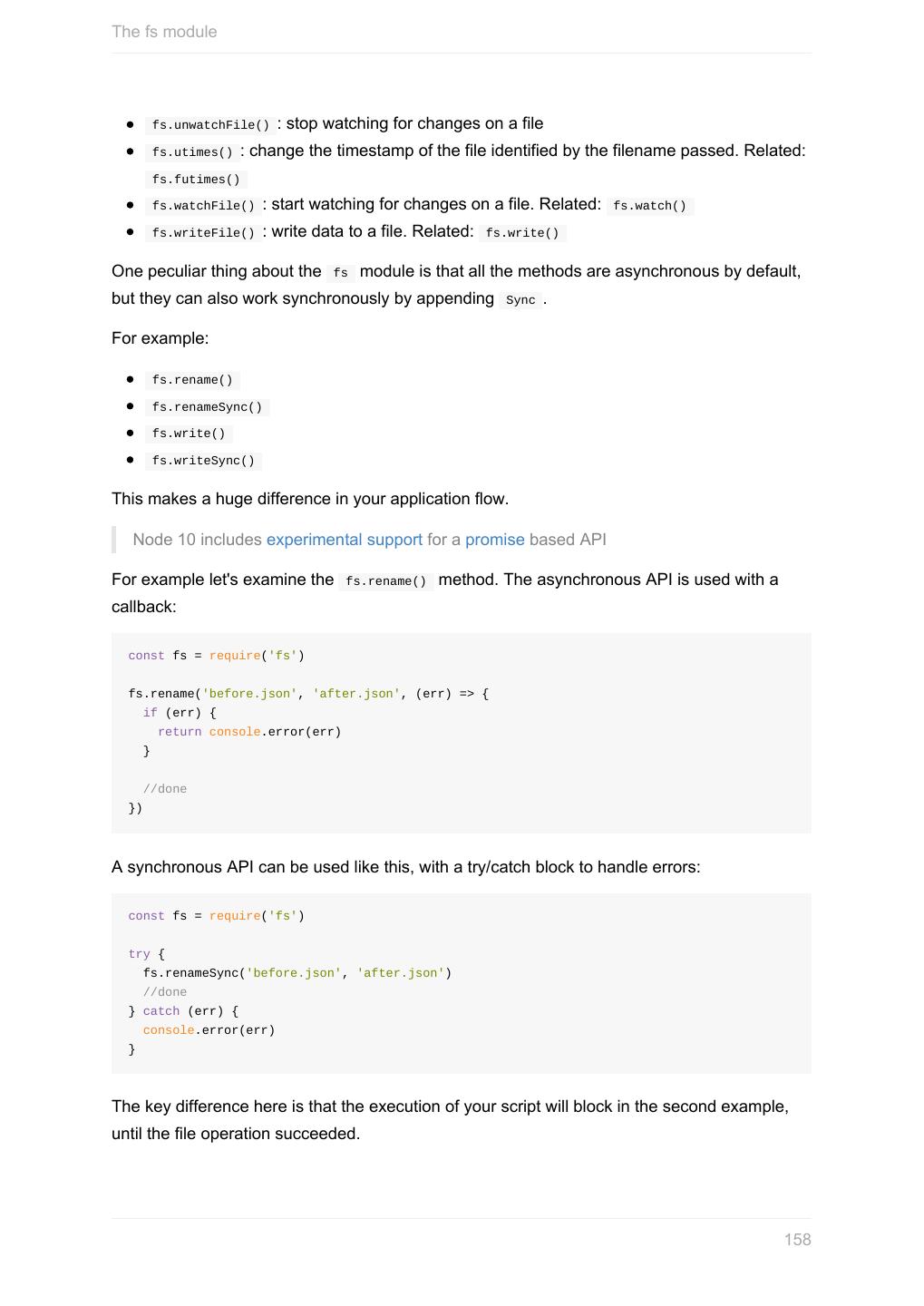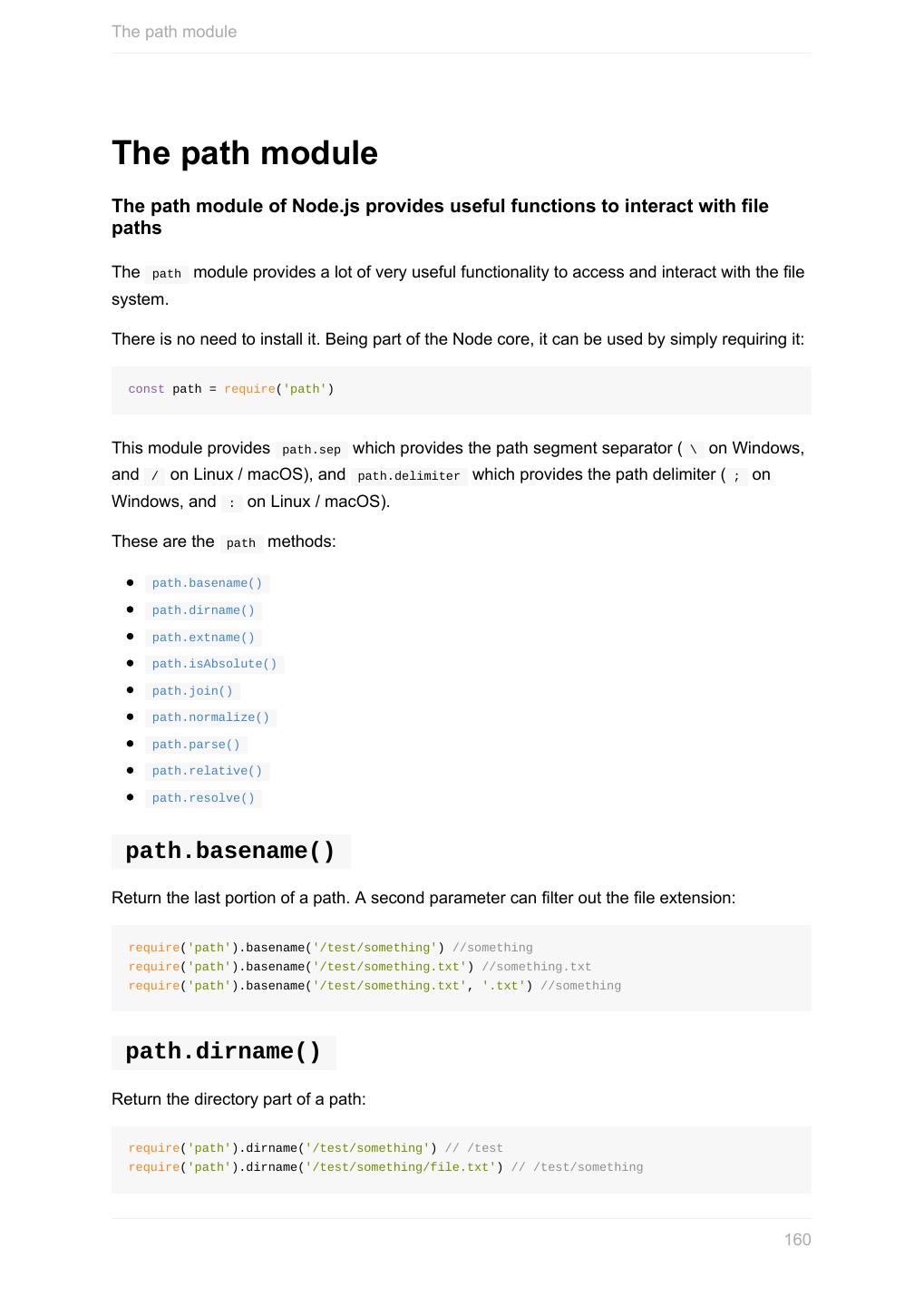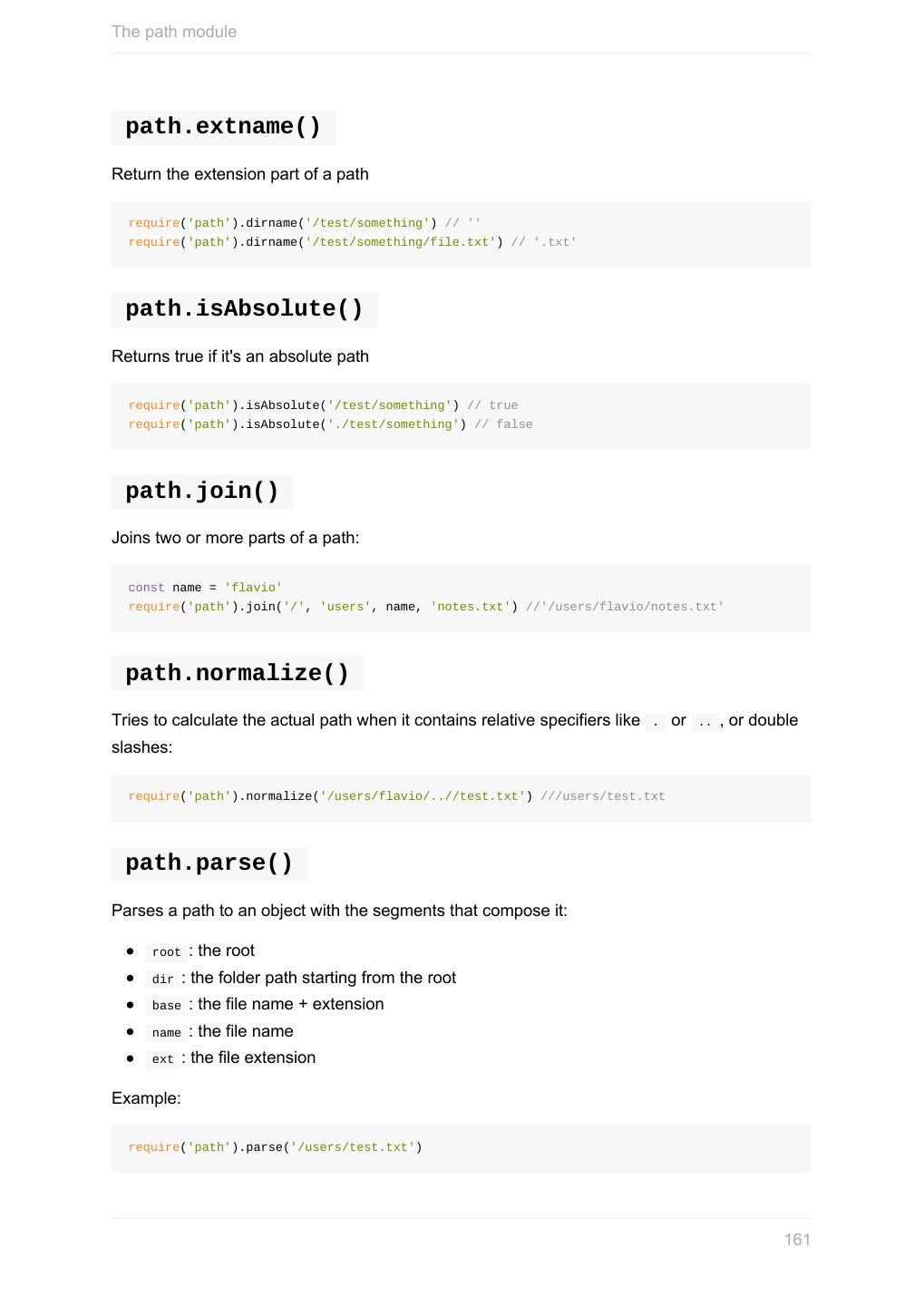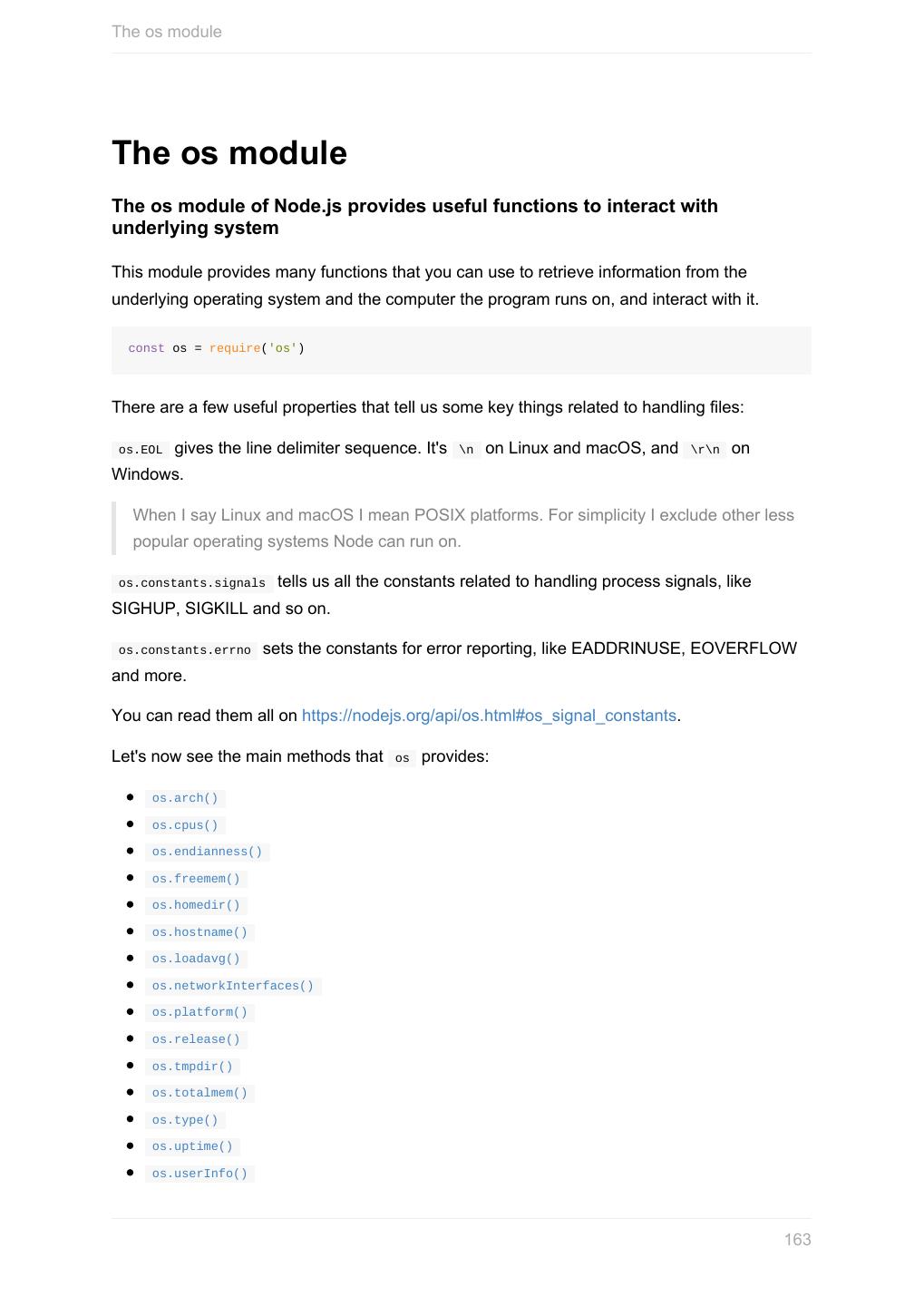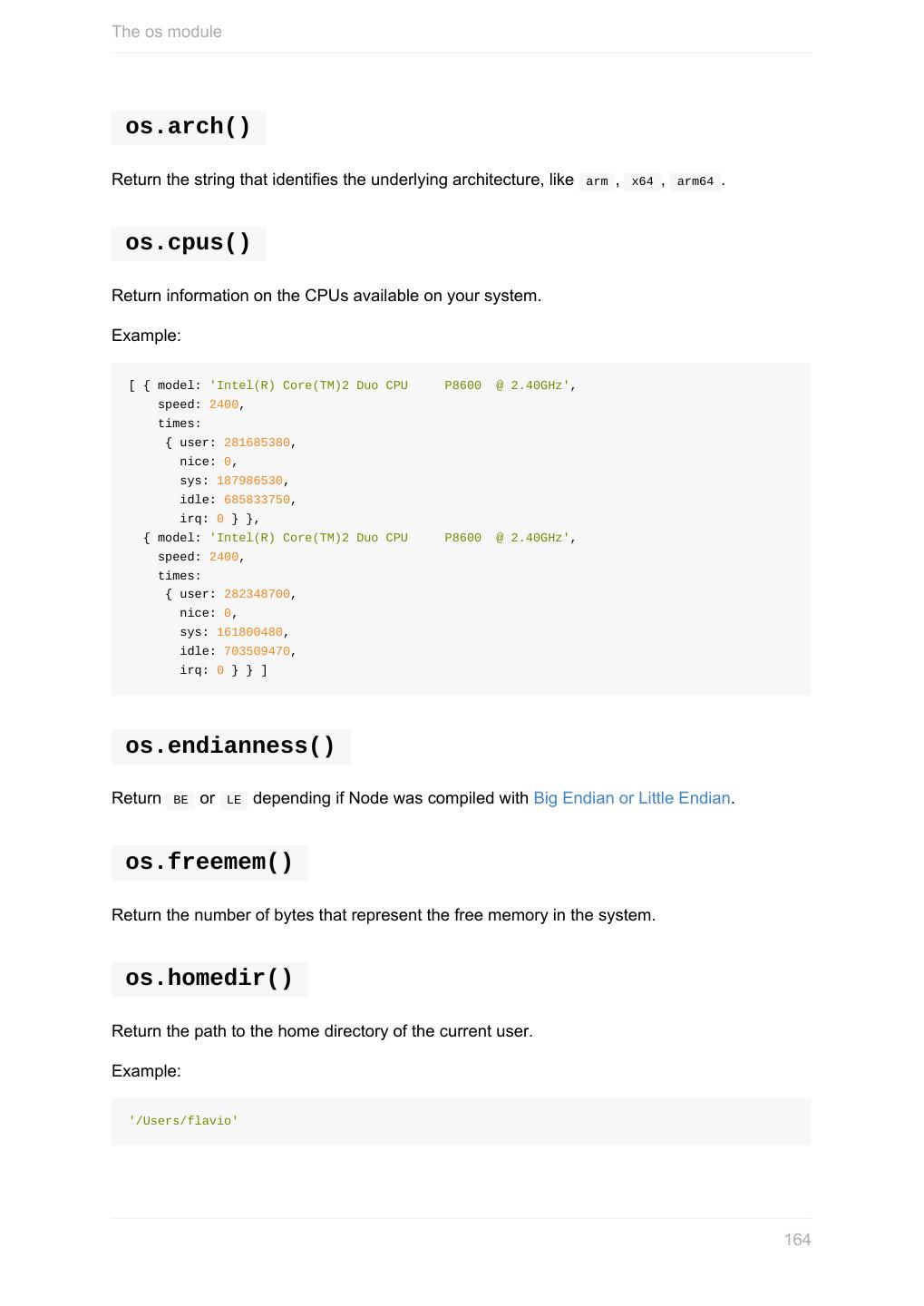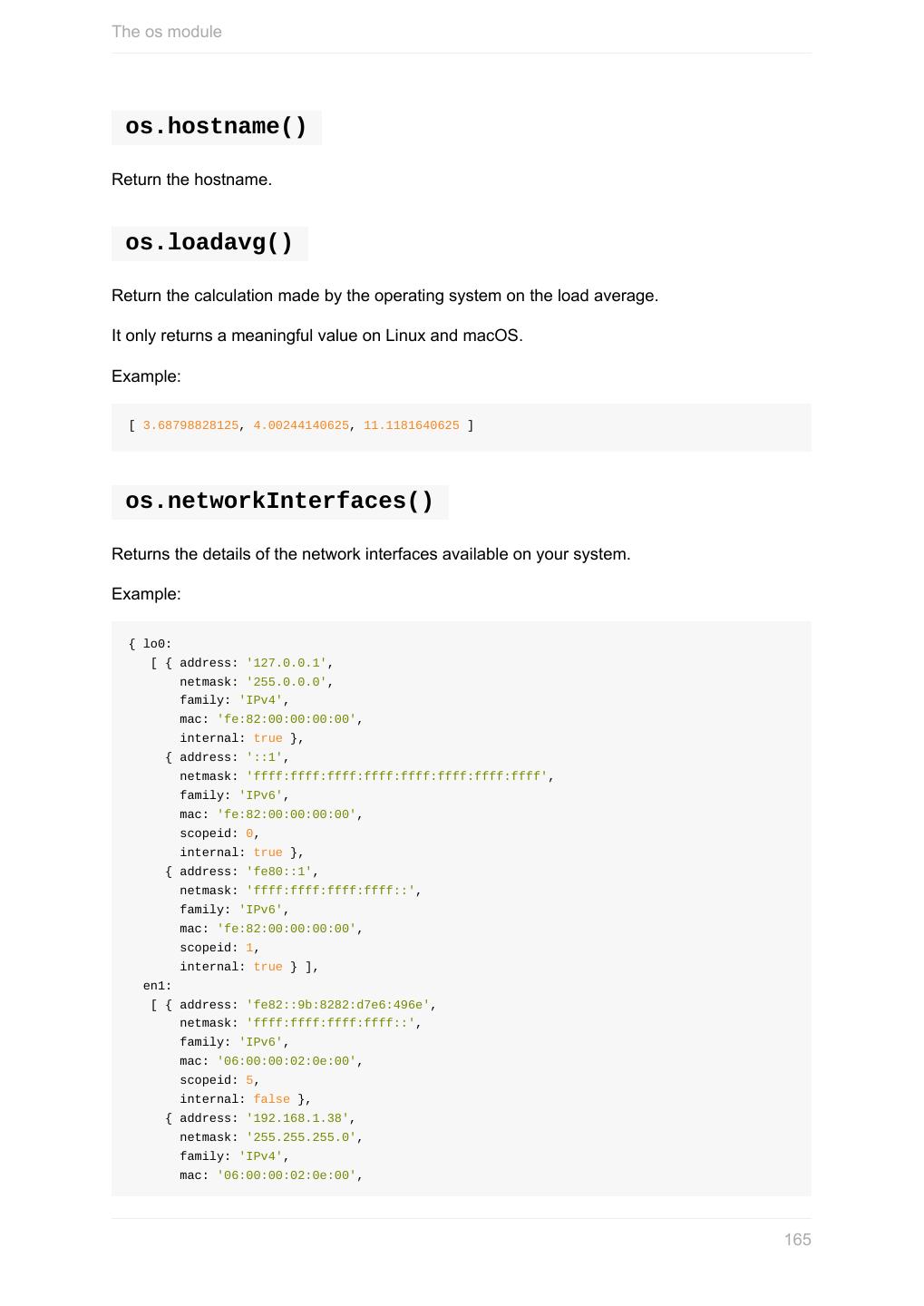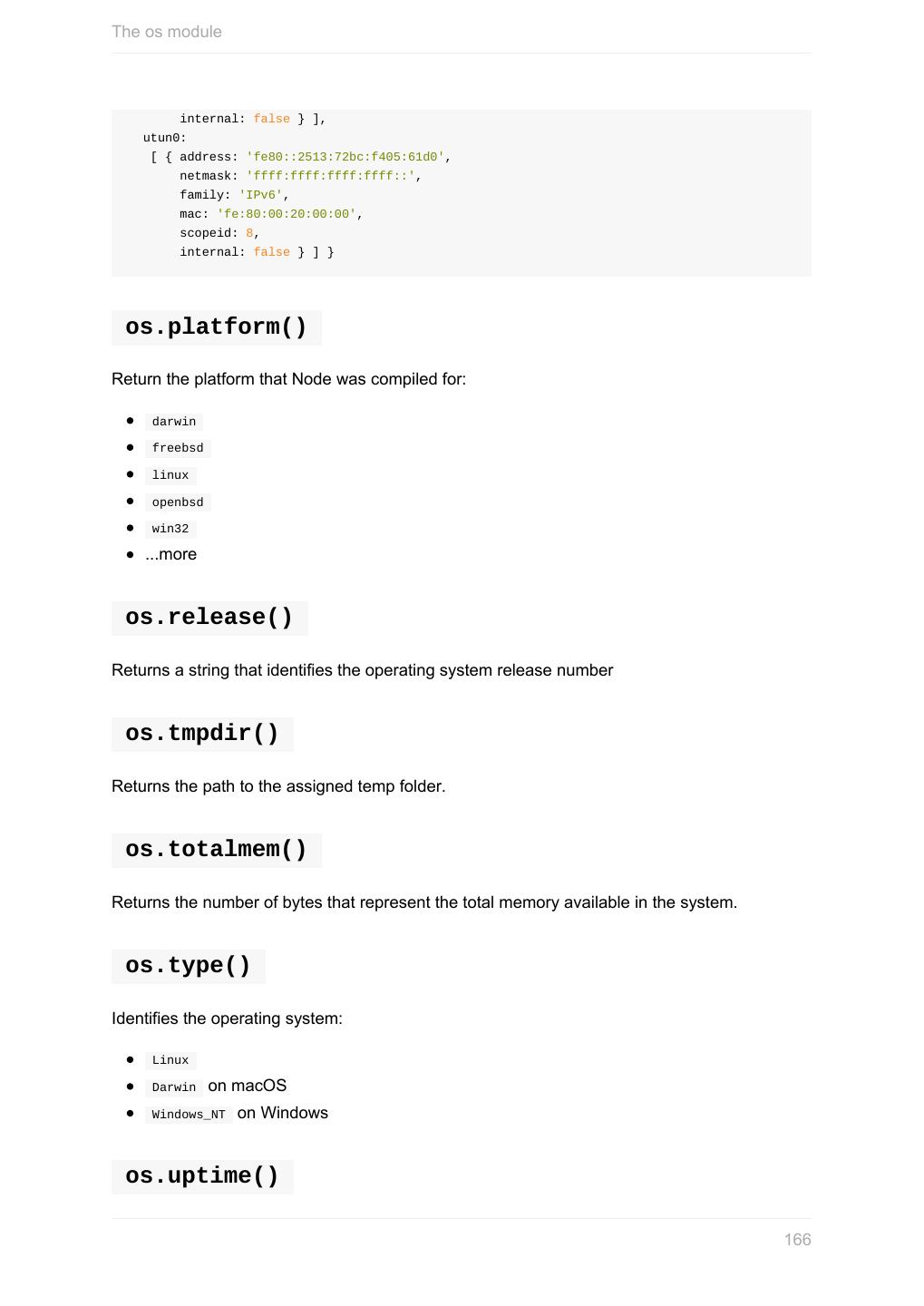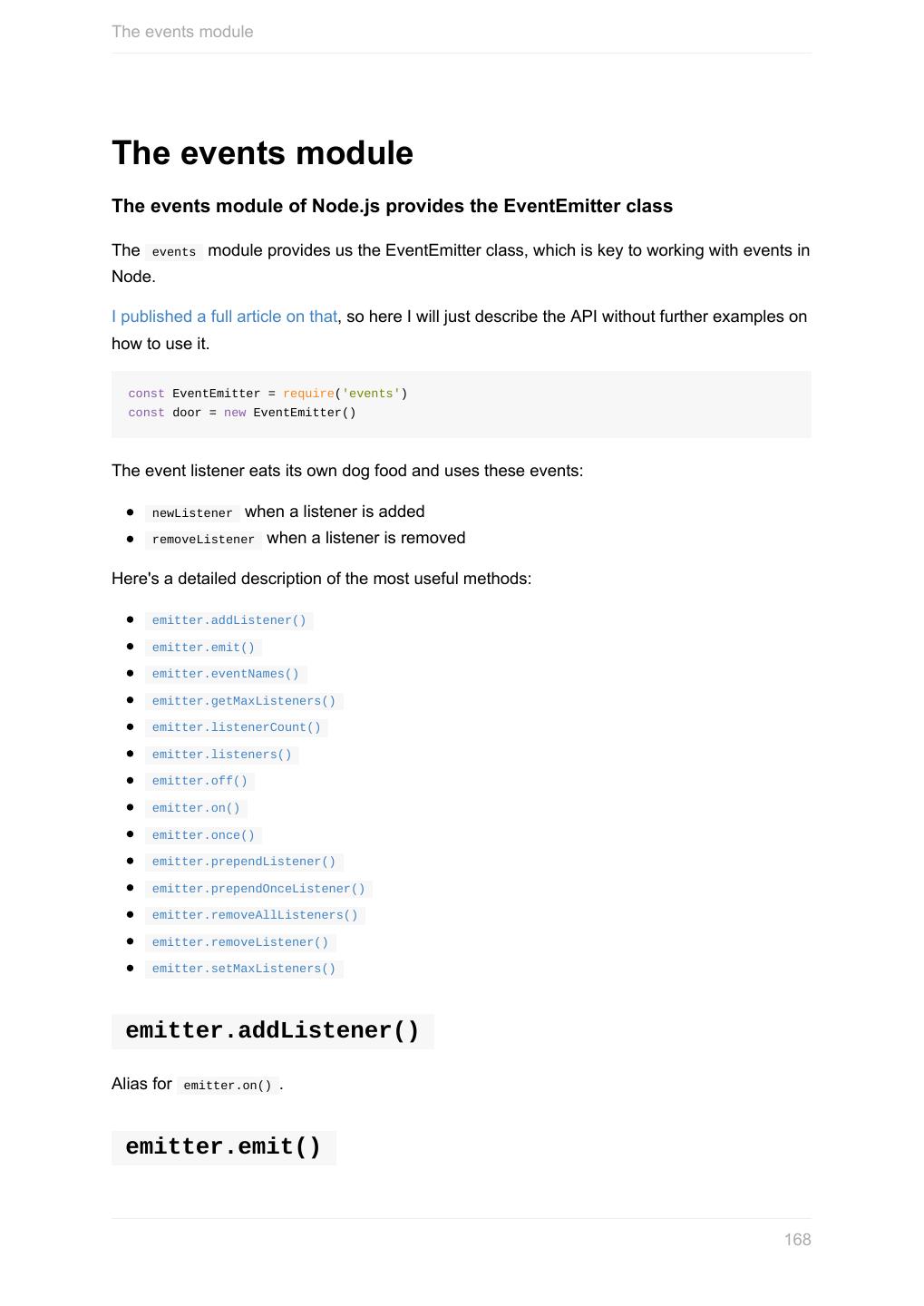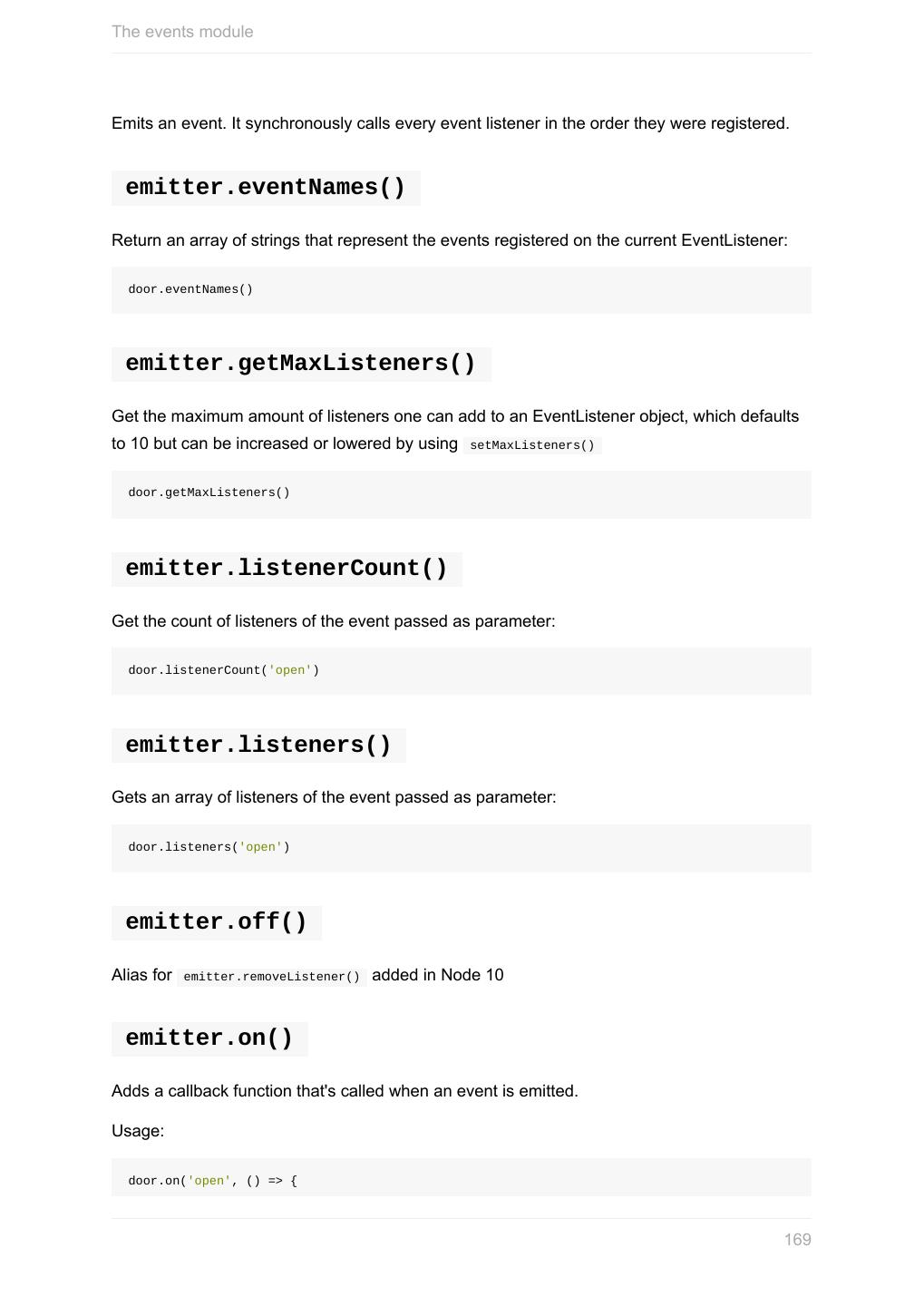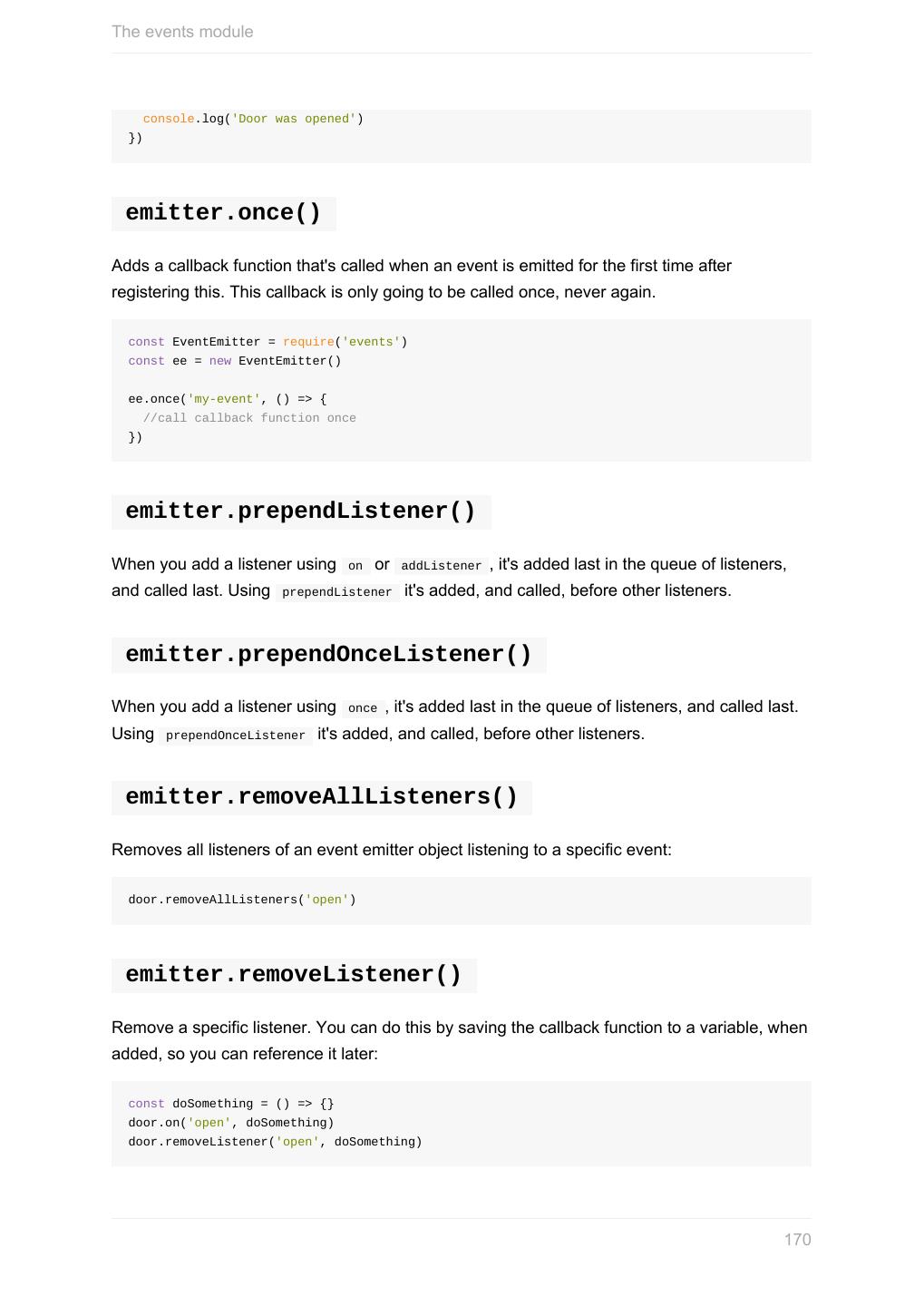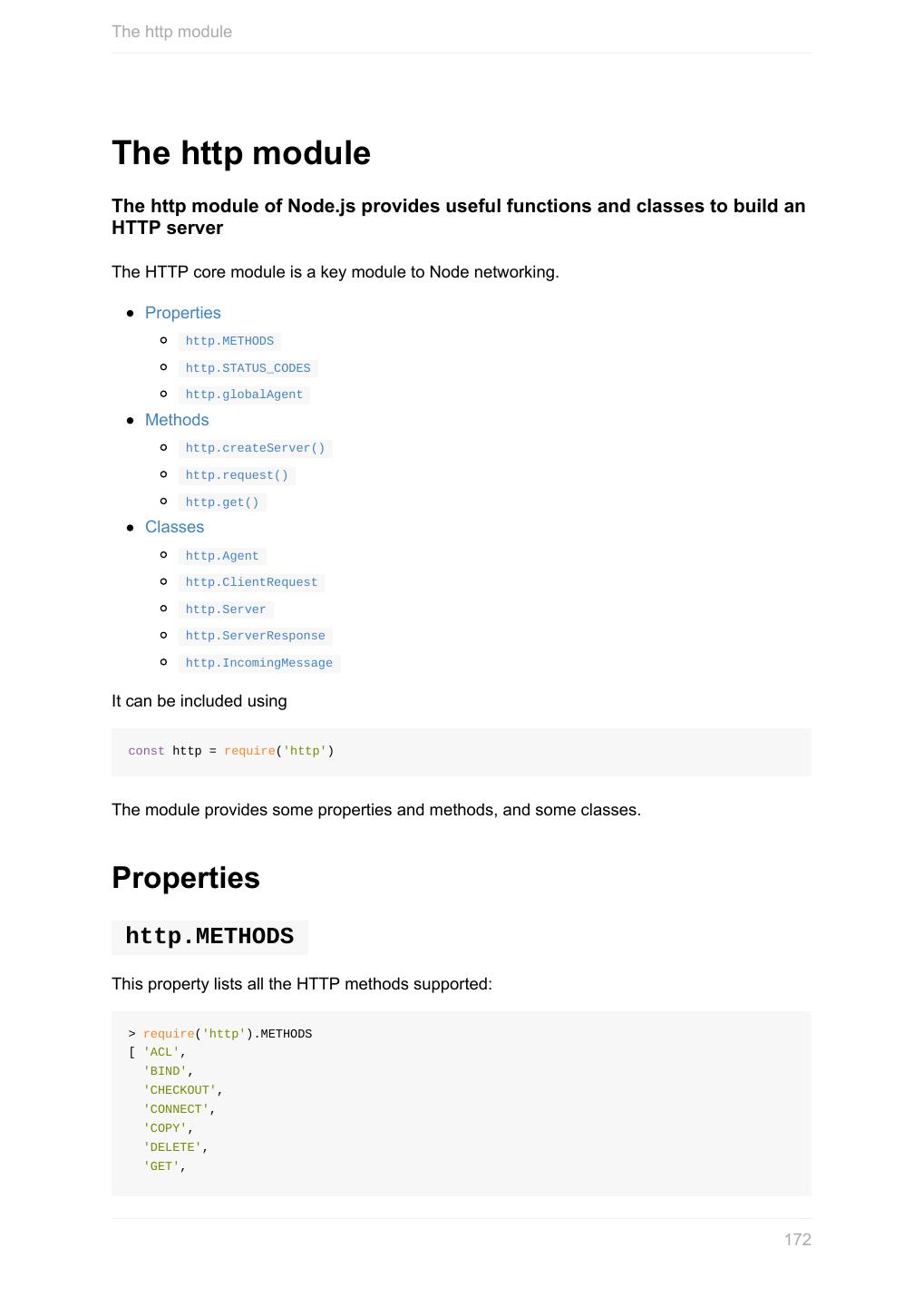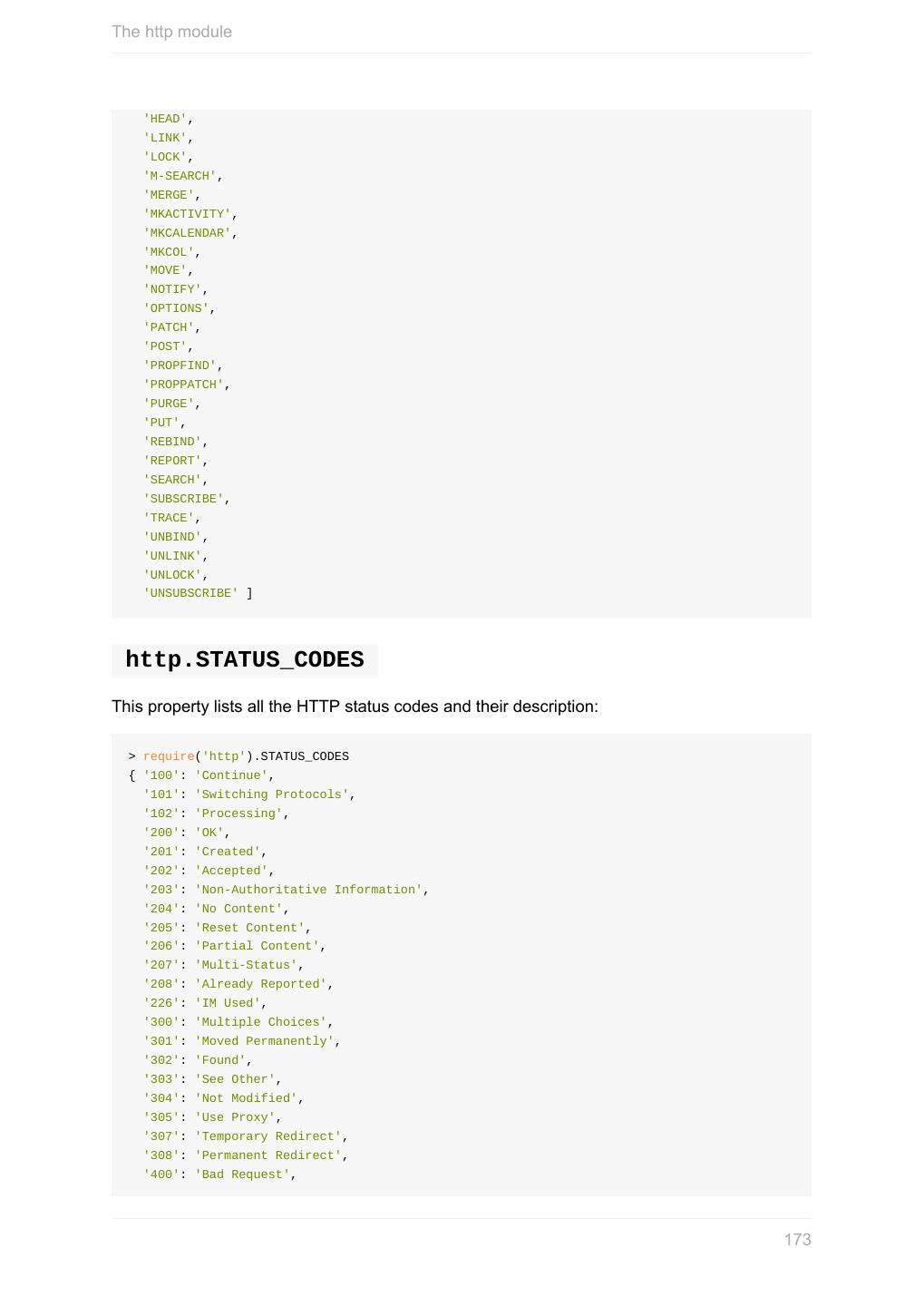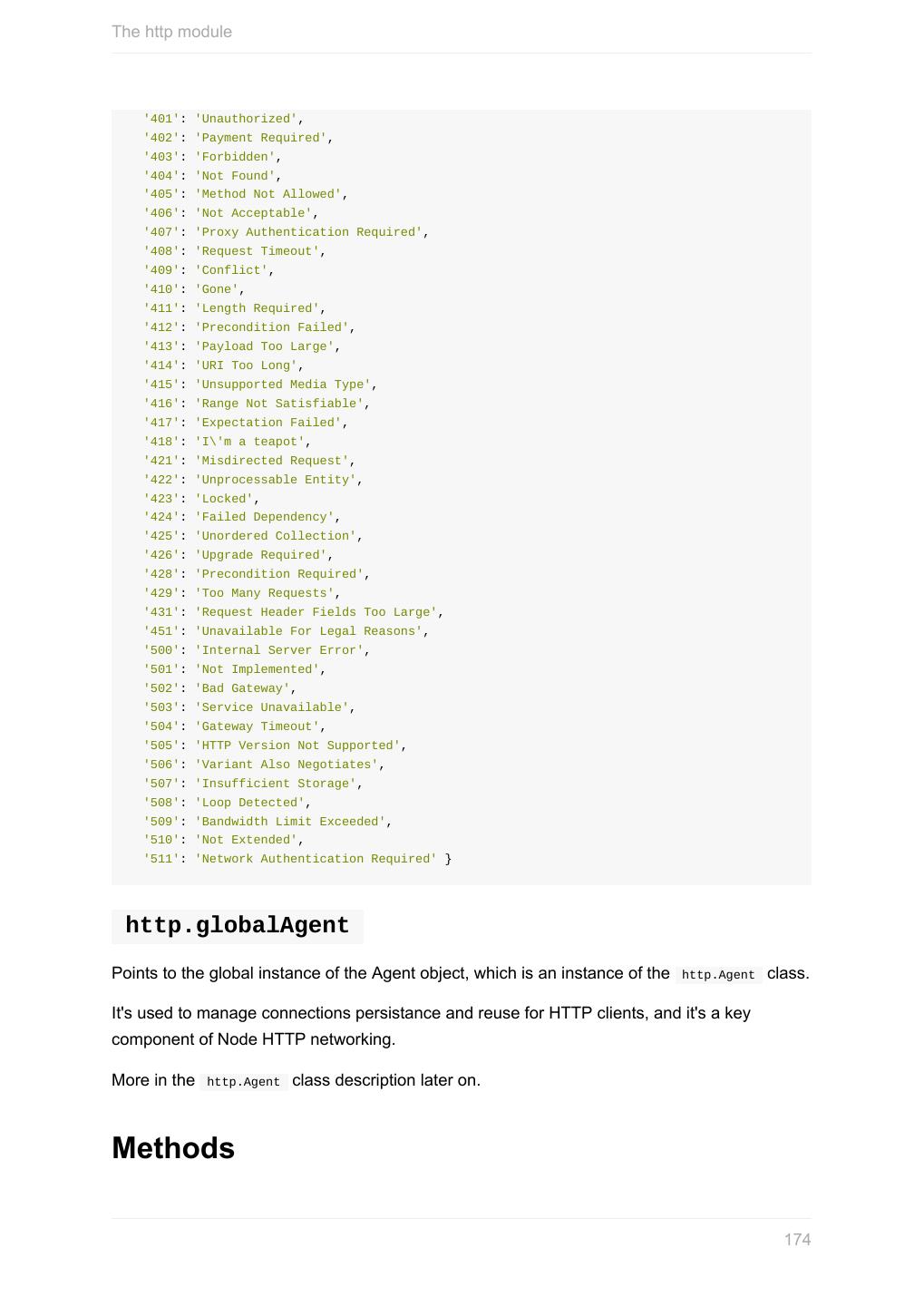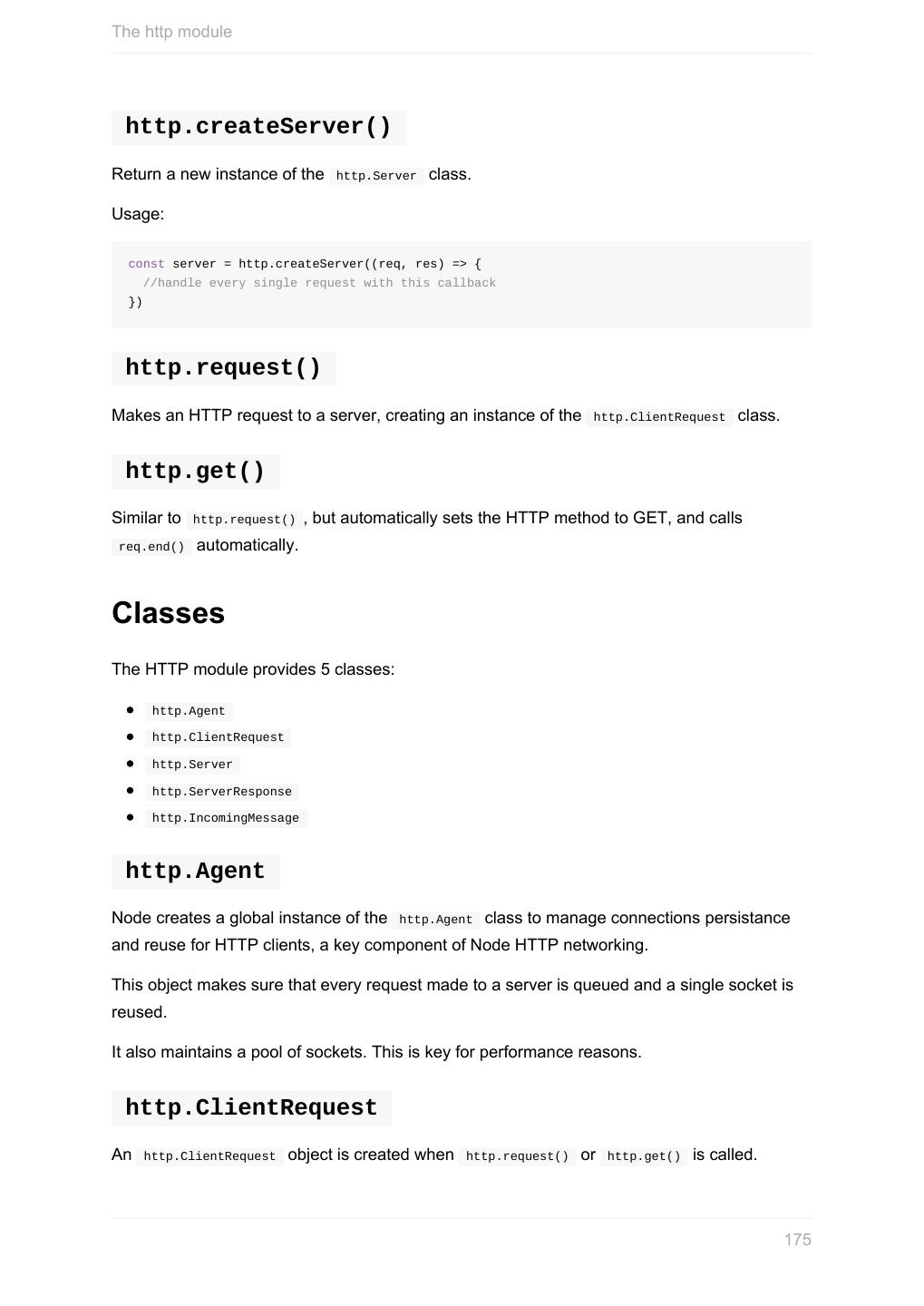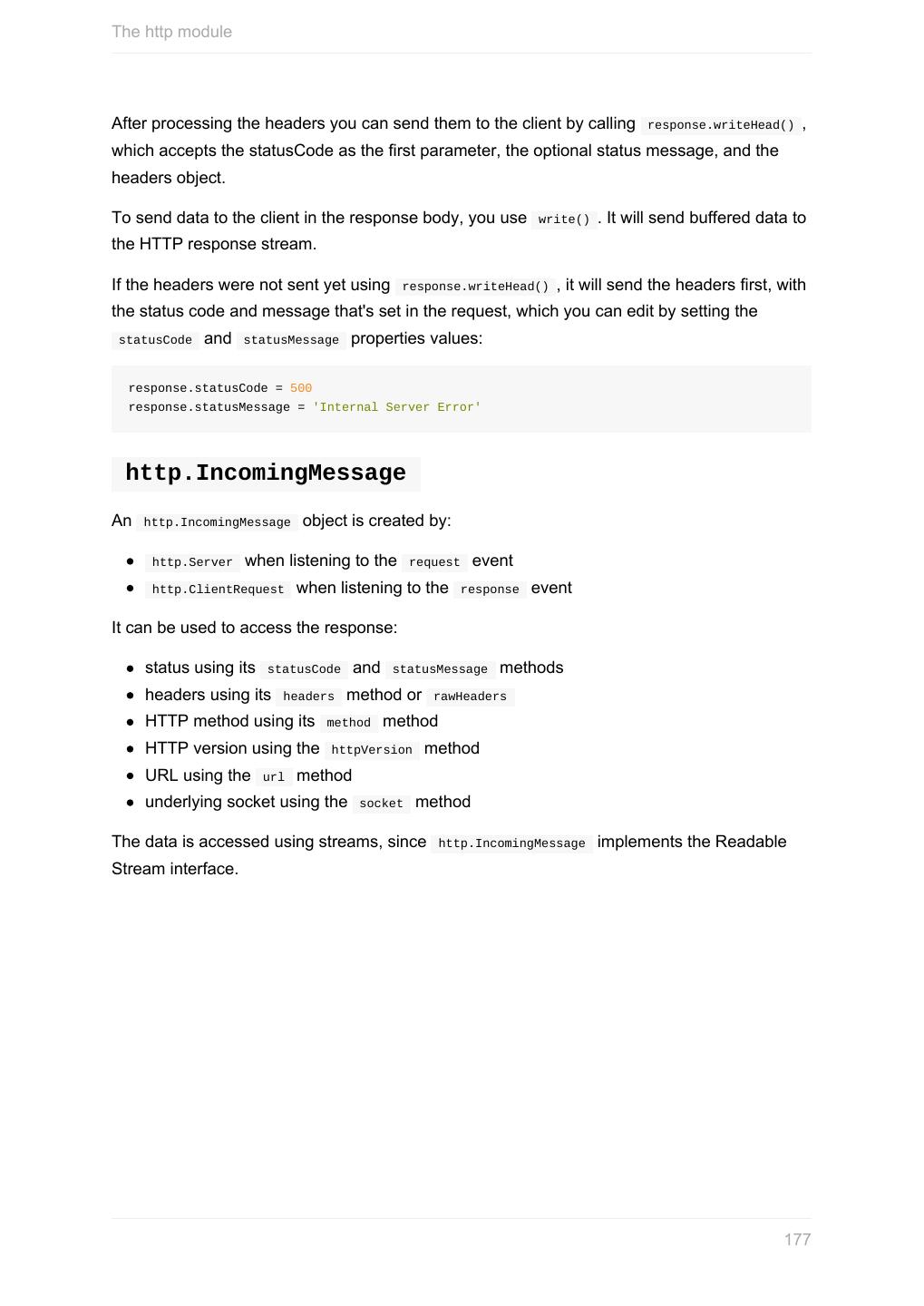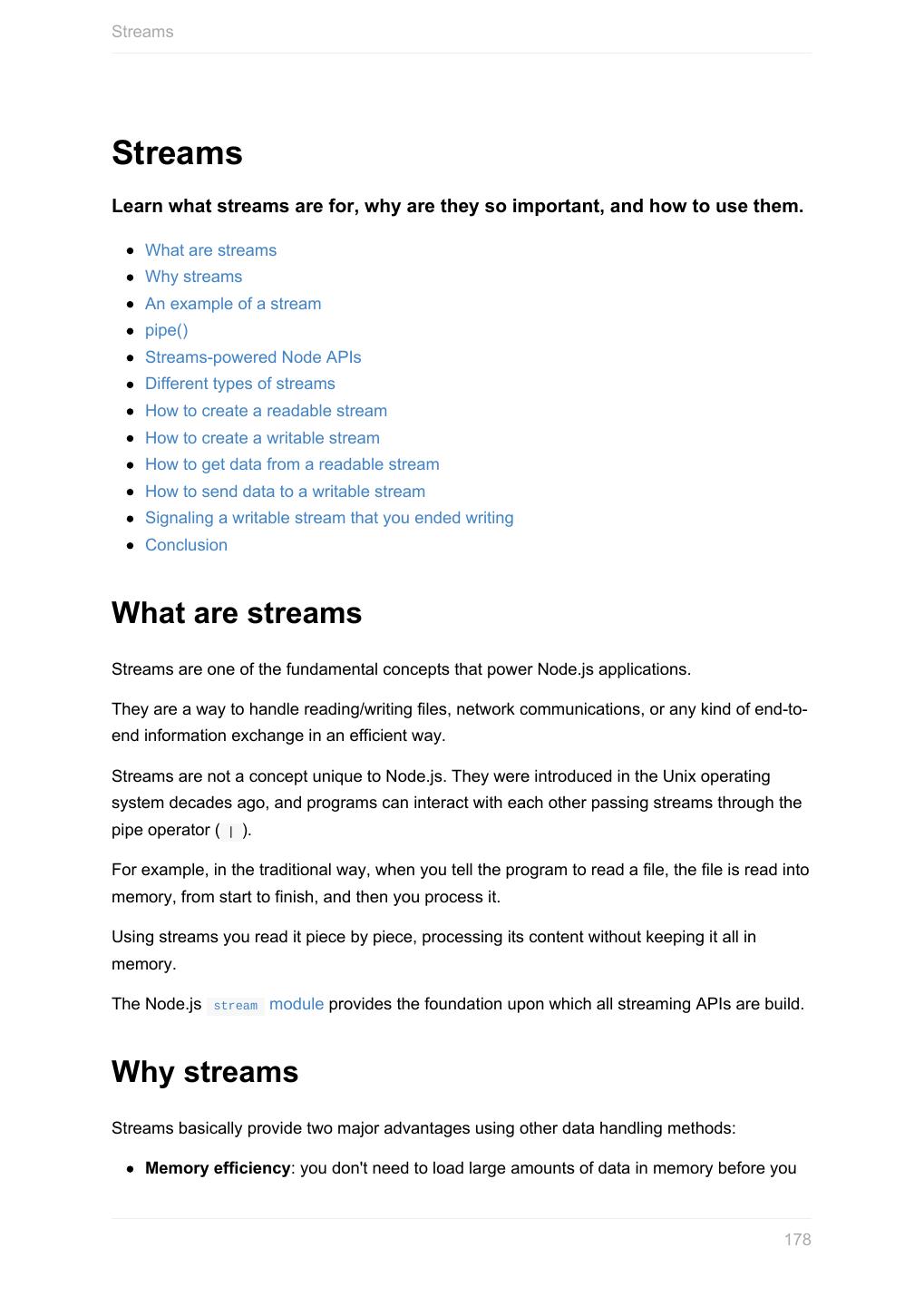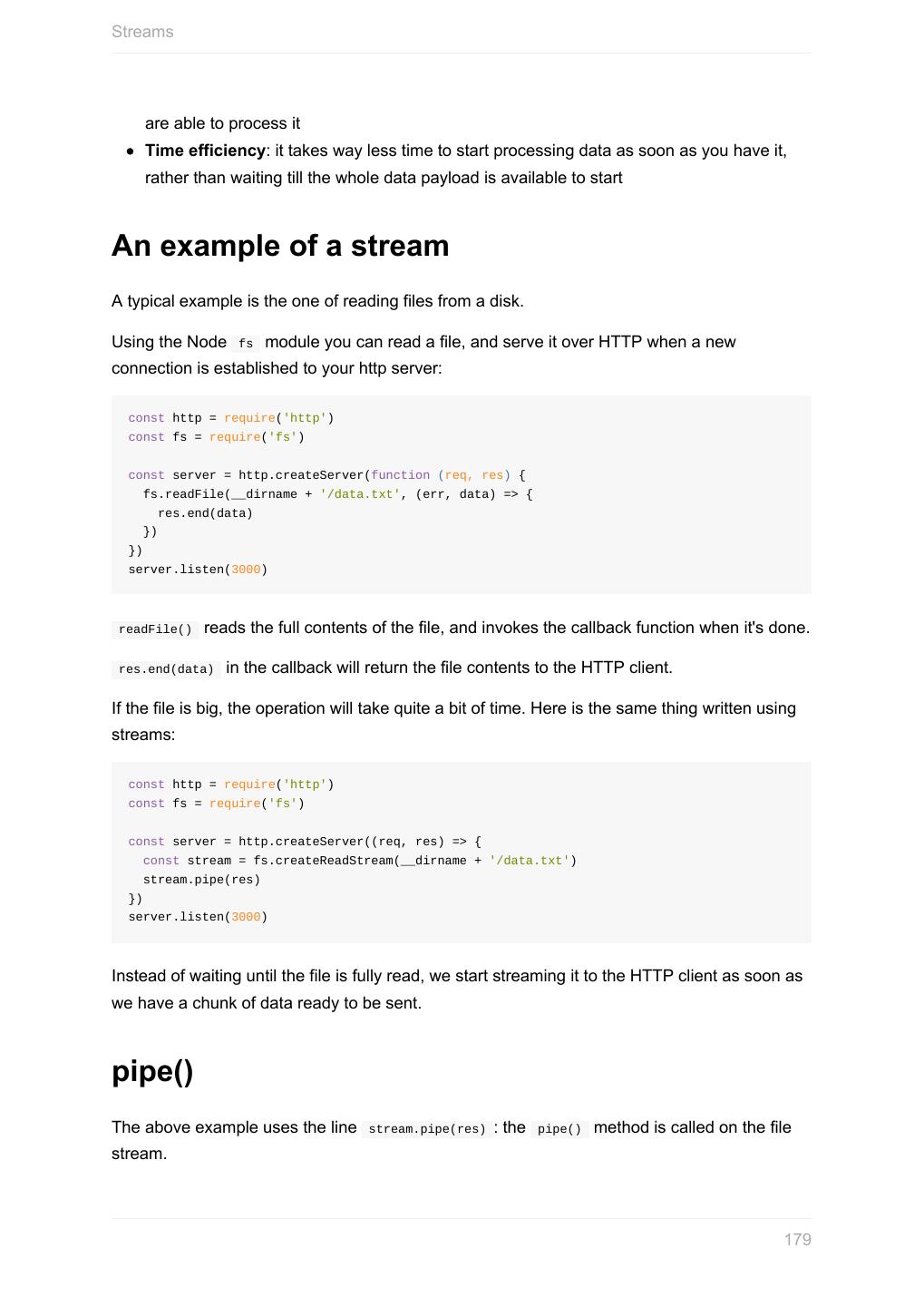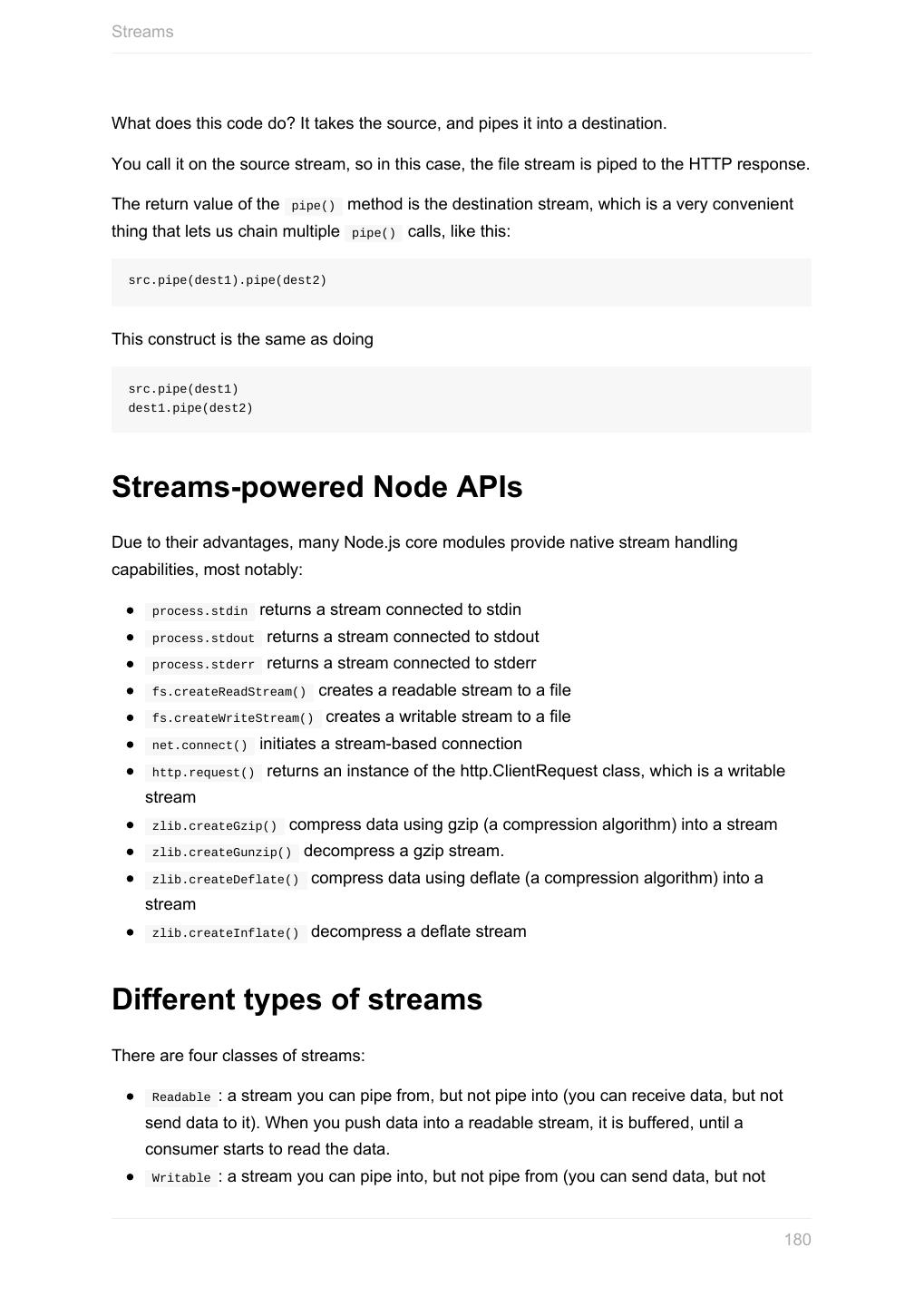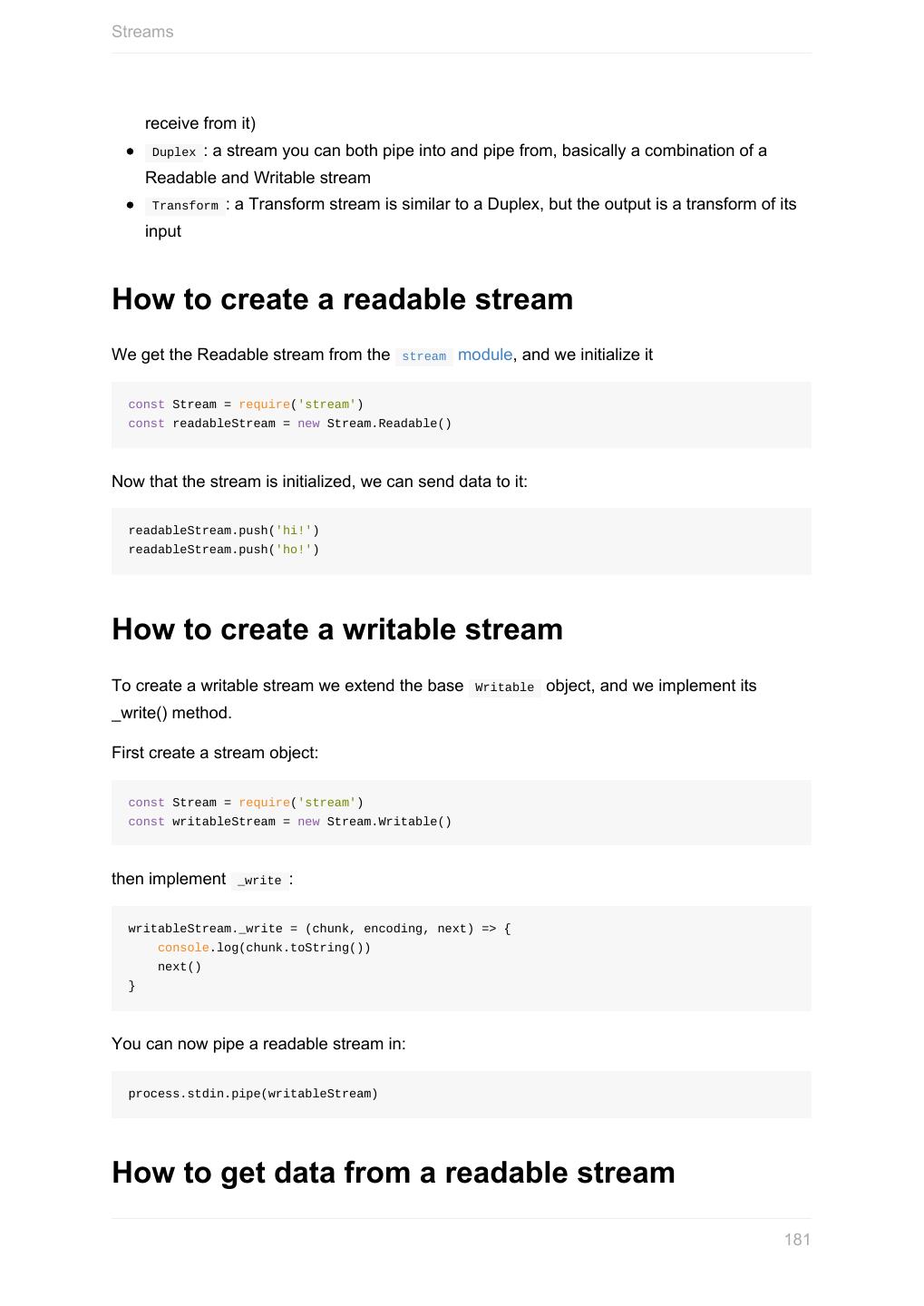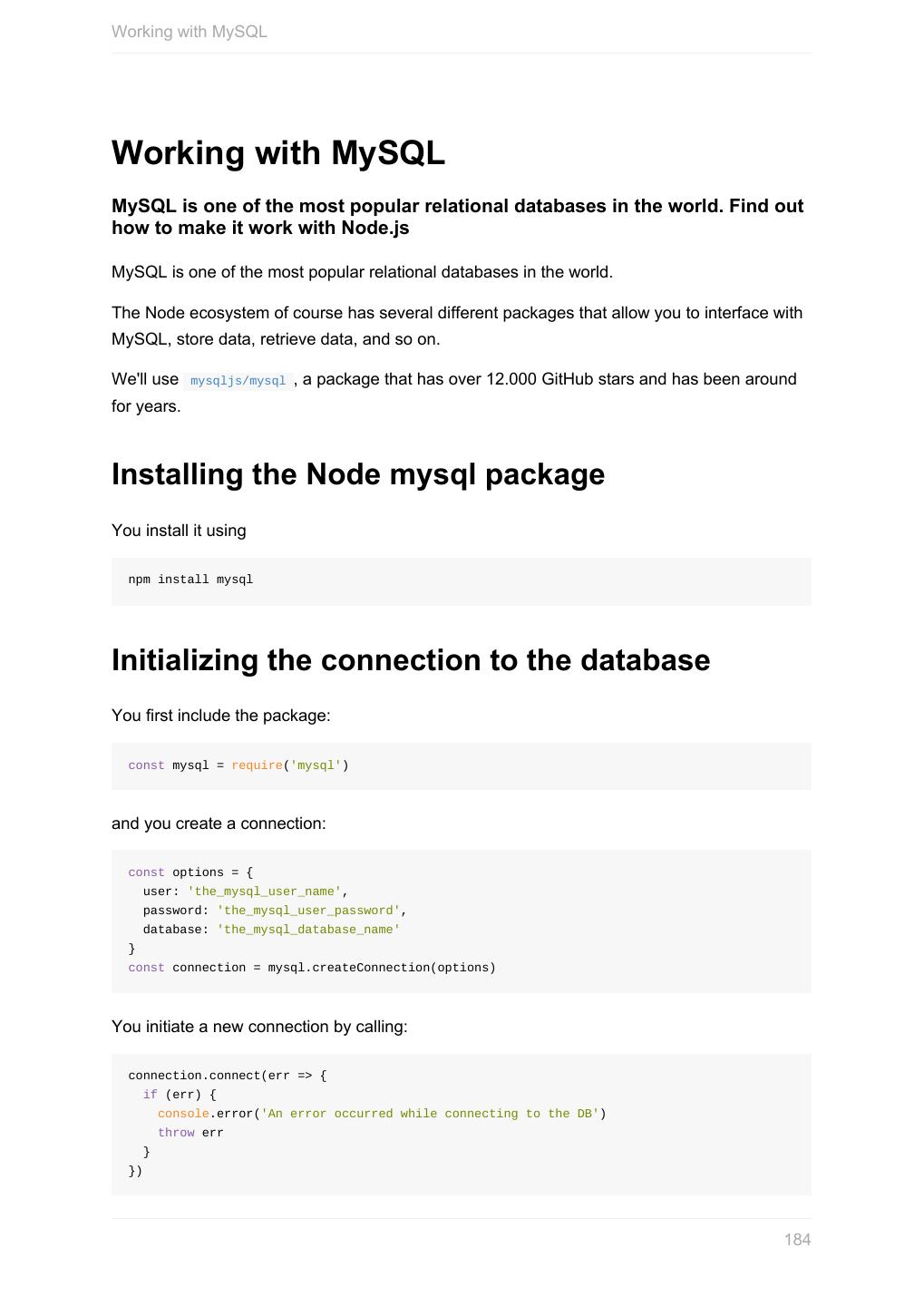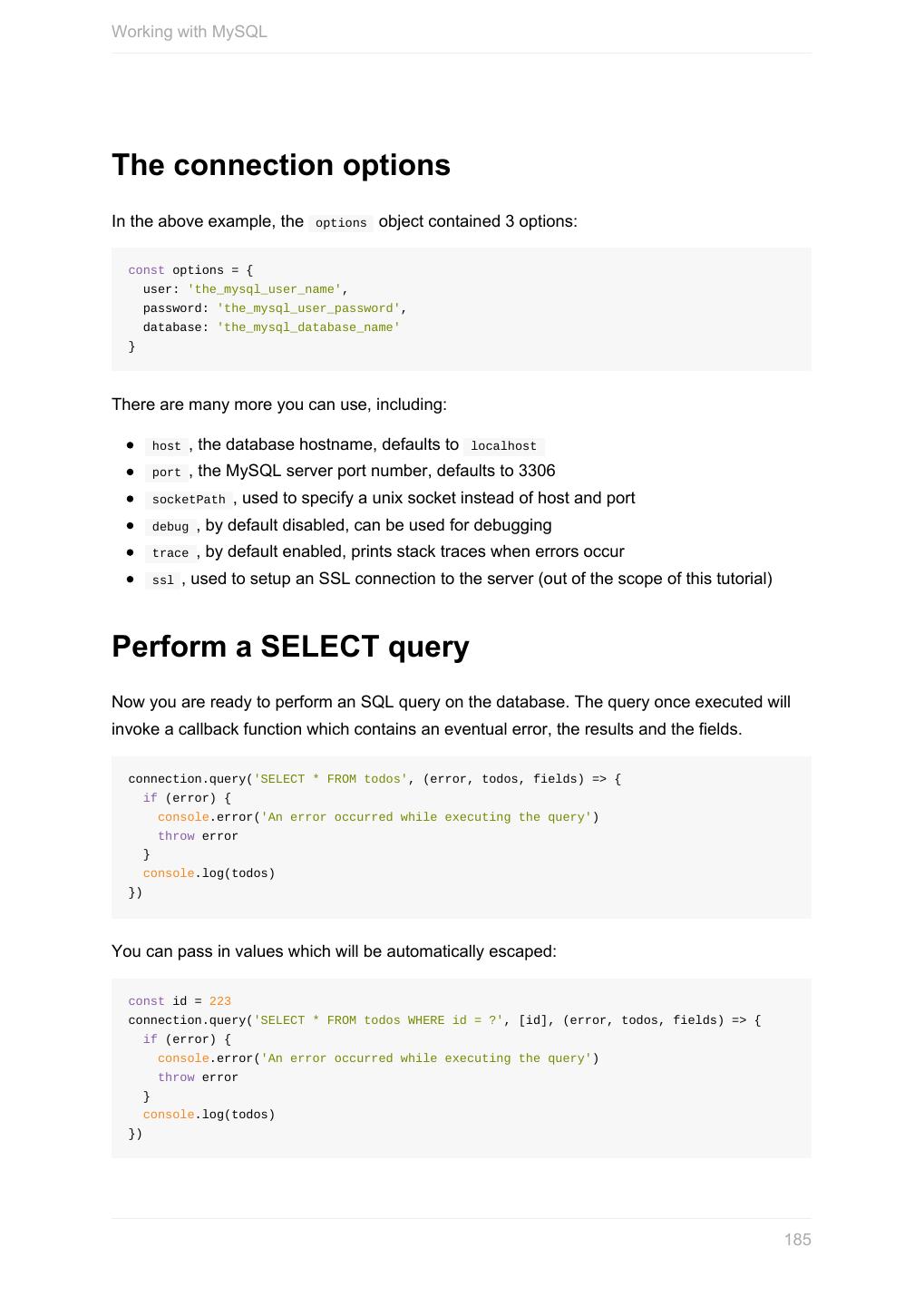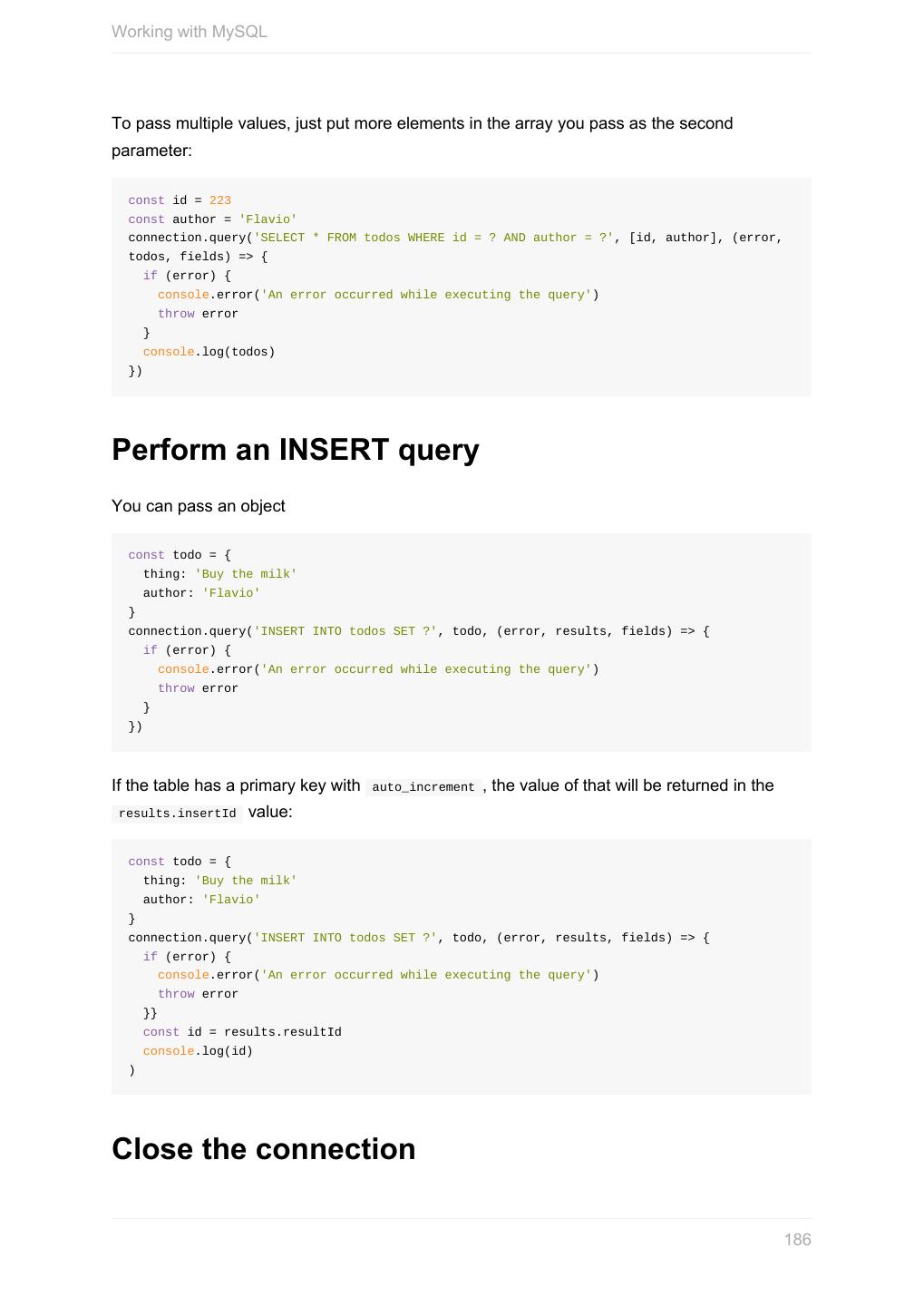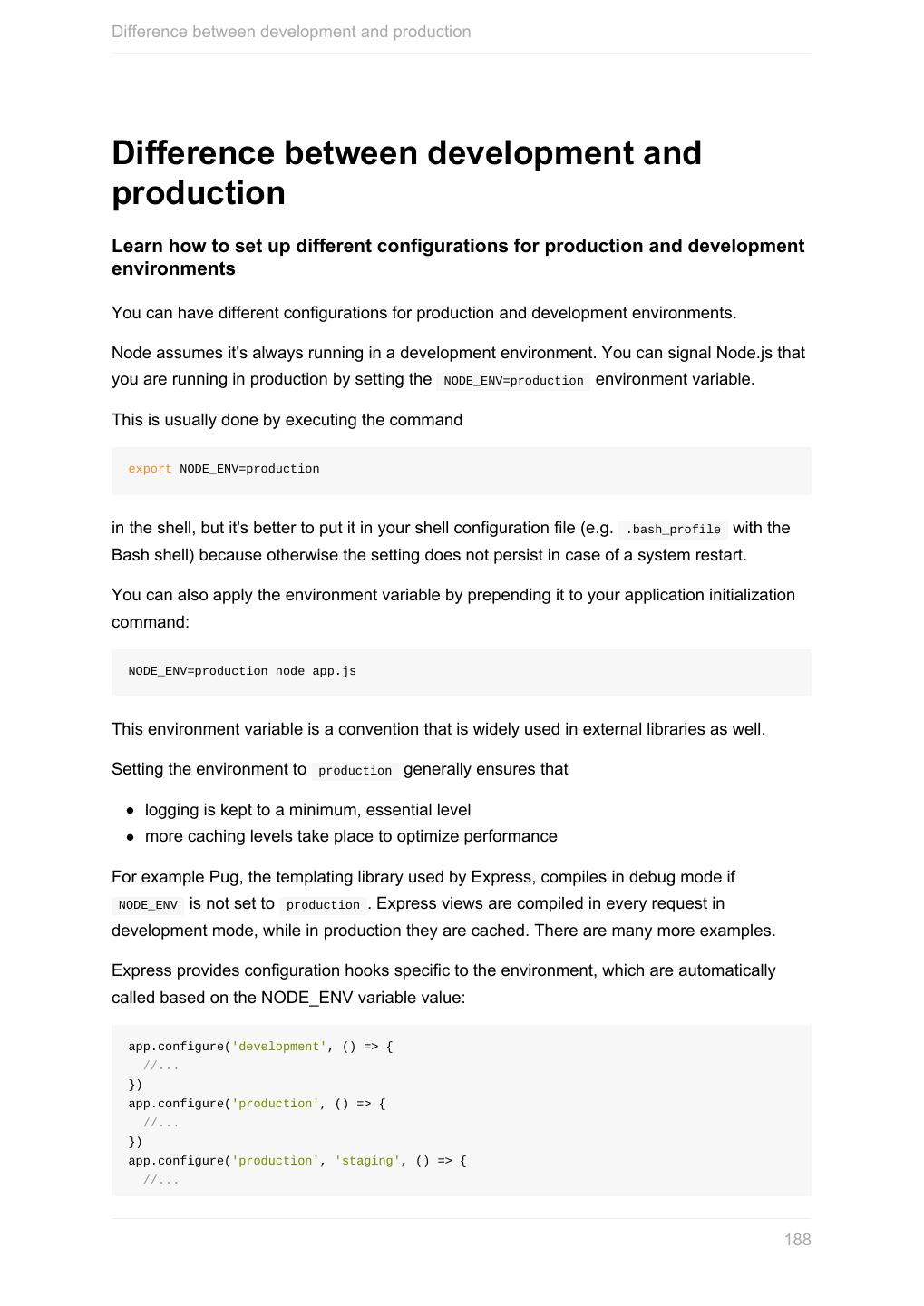- 快召唤伙伴们来围观吧
- 微博 QQ QQ空间 贴吧
- 文档嵌入链接
- <iframe src="https://www.slidestalk.com/u45/nodehandbook39436?embed" frame border="0" width="640" height="360" scrolling="no" allowfullscreen="true">复制
- 微信扫一扫分享
The Node.js Handbook
展开查看详情
1 .
2 . Table of Contents The Node.js Handbook Introduction Introduction to Node A brief history of Node How to install Node How much JavaScript do you need to know to use Node? Differences between Node and the Browser v8 Basics Run Node.js scripts from the command line How to exit from a Node.js program How to read environment variables Node hosting options Command Line Use the Node REPL Pass arguments from the command line Output to the command line Accept input from the command line Node modules and npm Expose functionality from a Node file using exports npm Where does npm install the packages How to use or execute a package installed using npm The package.json file The package-lock.json file Find the installed version of an npm package How to install an older version of an npm package How to update all the Node dependencies to their latest version Semantic versioning rules Uninstalling npm packages 2
3 . Global or local packages npm dependencies and devDependencies npx Working with the event loop The event loop nextTick setImmediate Timers Asynchronous programming Callbacks Promises async/await The Node Event Emitter Networking HTTP How HTTP Requests work Build an HTTP server Making HTTP requests Axios Websockets HTTPS, secure connections File System File descriptors File stats File paths Reading files Writing files Working with folders Some essential core modules The fs module The path module The os module The events module 3
4 . The http module Miscellaneous Streams Working with MySQL Difference between development and production 4
5 .The Node.js Handbook The Node.js Handbook The Node Handbook follows the 80/20 rule: learn in 20% of the time the 80% of a topic. I find this approach gives a well-rounded overview. This book does not try to cover everything under the sun related to Node. If you think some specific topic should be included, tell me. You can reach me on Twitter @flaviocopes. I hope the contents of this book will help you achieve what you want: learn the basics Node.js. This book is written by Flavio. I publish web development tutorials every day on my website flaviocopes.com. Enjoy! 5
6 .Introduction to Node Introduction to Node This post is a getting started guide to Node.js, the server-side JavaScript runtime environment. Node.js is built on top of the Google Chrome V8 JavaScript engine, and it's mainly used to create web servers - but it's not limited to that Overview The best features of Node.js Fast Simple JavaScript V8 Asynchronous platform A huge number of libraries An example Node.js application Node.js frameworks and tools Overview Node.js is a runtime environment for JavaScript that runs on the server. Node.js is open source, cross-platform, and since its introduction in 2009, it got hugely popular and now plays a significant role in the web development scene. If GitHub stars are one popularity indication factor, having 46000+ stars means being very popular. 6
7 .Introduction to Node Node.js is built on top of the Google Chrome V8 JavaScript engine, and it's mainly used to create web servers - but it's not limited to that. The best features of Node.js Fast One of the main selling points of Node.js is speed. JavaScript code running on Node.js (depending on the benchmark) can be twice as fast than compiled languages like C or Java, and orders of magnitude faster than interpreted languages like Python or Ruby, because of its non-blocking paradigm. Simple Node.js is simple. Extremely simple, actually. JavaScript Node.js runs JavaScript code. This means that millions of frontend developers that already use JavaScript in the browser are able to run the server-side code and frontend-side code using the same programming language without the need to learn a completely different tool. The paradigms are all the same, and in Node.js the new ECMAScript standards can be used first, as you don't have to wait for all your users to update their browsers - you decide which ECMAScript version to use by changing the Node.js version. V8 7
8 .Introduction to Node Running on the Google V8 JavaScript engine, which is Open Source, Node.js is able to leverage the work of thousands of engineers that made (and will continue to make) the Chrome JavaScript runtime blazing fast. Asynchronous platform In traditional programming languages (C, Java, Python, PHP) all instructions are blocking by default unless you explicitly "opt in" to perform asynchronous operations. If you perform a network request to read some JSON, the execution of that particular thread is blocked until the response is ready. JavaScript allows to create asynchronous and non-blocking code in a very simple way, by using a single thread, callback functions and event-driven programming. Every time an expensive operation occurs, we pass a callback function that will be called once we can continue with the processing. We're not waiting for that to finish before going on with the rest of the program. Such mechanism derives from the browser. We can't wait until something loads from an AJAX request before being able to intercept click events on the page. It all must happen in real time to provide a good experience to the user. If you've created an onclick handler for a web page you've already used asynchronous programming techniques with event listeners. This allows Node.js to handle thousands of concurrent connections with a single server without introducing the burden of managing threads concurrency, which would be a major source of bugs. Node provides non-blocking I/O primitives, and generally, libraries in Node.js are written using non-blocking paradigms, making a blocking behavior an exception rather than the normal. 8
9 .Introduction to Node When Node.js needs to perform an I/O operation, like reading from the network, access a database or the filesystem, instead of blocking the thread Node.js will simply resume the operations when the response comes back, instead of wasting CPU cycles waiting. A huge number of libraries npm with its simple structure helped the ecosystem of node.js proliferate and now the npm registry hosts almost 500.000 open source packages you can freely use. An example Node.js application The most common example Hello World of Node.js is a web server: const http = require('http') const hostname = '127.0.0.1' const port = 3000 const server = http.createServer((req, res) => { res.statusCode = 200 res.setHeader('Content-Type', 'text/plain') res.end('Hello World\n') }) server.listen(port, hostname, () => { console.log(`Server running at http://${hostname}:${port}/`) }) To run this snippet, save it as a server.js file and run node server.js in your terminal. This code first includes the Node.js http module. Node.js has an amazing standard library, including a first-class support for networking. The createServer() method of http creates a new HTTP server and returns it. The server is set to listen on the specified port and hostname. When the server is ready, the callback function is called, in this case informing us that the server is running. Whenever a new request is received, the request event is called, providing two objects: a request (an http.IncomingMessage object) and a response (an http.ServerResponse object). Those 2 objects are essential to handle the HTTP call. The first provides the request details. In this simple example, this is not used, but you could access the request headers and request data. 9
10 .Introduction to Node The second is used to return data to the caller. In this case with res.statusCode = 200 we set the statusCode property to 200, to indicate a successful response. We set the Content-Type header: res.setHeader('Content-Type', 'text/plain') and we end close the response, adding the content as an argument to end() : res.end('Hello World\n') Node.js frameworks and tools Node.js is a low-level platform, and to make things easier and more interesting for developers thousands of libraries were built upon Node.js. Many of those established over time as popular options. Here is a non-comprehensive list to the ones I consider very relevant and worth learning: Express, one of the most simple yet powerful ways to create a web server. Its minimalist approach, unopinionated, focused on the core features of a server, is key to its success. Meteor, an incredibly powerful full-stack framework, powering you with an isomorphic approach to building apps with JavaScript, sharing code on the client and the server. Once an off-the-shelf tool that provided everything, now integrates with frontend libs React, Vue and Angular. Can be used to create mobile apps as well. koa, built by the same team behind Express, aims to be even simpler and smaller, building on top of years of knowledge. The new project born out of the need to create incompatible changes without disrupting the existing community. Next.js, a framework to render server-side rendered React applications. Micro, a very lightweight server to create asynchronous HTTP microservices. Socket.io, a real-time communication engine to build network applications. 10
11 .A brief history of Node A brief history of Node A look back on the history of Node.js from 2009 to today Believe it or not, Node.js is just 9 years old. In comparison, JavaScript is 23 years old and the web as we know it (after the introduction of Mosaic) is 25 years old. 9 years is such a little amount of time for a technology, but Node.js seems to have been around forever. I've had the pleasure to work with Node since the early days when it was just 2 years old, and despite the little information available, you could already feel it was a huge thing. In this post, I want to draw the big picture of Node in its history, to put things in perspective. A little bit of history 2009 2010 2011 2012 2013 2014 2015 2016 2017 2018 A little bit of history JavaScript is a programming language that was created at Netscape as a scripting tool to manipulate web pages inside their browser, Netscape Navigator. Part of the business model of Netscape was to sell Web Servers, which included an environment called Netscape LiveWire, which could create dynamic pages using server-side JavaScript. So the idea of server-side JavaScript was not introduced by Node.js, but it's old just like JavaScript - but at the time it was not successful. One key factor that led to the rise of Node.js was timing. JavaScript since a few years was starting being considered a serious language, thanks for the "Web 2.0" applications that showed the world what a modern experience on the web could be like (think Google Maps or 11
12 .A brief history of Node GMail). The JavaScript engines performance bar raised considerably thanks to the browser competition battle, which is still going strong. Development teams behind each major browser work hard every day to give us better performance, which is a huge win for JavaScript as a platform. V8, the engine that Node.js uses under the hood, is one of those and in particular it's the Chrome JS engine. But of course, Node.js is not popular just because of pure luck or timing. It introduced much innovative thinking on how to program in JavaScript on the server. 2009 Node.js is born The first form of npm is created 2010 Express is born Socket.io is born 2011 npm hits 1.0 Big companies start adopting Node: LinkedIn, Uber Hapi is born 2012 Adoption continues very rapidly 2013 First big blogging platform using Node: Ghost Koa is born 2014 Big drama: IO.js is a major fork of Node.js, with the goal of introducing ES6 support and move faster 2015 12
13 .A brief history of Node The Node.js Foundation is born IO.js is merged back into Node.js npm introduces private modules Node 4 (no 1, 2, 3 versions were previously released) 2016 The leftpad incident Yarn is born Node 6 2017 npm focuses more on security Node 8 HTTP/2 V8 introduces Node in its testing suite, officially making Node a target for the JS engine, in addition to Chrome 3 billion npm downloads every week 2018 Node 10 ES modules .mjs experimental support 13
14 .How to install Node How to install Node How you can install Node.js on your system: a package manager, the official website installer or nvm Node.js can be installed in different ways. This post highlights the most common and convenient ones. Official packages for all the major platforms are available at https://nodejs.org/en/download/. One very convenient way to install Node.js is through a package manager. In this case, every operating system has its own. On macOS, Homebrew is the de-facto standard, and - once installed - allows to install Node.js very easily, by running this command in the CLI: brew install node Other package managers for Linux and Windows are listed in https://nodejs.org/en/download/package-manager/ nvm is a popular way to run Node. It allows you to easily switch the Node version, and install new versions to try and easily rollback if something breaks, for example. It is also very useful to test your code with old Node versions. See https://github.com/creationix/nvm for more information about this option. My suggestion is to use the official installer if you are just starting out and you don't use Homebrew already, otherwise, Homebrew is my favorite solution. In any case, when Node is installed you'll have access to the node executable program in the command line. 14
15 .How much JavaScript do you need to know to use Node? How much JavaScript do you need to know to use Node? If you are just starting out with JavaScript, how much deeply do you need to know the language? As a beginner, it's hard to get to a point where you are confident enough in your programming abilities. While learning to code, you might also be confused at where does JavaScript end, and where Node.js begins, and vice versa. I would recommend you to have a good grasp of the main JavaScript concepts before diving into Node.js: Lexical Structure Expressions Types Variables Functions this Arrow Functions Loops Loops and Scope Arrays Template Literals Semicolons Strict Mode ECMAScript 6, 2016, 2017 With those concepts in mind, you are well on your road to become a proficient JavaScript developer, in both the browser and in Node.js. The following concepts are also key to understand asynchronous programming, which is one fundamental part of Node.js: Asynchronous programming and callbacks Timers Promises Async and Await Closures The Event Loop 15
16 .How much JavaScript do you need to know to use Node? Luckily I wrote a free ebook that explains all those topics, and it's called JavaScript Fundamentals. It's the most compact resource you'll find to learn all of this. You can find the ebook at the bottom of this page: https://flaviocopes.com/javascript/. 16
17 .Differences between Node and the Browser Differences between Node and the Browser How writing JavaScript application in Node.js differs from programming for the Web inside the browser Both the browser and Node use JavaScript as their programming language. Building apps that run in the browser is a completely different thing than building a Node.js application. Despite the fact that it's always JavaScript, there are some key differences that make the experience radically different. As a frontend developer that writes Node apps have a huge advantage - the language is still the same. You have a huge opportunity because we know how hard it is to fully, deeply learn a programming language, and by using the same language to perform all your work on the web - both on the client and on the server, you're in a unique position of advantage. What changes is the ecosystem. In the browser, most of the time what you are doing is interacting with the DOM, or other Web Platform APIs like Cookies. Those do not exist in Node, of course. You don't have the document , window and all the other objects that are provided by the browser. And in the browser, we don't have all the nice APIs that Node.js provides through its modules, like the filesystem access functionality. Another big difference is that in Node.js you control the environment. Unless you are building an open source application that anyone can deploy anywhere, you know which version of Node you will run the application on. Compared to the browser environment, where you don't get the luxury to choose what browser your visitors will use, this is very convenient. This means that you can write all the modern ES6-7-8-9 JavaScript that your Node version supports. Since JavaScript moves so fast, but browsers can be a bit slow and users a bit slow to upgrade, sometimes on the web, you are stuck to use older JavaScript / ECMAScript releases. YYou can use Babel to transform your code to be ES5-compatible before shipping it to the browser, but in Node, you won't need that. Another difference is that Node uses the CommonJS module system, while in the browser we are starting to see the ES Modules standard being implemented. 17
18 .Differences between Node and the Browser In practice, this means that for the time being you use require() in Node and import in the browser. 18
19 .v8 v8 V8 is the name of the JavaScript engine that powers Google Chrome. It's the thing that takes our JavaScript and executes it while browsing with Chrome. V8 provides the runtime environment in which JavaScript executes. The DOM and the other Web Platform APIs are provided by the browser. V8 is the name of the JavaScript engine that powers Google Chrome. It's the thing that takes our JavaScript and executes it while browsing with Chrome. V8 provides the runtime environment in which JavaScript executes. The DOM, and the other Web Platform APIs are provided by the browser. The cool thing is that the JavaScript engine is independent by the browser in which it's hosted. This key feature enabled the rise of Node.js. V8 was chosen for being the engine chosen by Node.js back in 2009, and as the popularity of Node.js exploded, V8 became the engine that now powers an incredible amount of server-side code written in JavaScript. The Node.js ecosystem is huge and thanks to it V8 also powers desktop apps, with projects like Electron. 19
20 .v8 Other JS engines Other browsers have their own JavaScript engine: Firefox has Spidermonkey Safari has JavaScriptCore (also called Nitro) Edge has Chakra and many others exist as well. All those engines implement the ECMA ES-262 standard, also called ECMAScript, the standard used by JavaScript. The quest for performance V8 is written in C++, and it's continuously improved. It is portable and runs on Mac, Windows, Linux and several other systems. In this V8 introduction, I will ignore the implementation details of V8: they can be found on more authoritative sites (e.g. the V8 official site), and they change over time, often radically. V8 is always evolving, just like the other JavaScript engines around, to speed up the Web and the Node.js ecosystem. On the web, there is a race for performance that's been going on for years, and we (as users and developers) benefit a lot from this competition because we get faster and more optimized machines year after year. Compilation JavaScript is generally considered an interpreted language, but modern JavaScript engines no longer just interpret JavaScript, they compile it. This happens since 2009 when the SpiderMonkey JavaScript compiler was added to Firefox 3.5, and everyone followed this idea. JavScript is internally compiled by V8 with just-in-time (JIT) compilation to speed up the execution. This might seem counter-intuitive, but since the introduction of Google Maps in 2004, JavaScript has evolved from a language that was generally executing a few dozens of lines of code to complete applications with thousands to hundreds of thousands of lines running in the browser. 20
21 .v8 Our applications now can run for hours inside a browser, rather than being just a few form validation rules or simple scripts. In this new world, compiling JavaScript makes perfect sense because while it might take a little bit more to have the JavaScript ready, once done it's going to be much more performant that purely interpreted code. 21
22 .Run Node.js scripts from the command line Run Node.js scripts from the command line How to run any Node.js script from the CLI The usual way to run a Node program is to call the node globally available command (once you install Node) and pass the name of the file you want to execute. If your main Node application file is in app.js , you can call it by typing node app.js 22
23 .How to exit from a Node.js program How to exit from a Node.js program Learn how to terminate a Node.js app in the best possible way There are various ways to terminate a Node.js application. When running a program in the console you can close it with ctrl-C , but what I want to discuss here is programmatically exiting. Let's start with the most drastic one, and see why you're better off not using it. The process core module is provides a handy method that allows you to programmatically exit from a Node.js program: process.exit() . When Node.js runs this line, the process is immediately forced to terminate. This means that any callback that's pending, any network request still being sent, any filesystem access, or processes writing to stdout or stderr - all is going to be ungracefully terminated right away. If this is fine for you, you can pass an integer that signals the operating system the exit code: process.exit(1) By default the exit code is 0 , which means success. Different exit codes have different meaning, which you might want to use in your own system to have the program communicate to other programs. You can read more on exit codes at https://nodejs.org/api/process.html#process_exit_codes You can also set the process.exitCode property: process.exitCode = 1 and when the program will later end, Node will return that exit code. A program will gracefully exit when all the processing is done. Many times with Node we start servers, like this HTTP server: const express = require('express') const app = express() app.get('/', (req, res) => { res.send('Hi!') }) 23
24 .How to exit from a Node.js program app.listen(3000, () => console.log('Server ready')) This program is never going to end. If you call process.exit() , any currently pending or running request is going to be aborted. This is not nice. In this case you need to send the command a SIGTERM signal, and handle that with the process signal handler: Note: process does not require a "require", it's automatically available. const express = require('express') const app = express() app.get('/', (req, res) => { res.send('Hi!') }) const server = app.listen(3000, () => console.log('Server ready')) process.on('SIGTERM', () => { server.close(() => { console.log('Process terminated') }) }) What are signals? Signals are a POSIX intercommunication system: a notification sent to a process in order to notify it of an event that occurred. SIGKILL is the signals that tells a process to immediately terminate, and would ideally act like process.exit() . SIGTERM is the signals that tells a process to gracefully terminate. It is the signal that's sent from process managers like upstart or supervisord and many others. You can send this signal from inside the program, in another function: process.kill(process.pid, 'SIGTERM') Or from another Node.js running program, or any other app running in your system that knows the PID of the process you want to terminate. 24
25 .How to read environment variables How to read environment variables Learn how to read and make use of environment variables in a Node.js program The process core module of Node provides the env property which hosts all the environment variables that were set at the moment the process was started. Here is an example that accesses the NODE_ENV environment variable, which is set to development by default. Note: process does not require a "require", it's automatically available. process.env.NODE_ENV // "development" Setting it to "production" before the script runs will tell Node that this is a production environment. In the same way you can access any custom environment variable you set. 25
26 .Node hosting options Node hosting options A Node.js application can be hosted in a lot of places, depending on your needs. This is a list of all the various options you have at your disposal Here is a non-exhaustive list of the options you can explore when you want to deploy your app and make it publicly accessible. I will list the options from simplest and constrained to more complex and powerful. Simplest option ever: local tunnel Zero configuration deployments Glitch Codepen Serverless PAAS Zeit Now Nanobox Heroku Microsoft Azure Google Cloud Platform Virtual Private Server Bare metal Simplest option ever: local tunnel Even if you have a dynamic IP, or you're under a NAT, you can deploy your app and serve the requests right from your computer using a local tunnel. This option is suited for some quick testing, demo a product or sharing of an app with a very small group of people. A very nice tool for this, available on all platforms, is ngrok. Using it, you can just type ngrok PORT and the PORT you want is exposed to the internet. You will get a ngrok.io domain, but with a paid subscription you can get a custom URL as well as more security options (remember that you are opening your machine to the public Internet). Another service you can use is https://github.com/localtunnel/localtunnel Zero configuration deployments 26
27 .Node hosting options Glitch Glitch is a playground and a way to build your apps faster than ever, and see them live on their own glitch.com subdomain. You cannot currently have a a custom domain, and there are a few restrictions in place, but it's really great to prototype. It looks fun (and this is a plus), and it's not a dumbed down environment - you get all the power of Node.js, a CDN, secure storage for credentials, GitHub import/export and much more. Provided by the company behind FogBugz and Trello (and co-creators of Stack Overflow). I use it a lot for demo purposes. Codepen Codepen is an amazing platform and community. You can create a project with multiple files, and deploy it with a custom domain. Serverless A way to publish your apps, and have no server at all to manage, is Serverless. Serverless is a paradigm where you publish your apps as functions, and they respond on a network endpoint (also called FAAS - Functions As A Service). To very popular solutions are Serverless Framework Standard Library They both provide an abstraction layer to publishing on AWS Lambda and other FAAS solutions based on Azure or the Google Cloud offering. PAAS PAAS stands for Platform As A Service. These platforms take away a lot of things you should otherwise worry about when deploying your application. Zeit Now Zeit is an interesting option. You just type now in your terminal, and it takes care of deploying your application. There is a free version with limitations, and the paid version is more powerful. You simply forget that there's a server, you just deploy the app. 27
28 .Node hosting options Nanobox Nanobox Heroku Heroku is an amazing platform. This is a great article on getting started with Node.js on Heroku. Microsoft Azure Azure is the Microsoft Cloud offering. Check out how to create a Node.js web app in Azure. Google Cloud Platform Google Cloud is an amazing structure for your apps. They have a good Node.js Documentation Section Virtual Private Server In this section you find the usual suspects, ordered from more user friendly to less user friendly: Digital Ocean Linode Amazon Web Services, in particular I mention Amazon Elastic Beanstalk as it abstracts away a little bit the complexity of AWS. Since they provide an empty Linux machine on which you can work, there is no specific tutorial for these. There are lots more options in the VPS category, those are just the ones I used and I would recommend. Bare metal Another solution is to get a bare metal server, install a Linux distribution, connect it to the internet (or rent one monthly, like you can do using the Vultr Bare Metal service) 28
29 .Node hosting options 29




